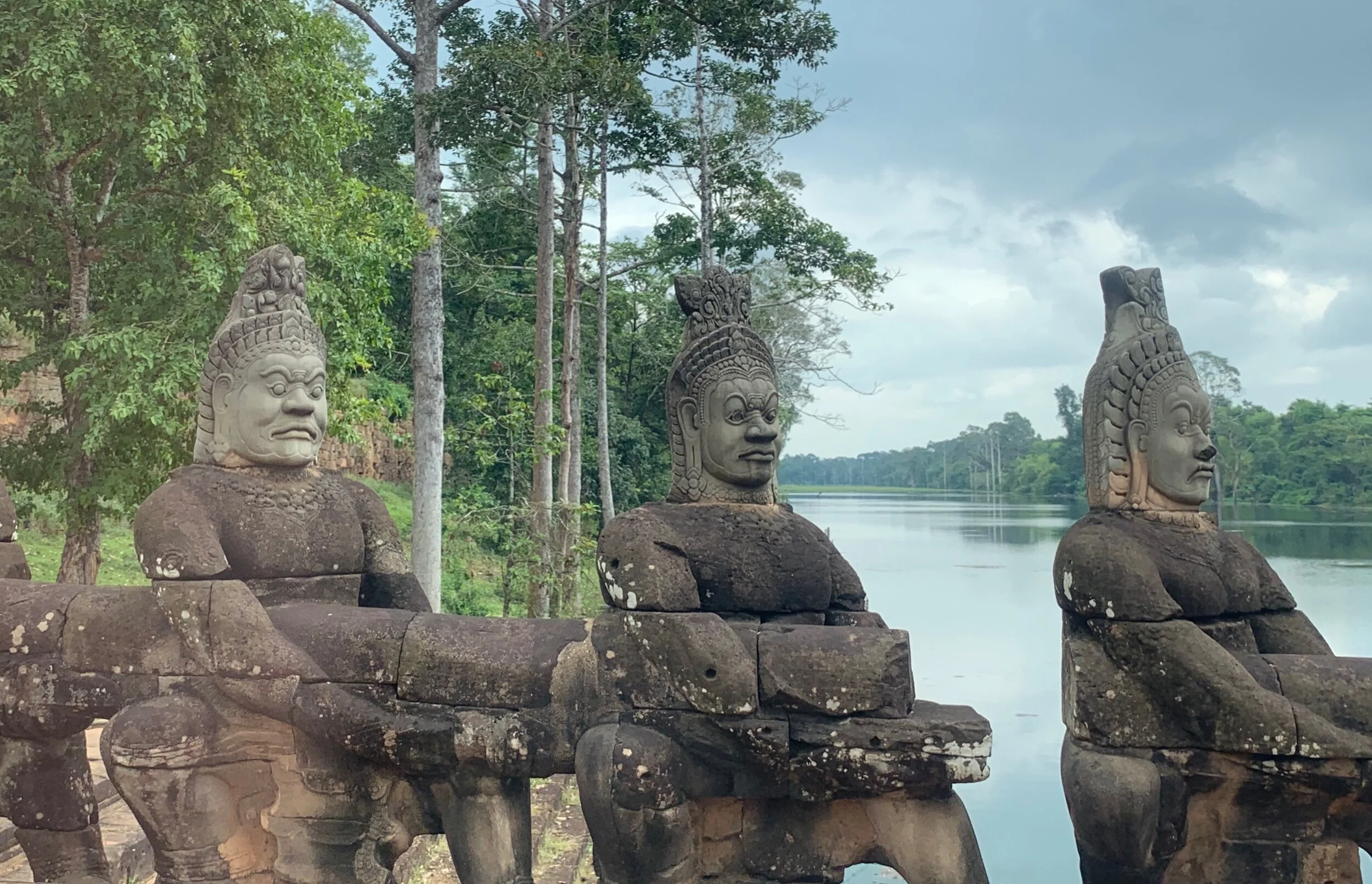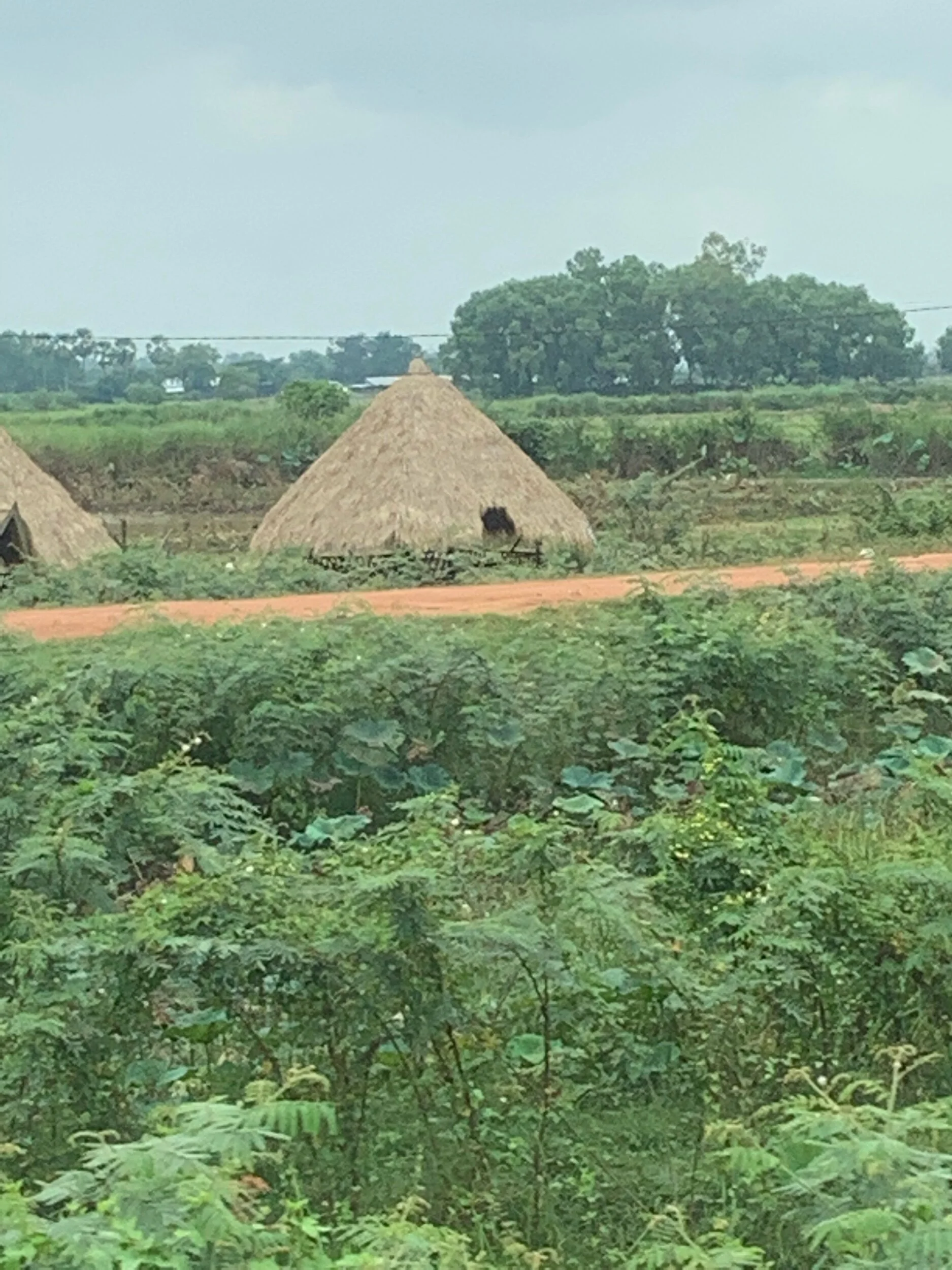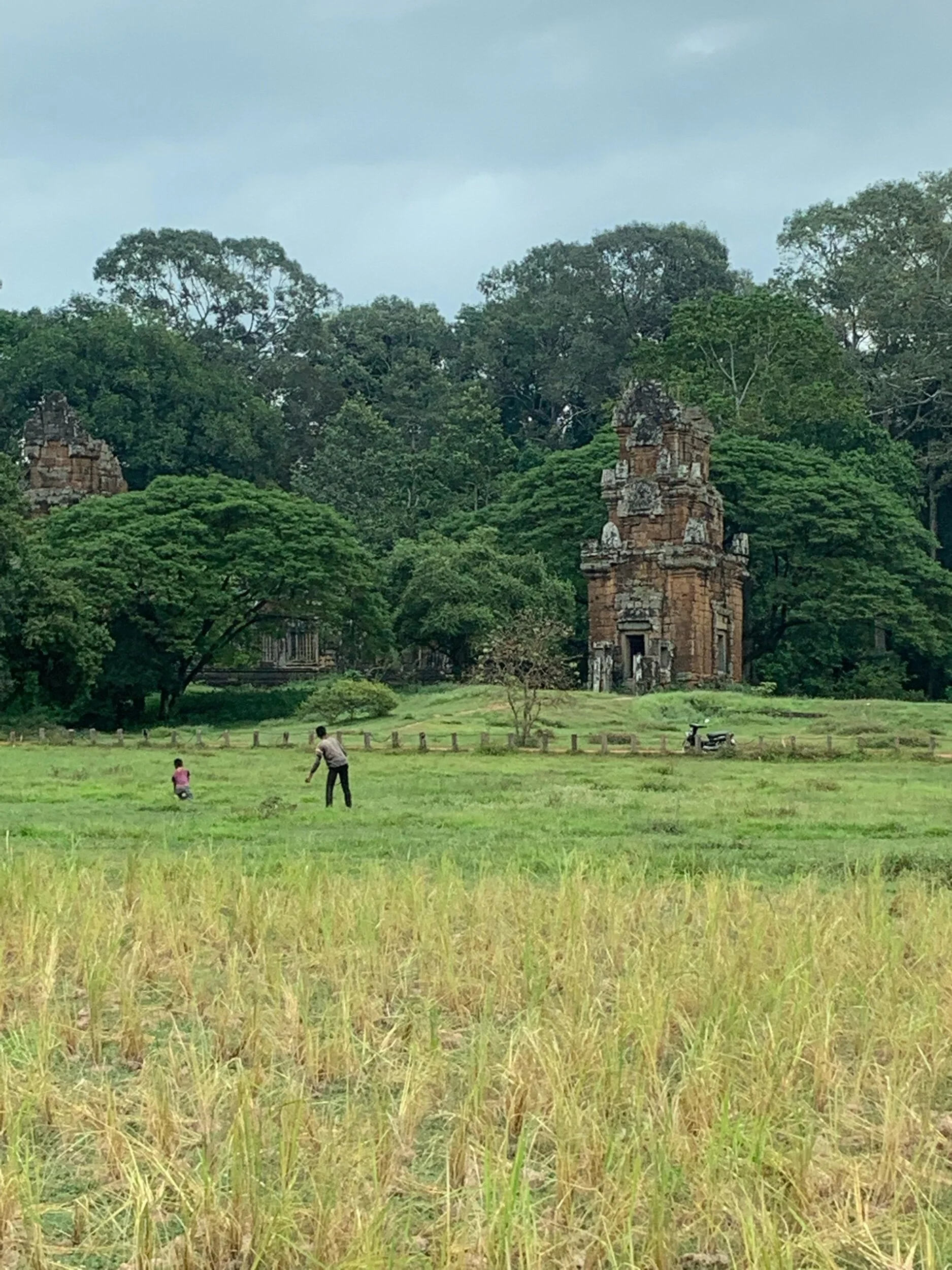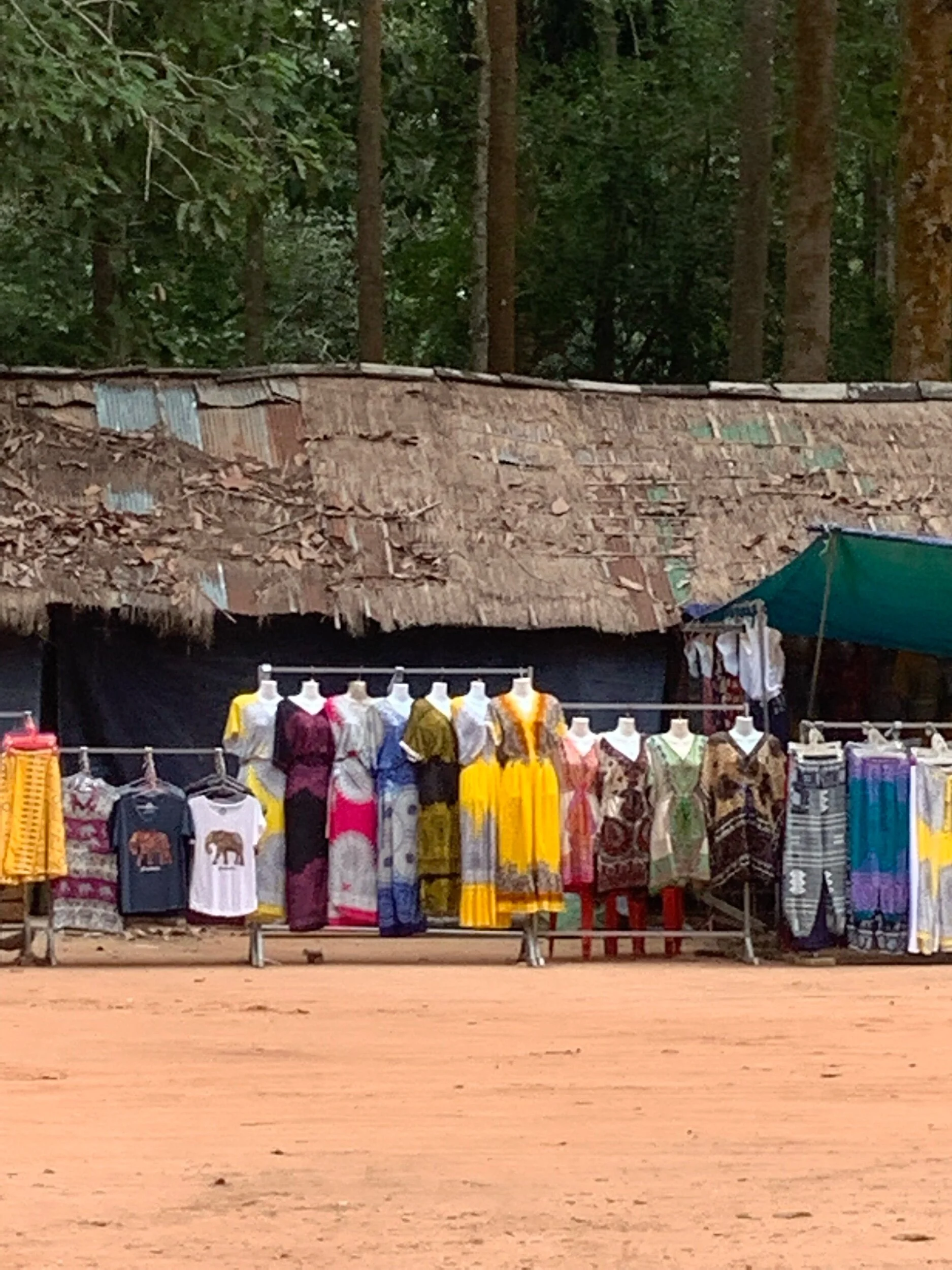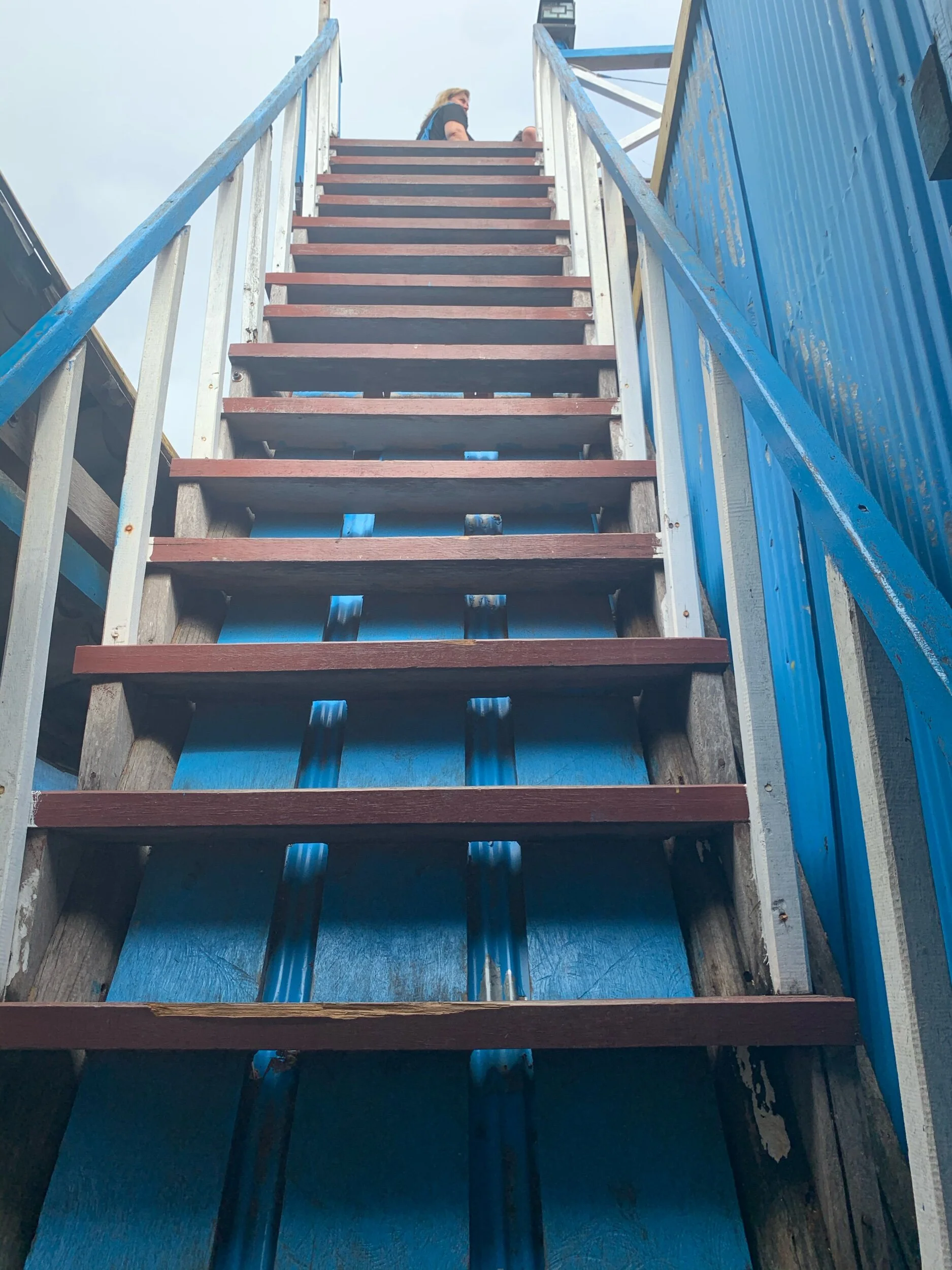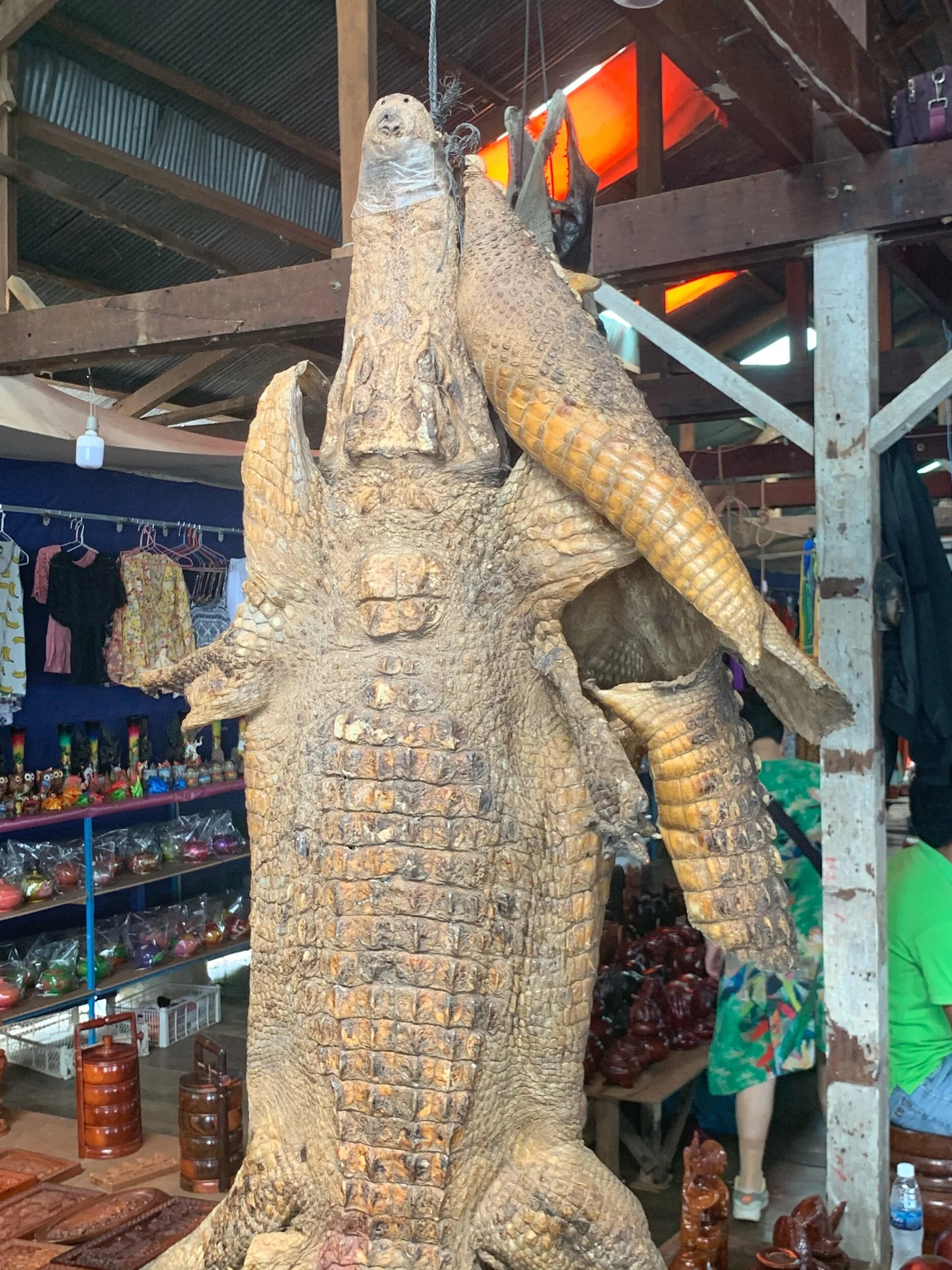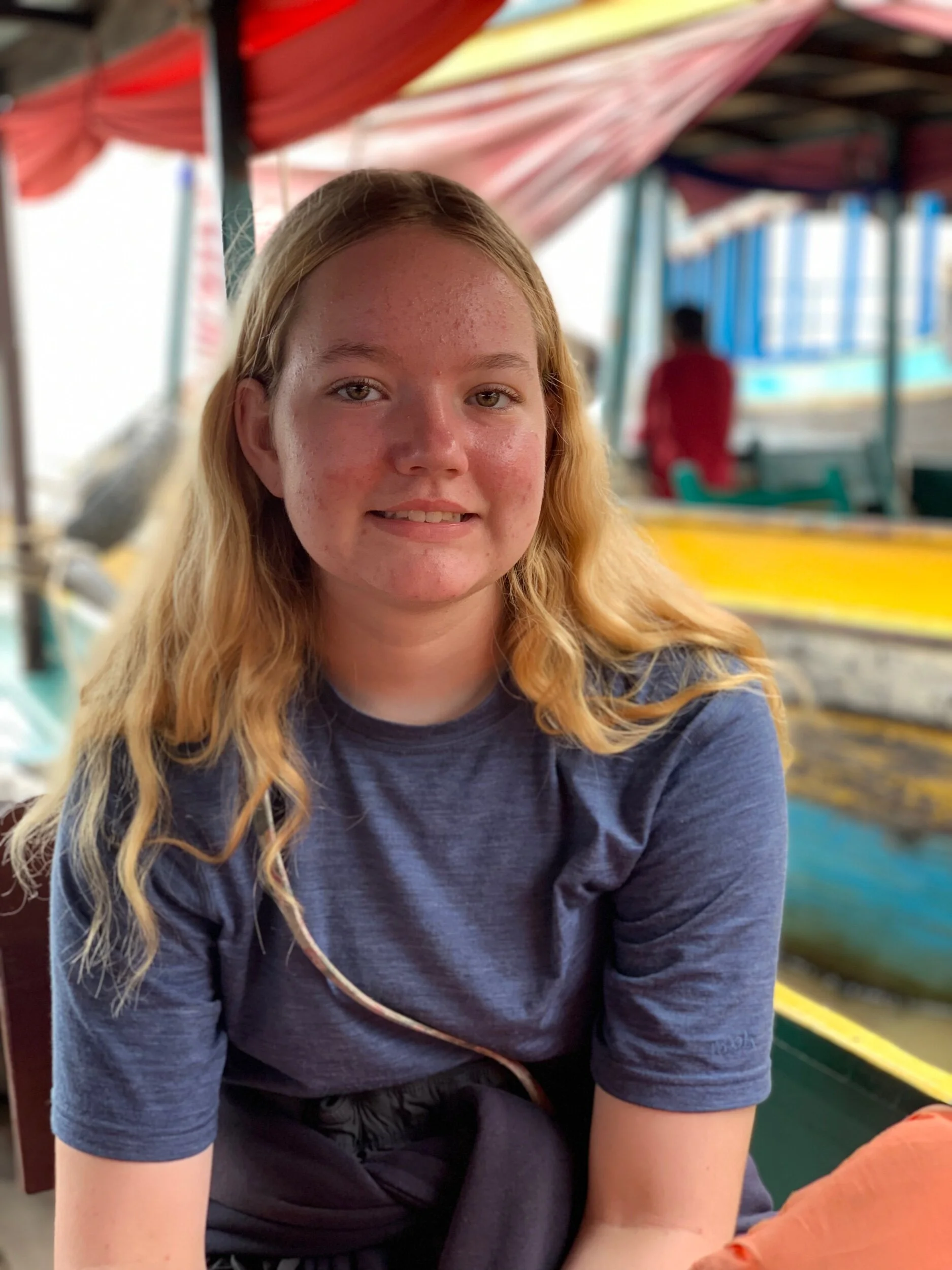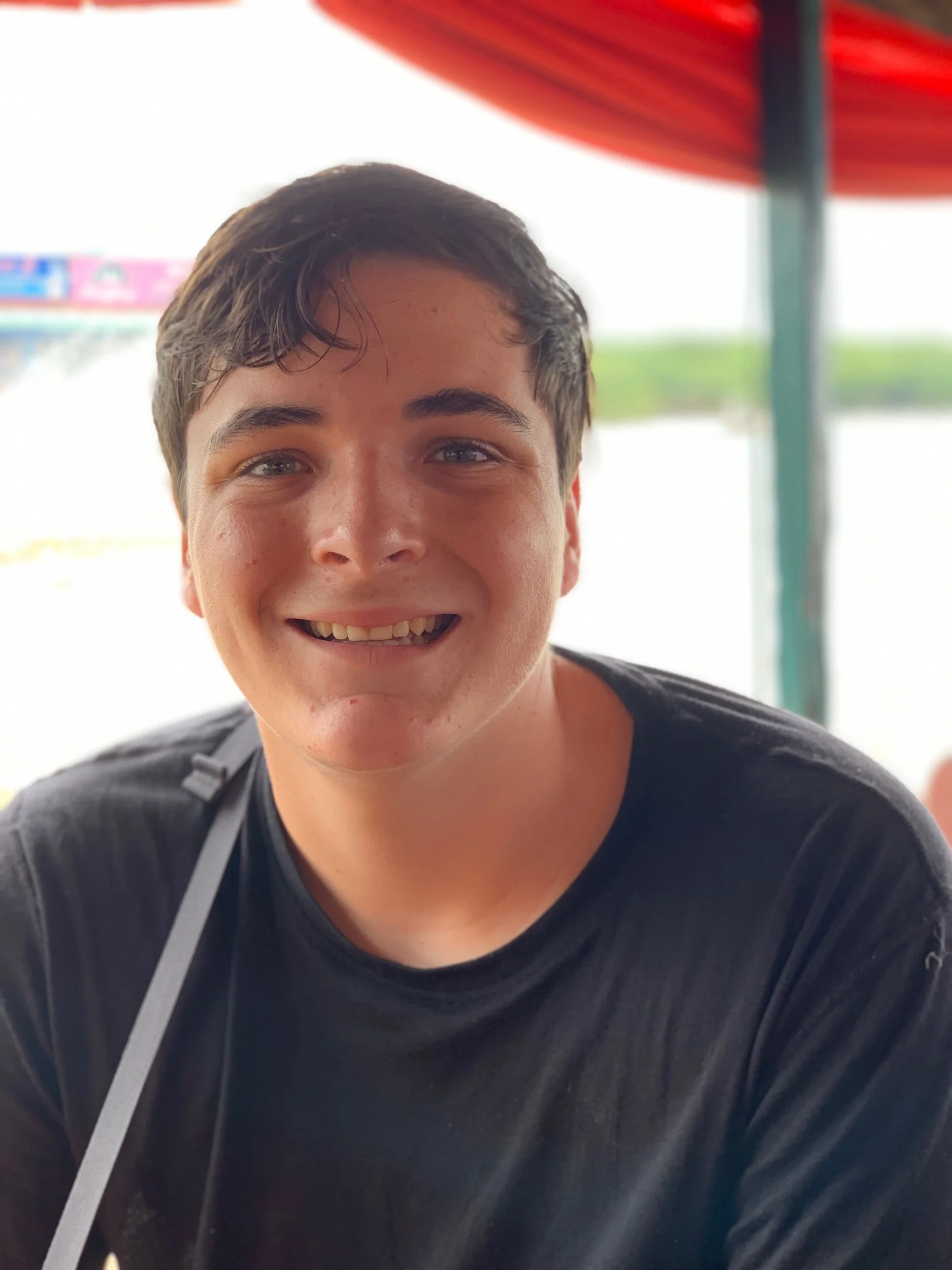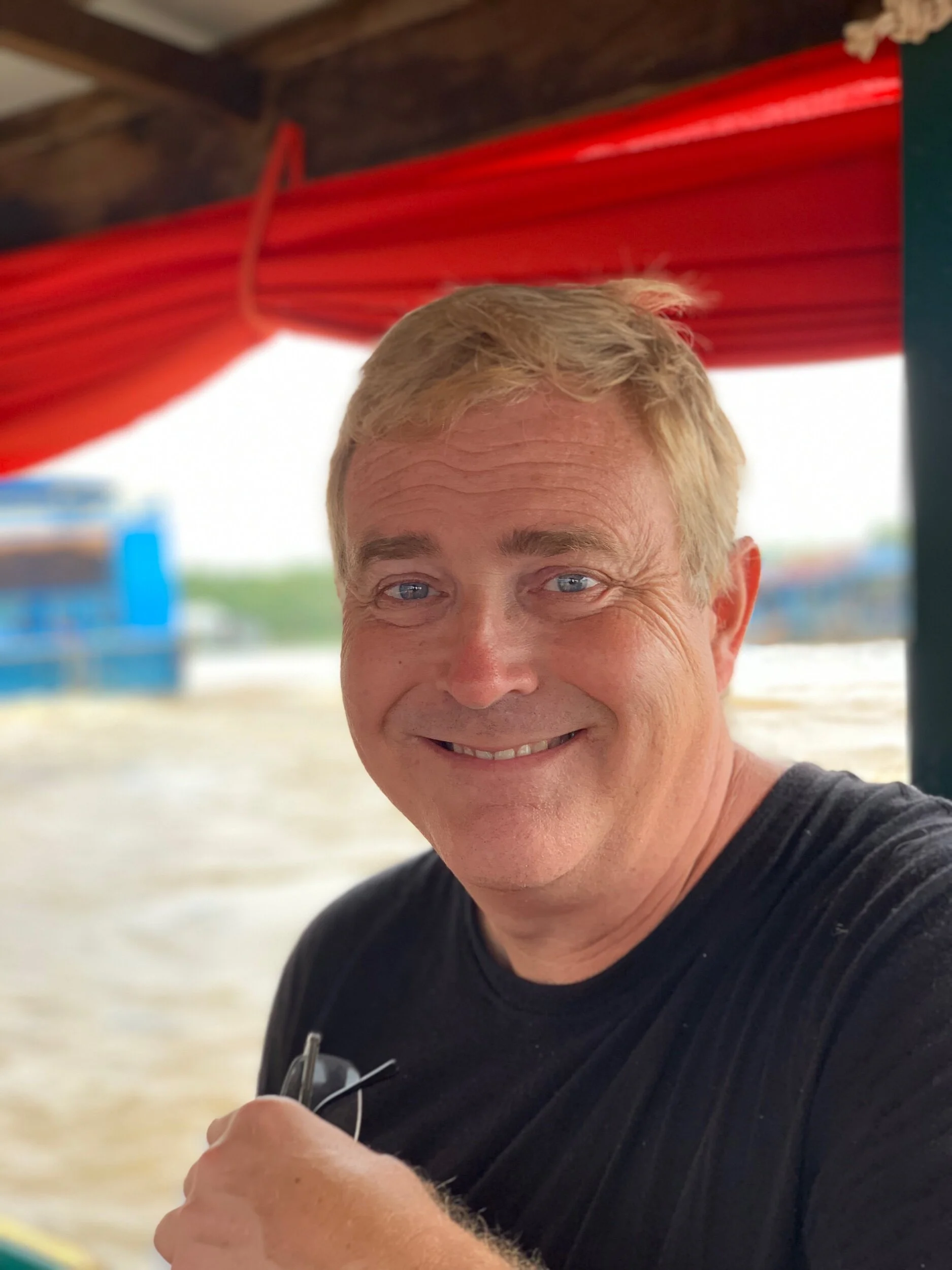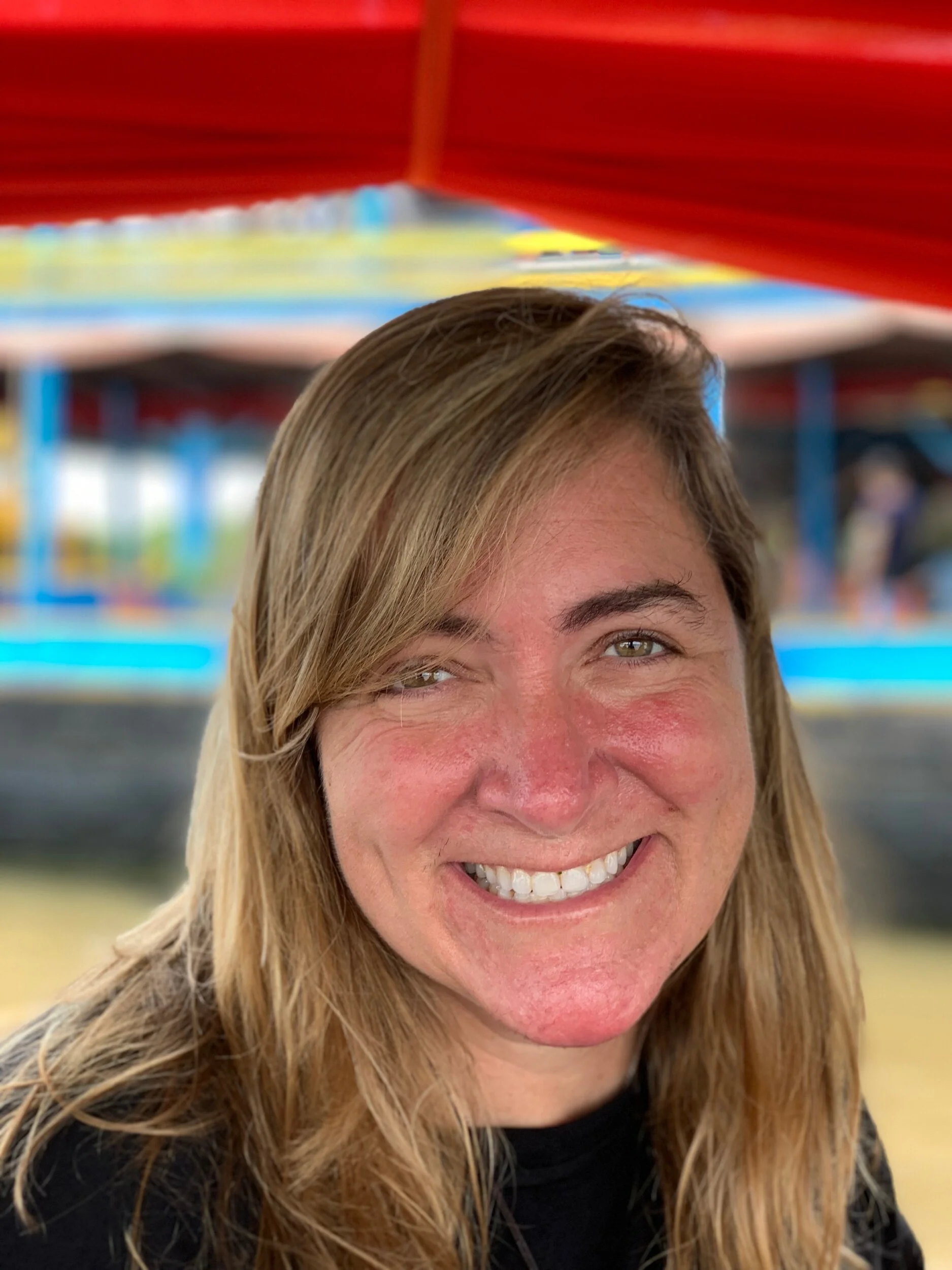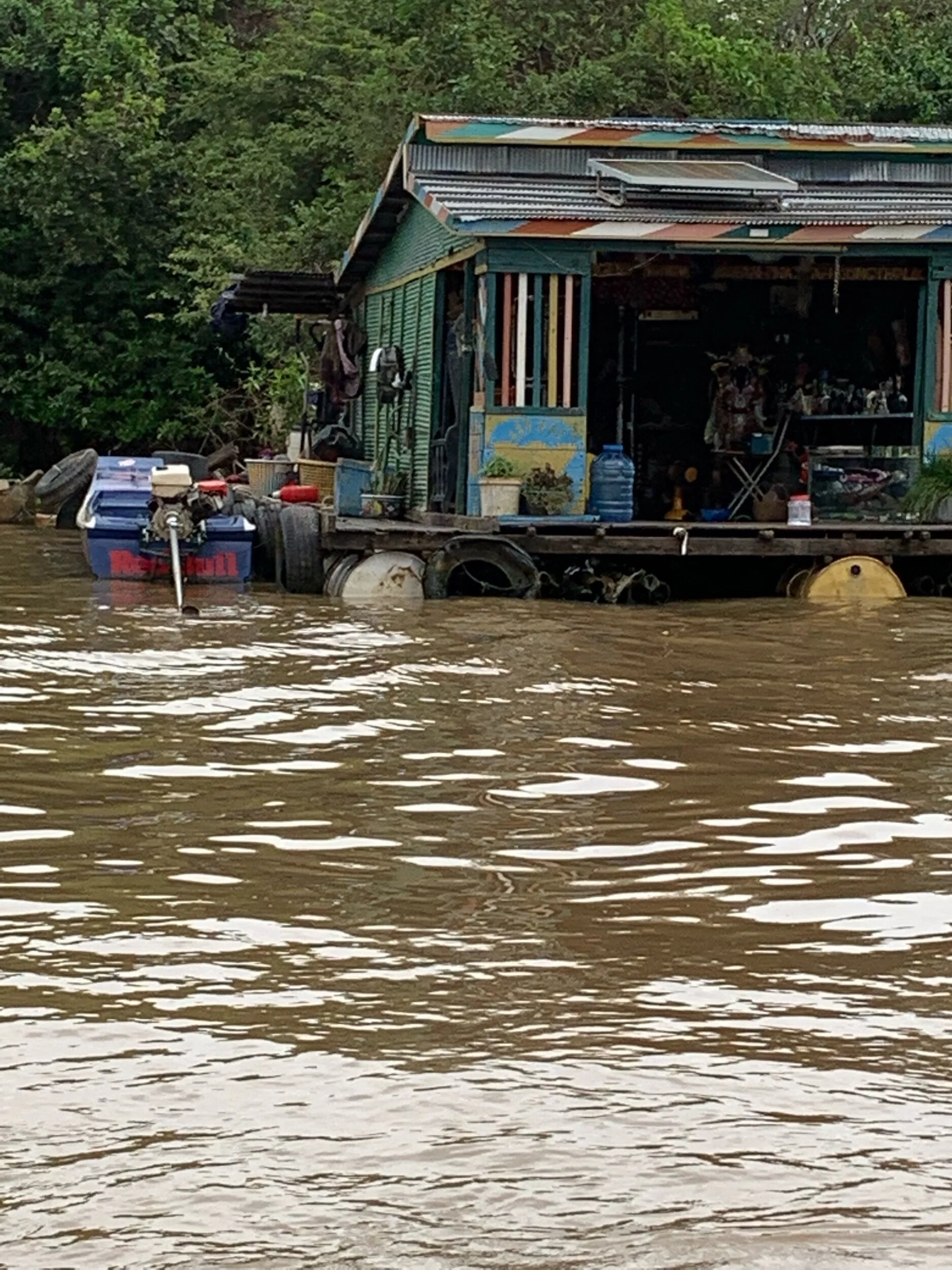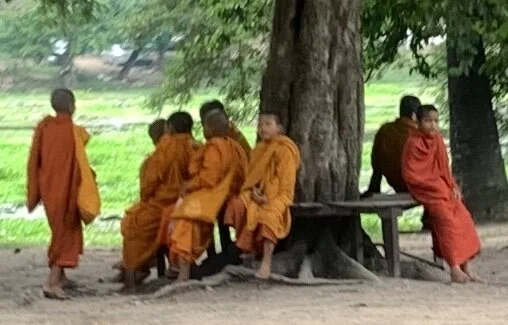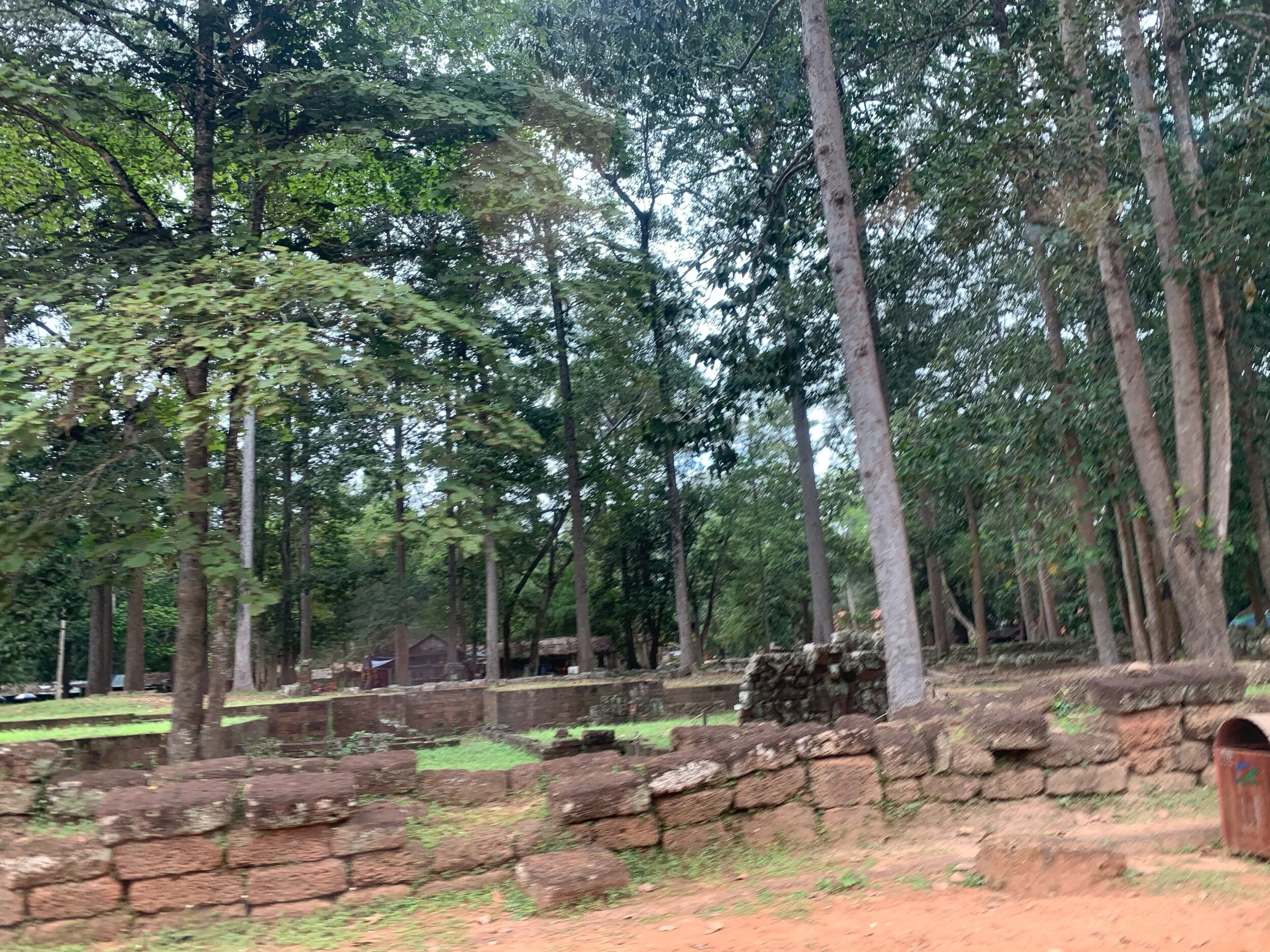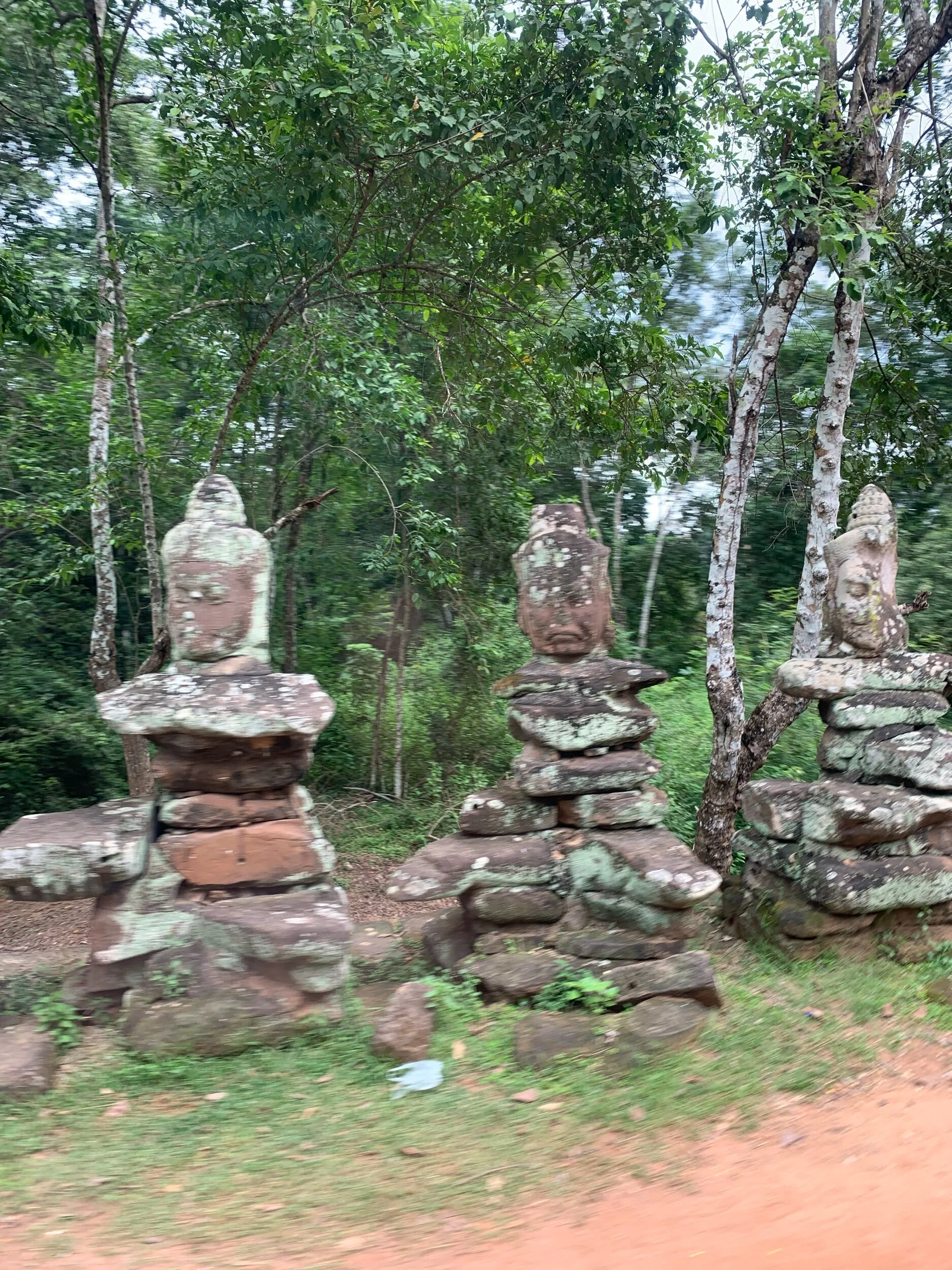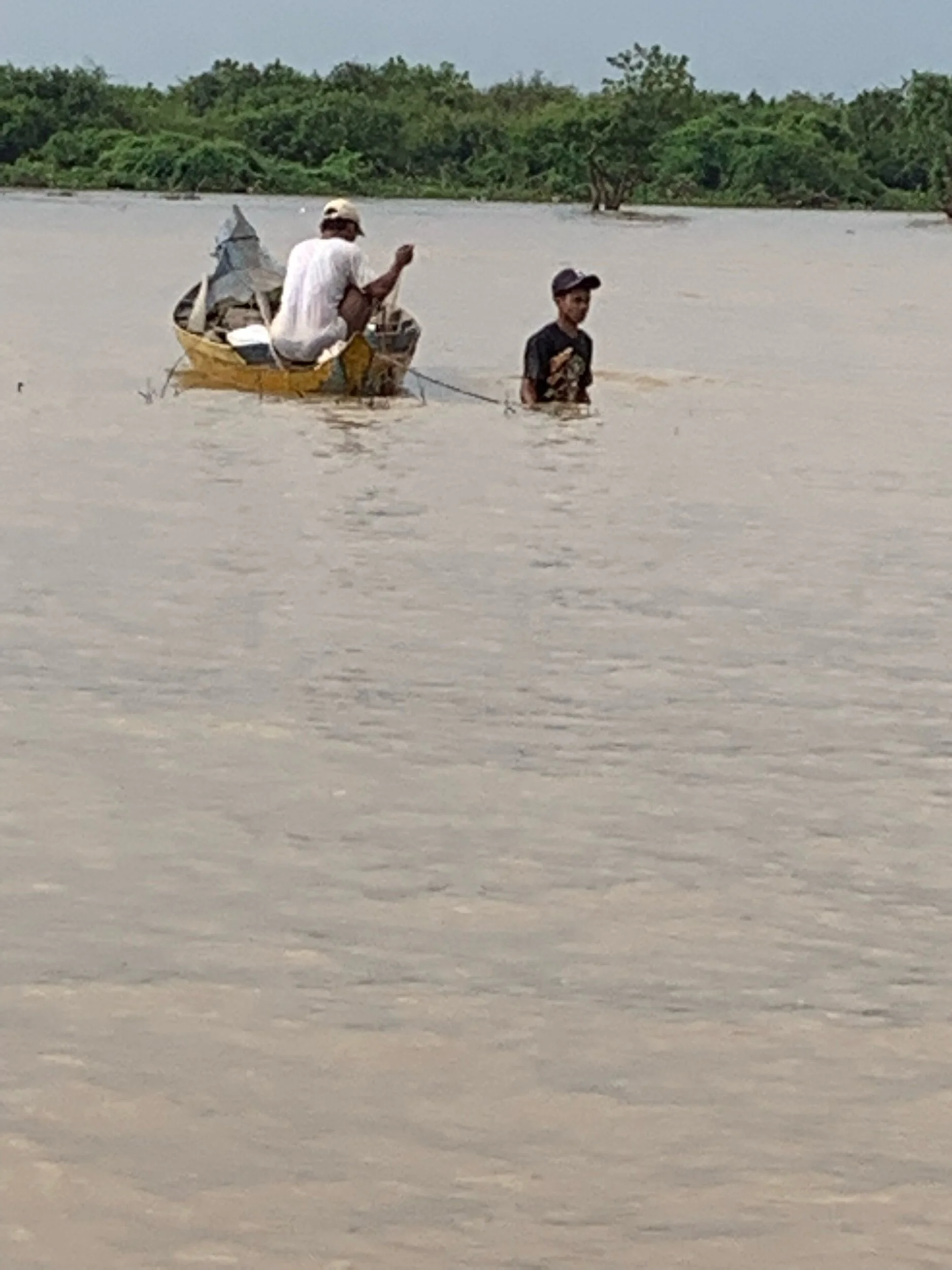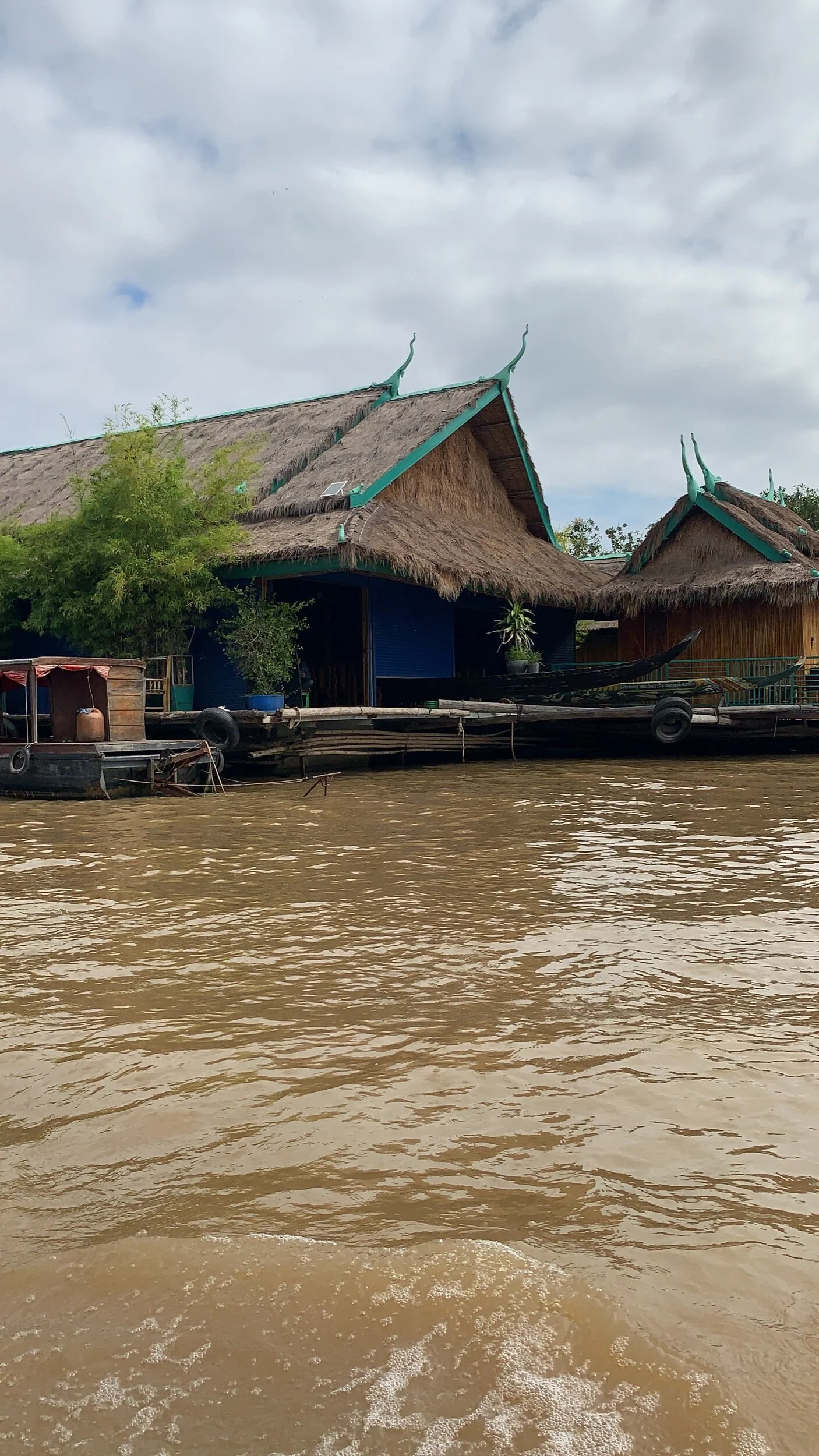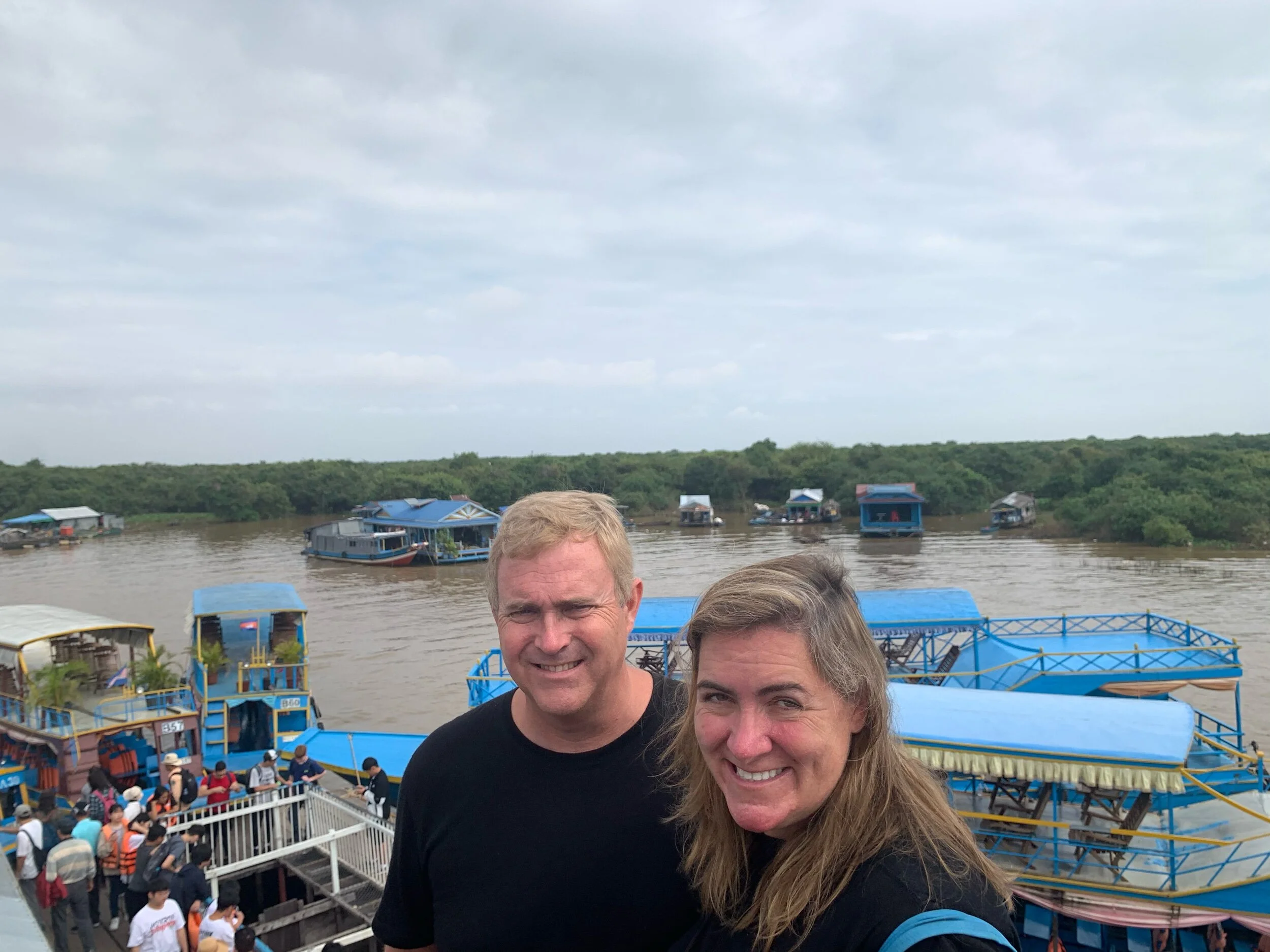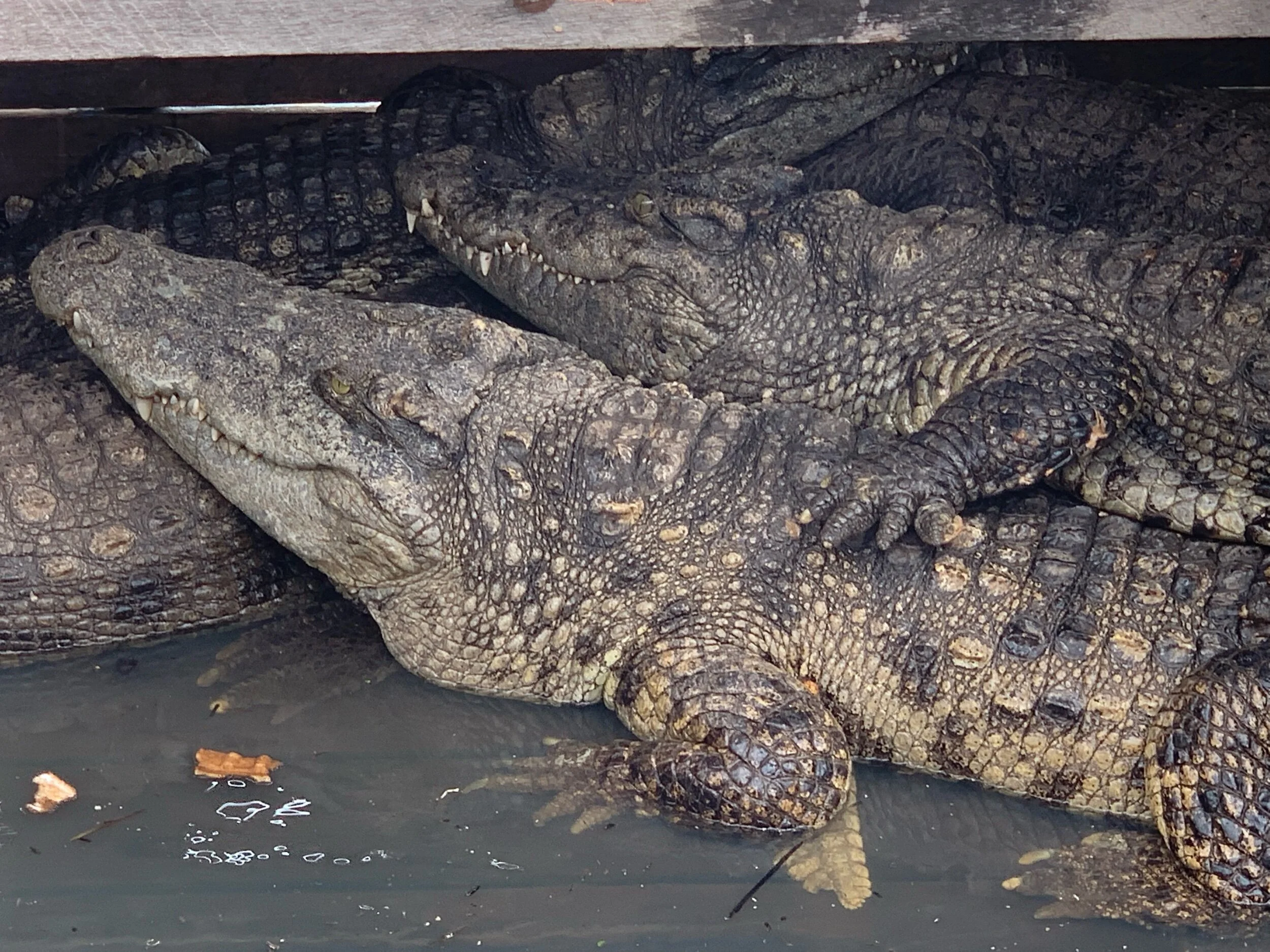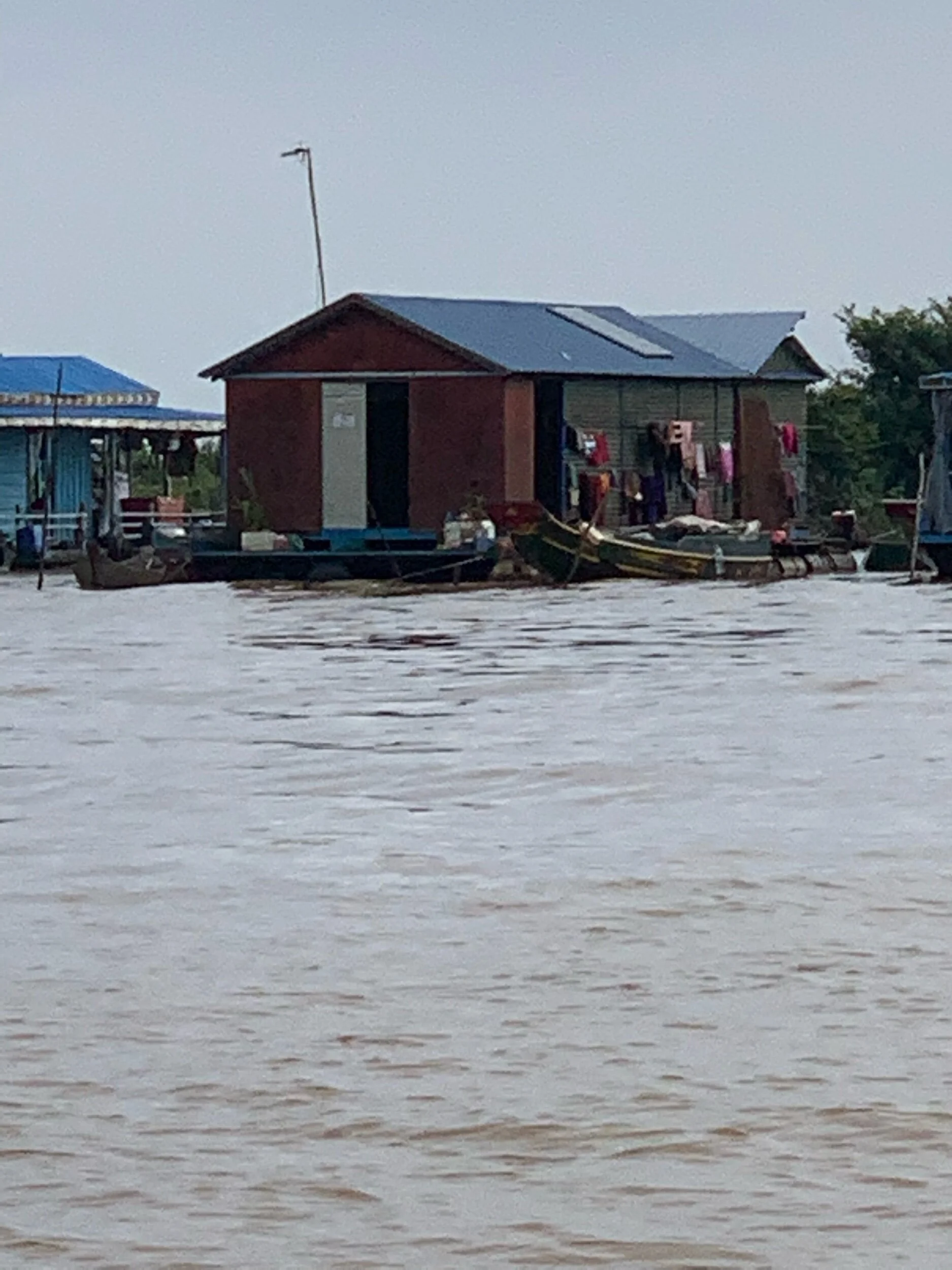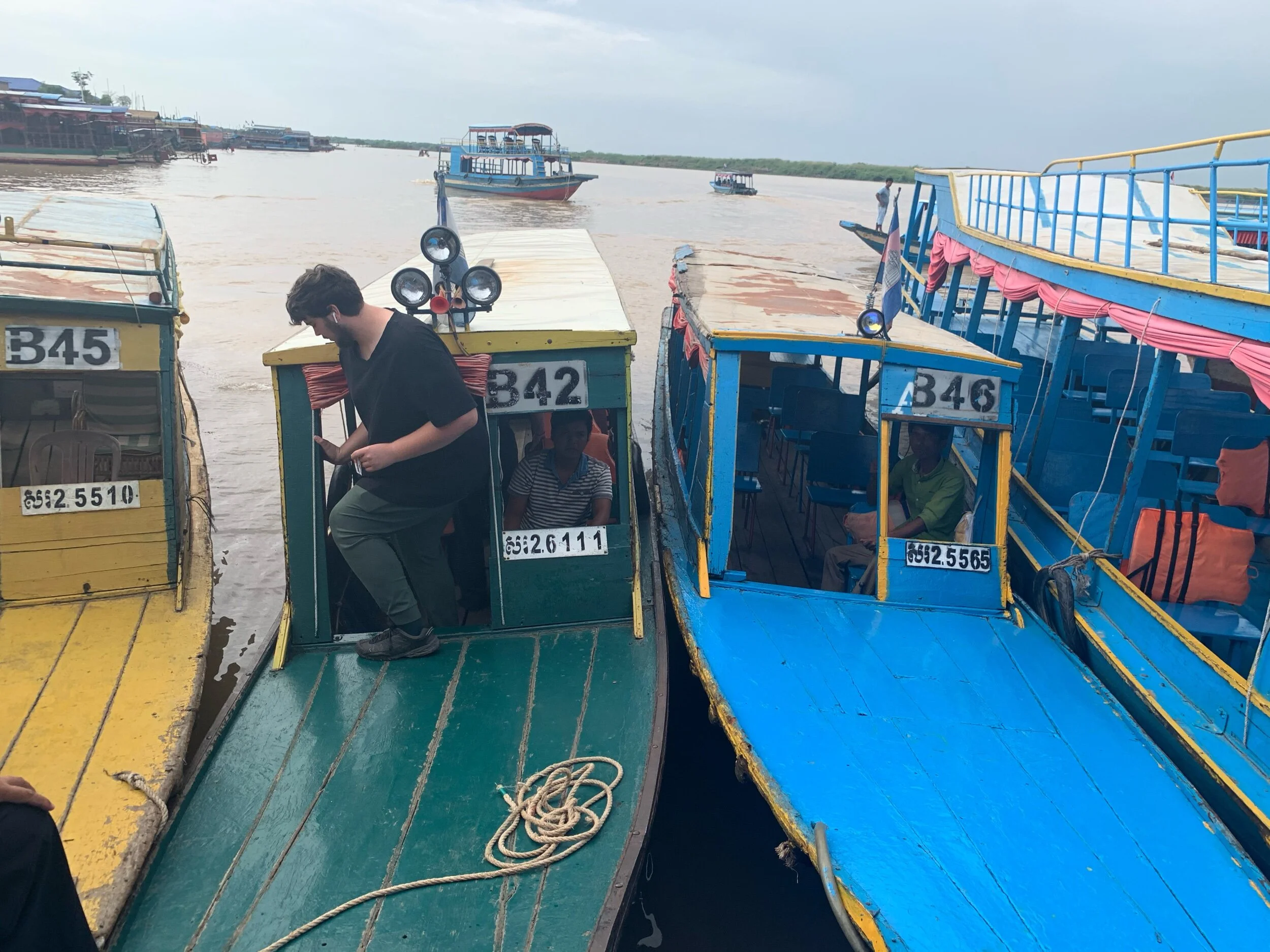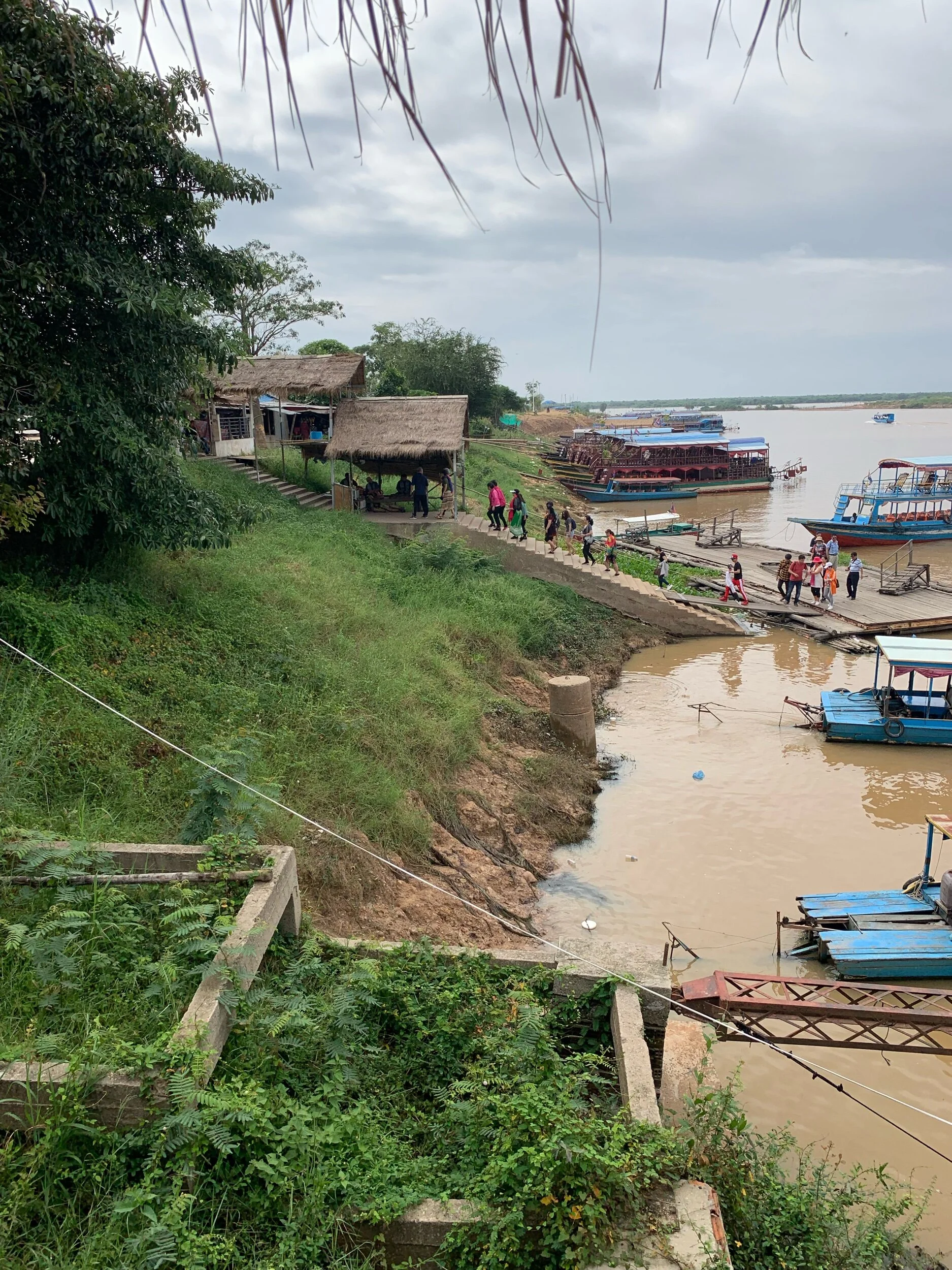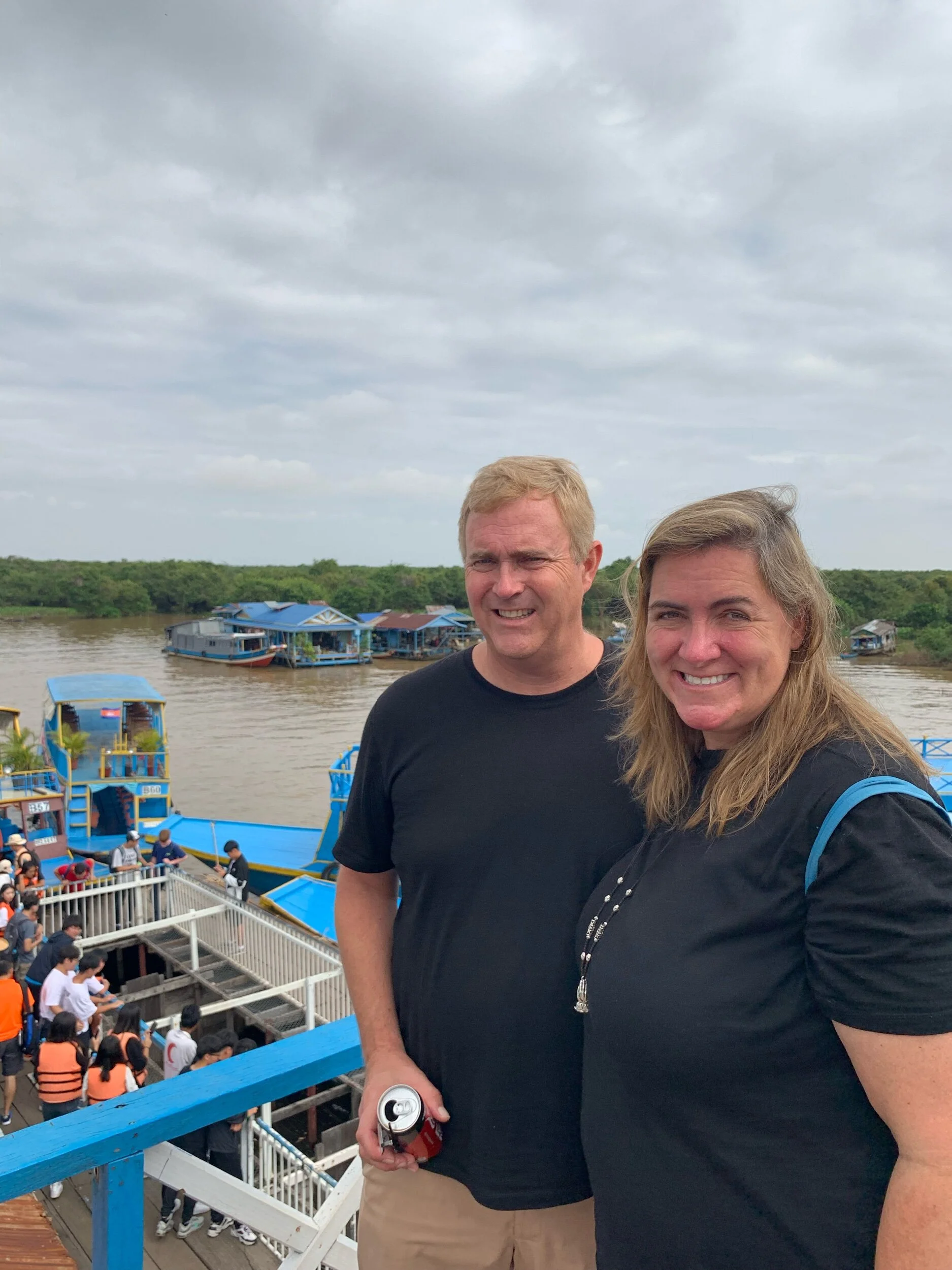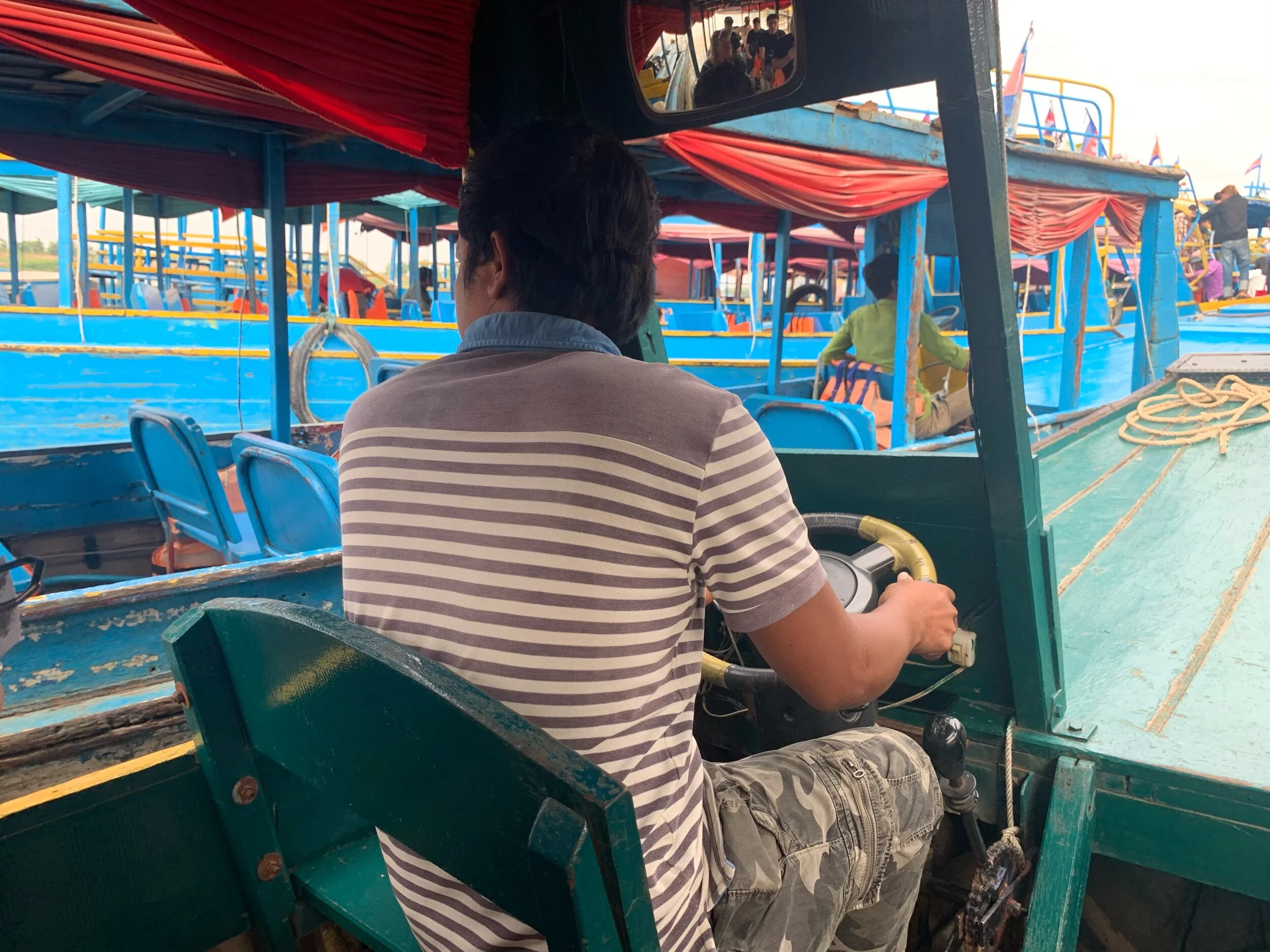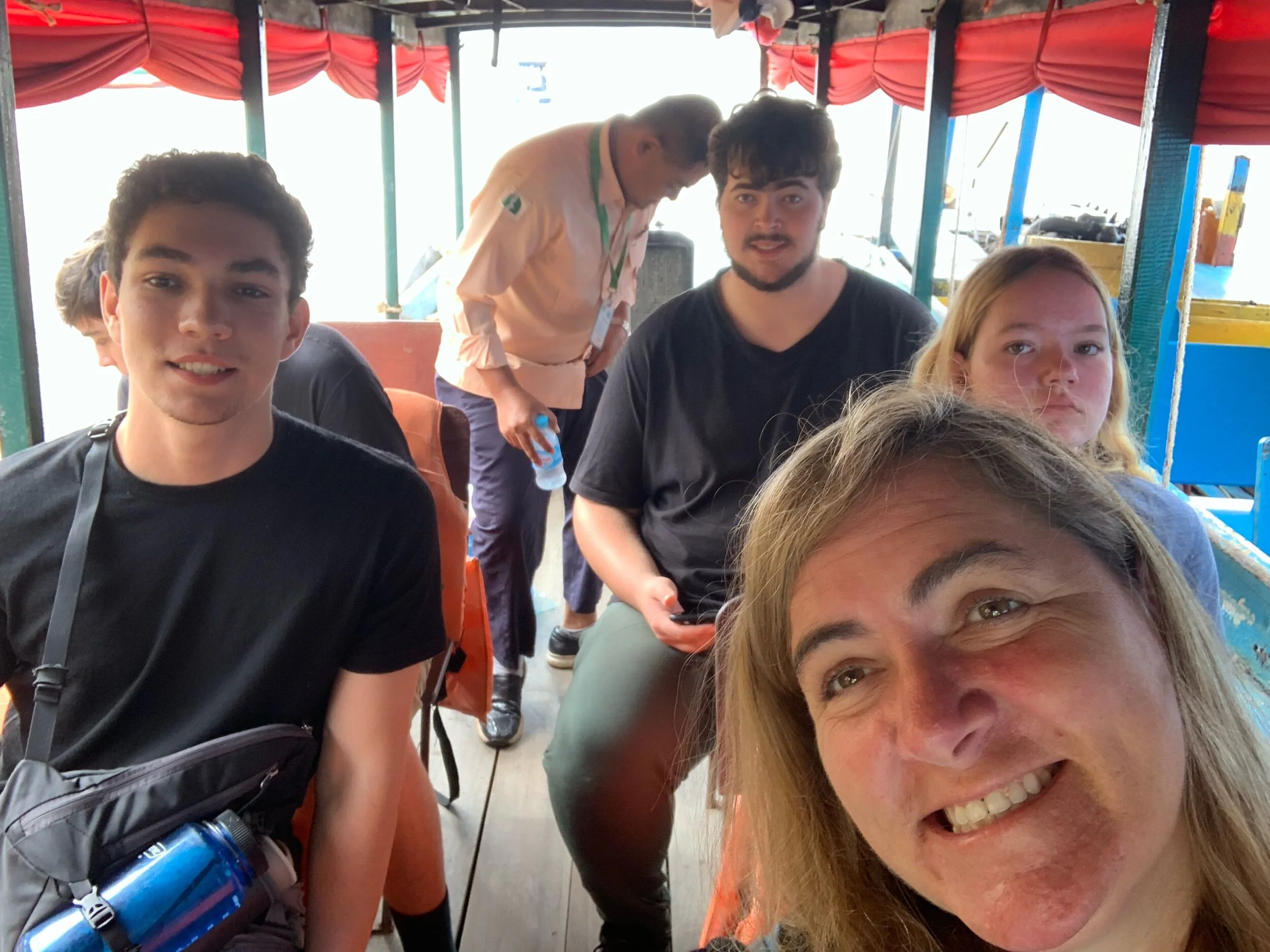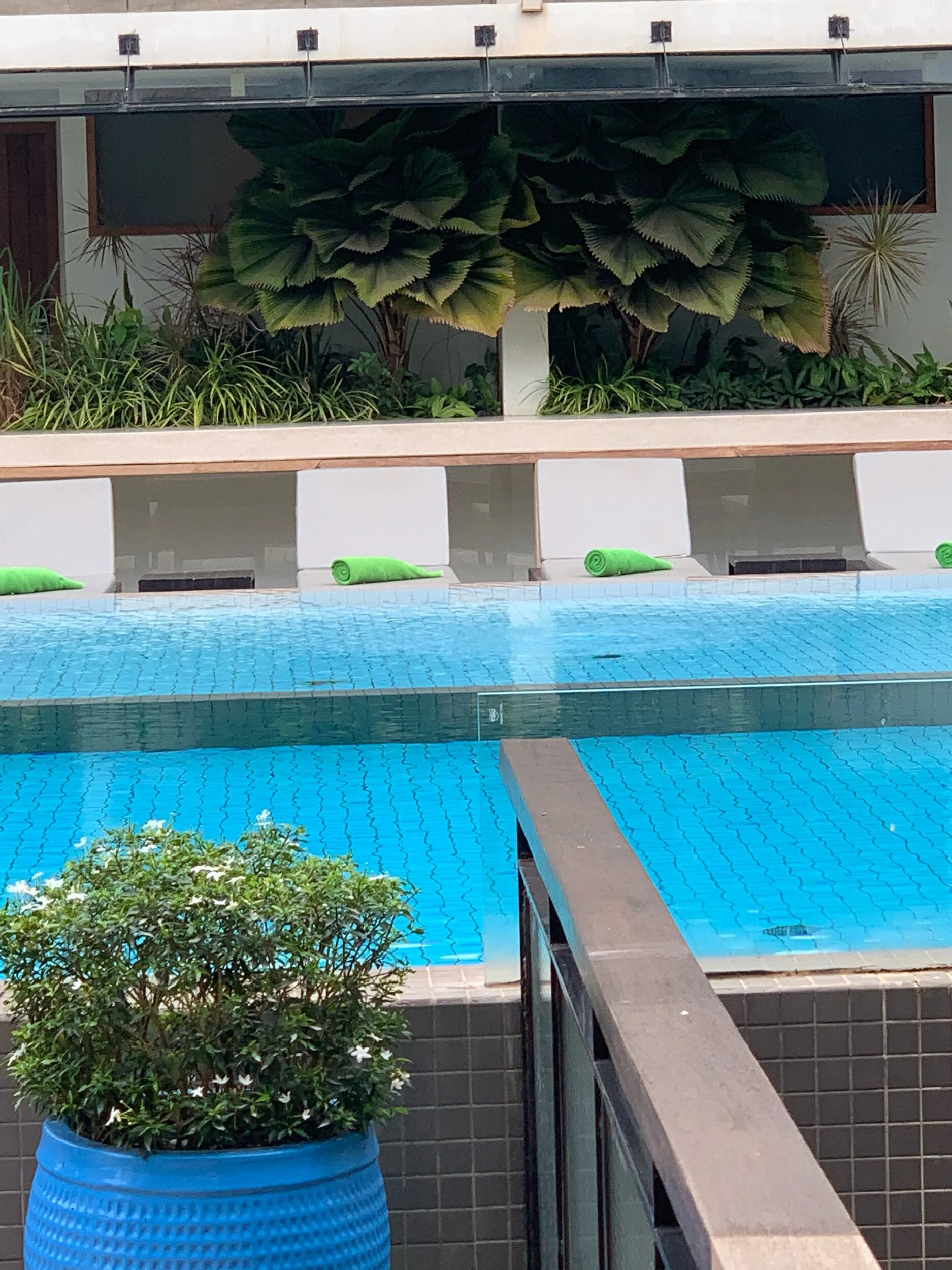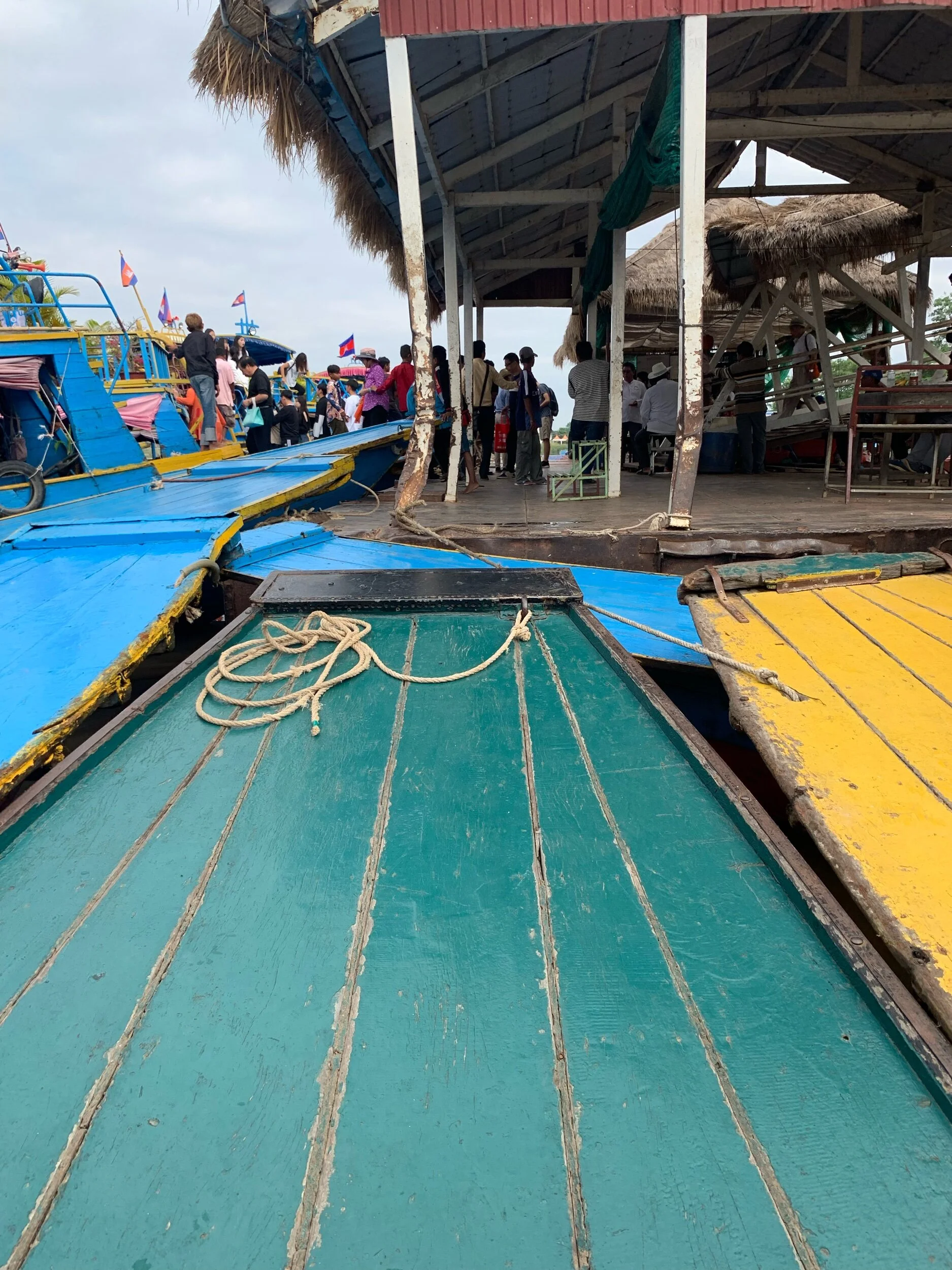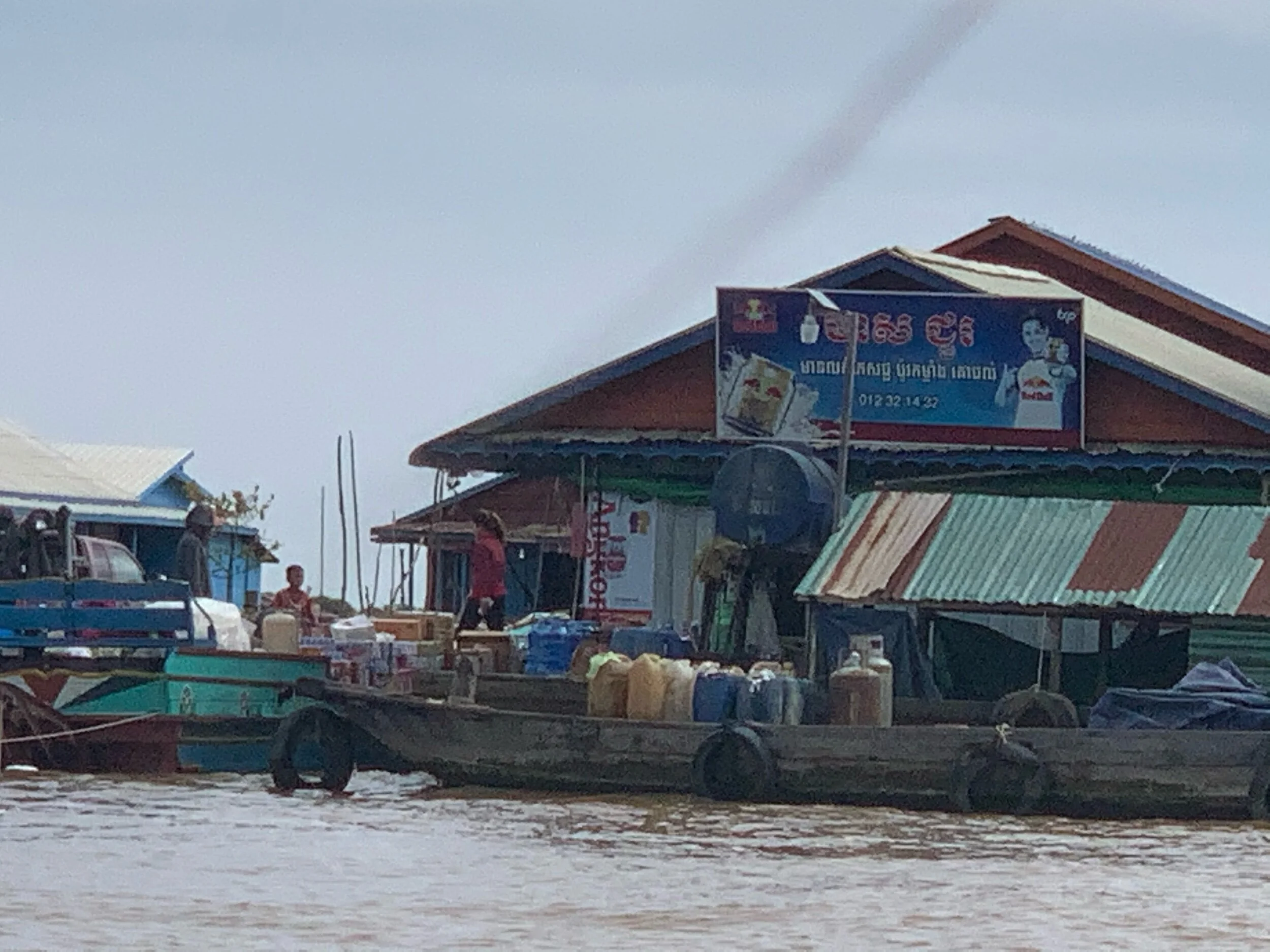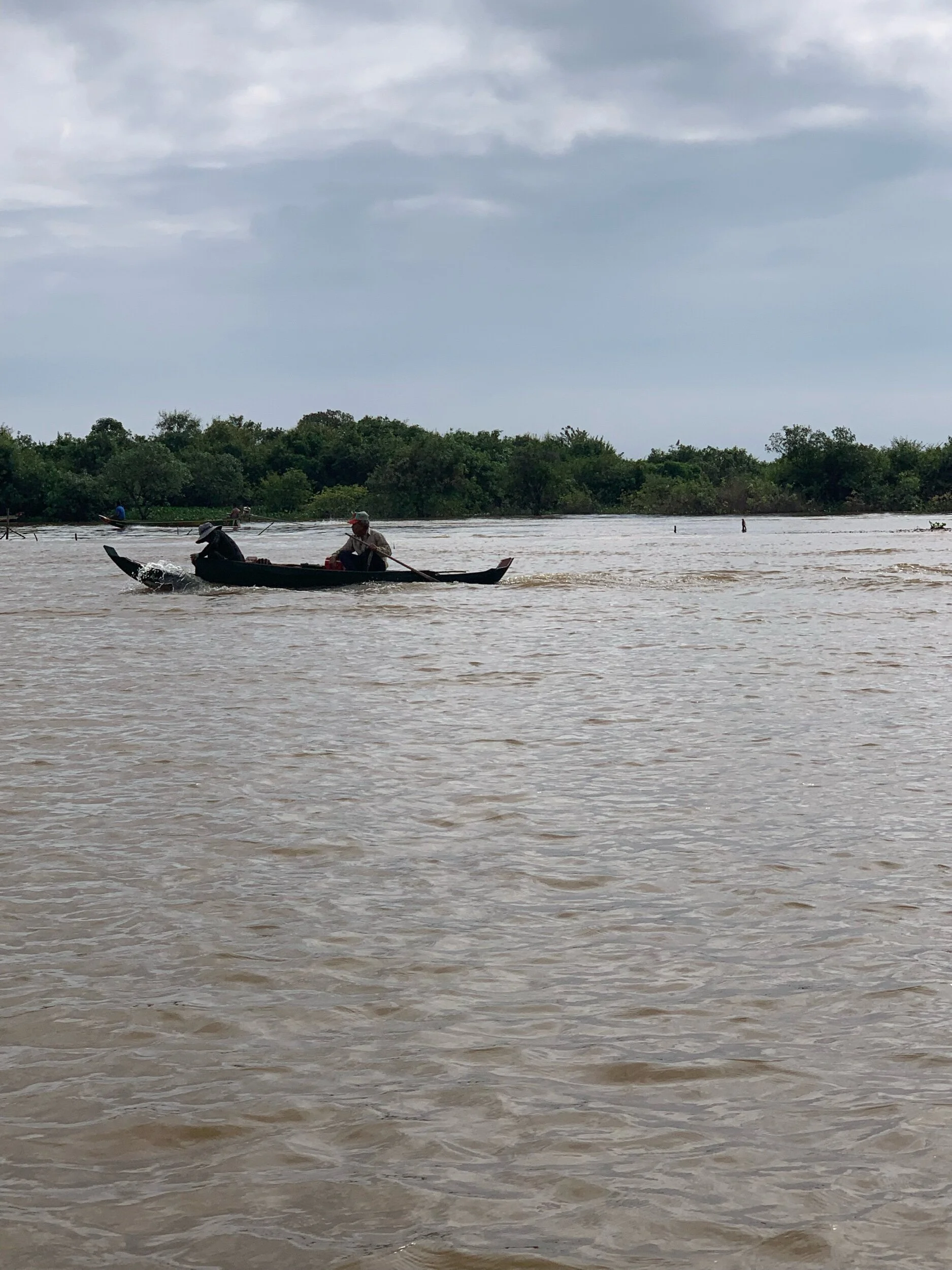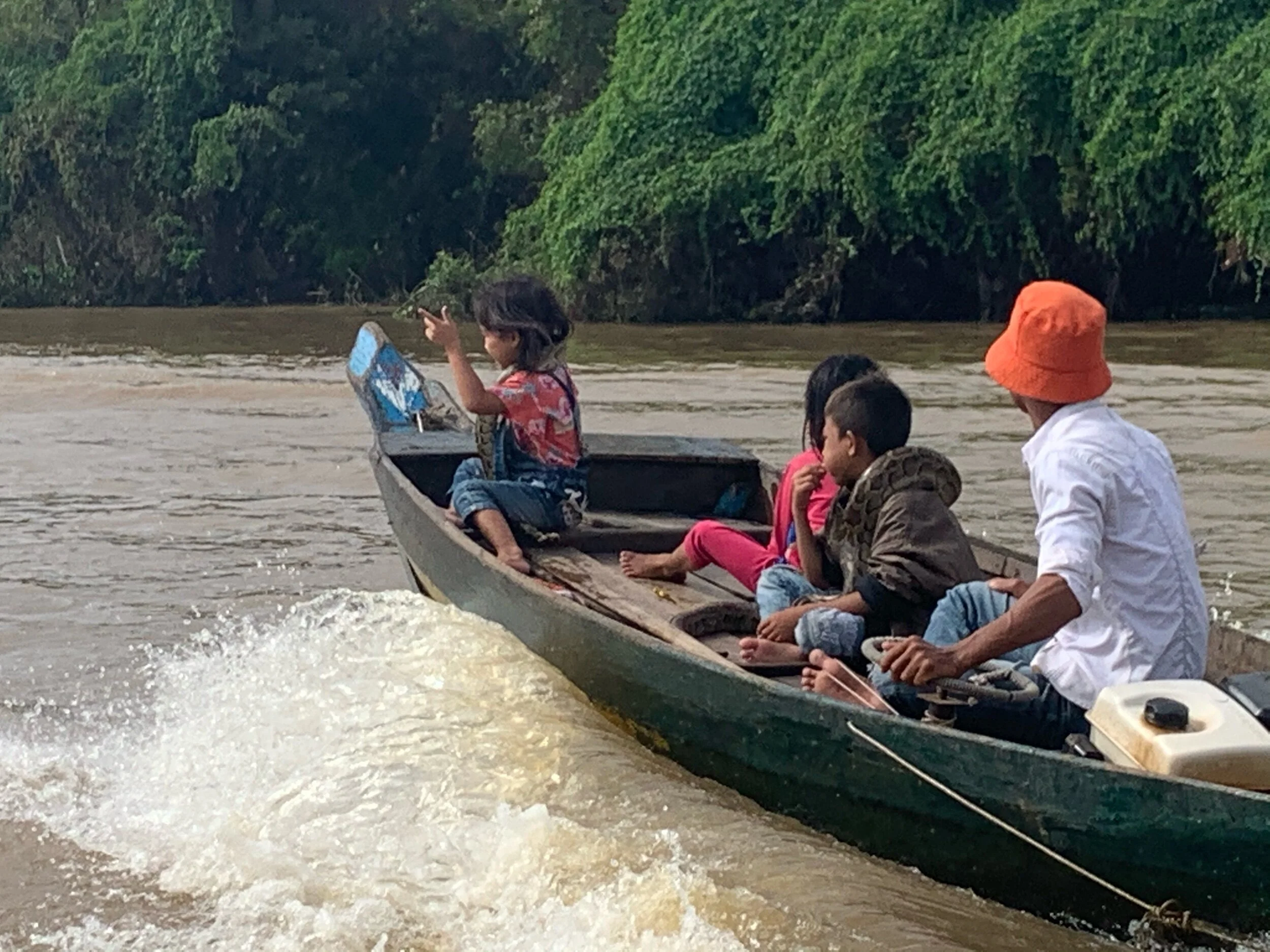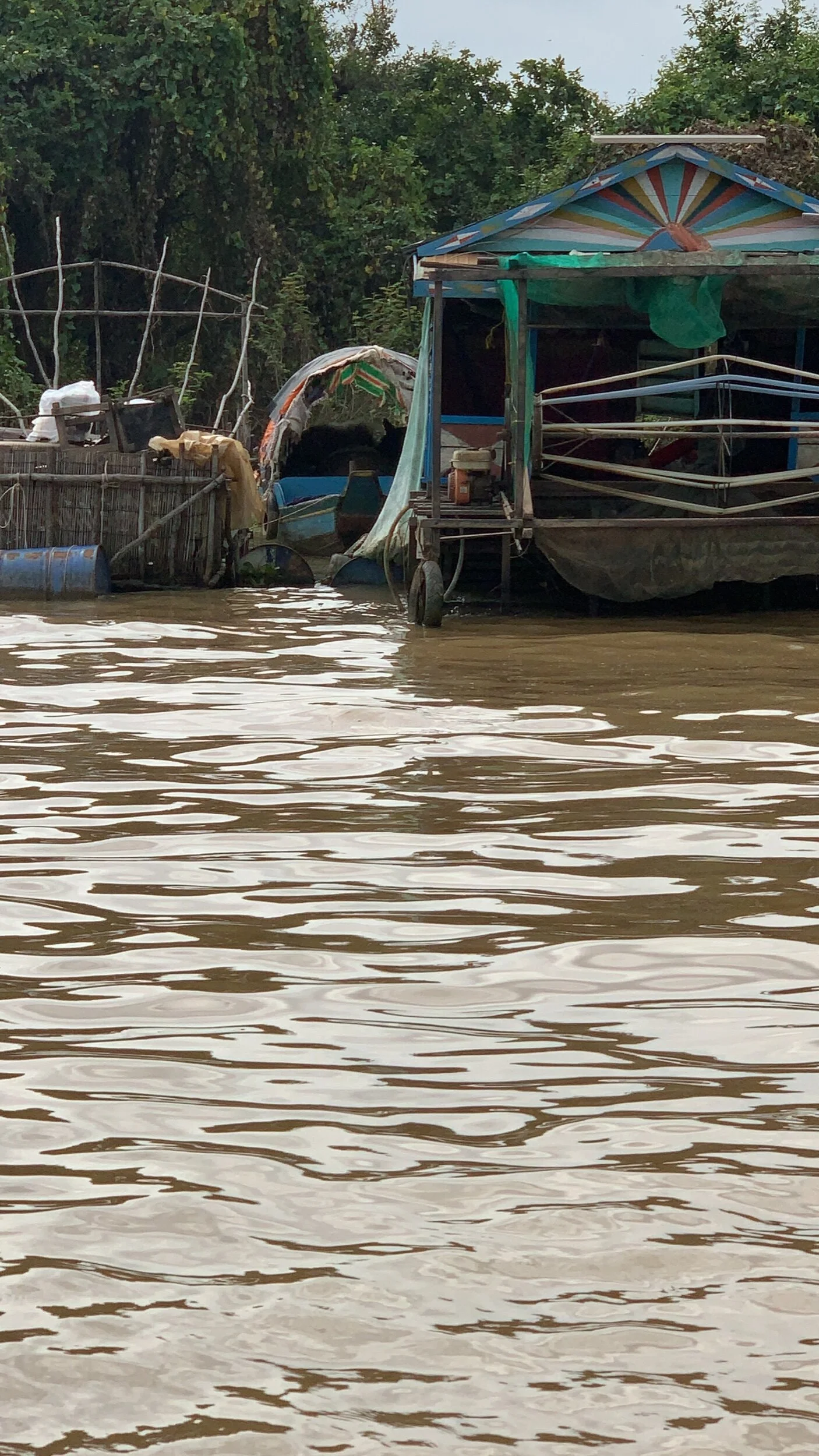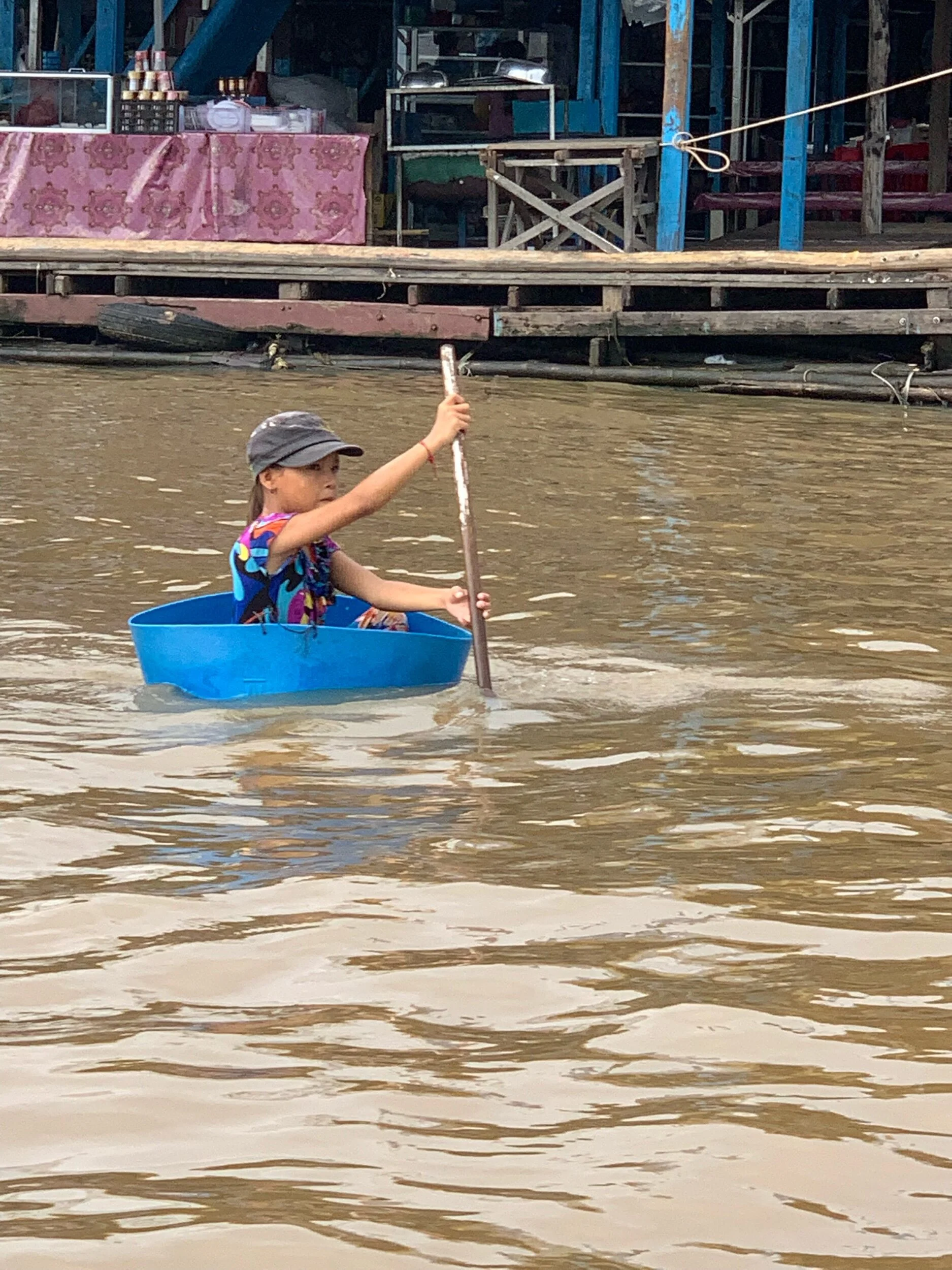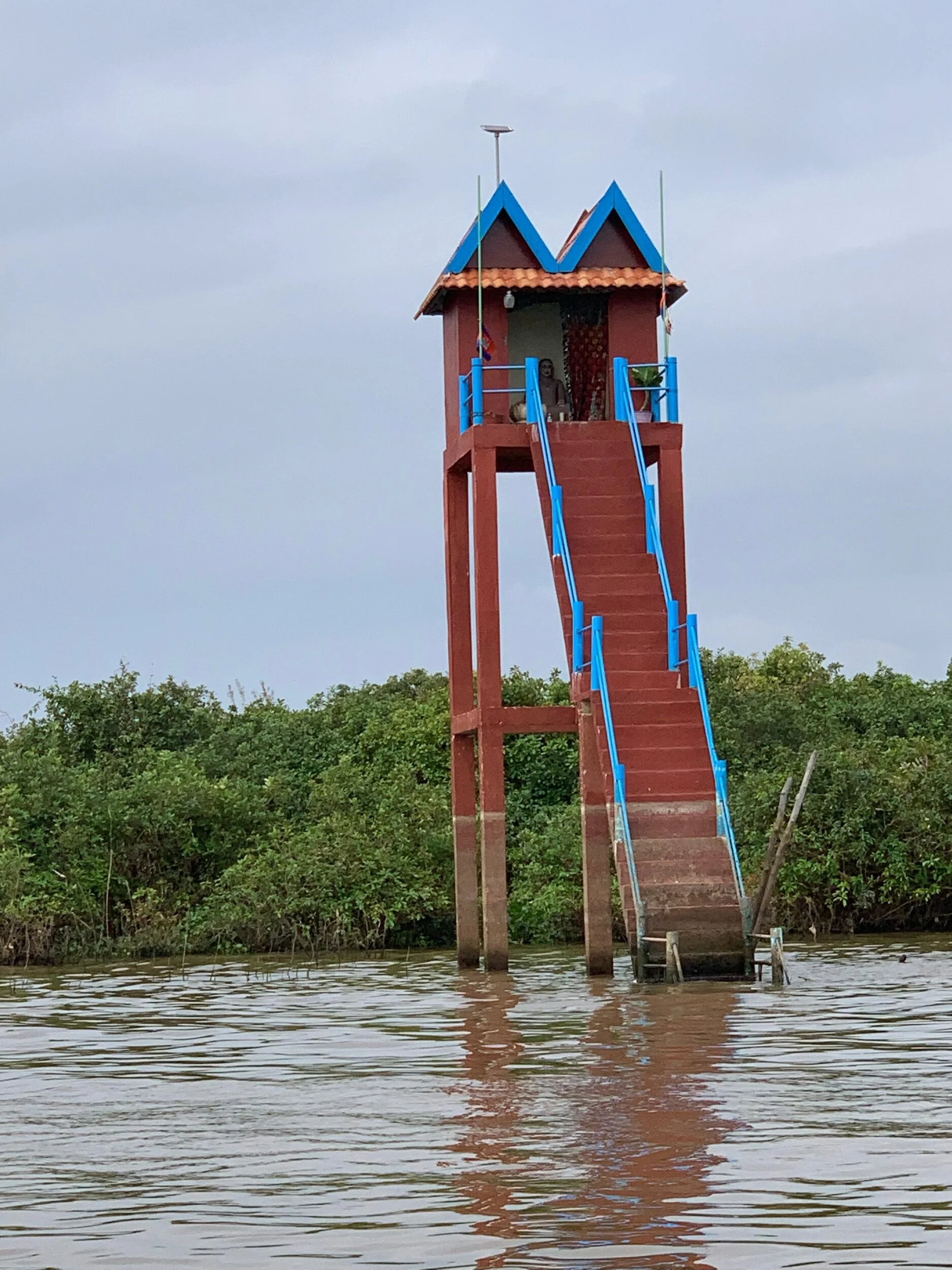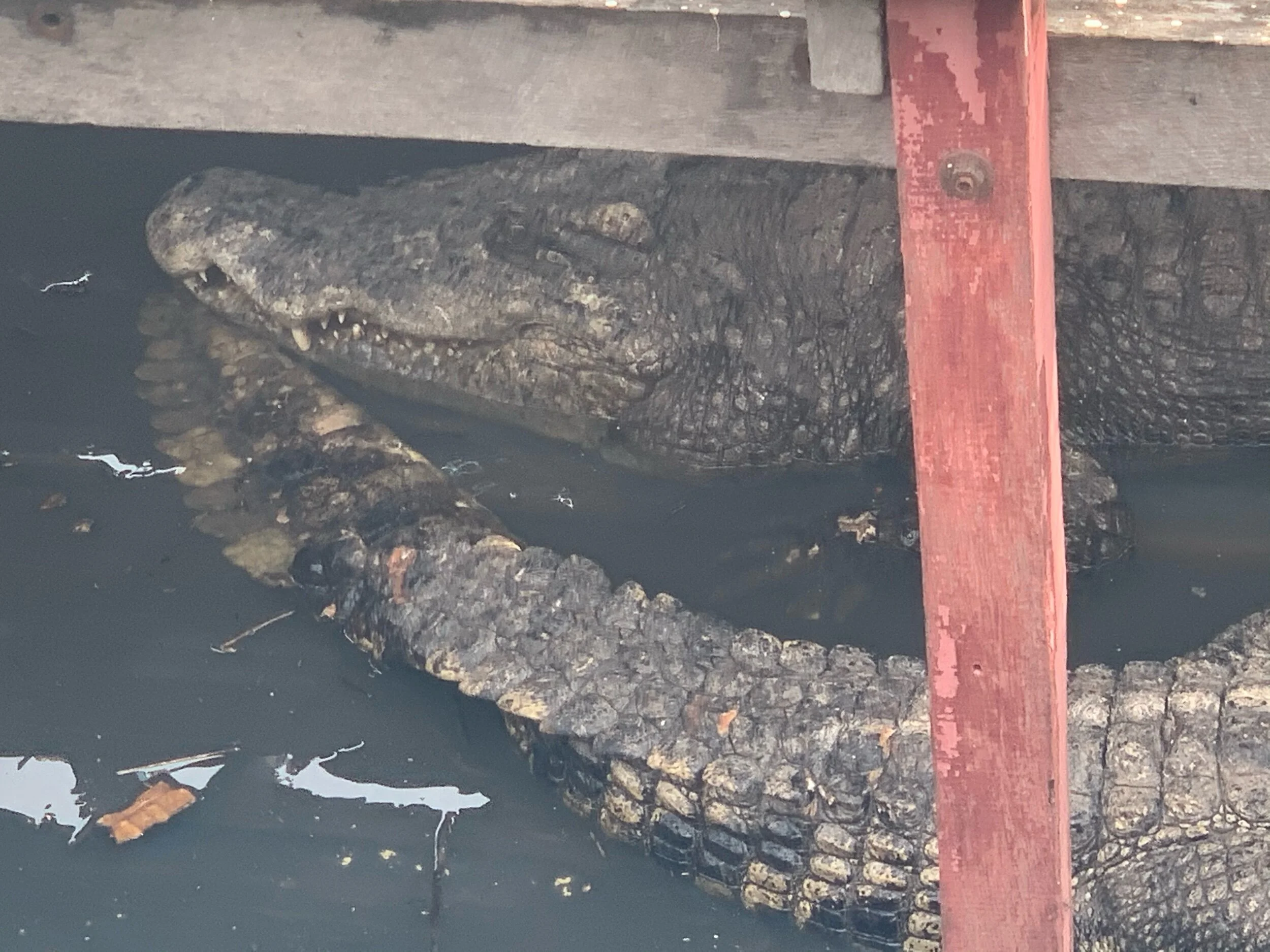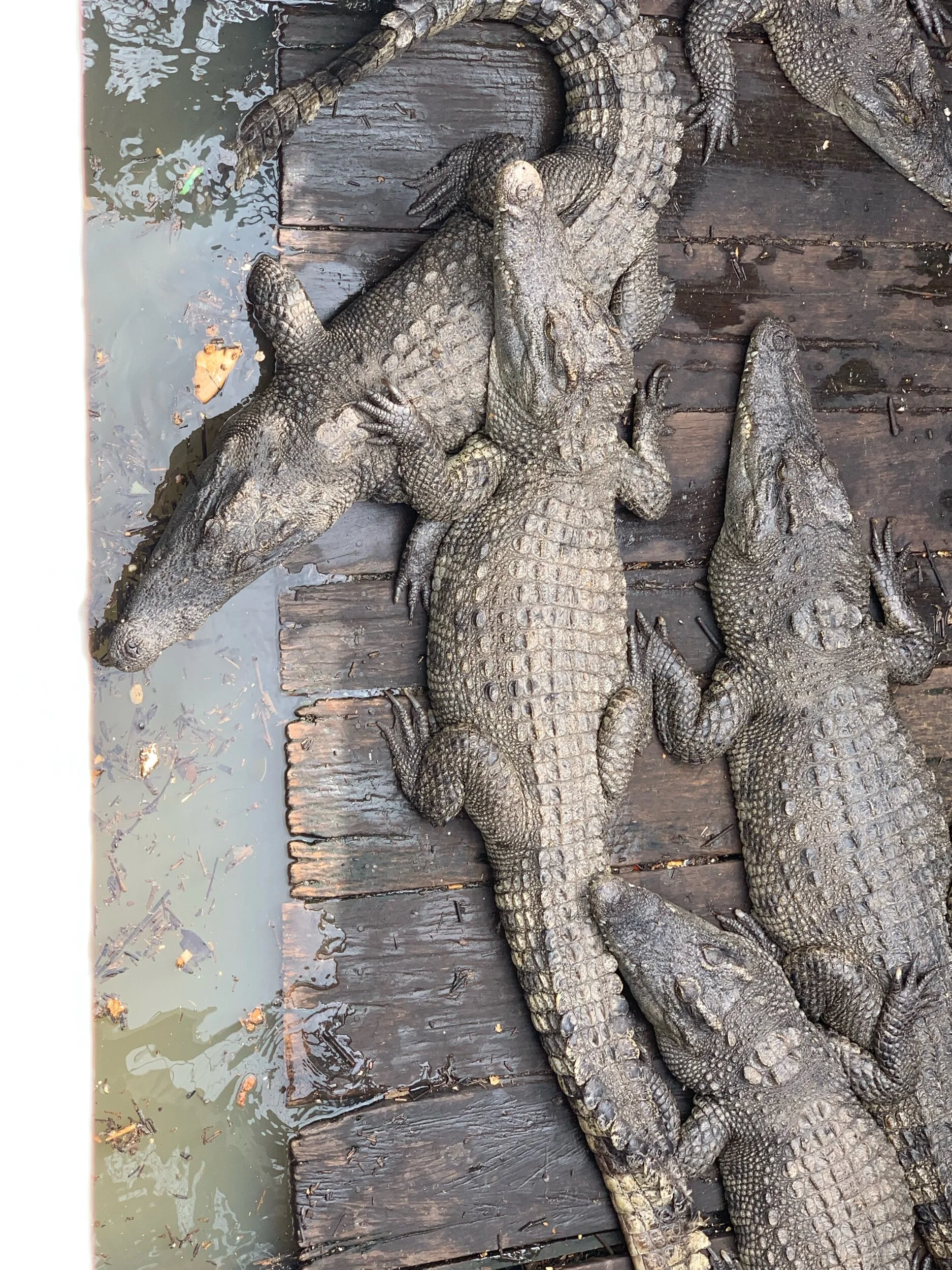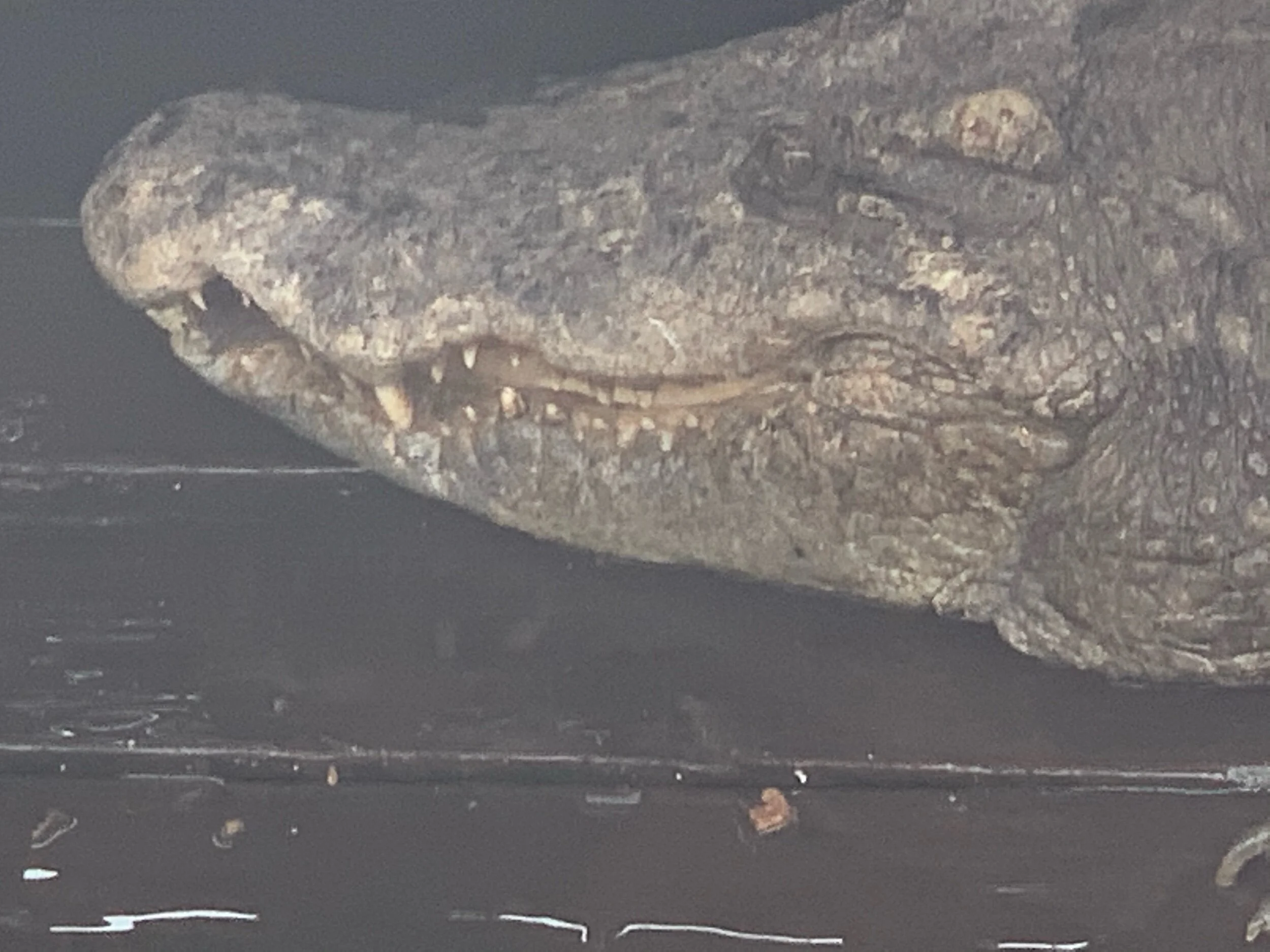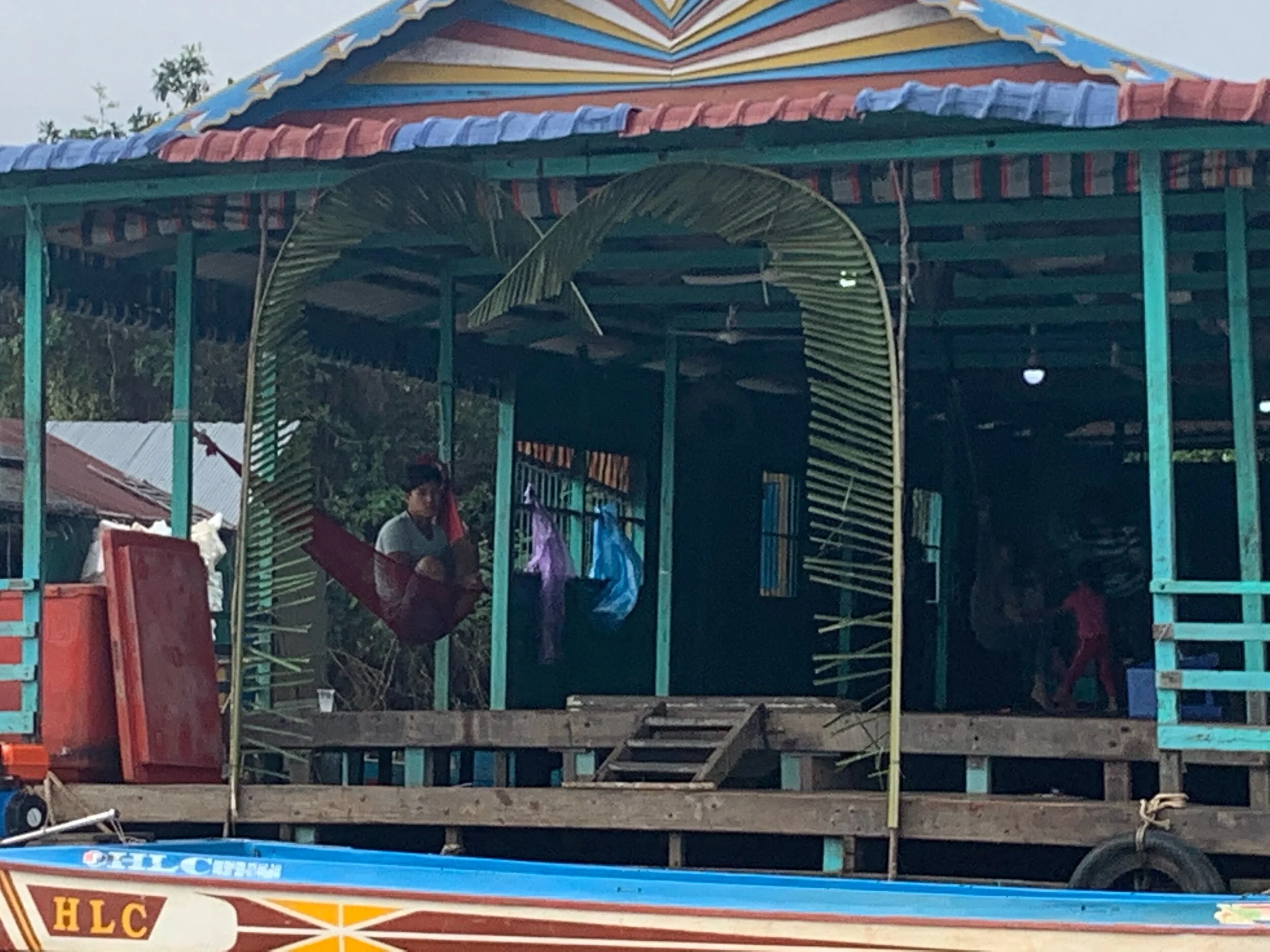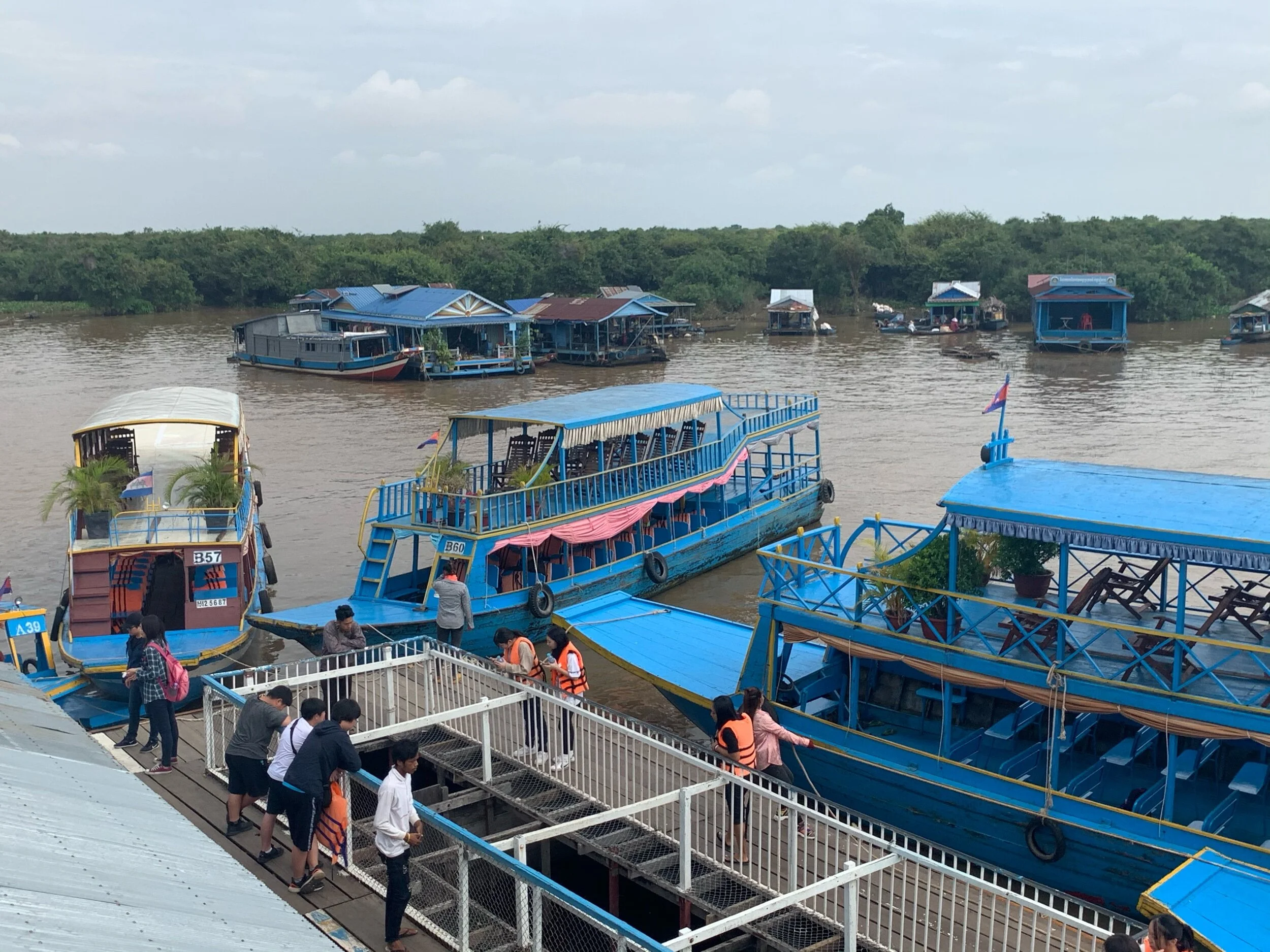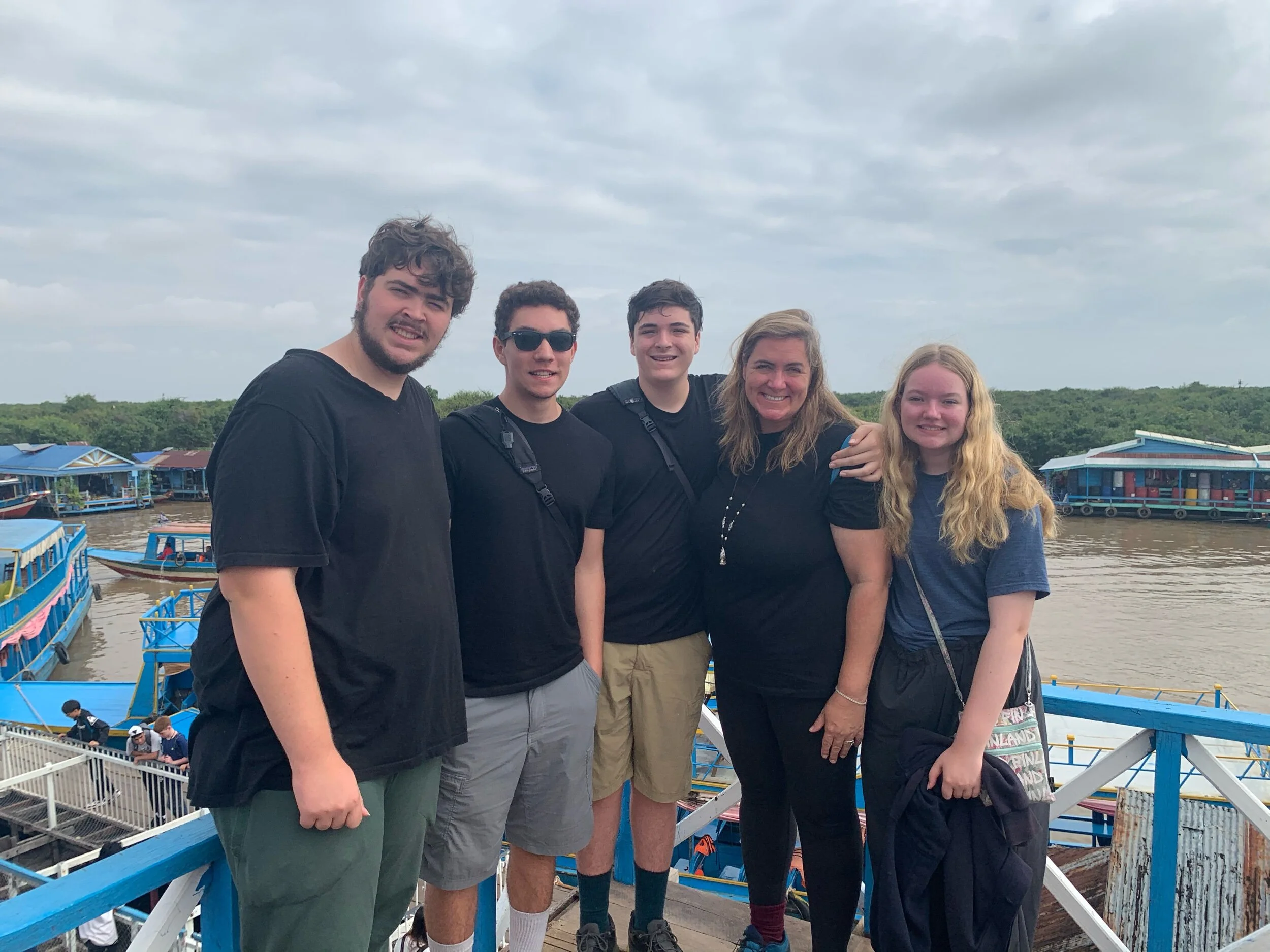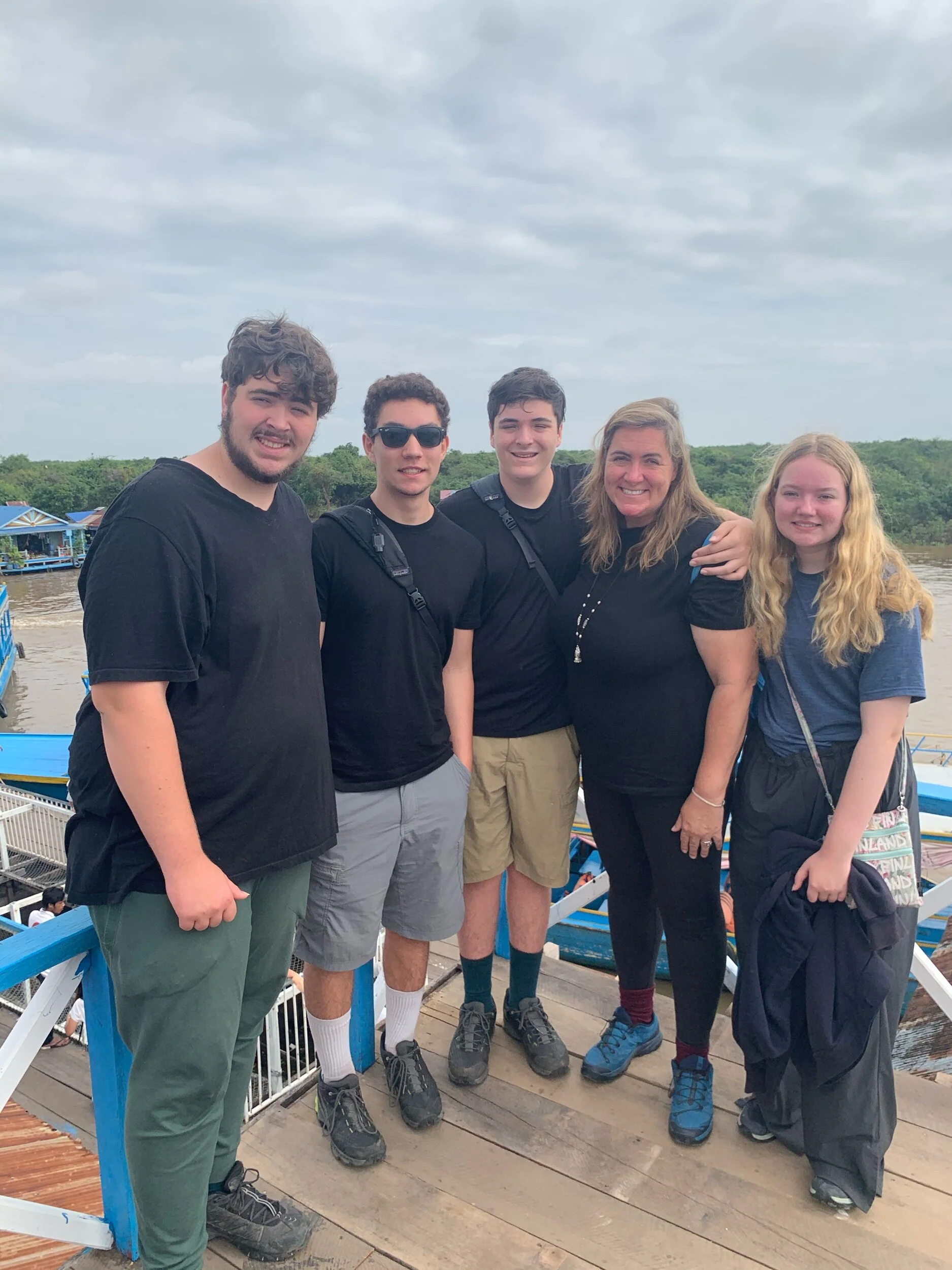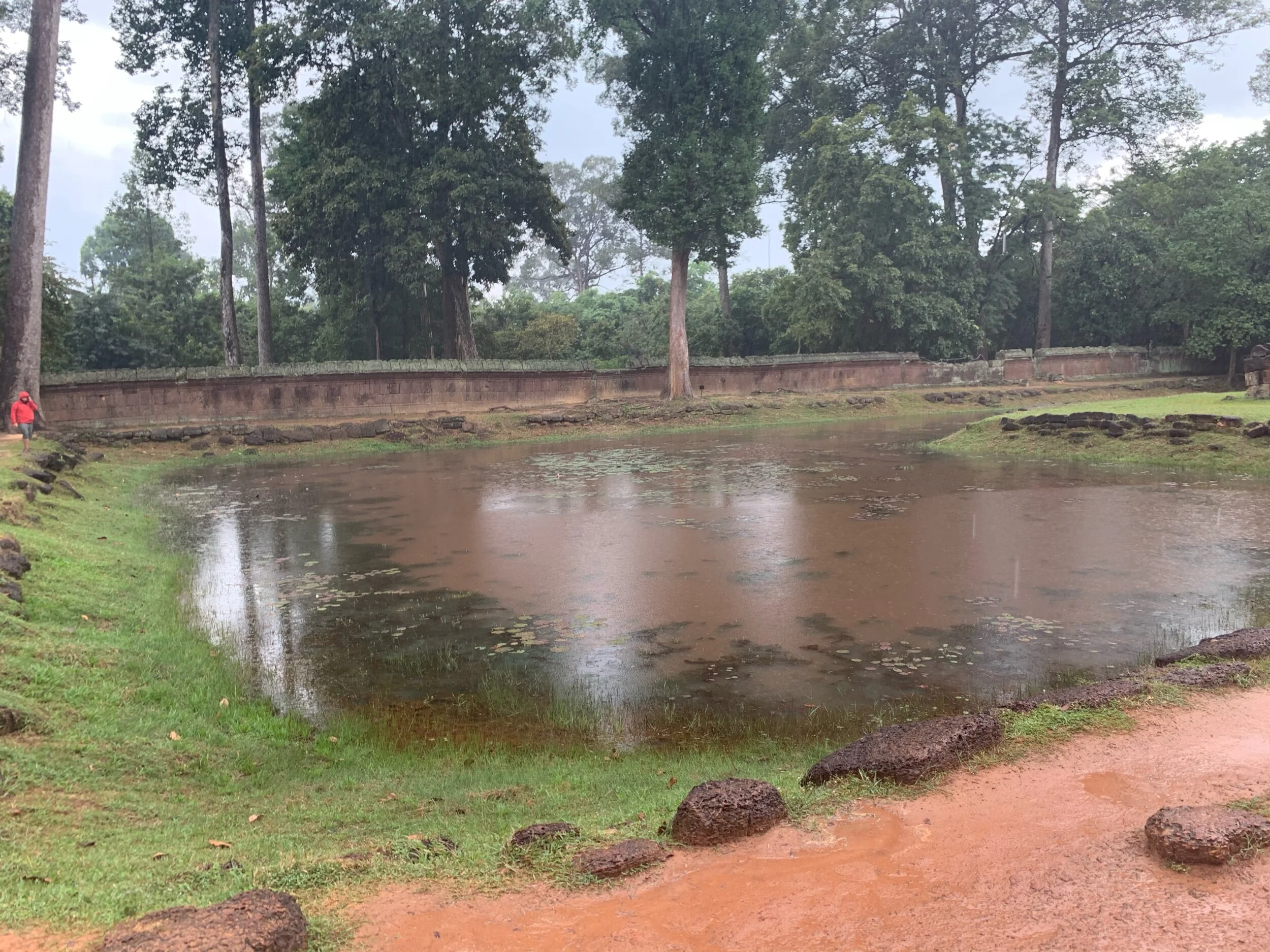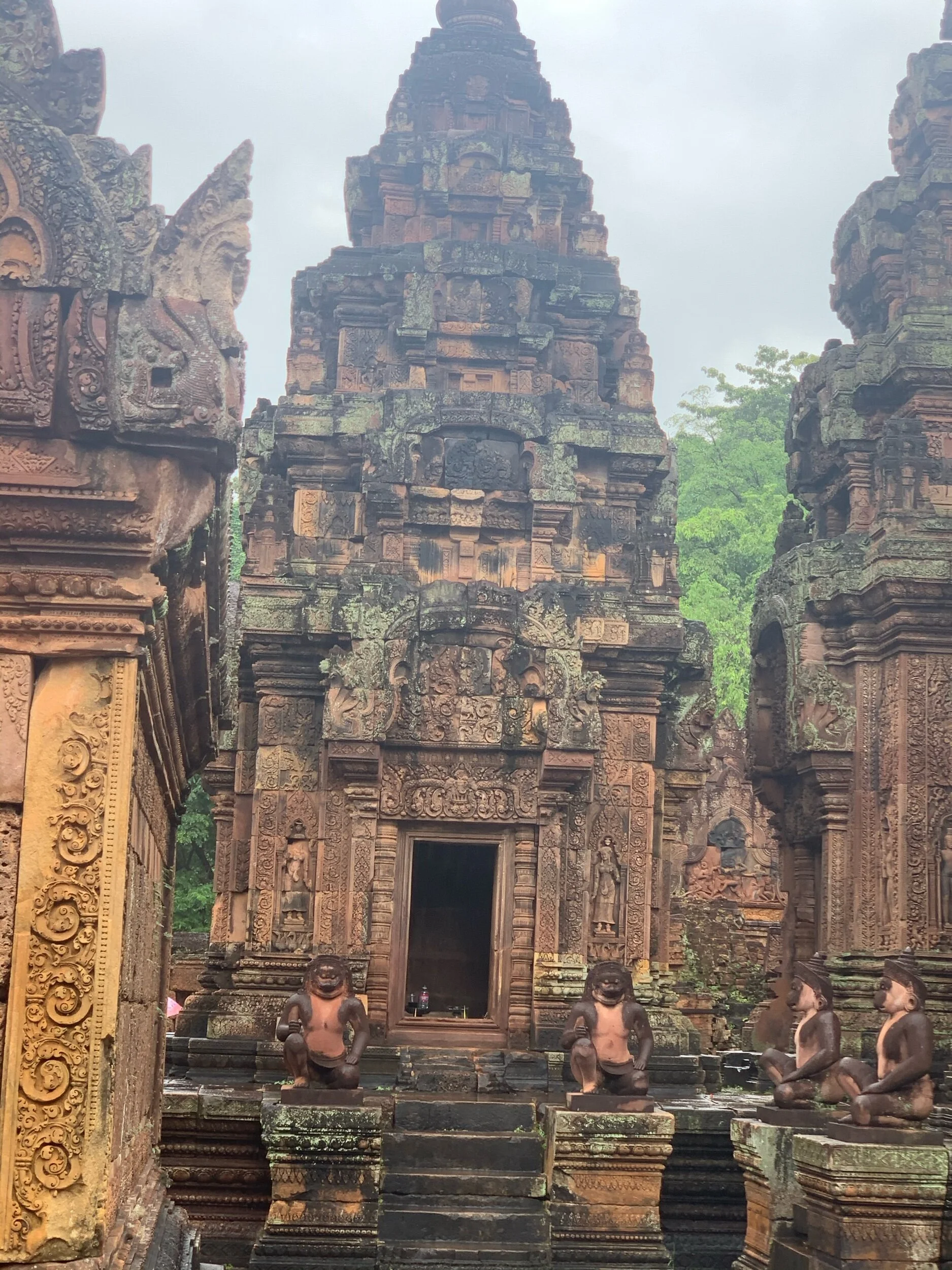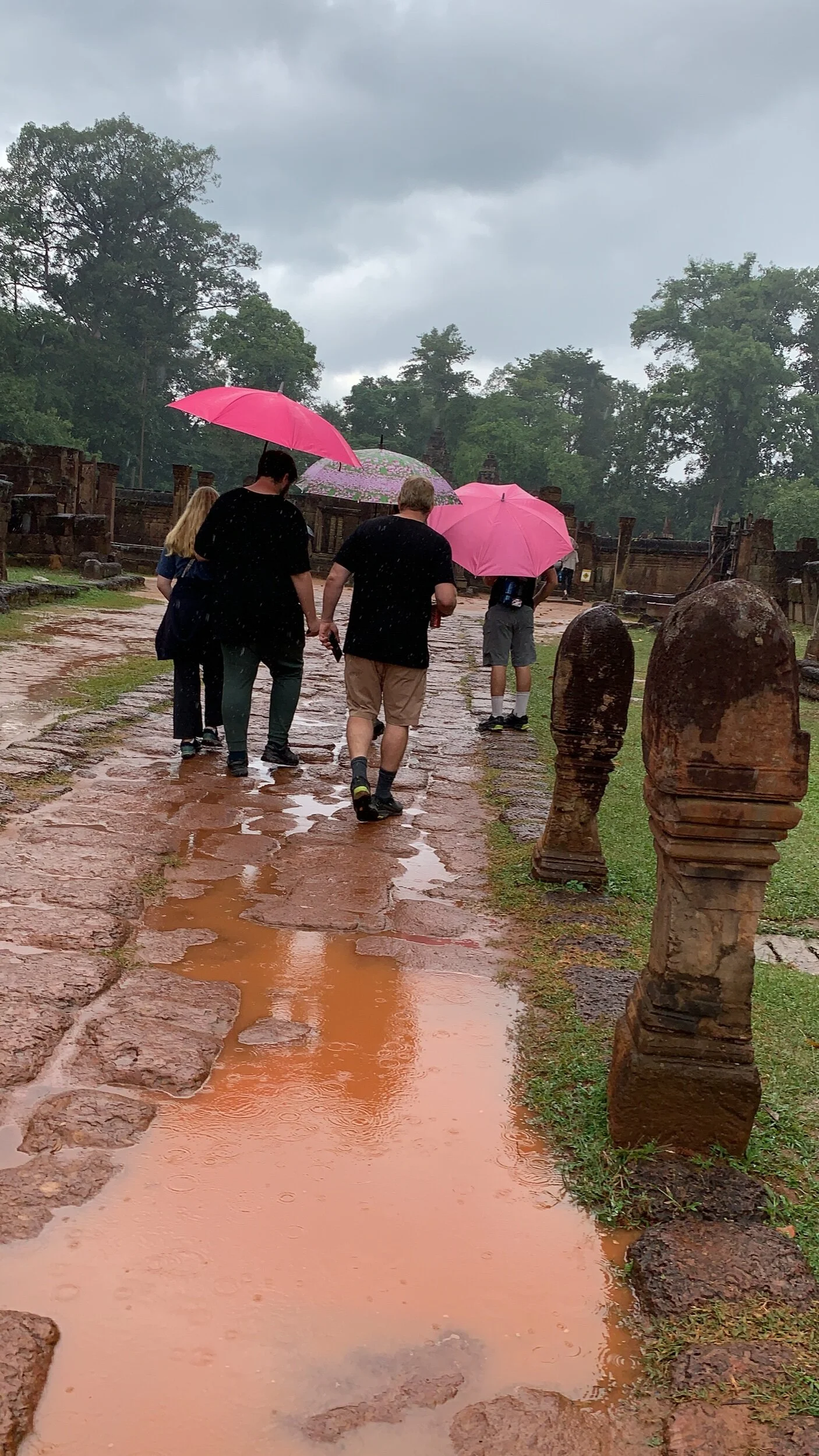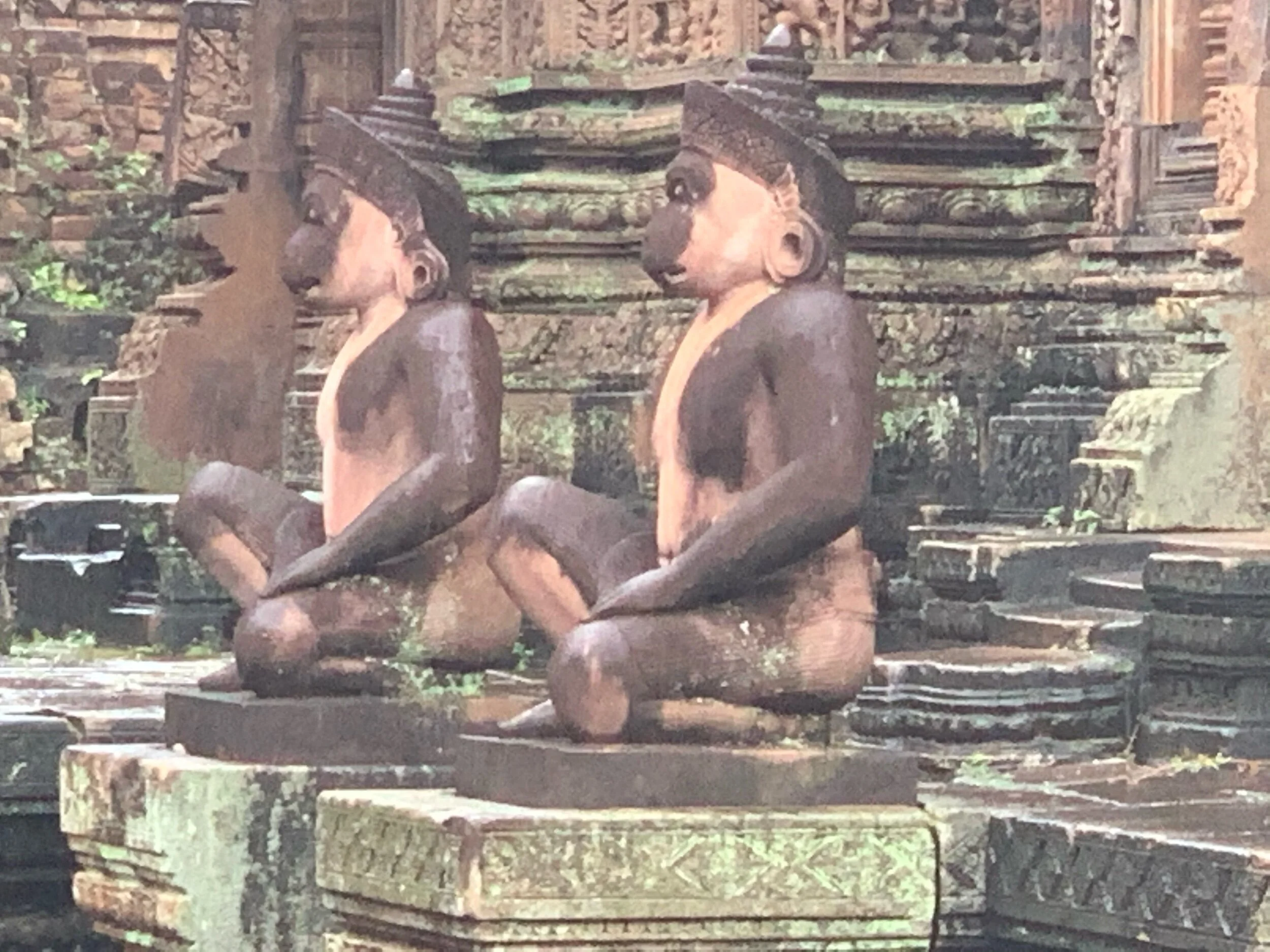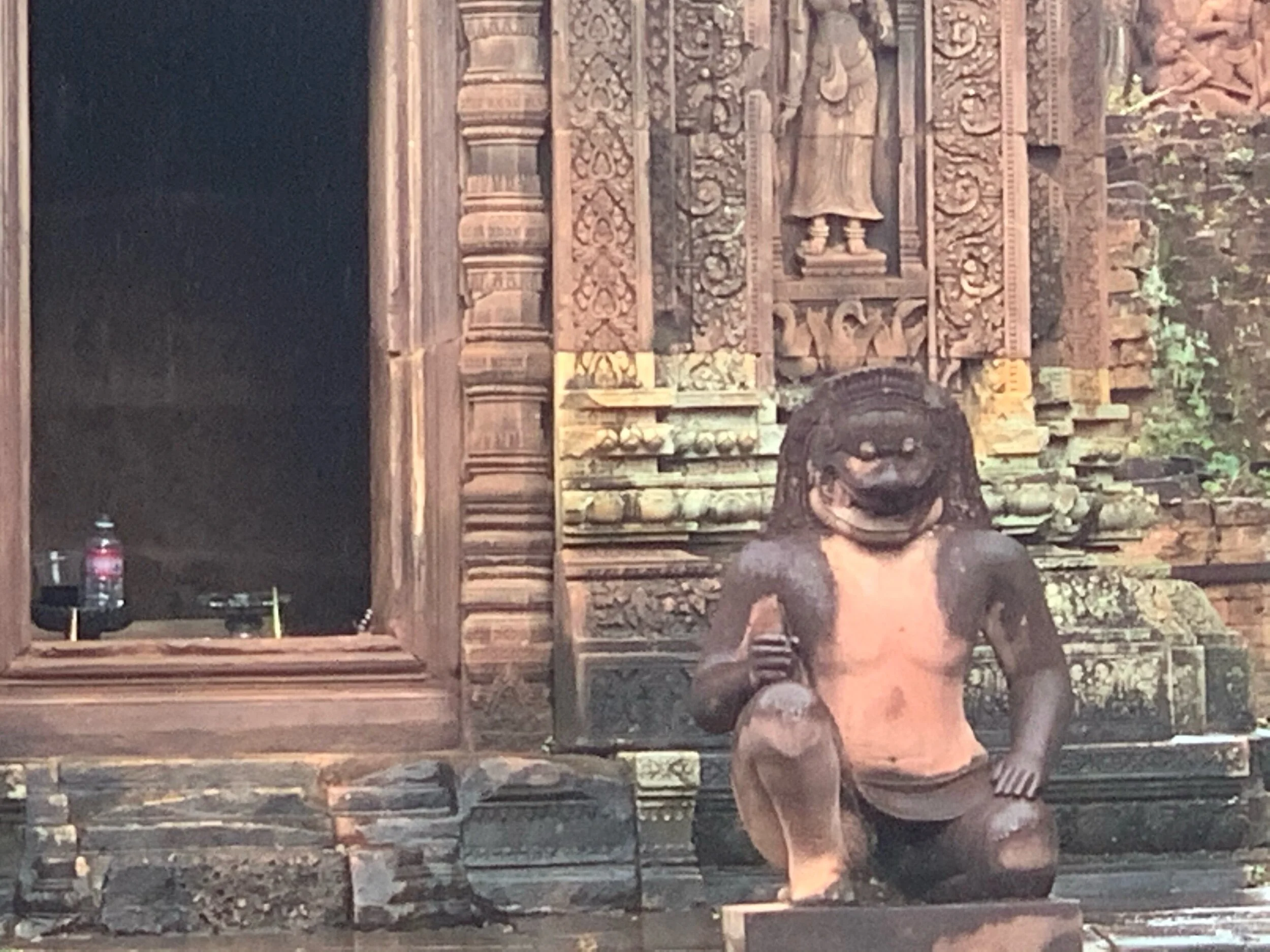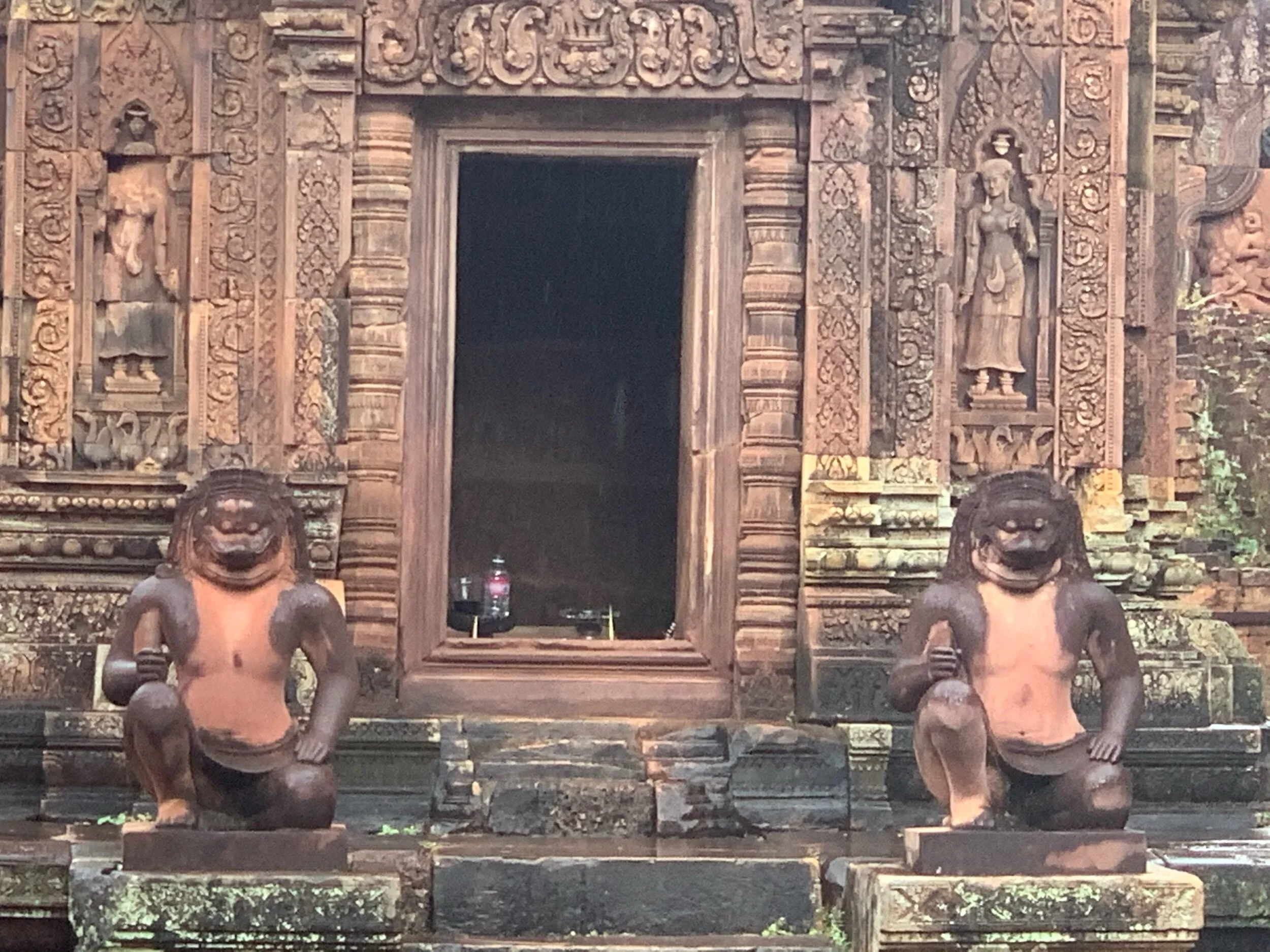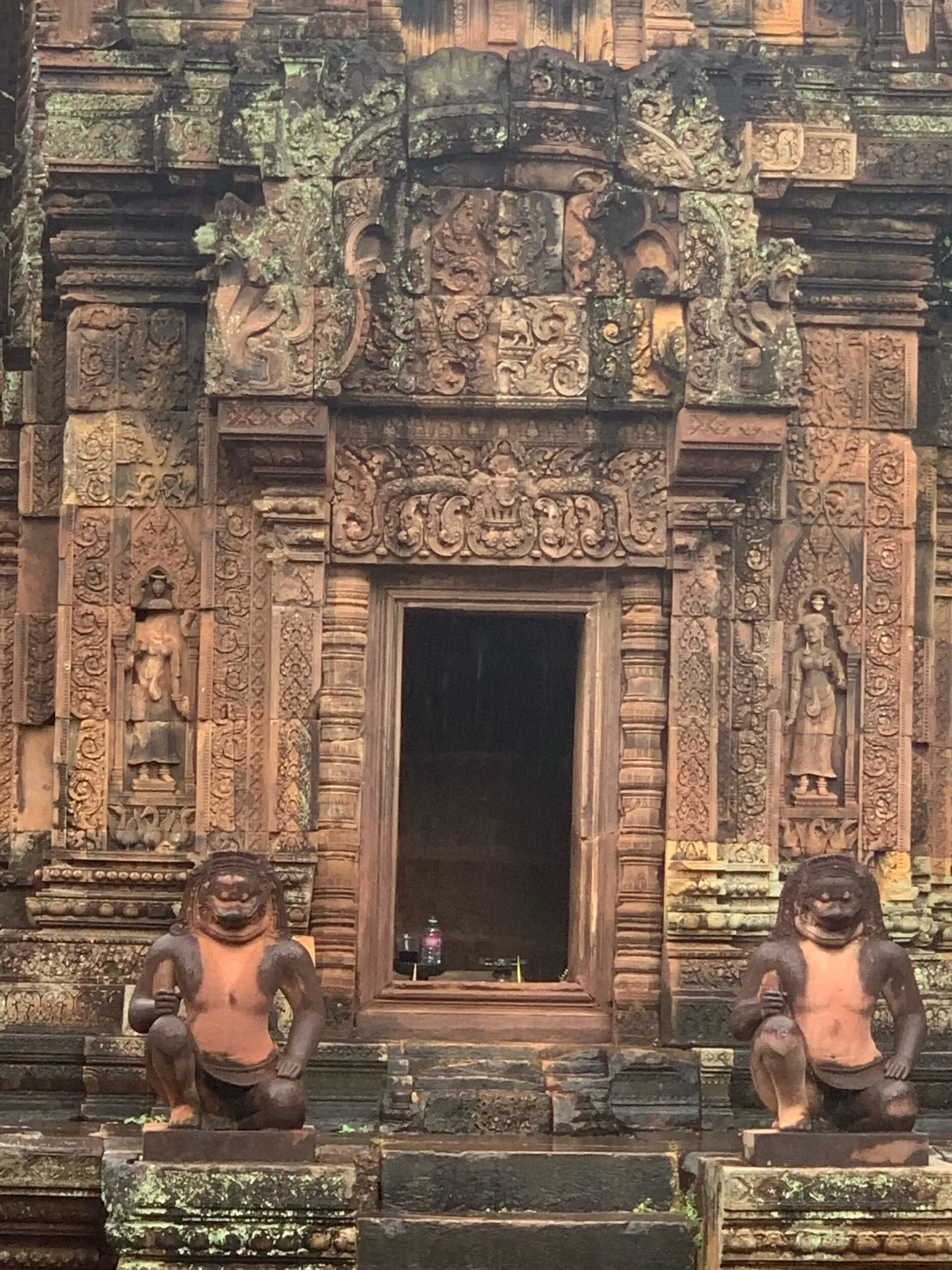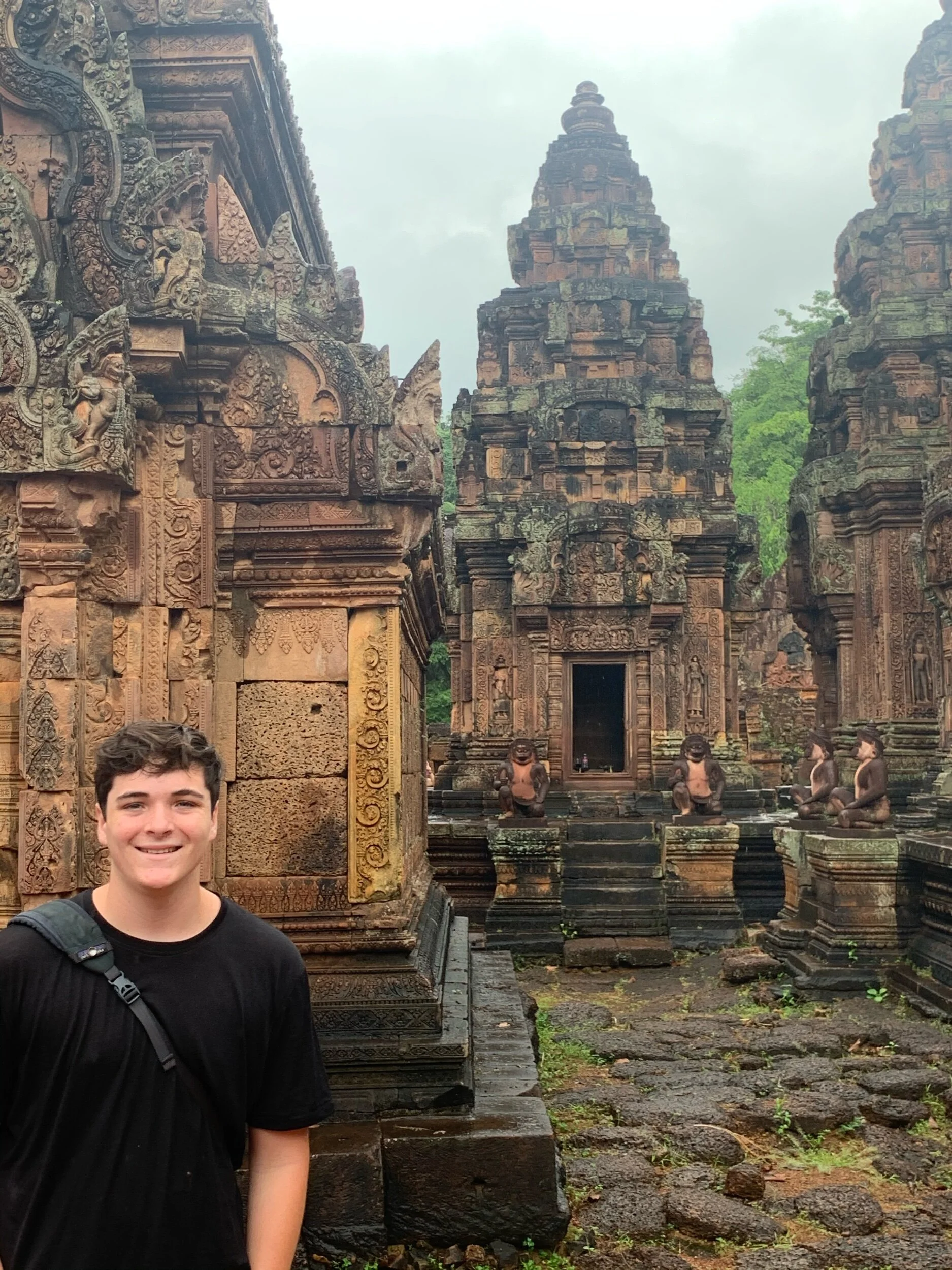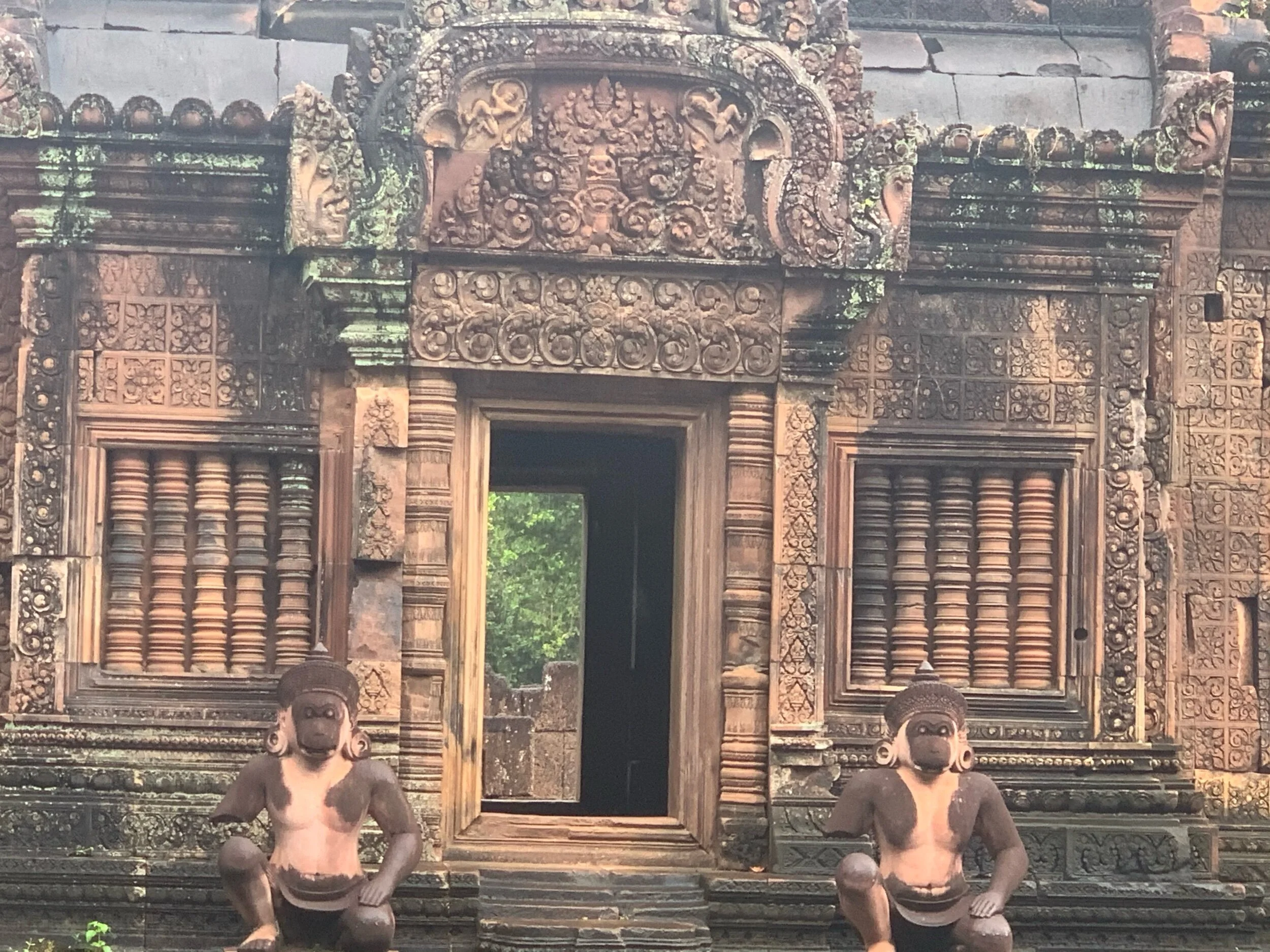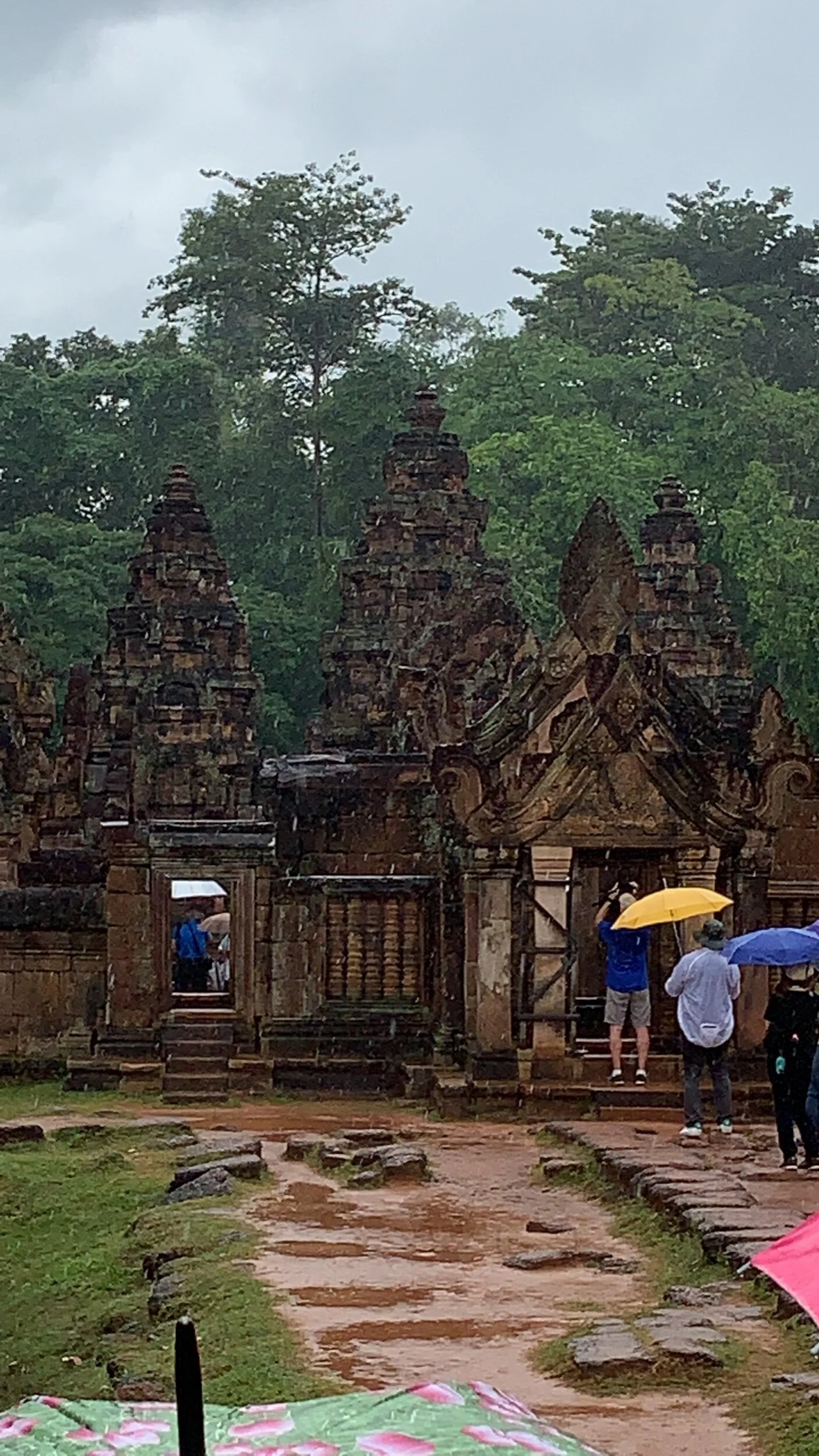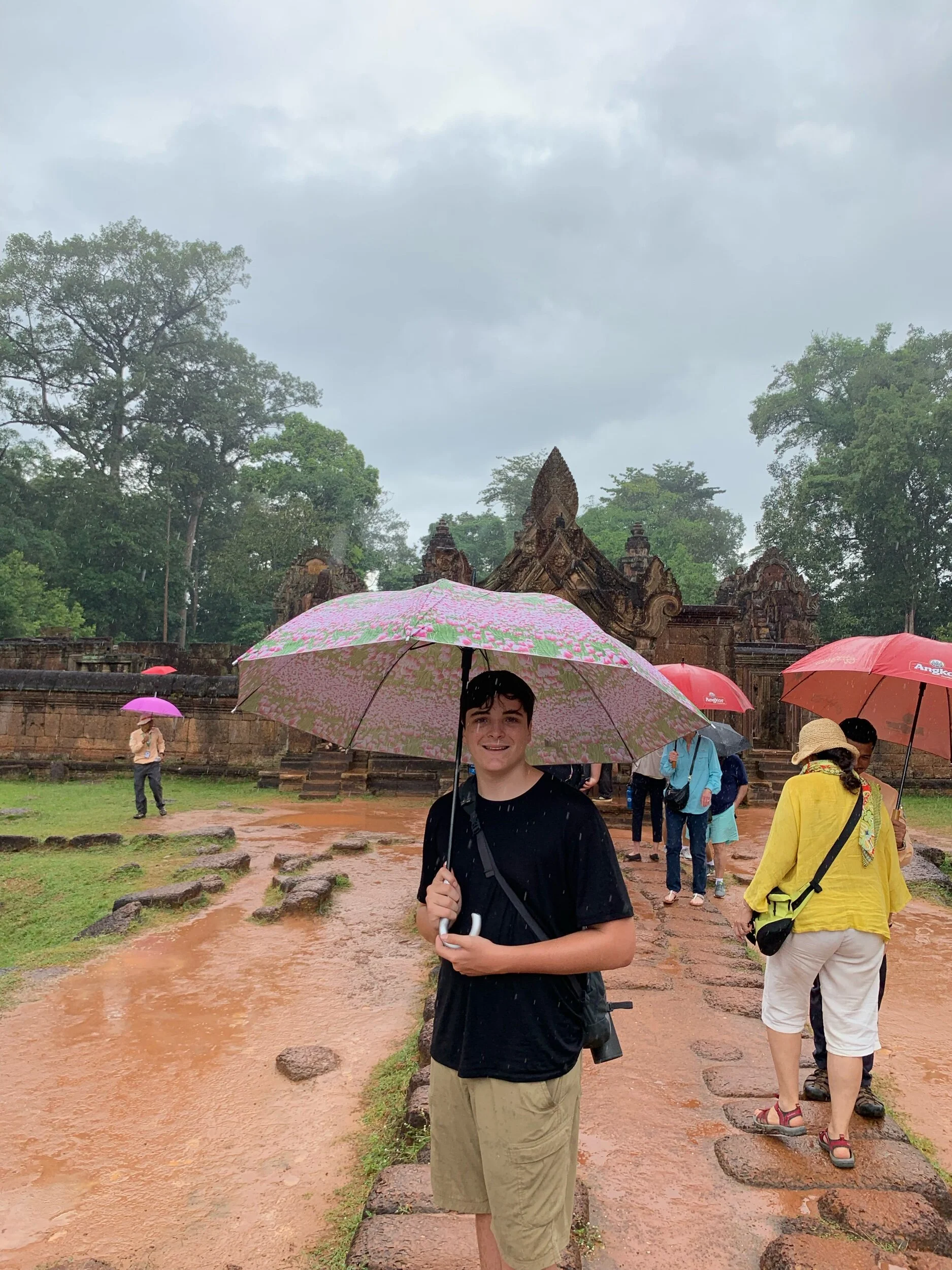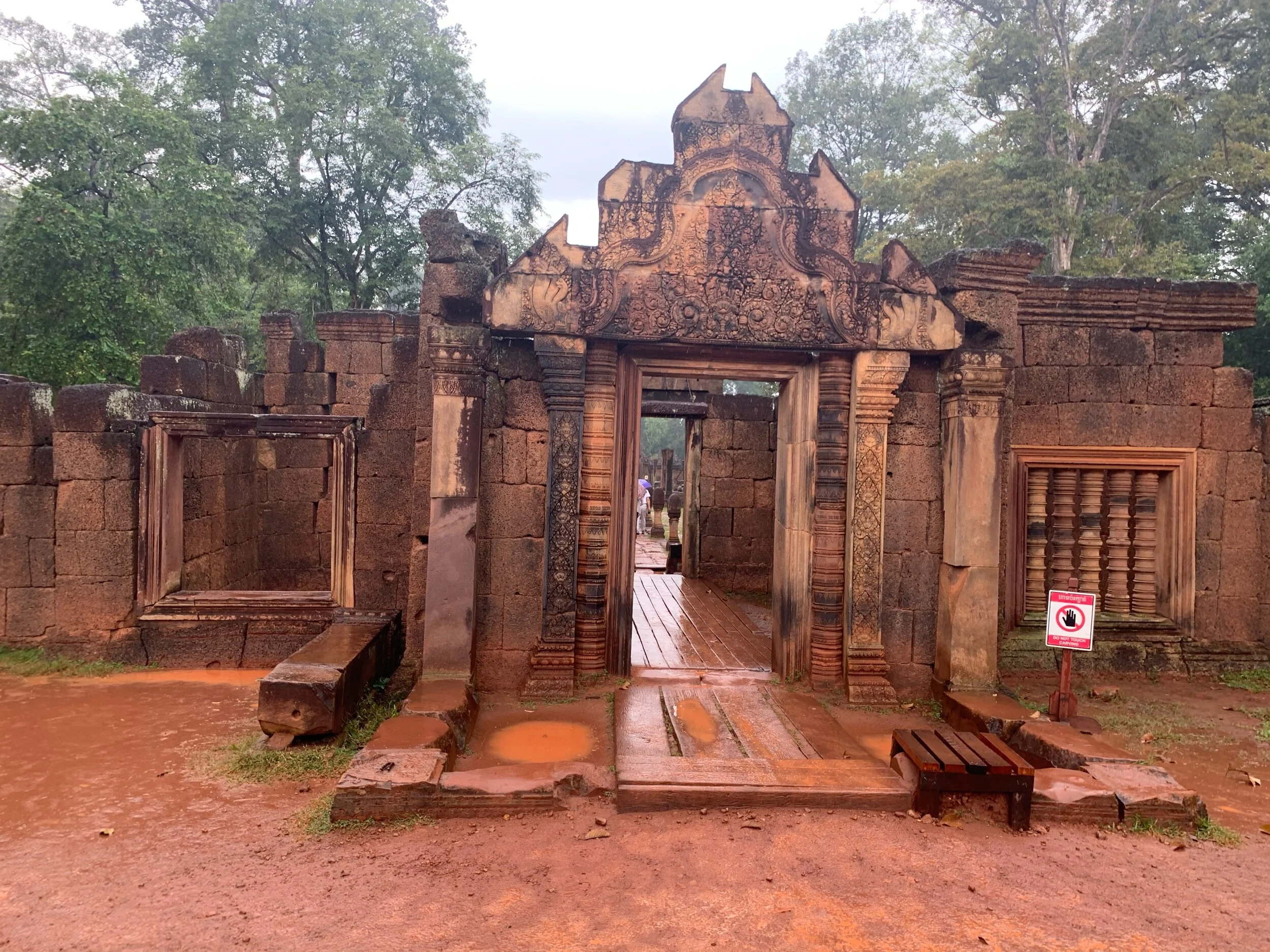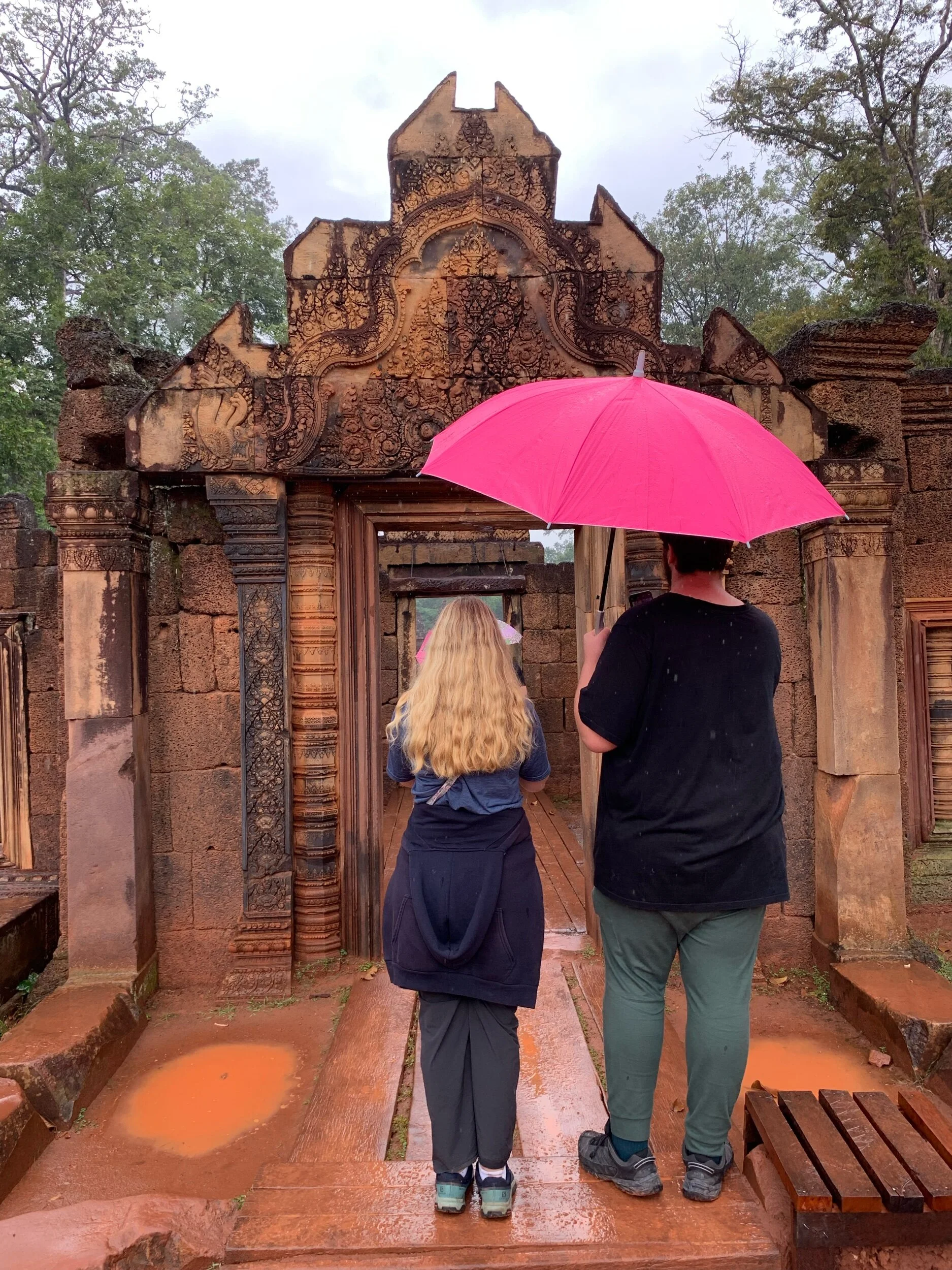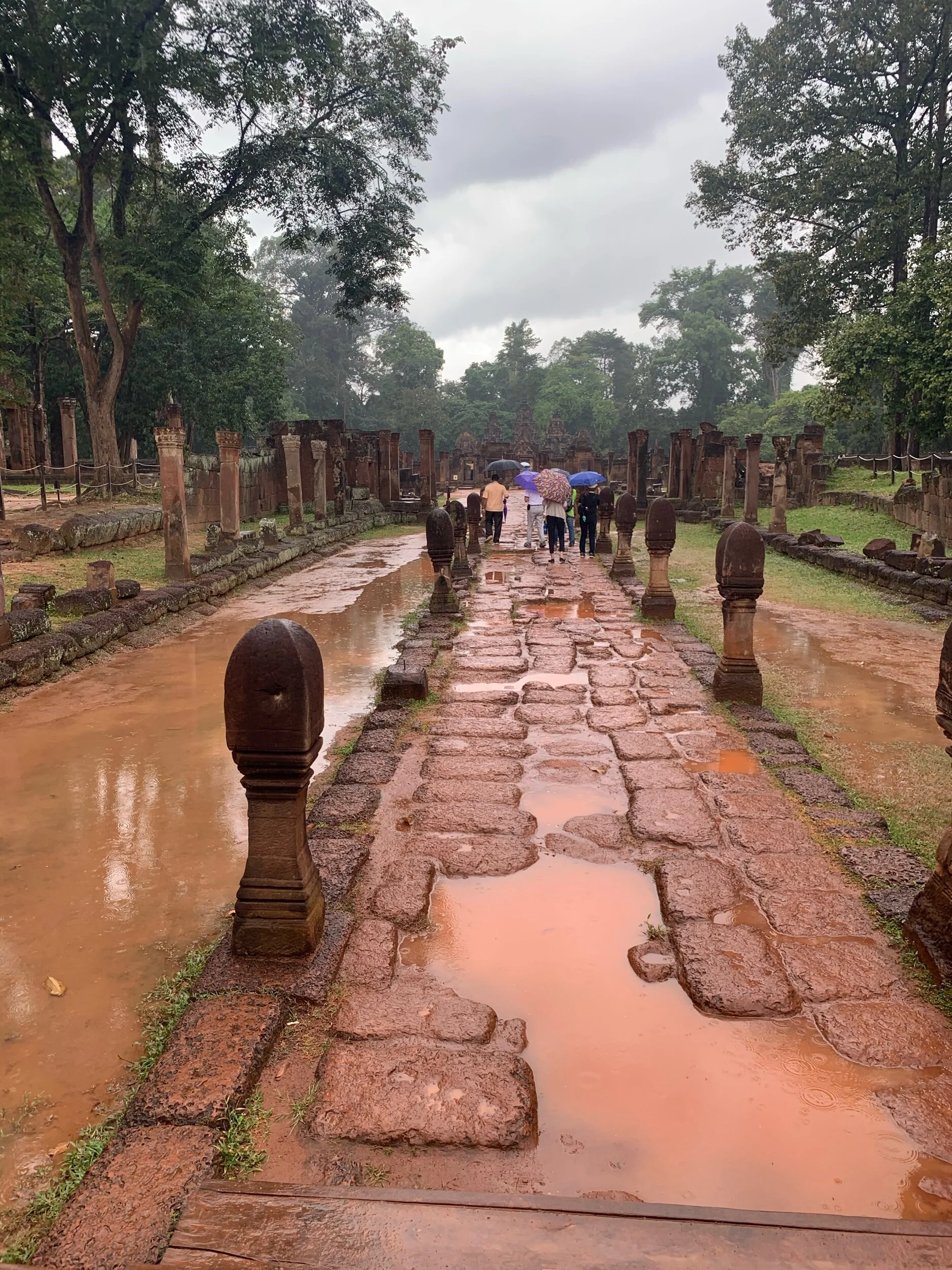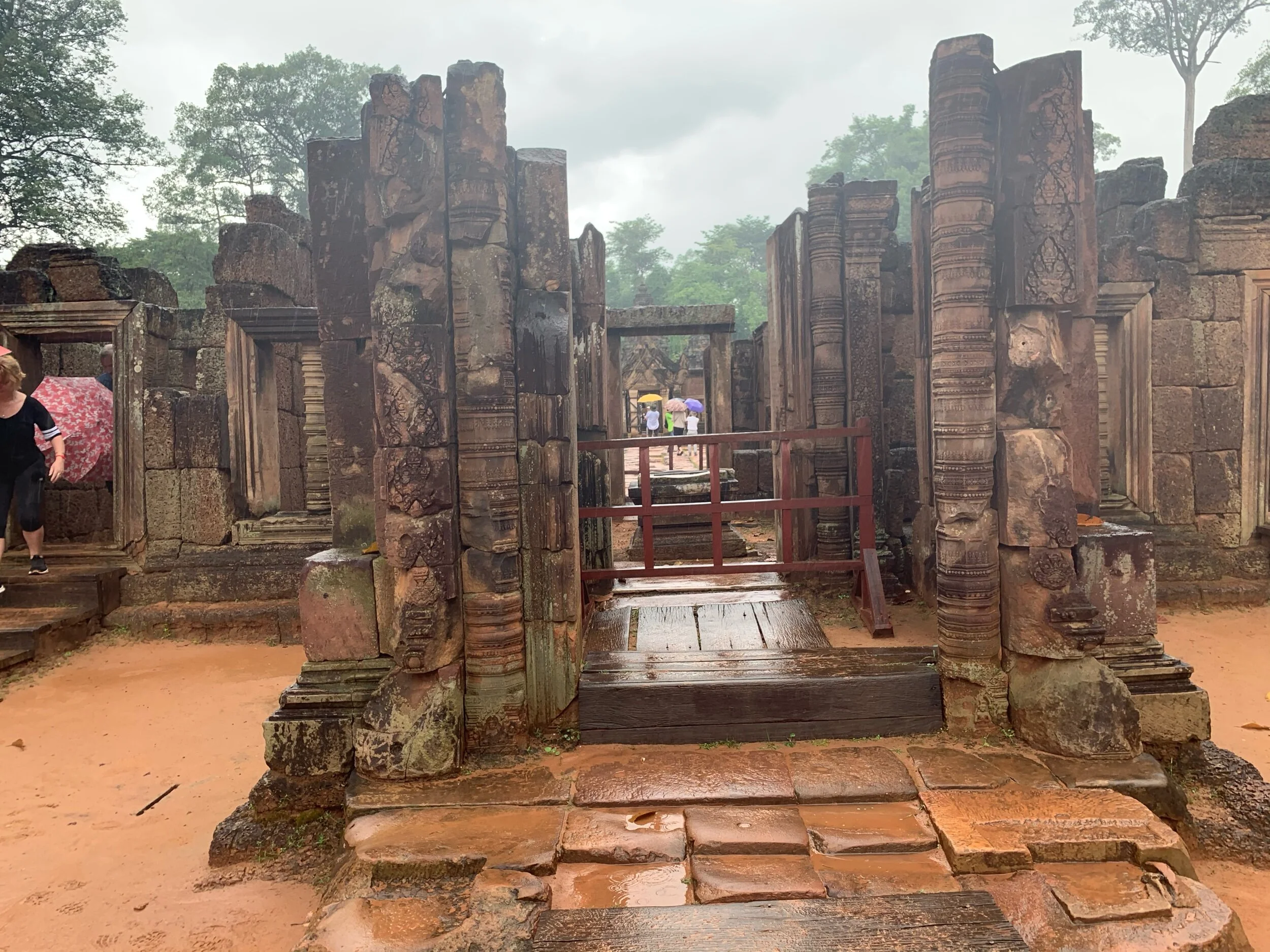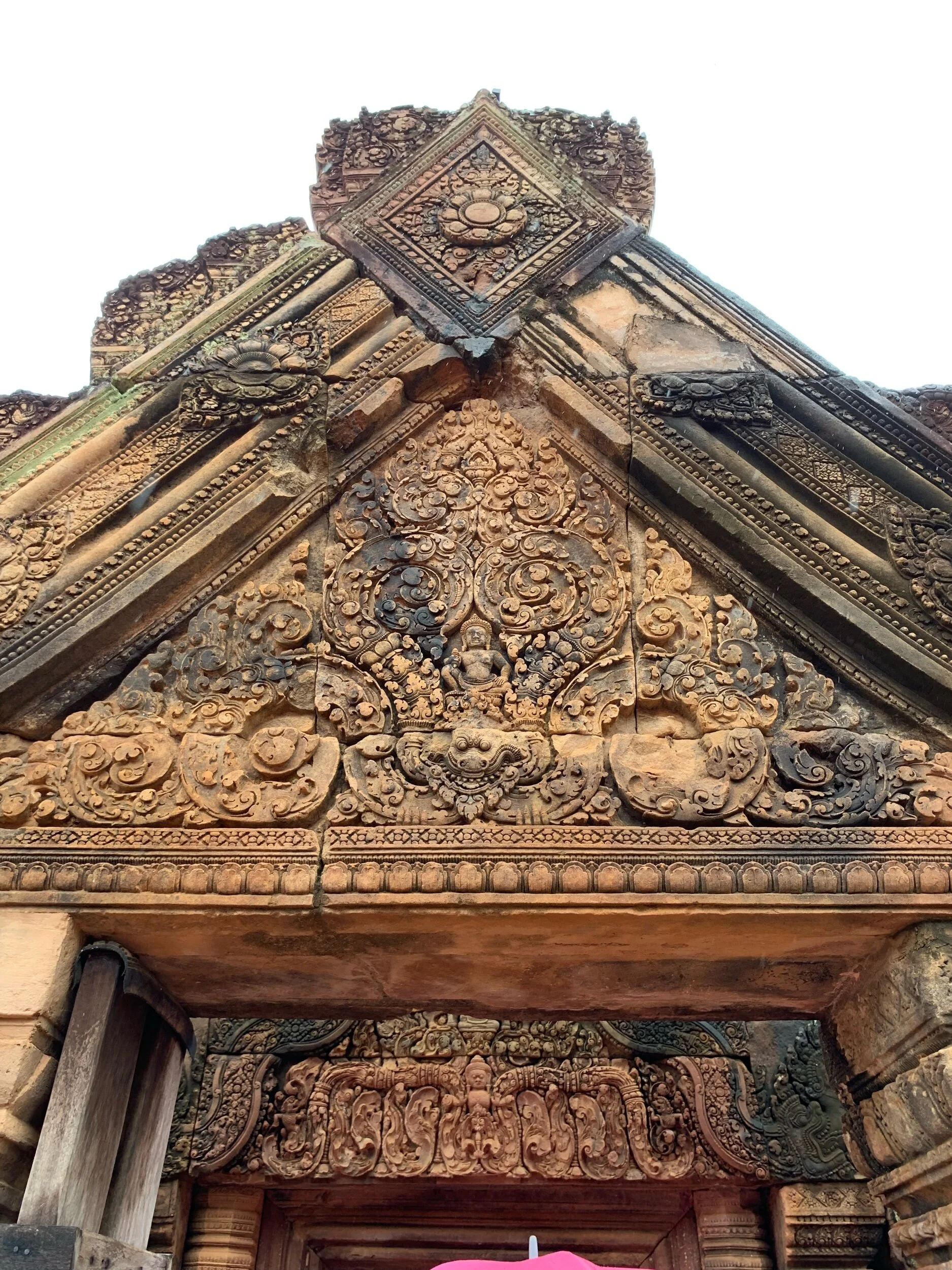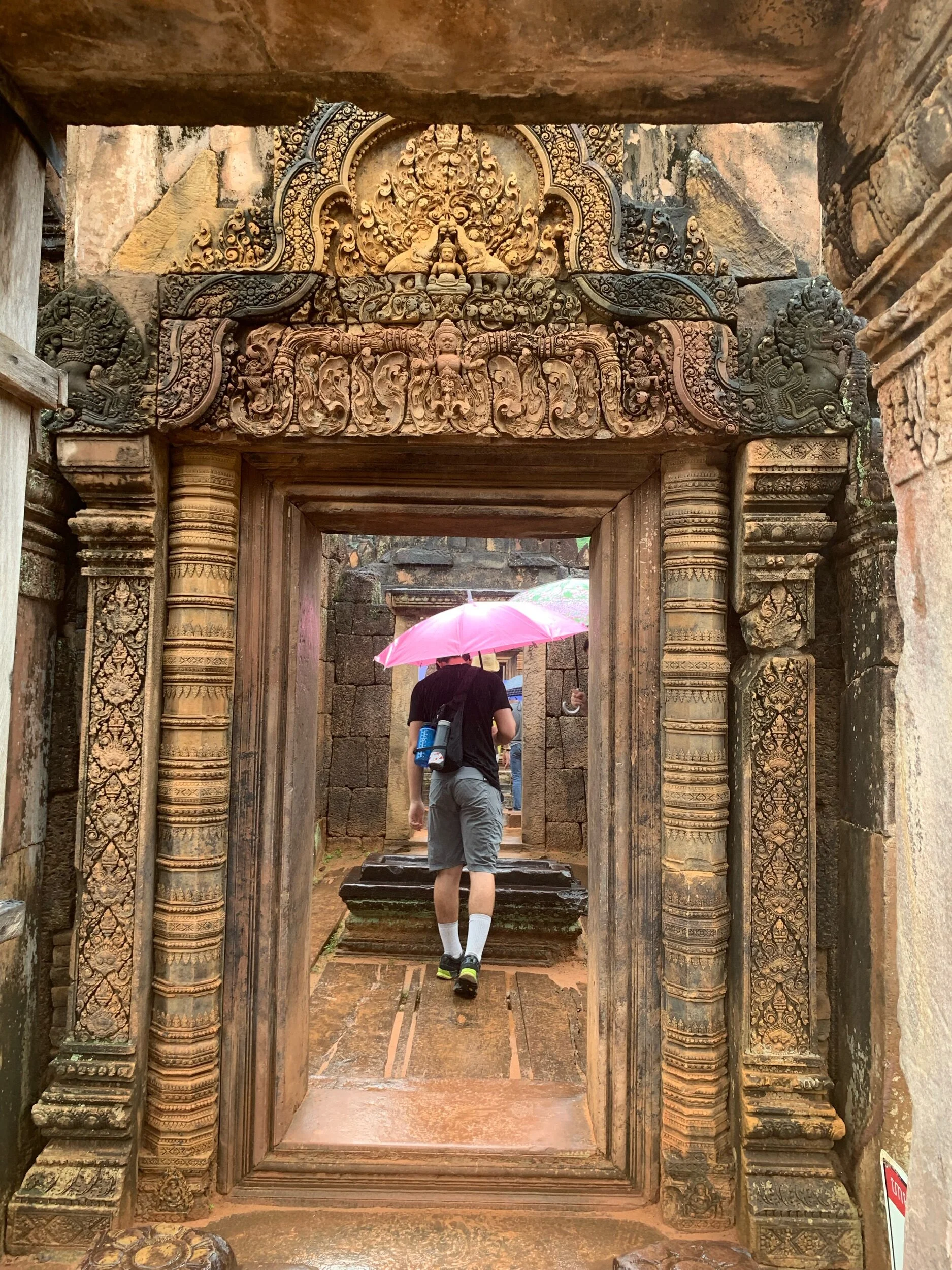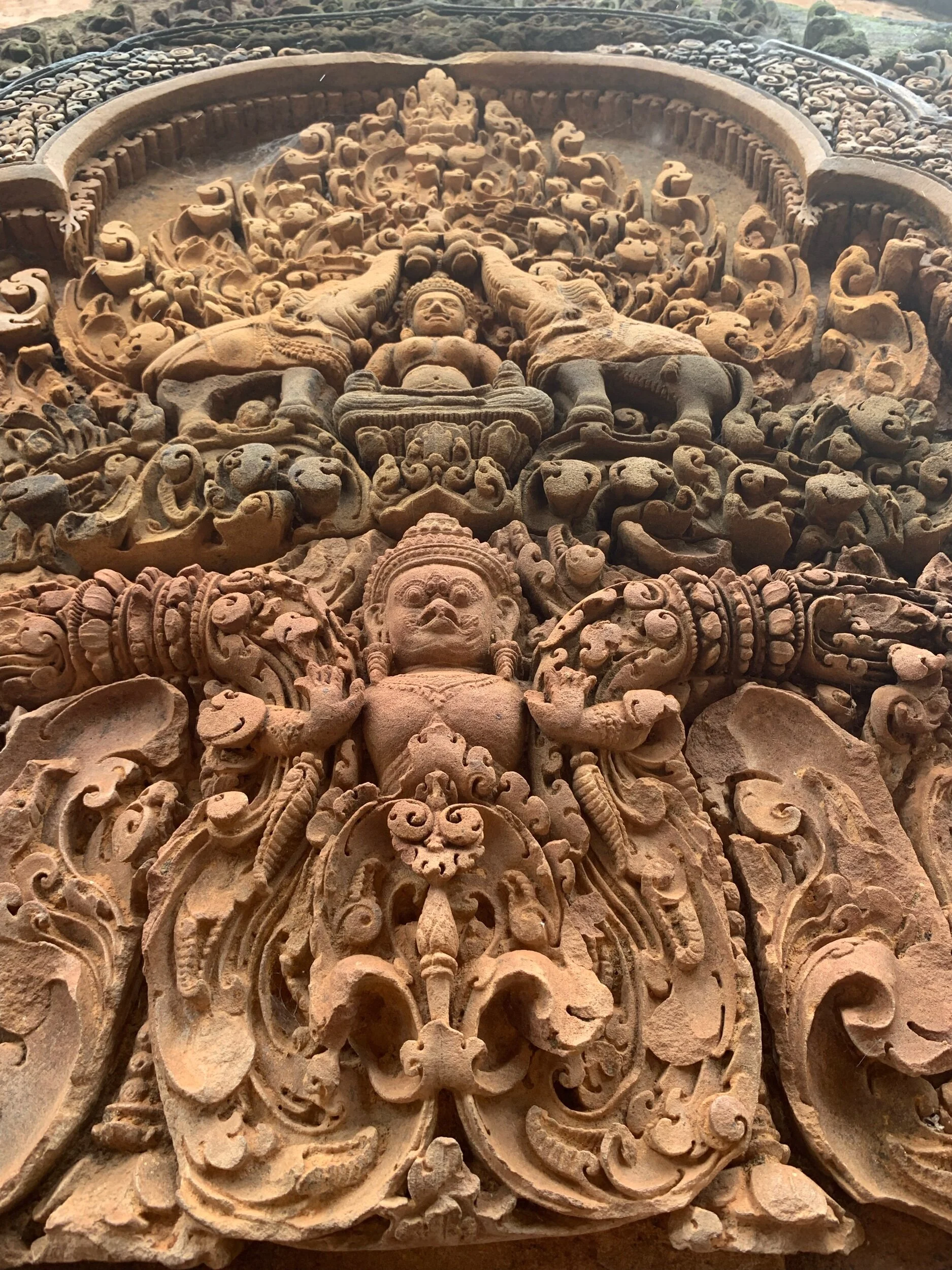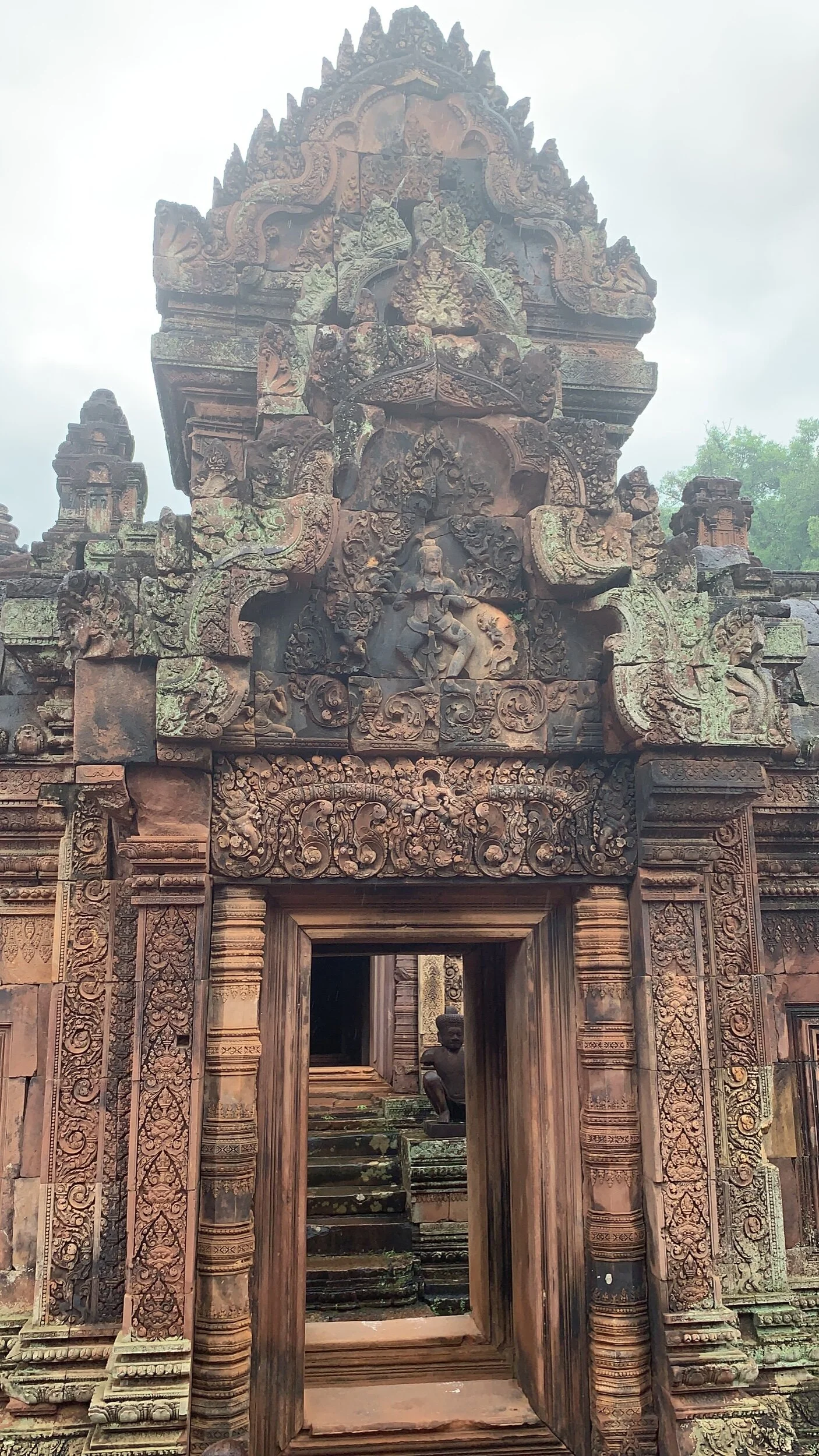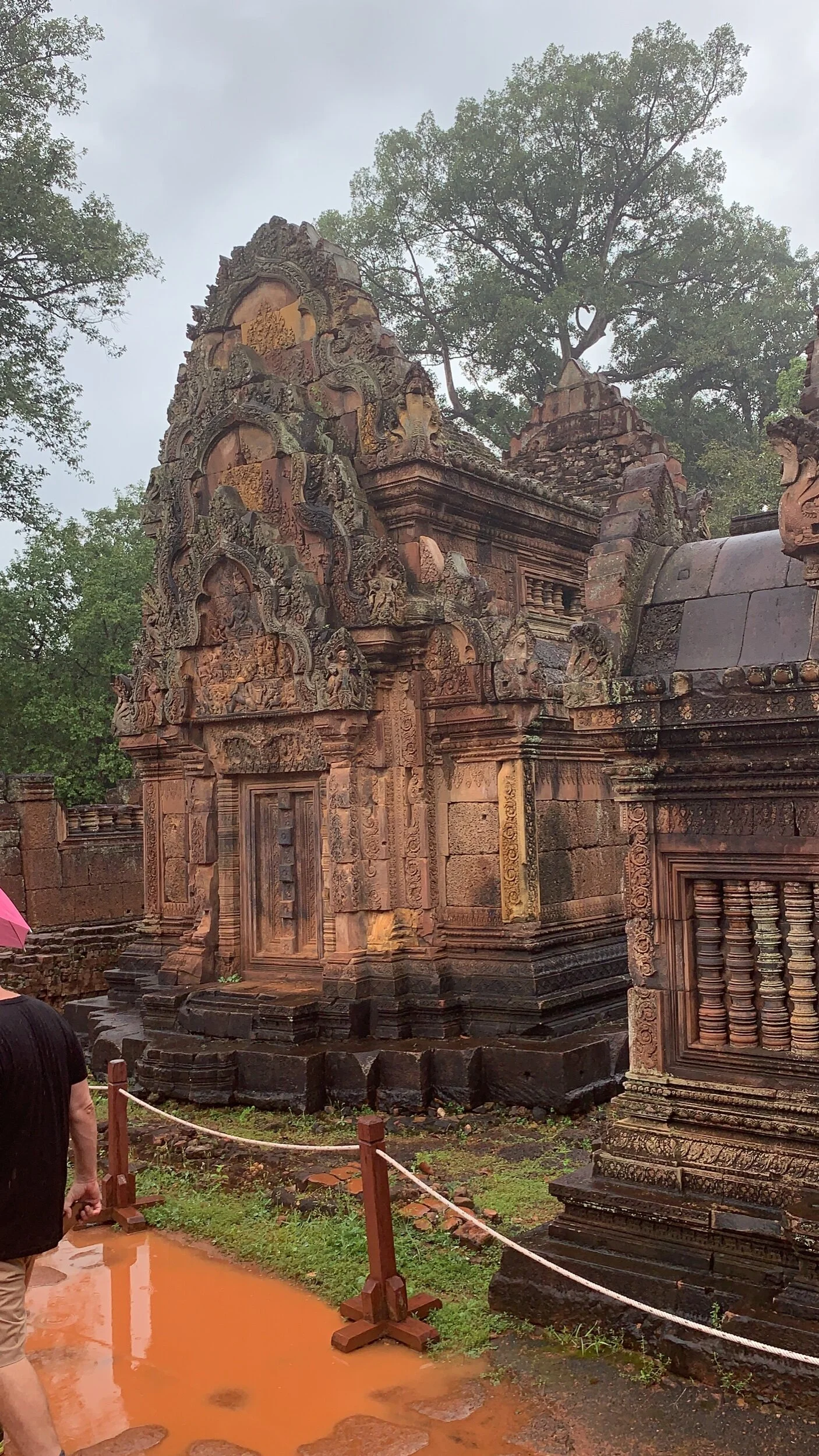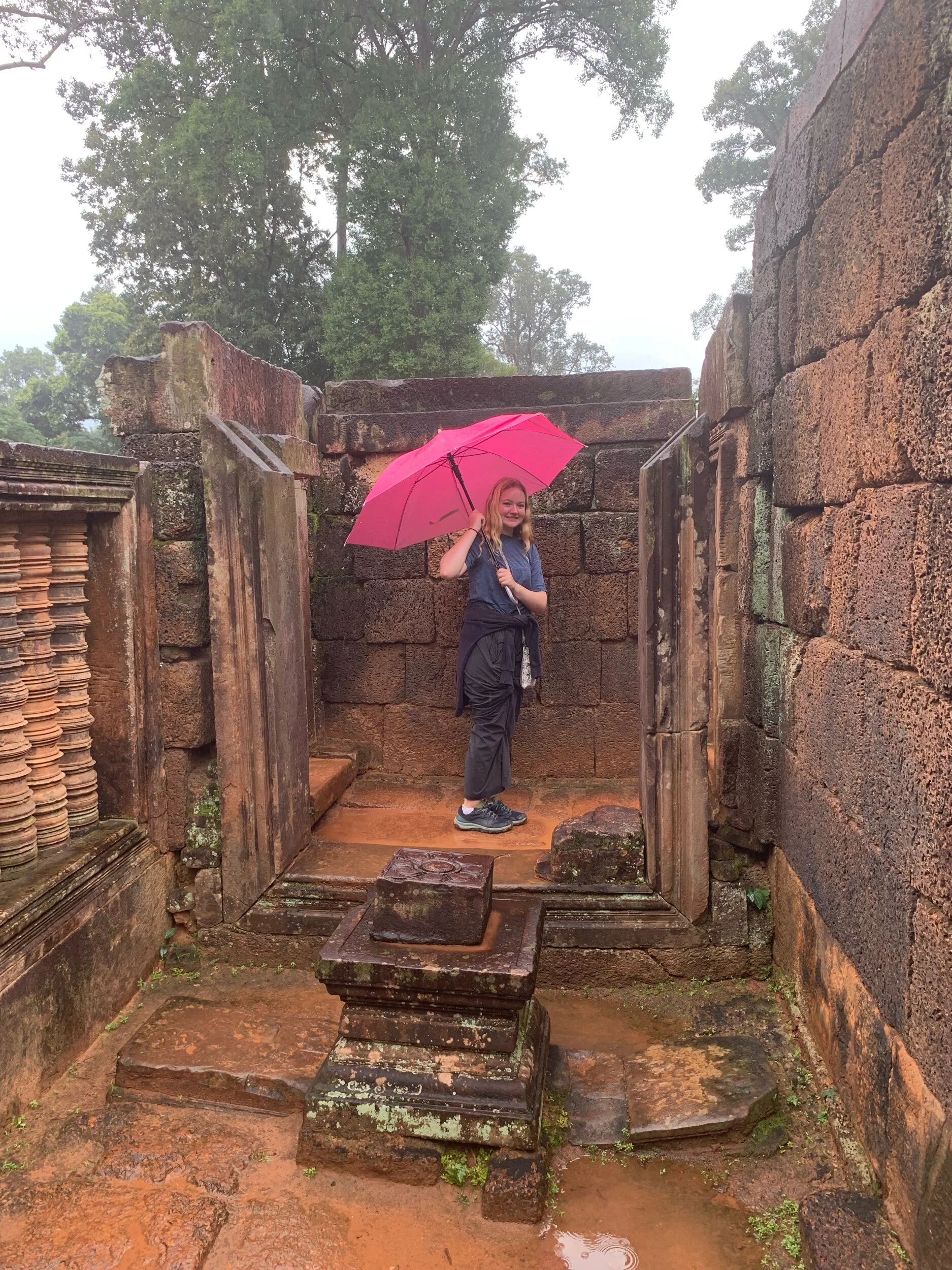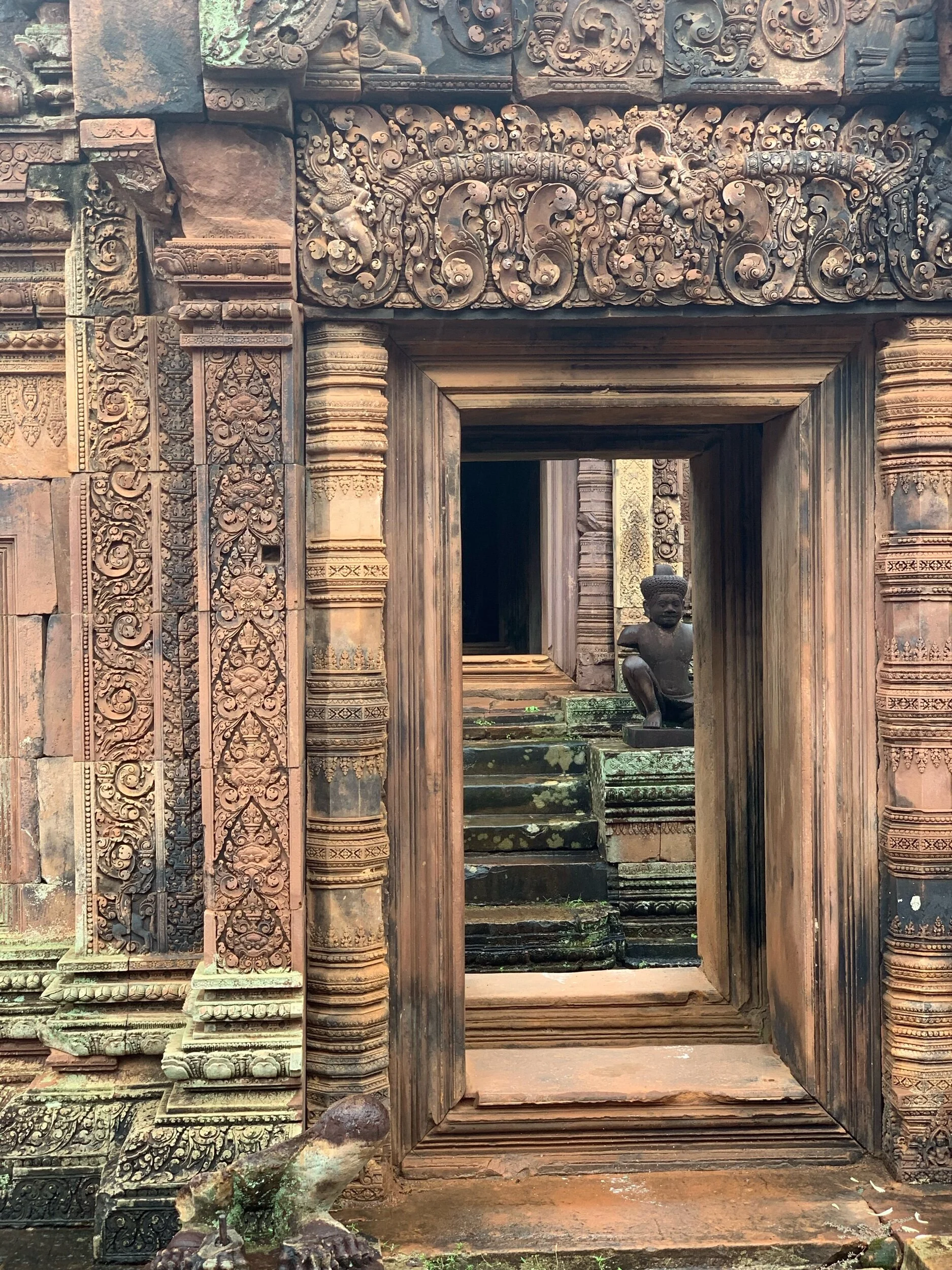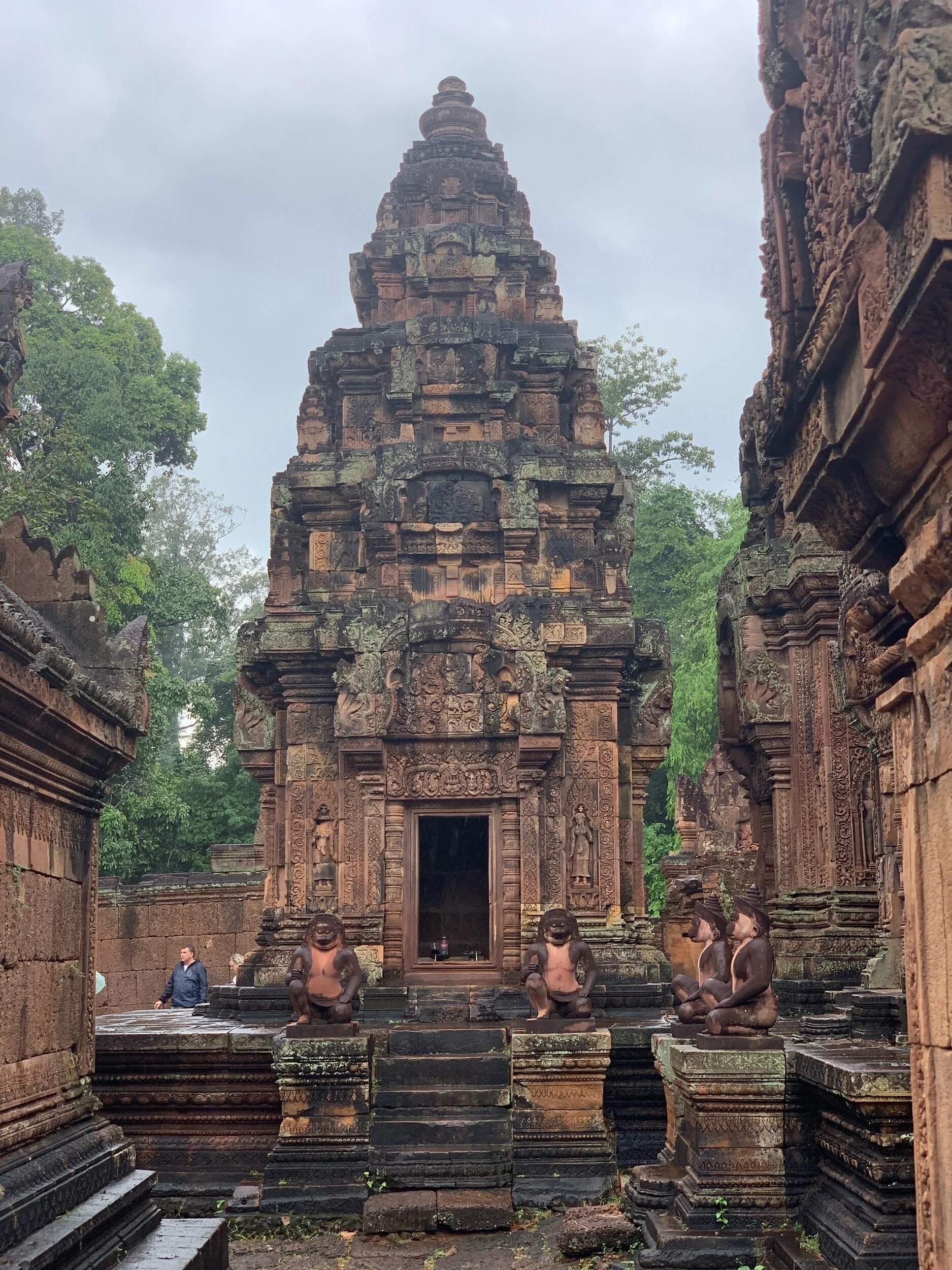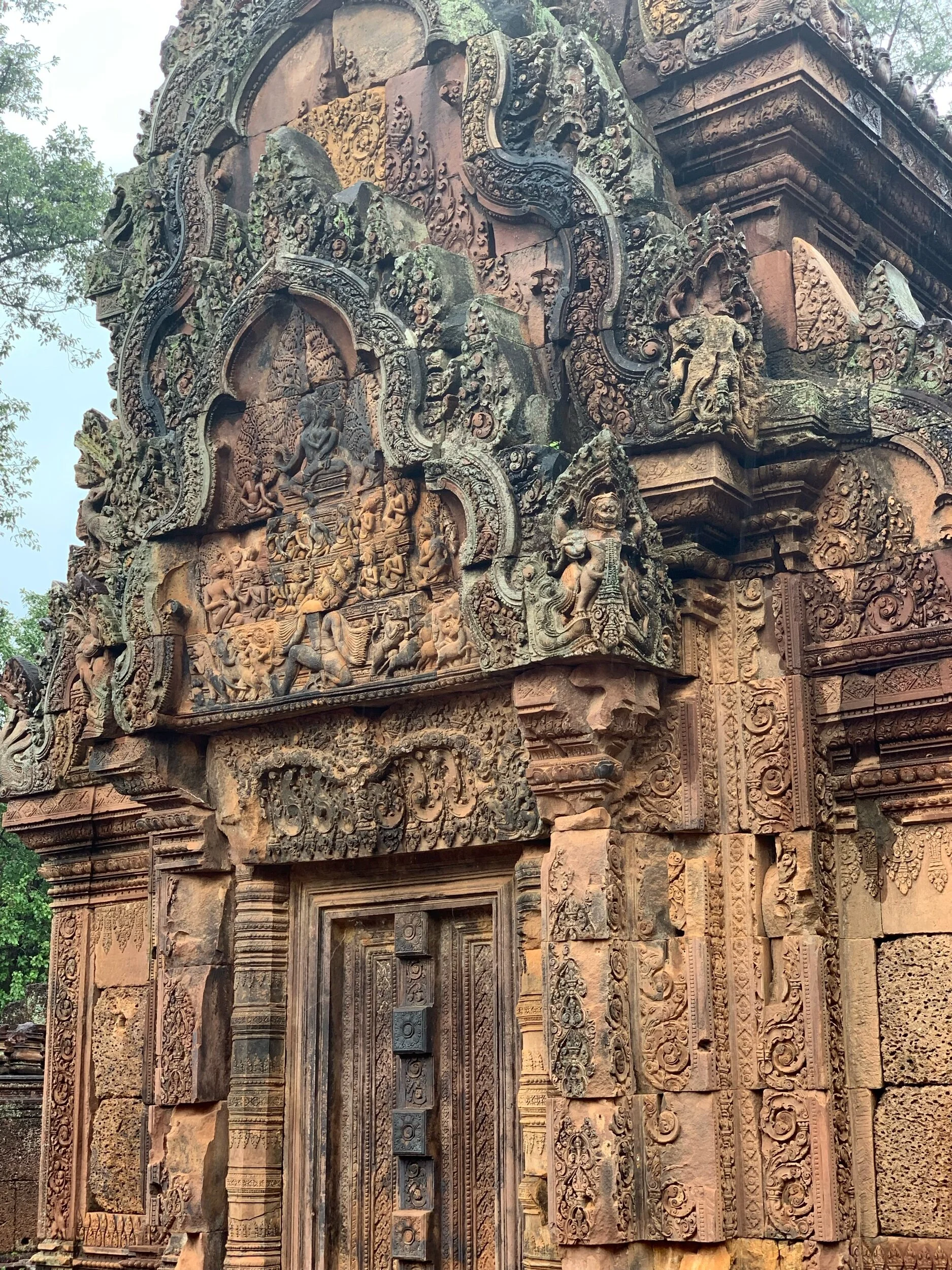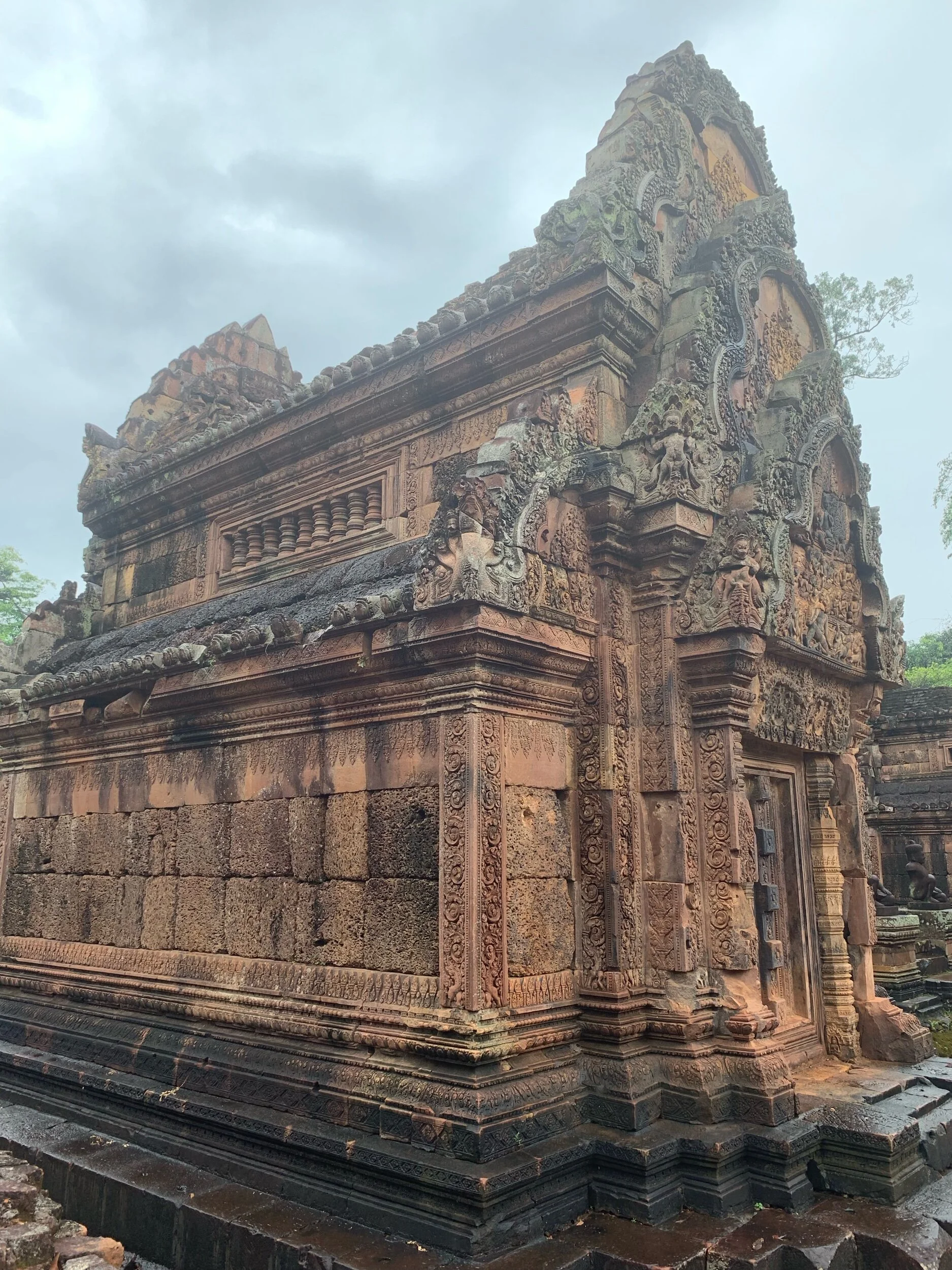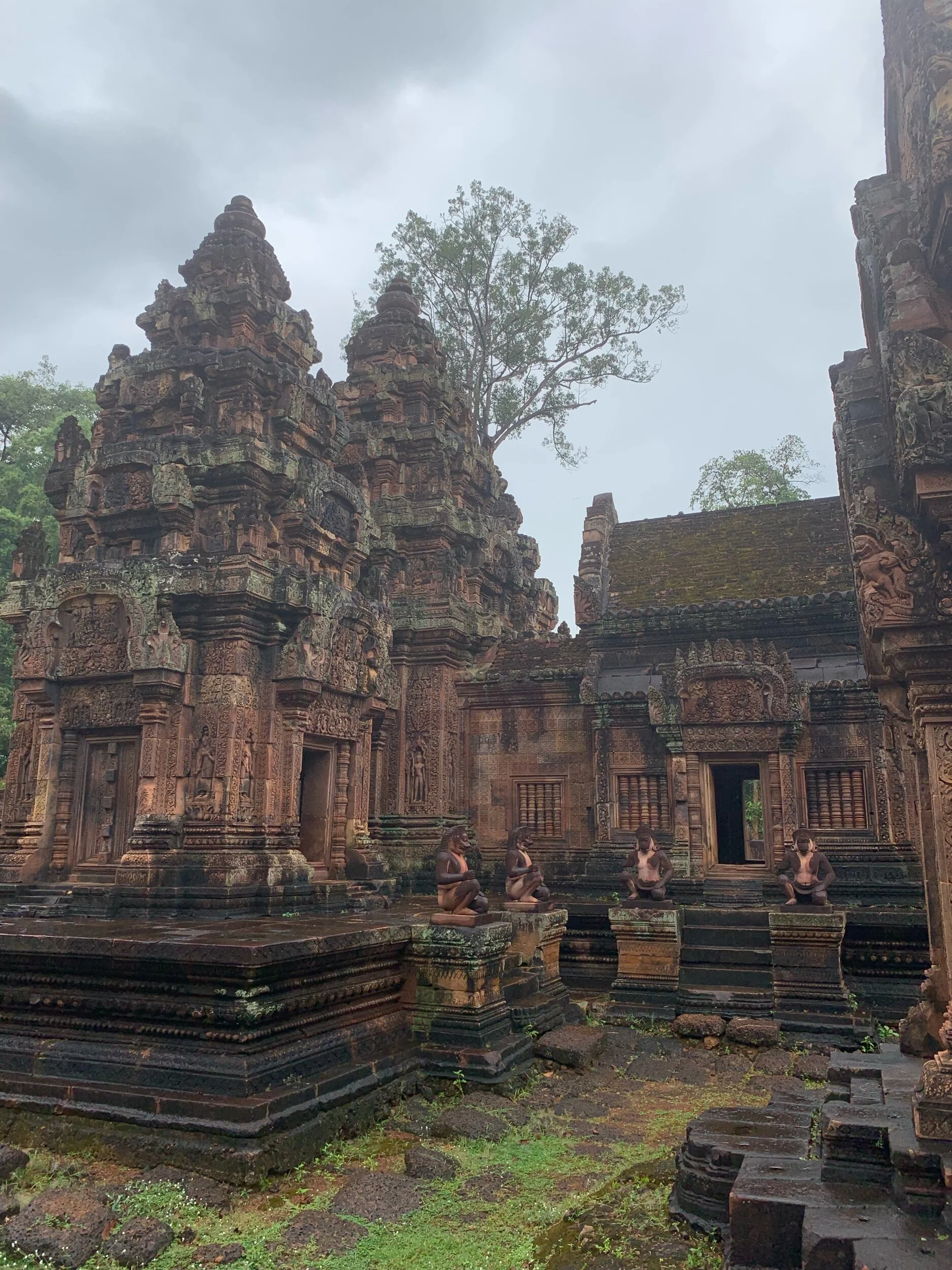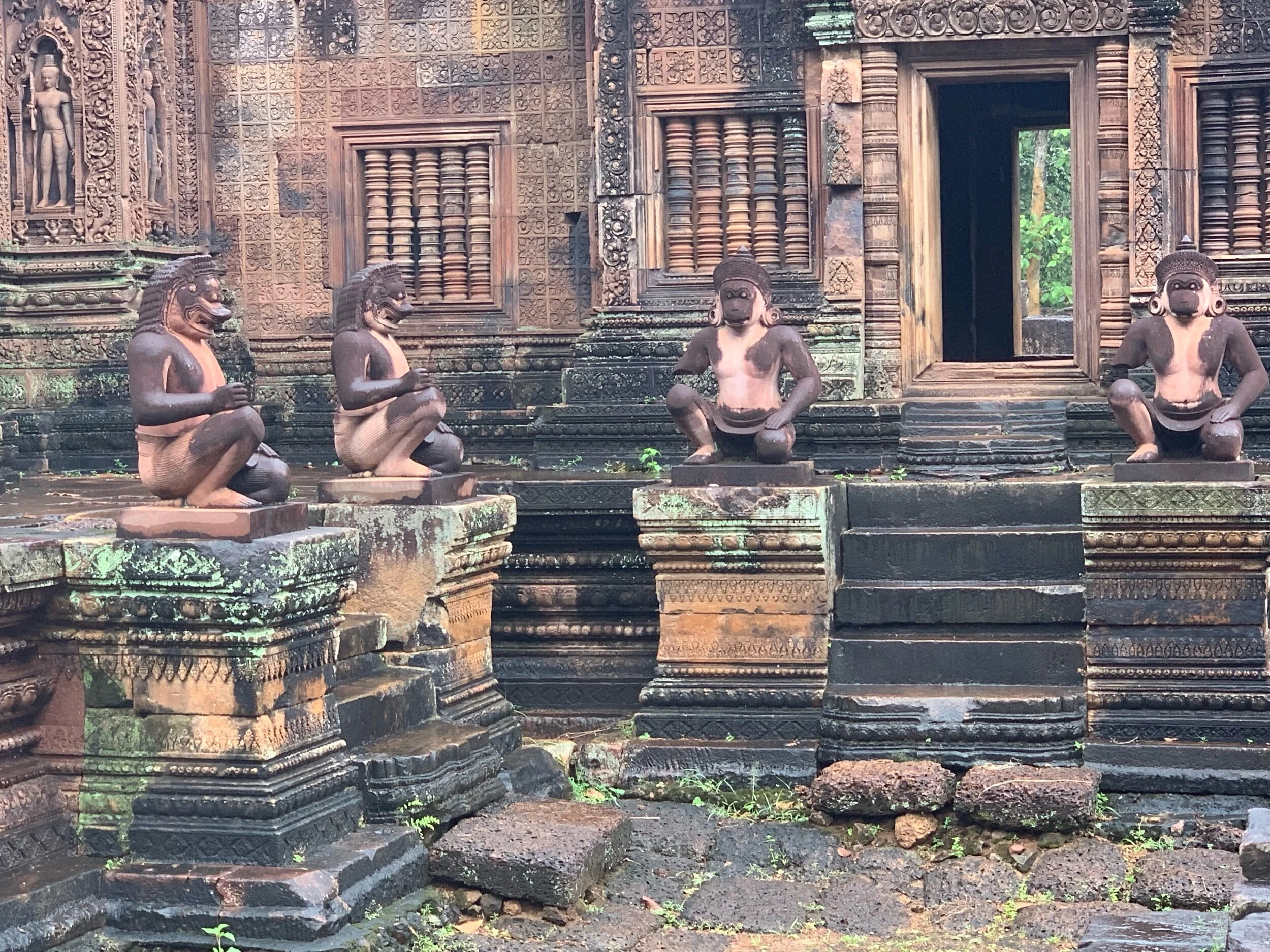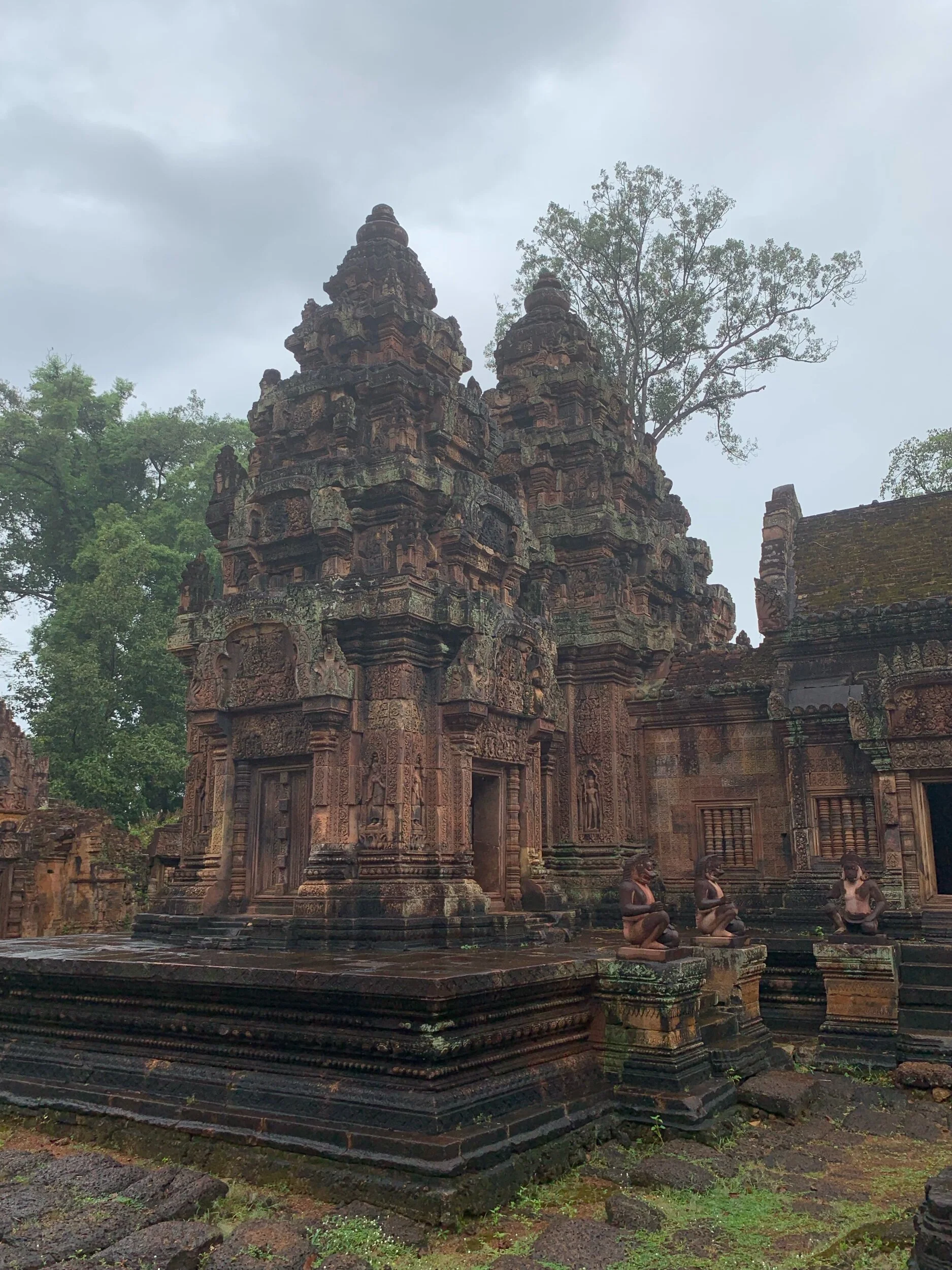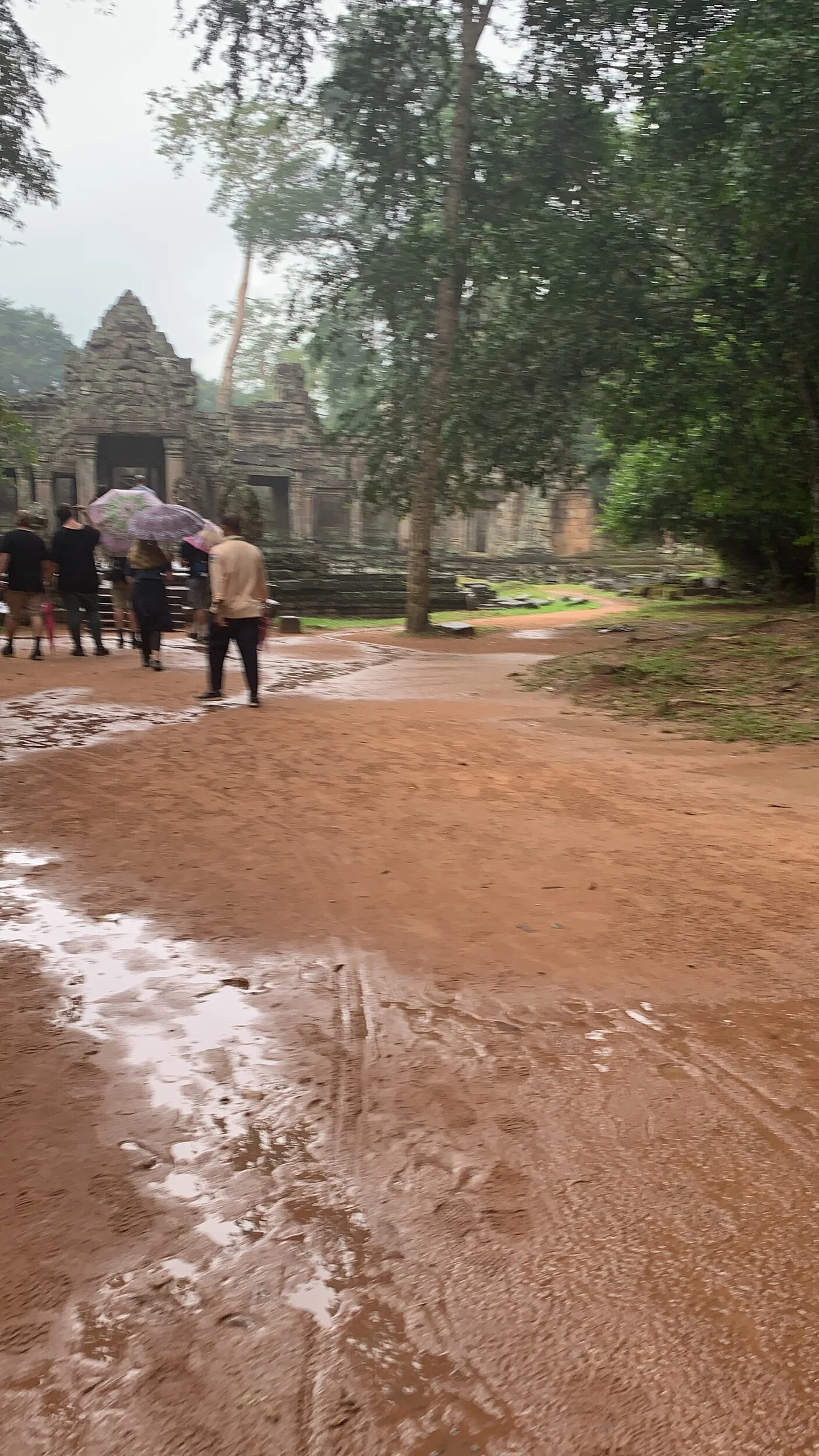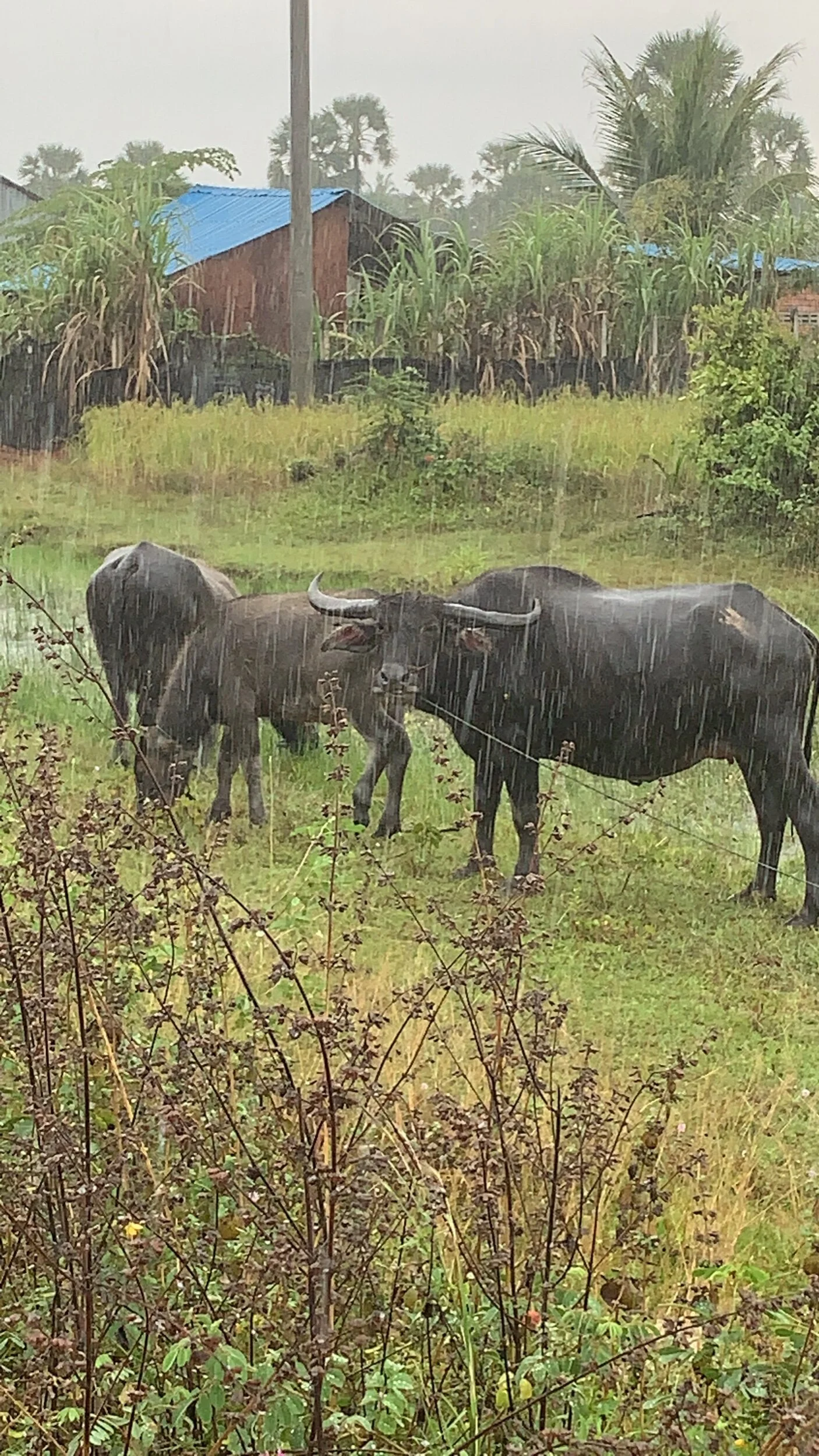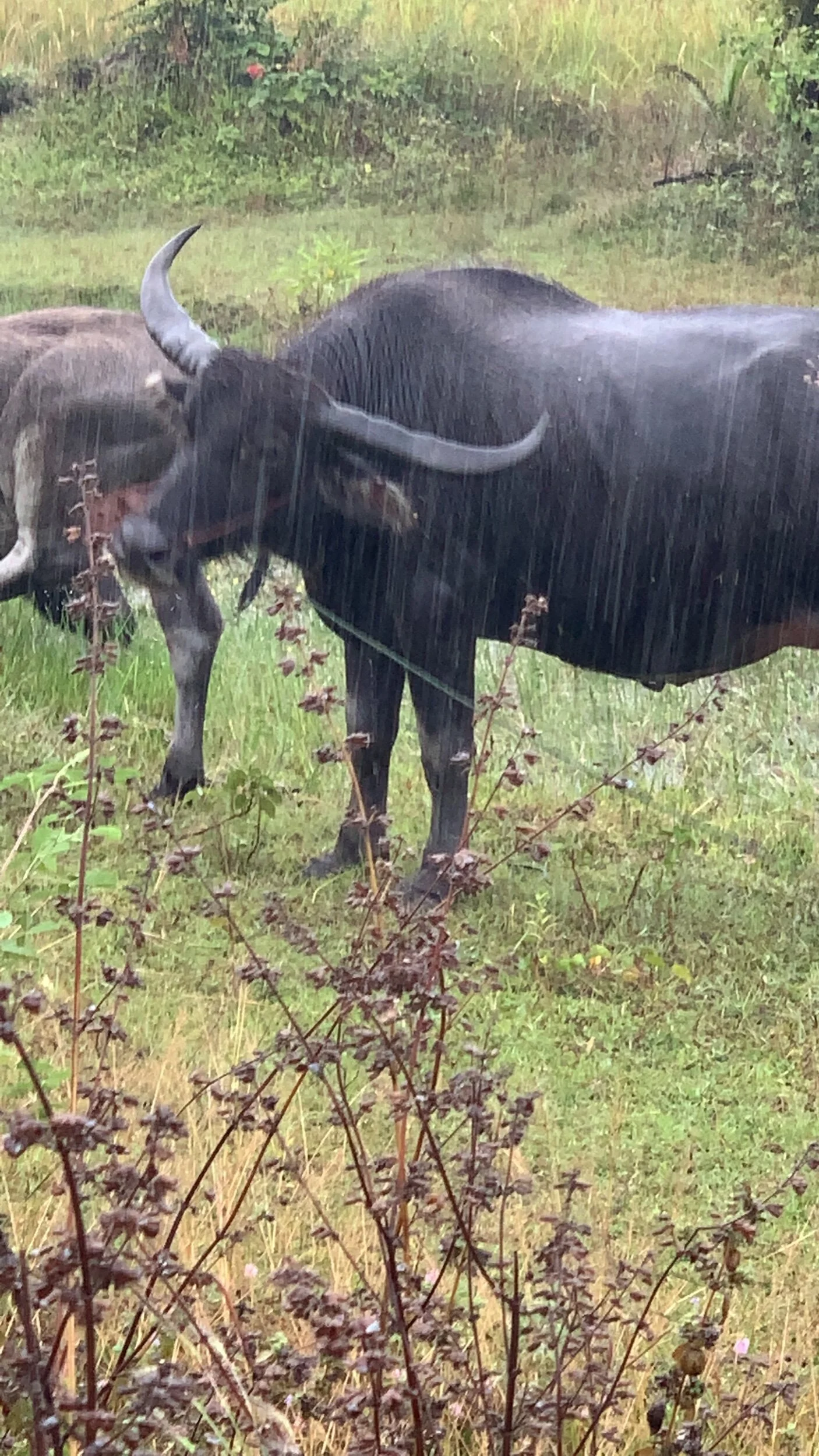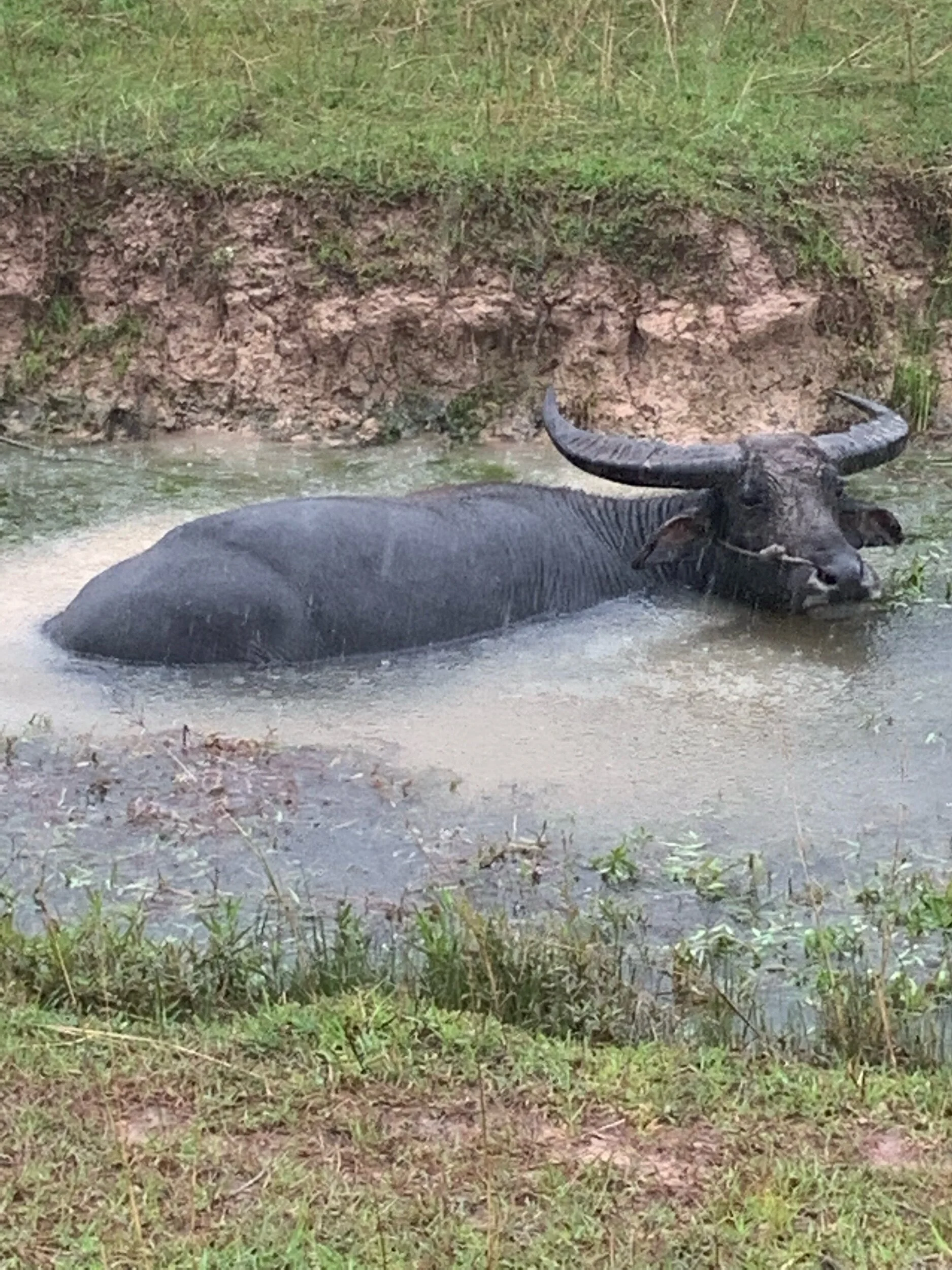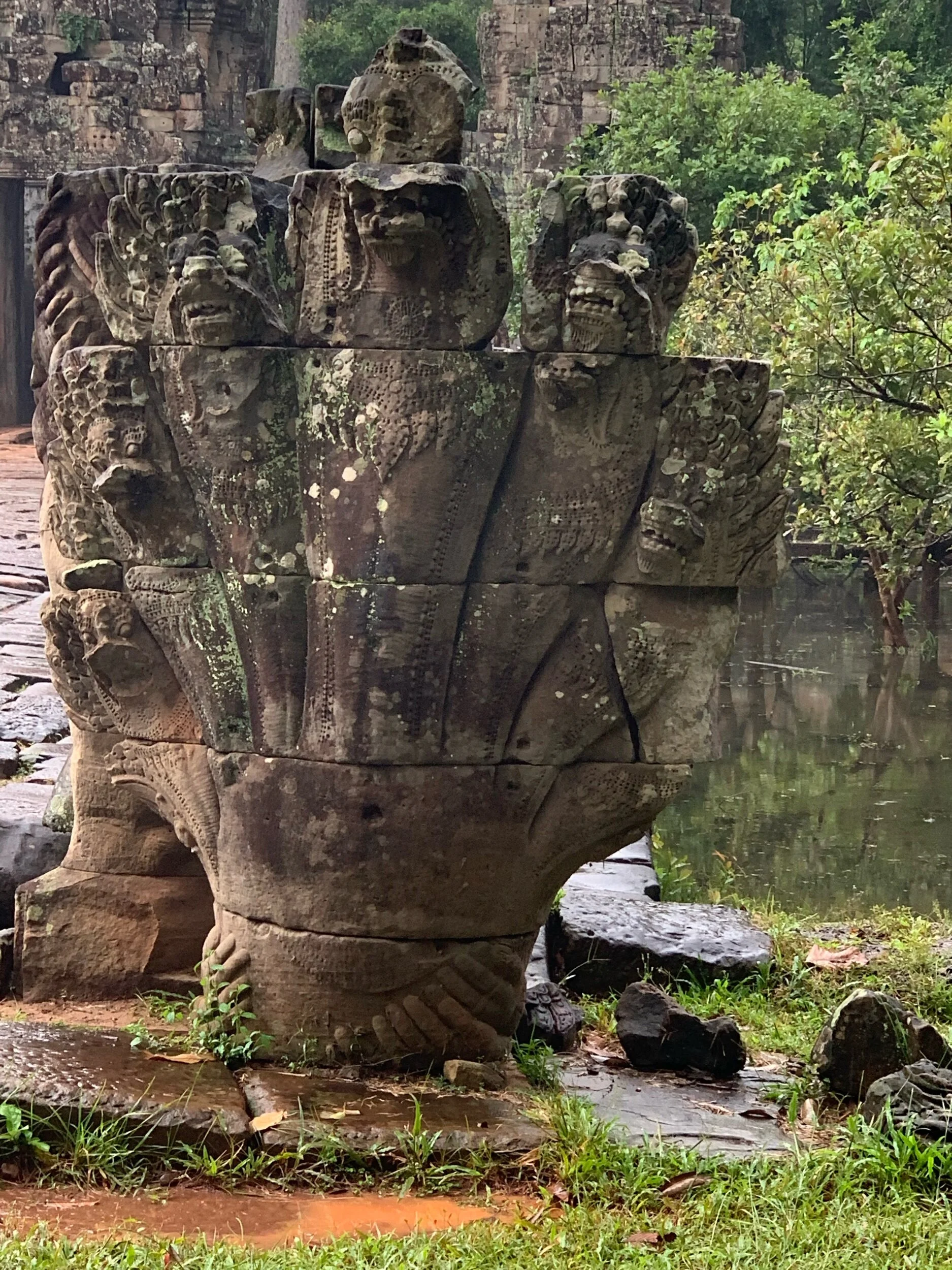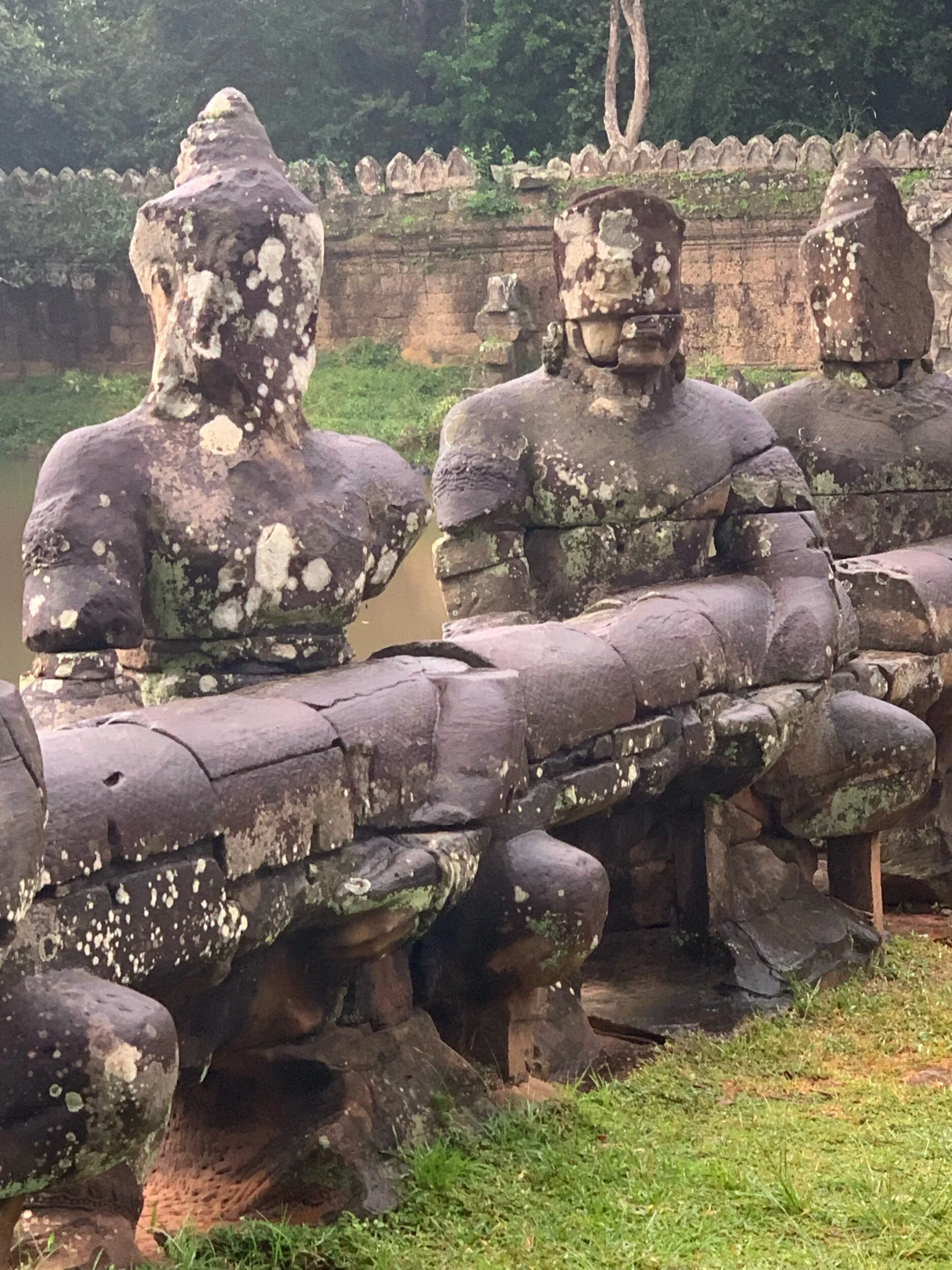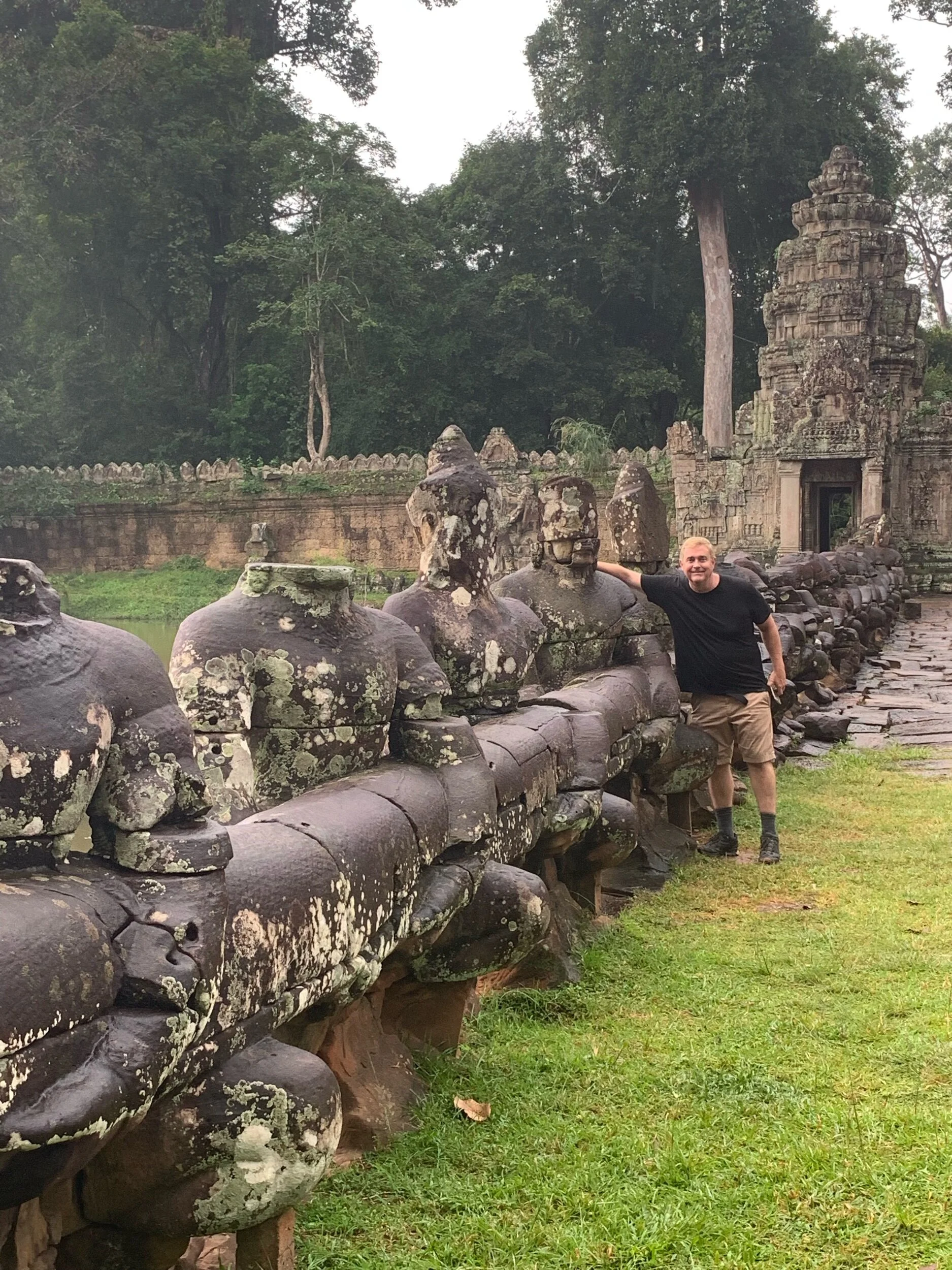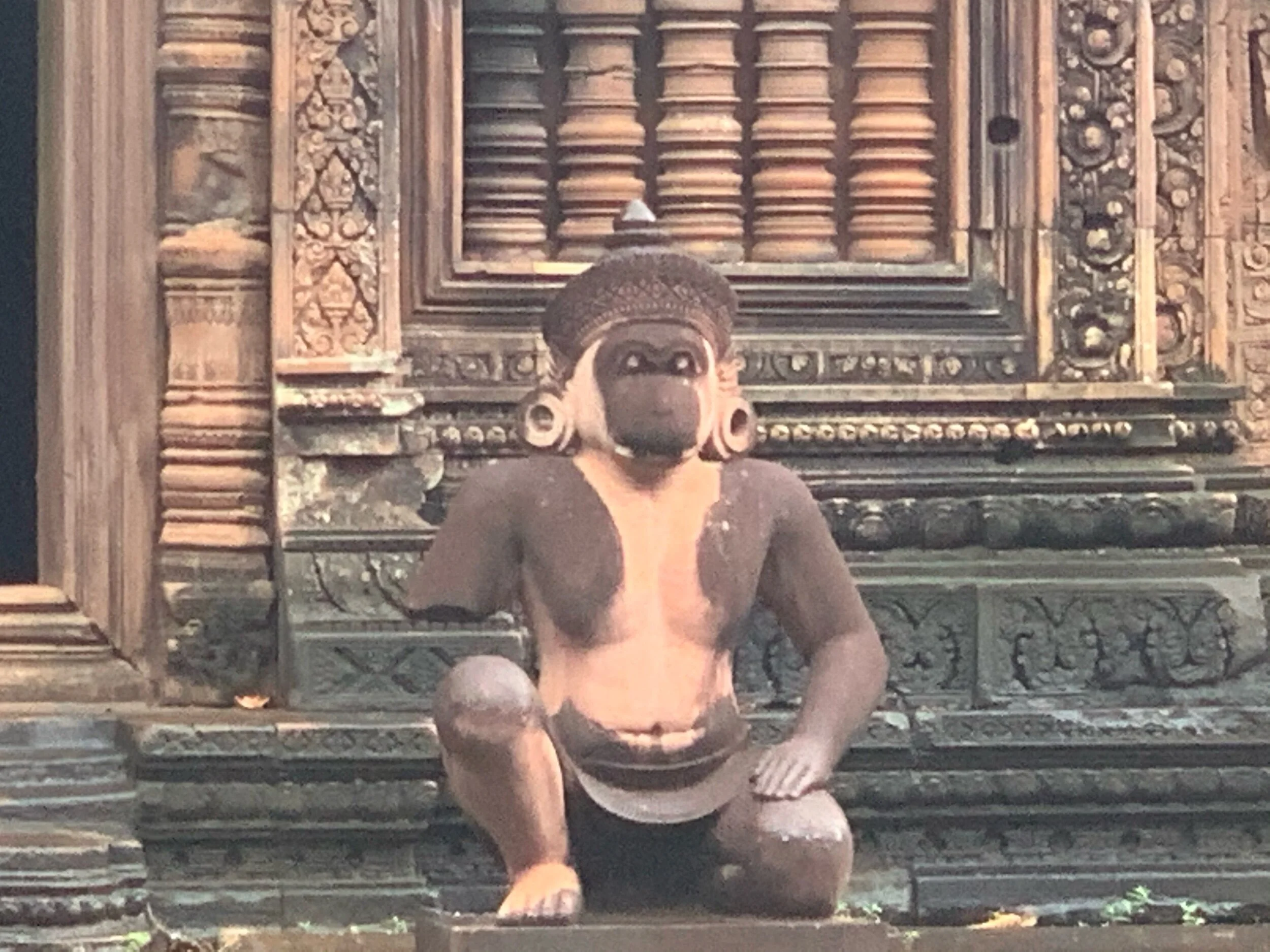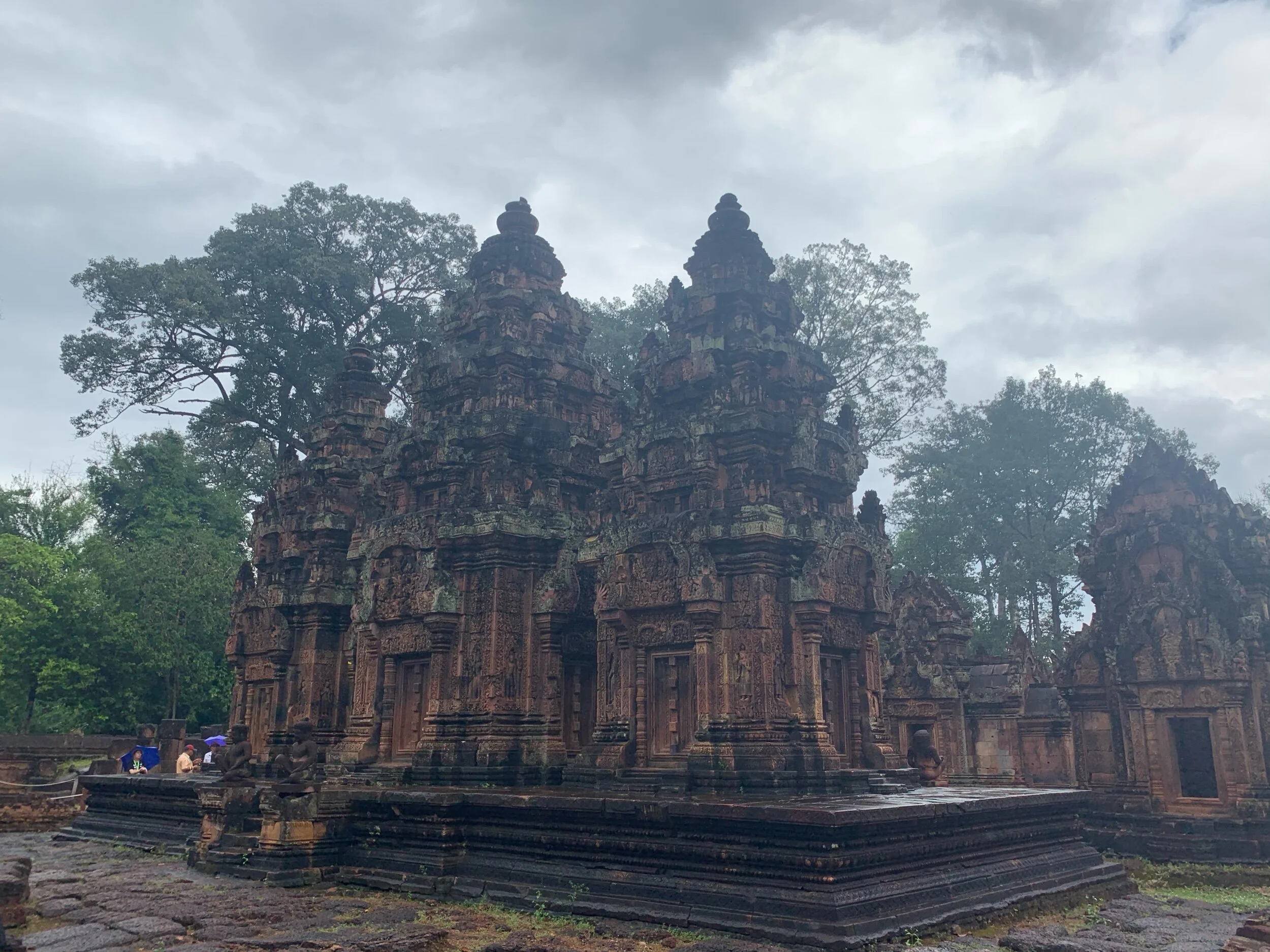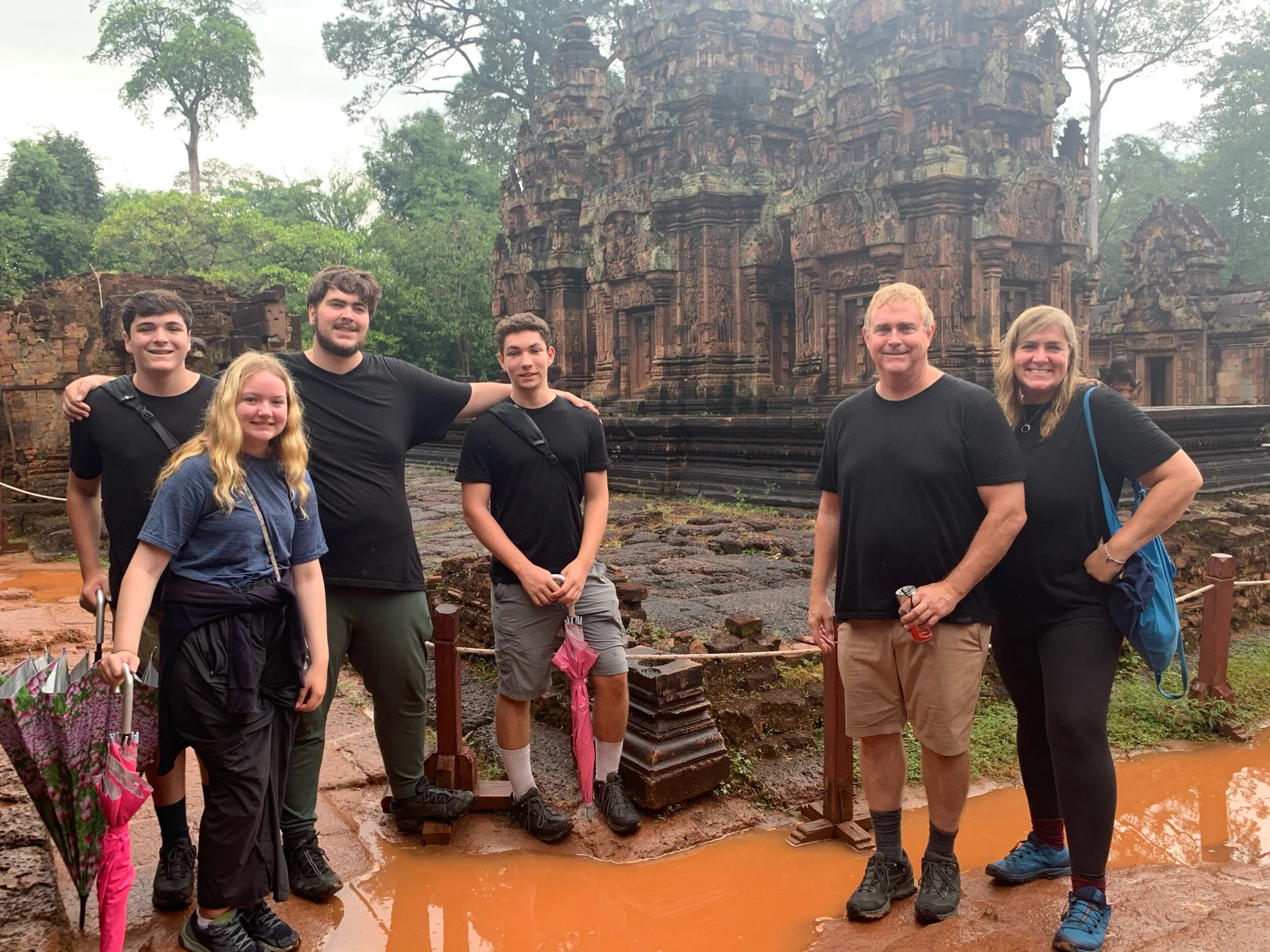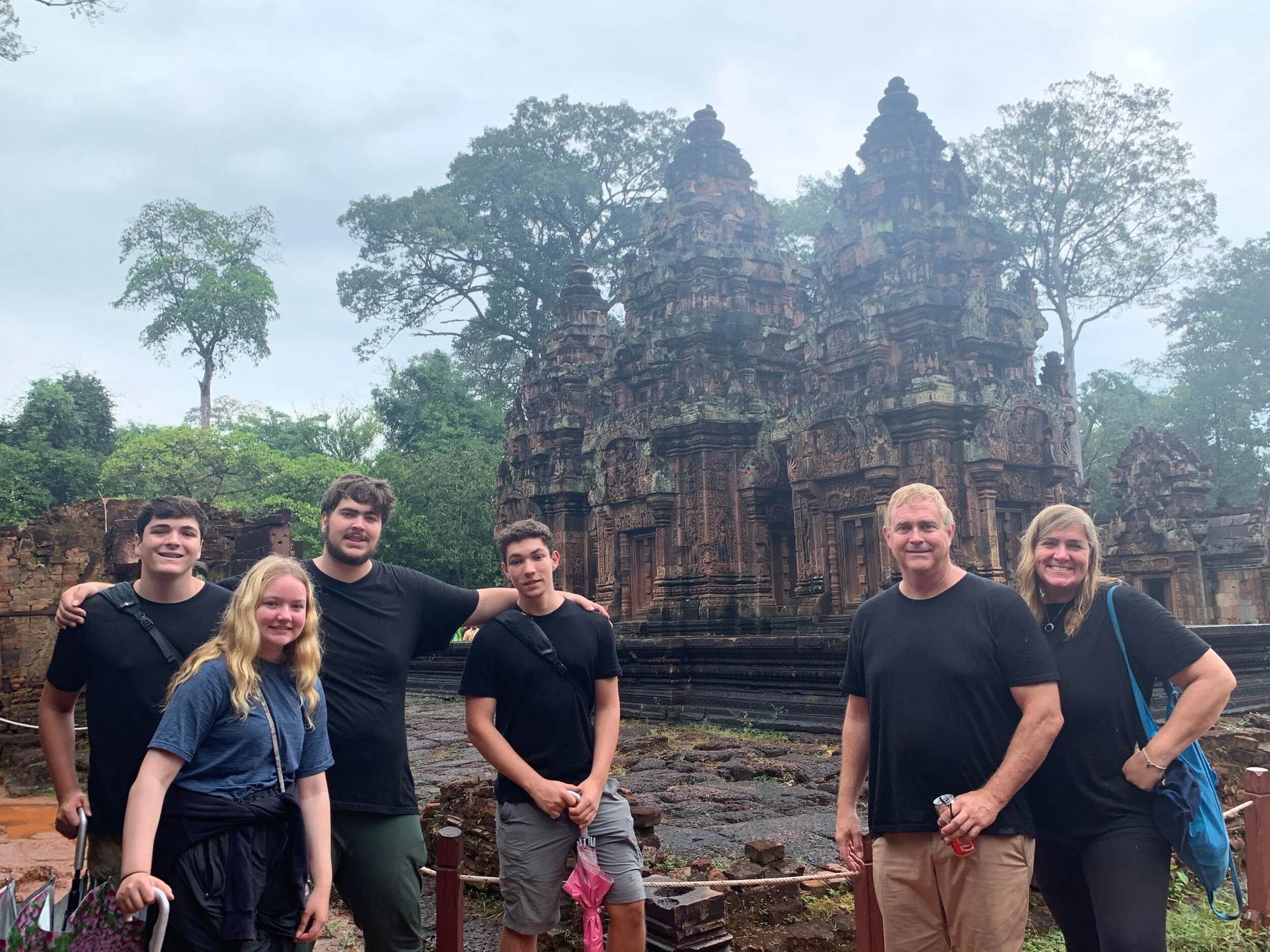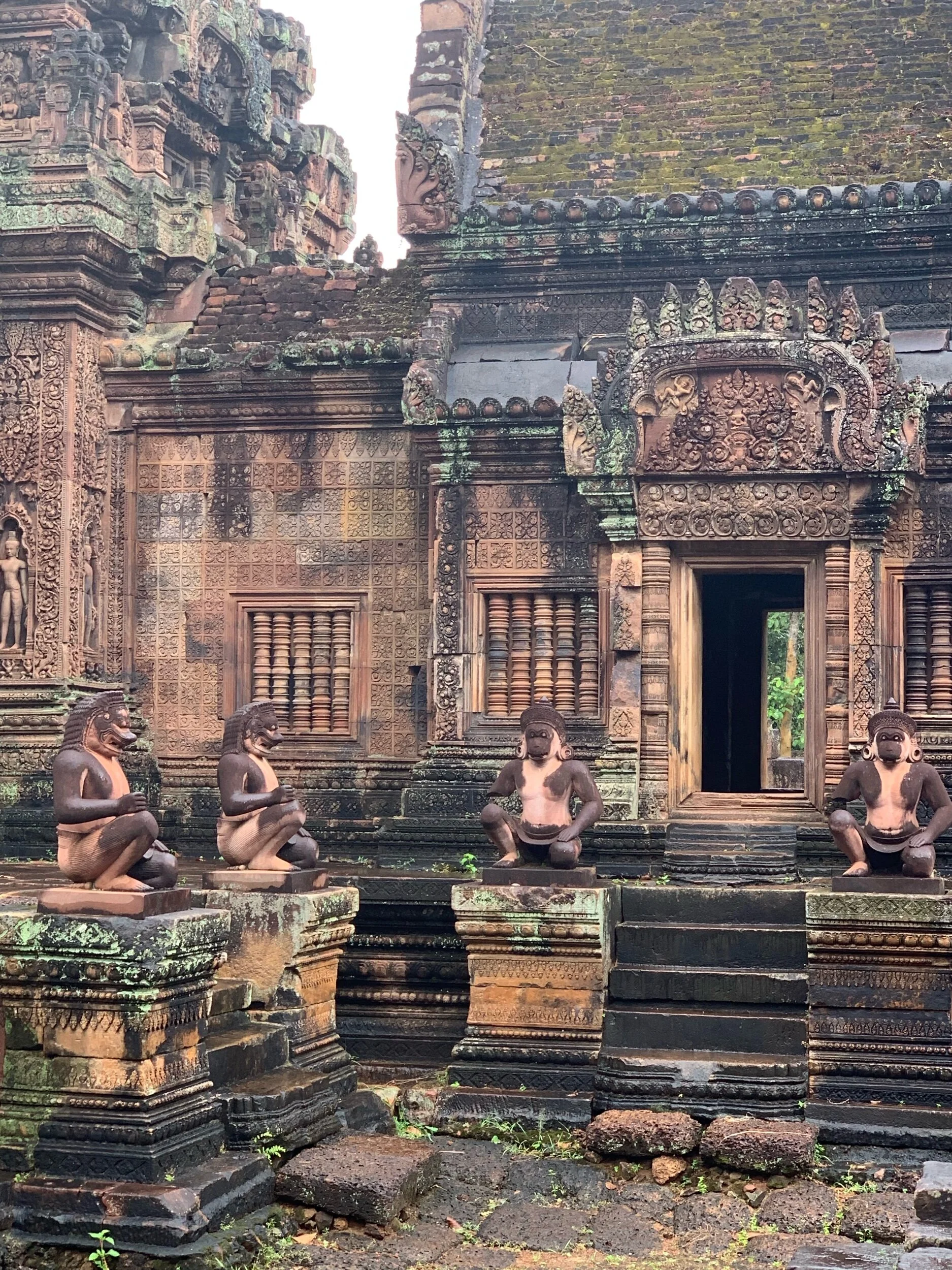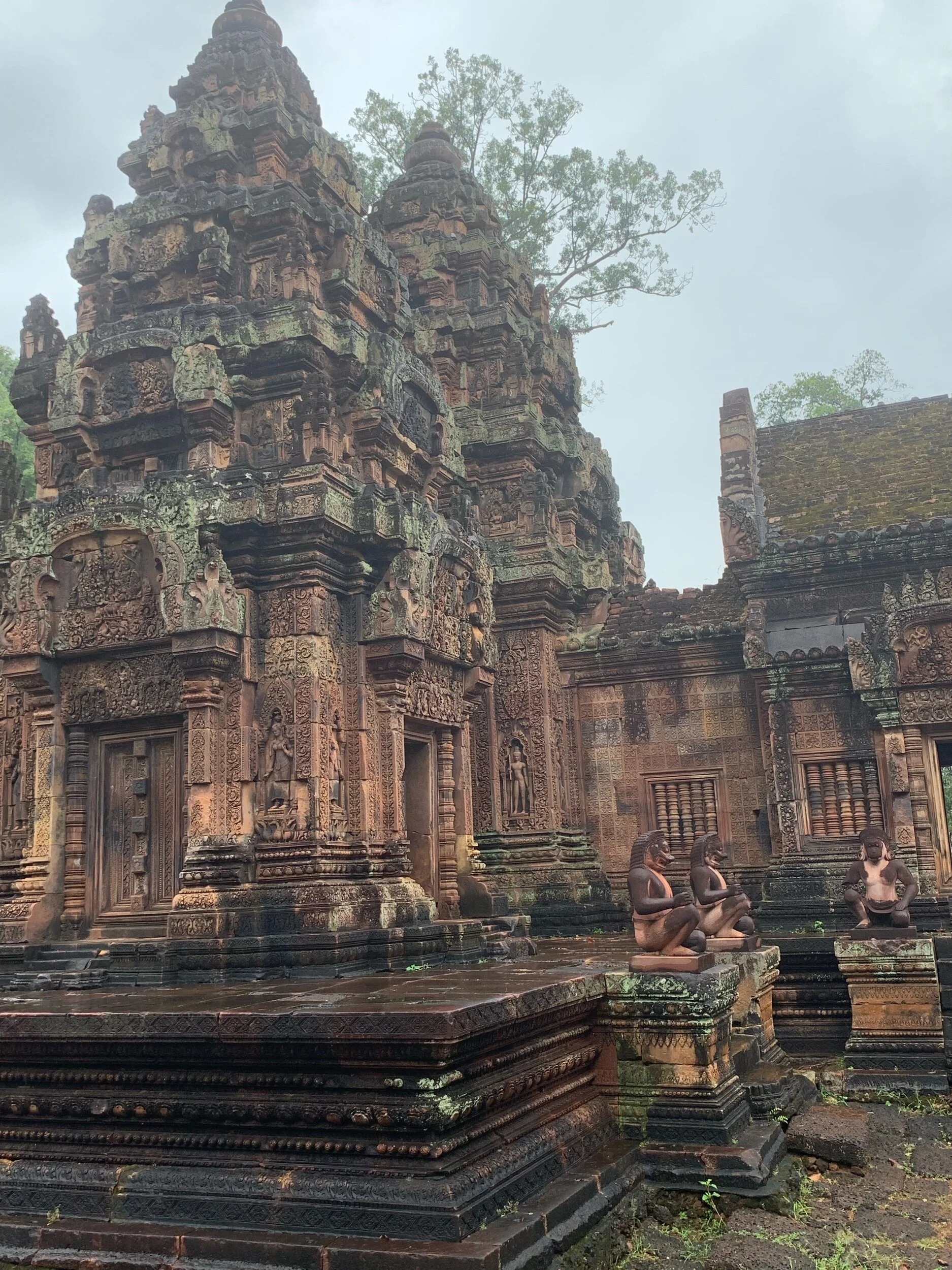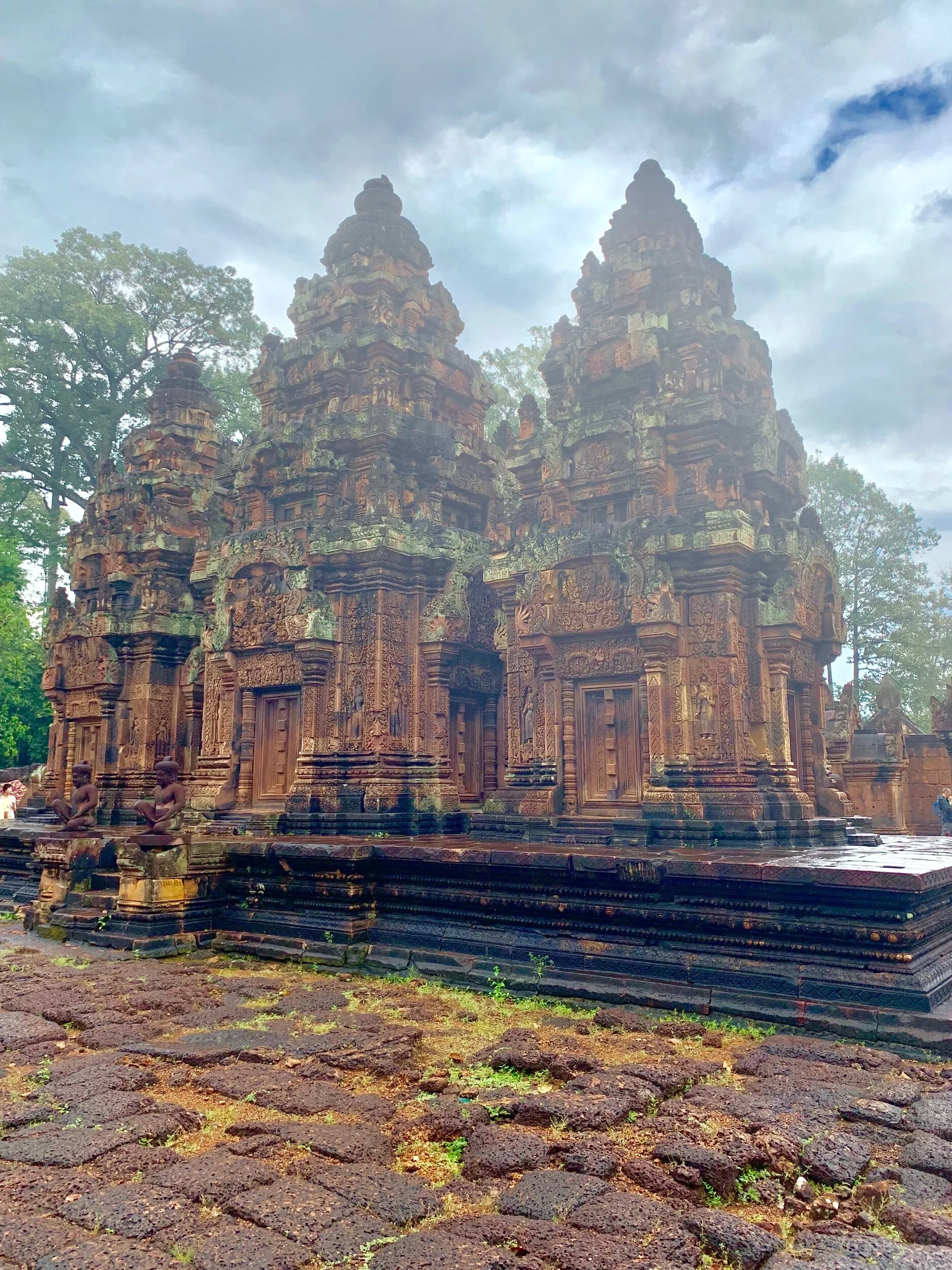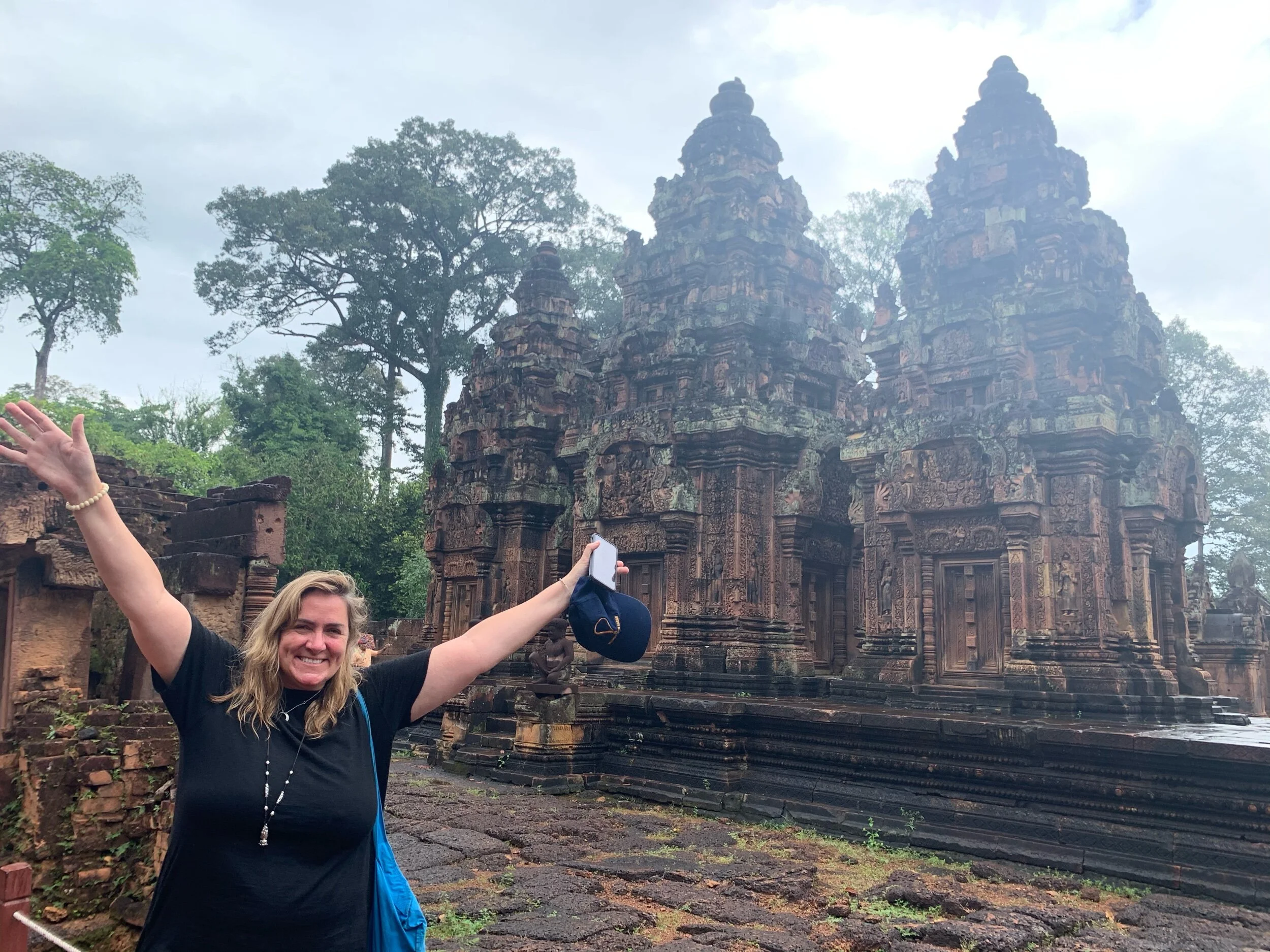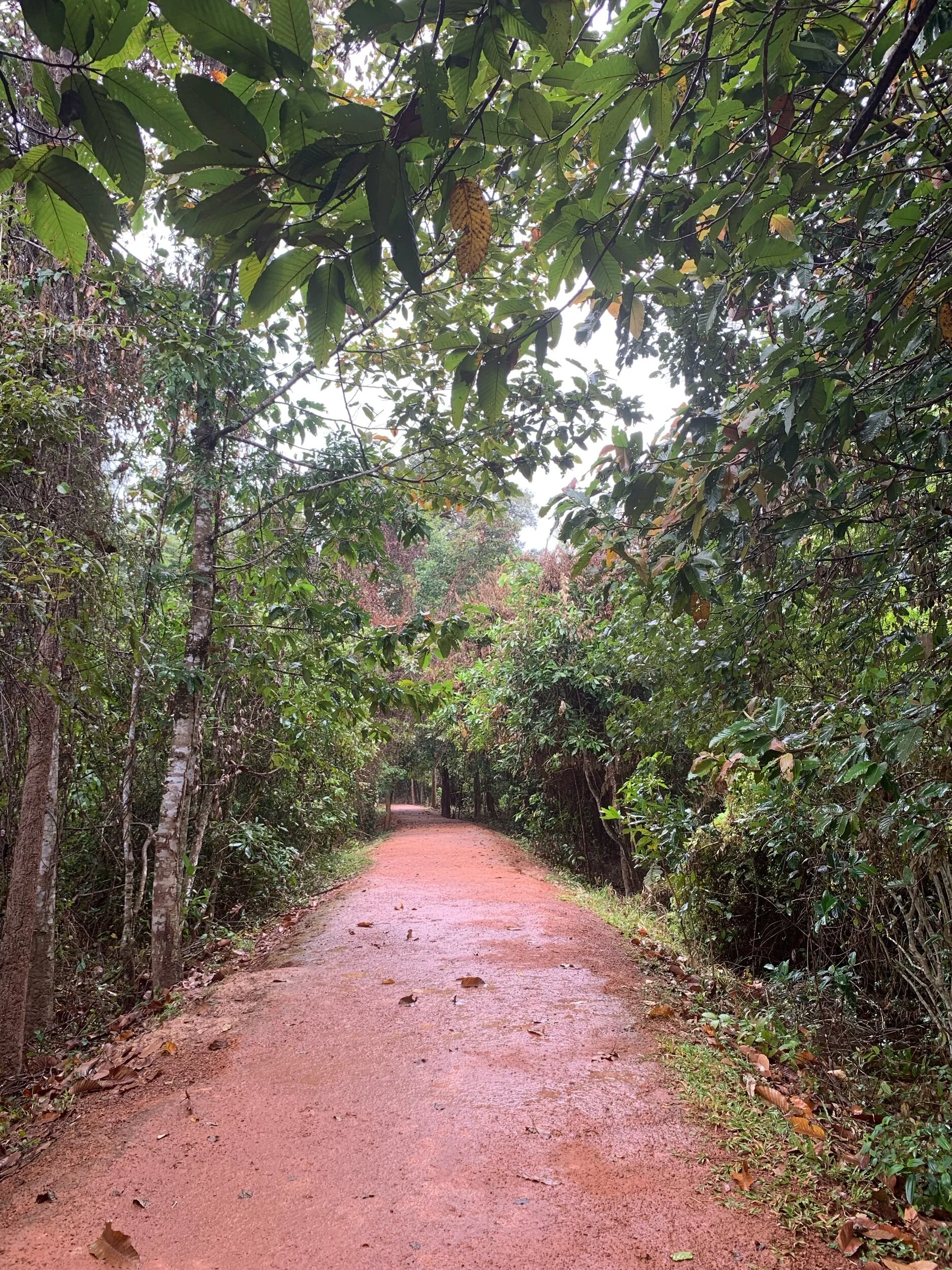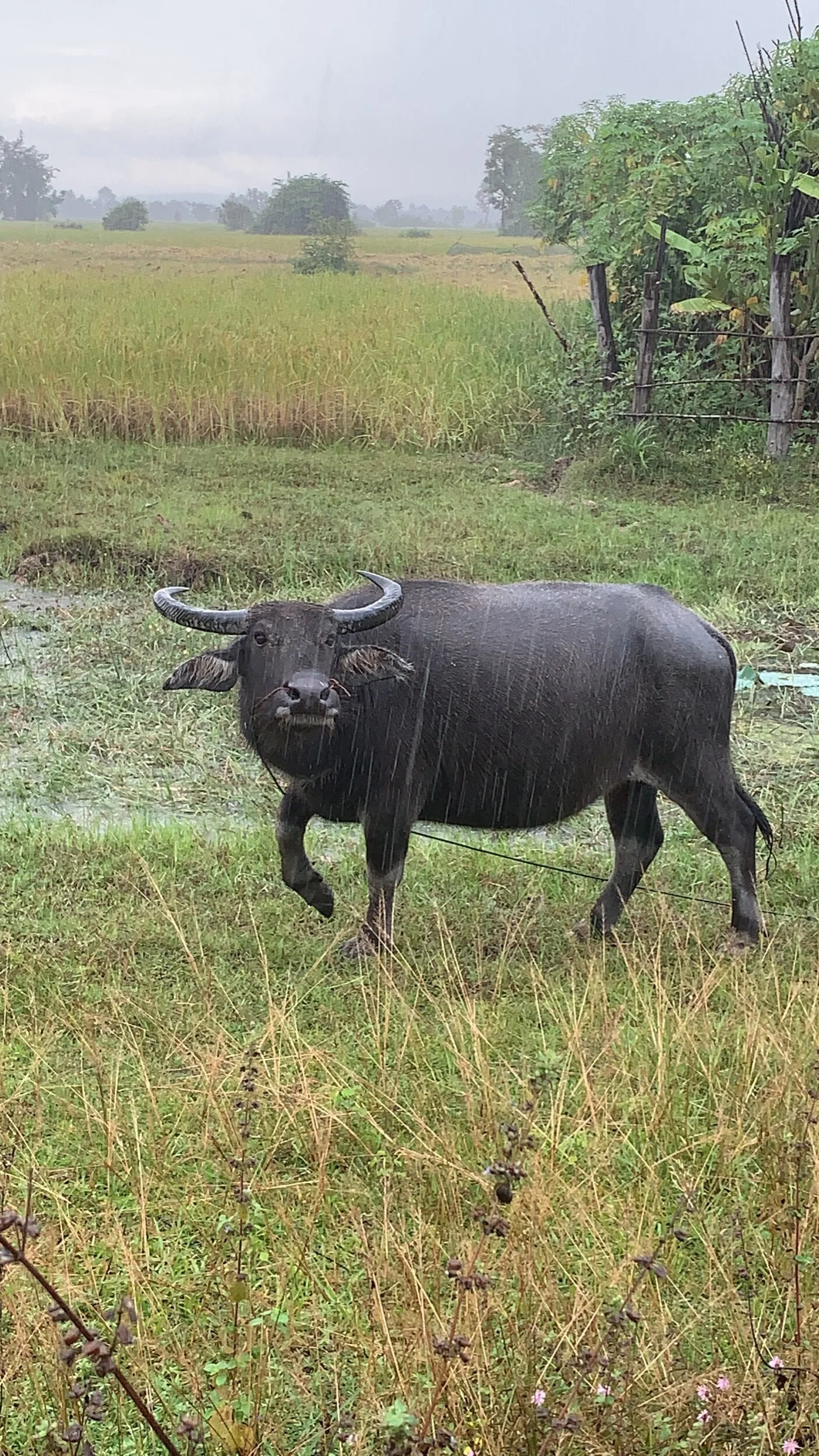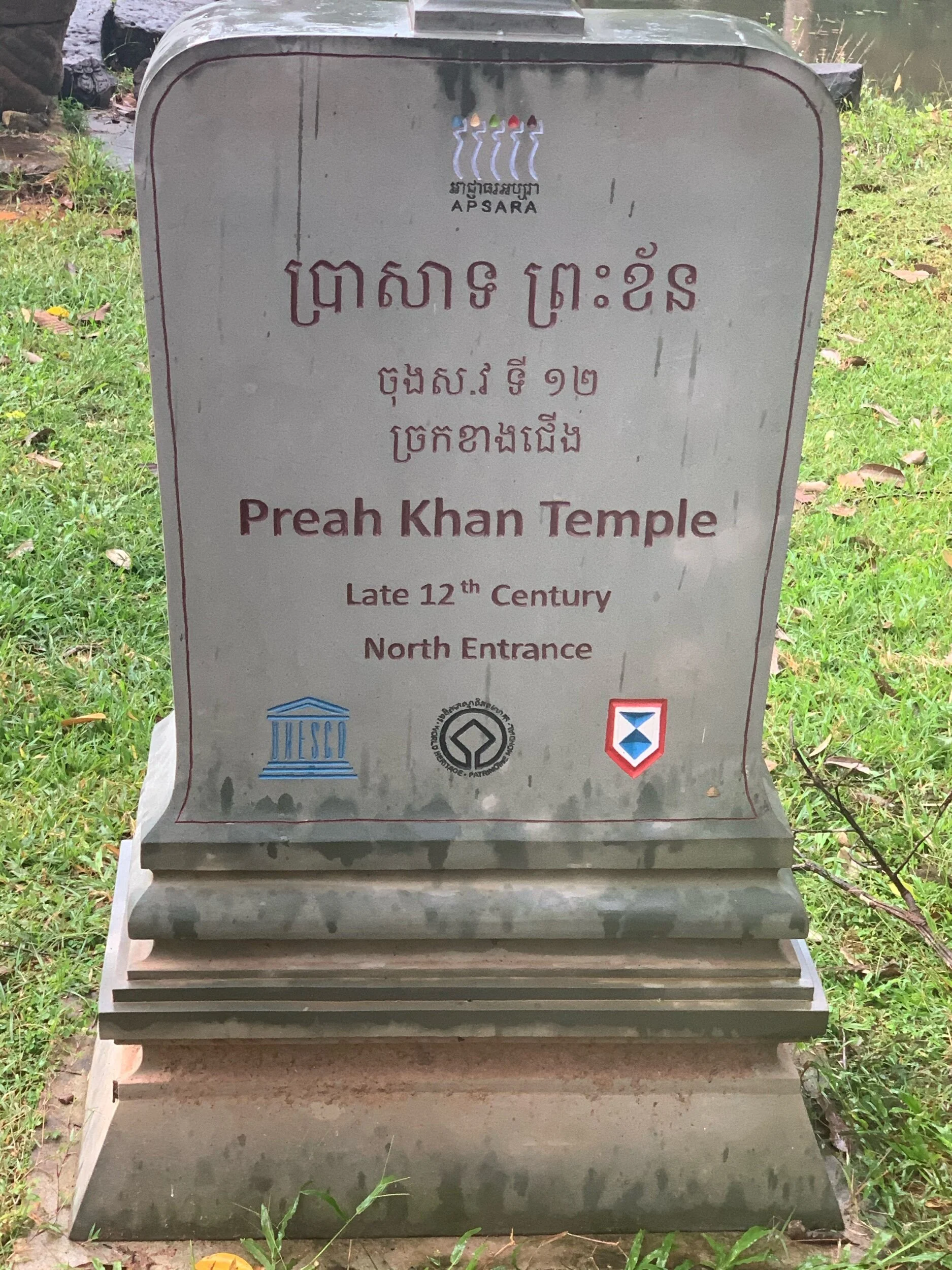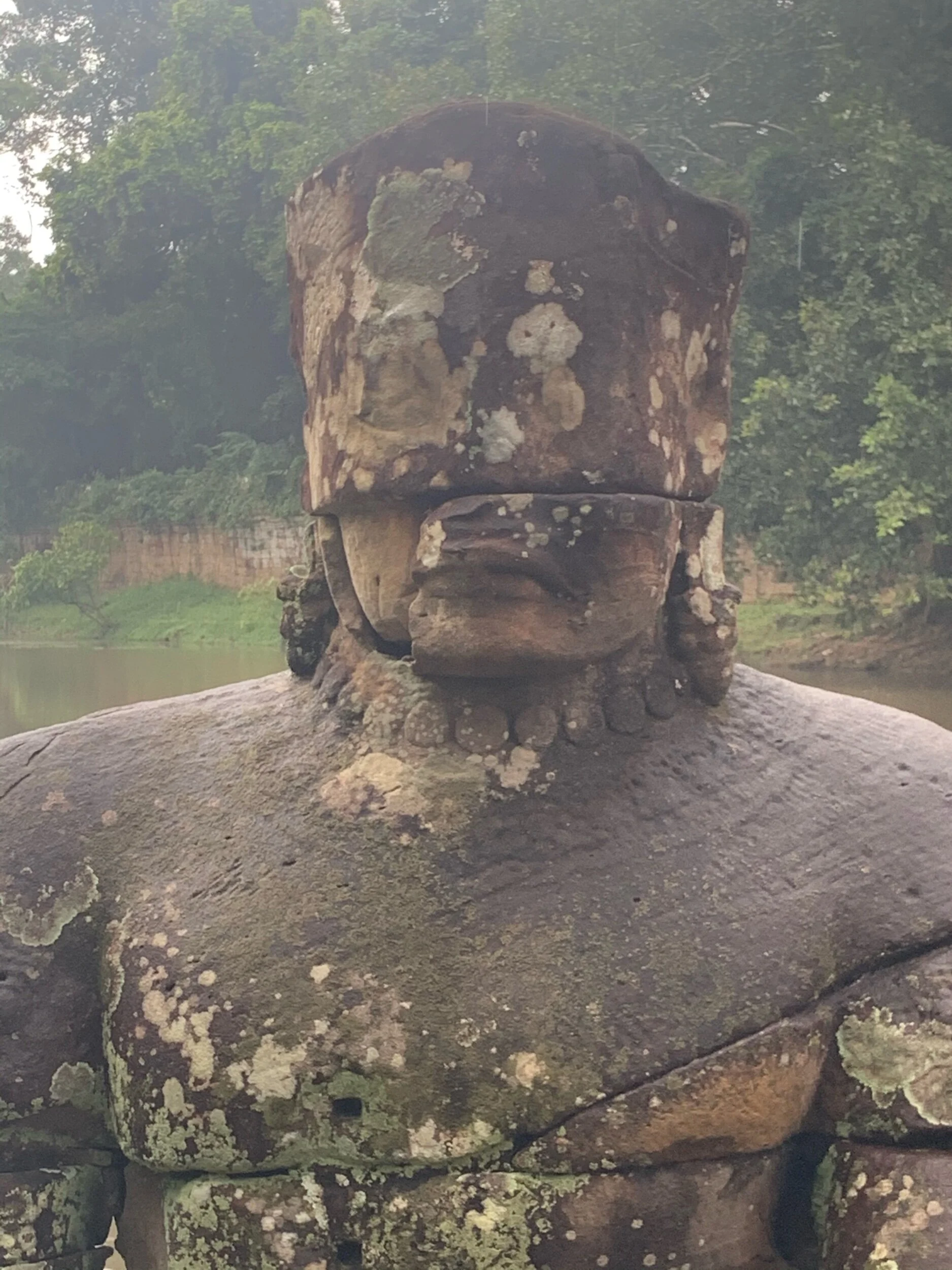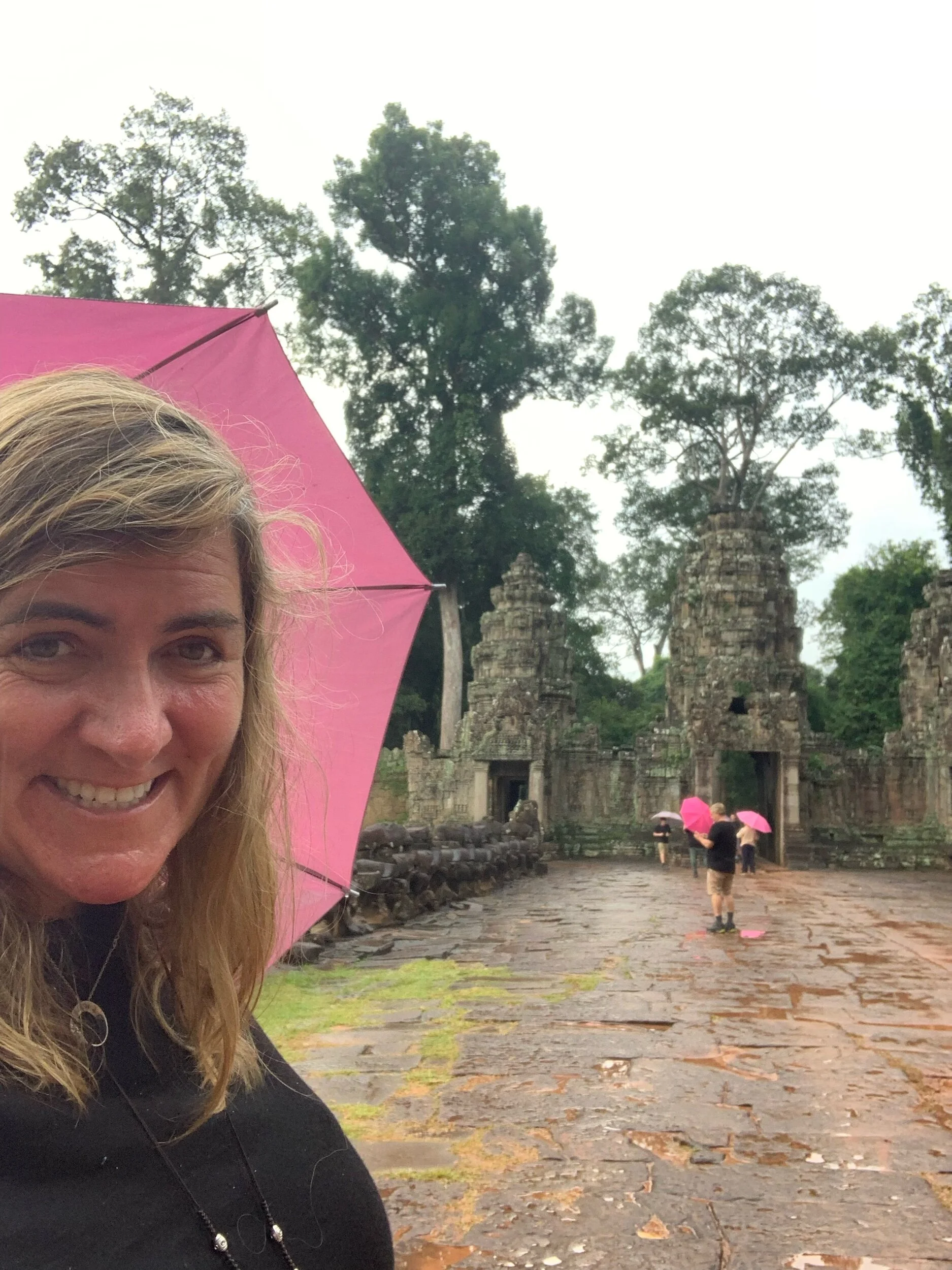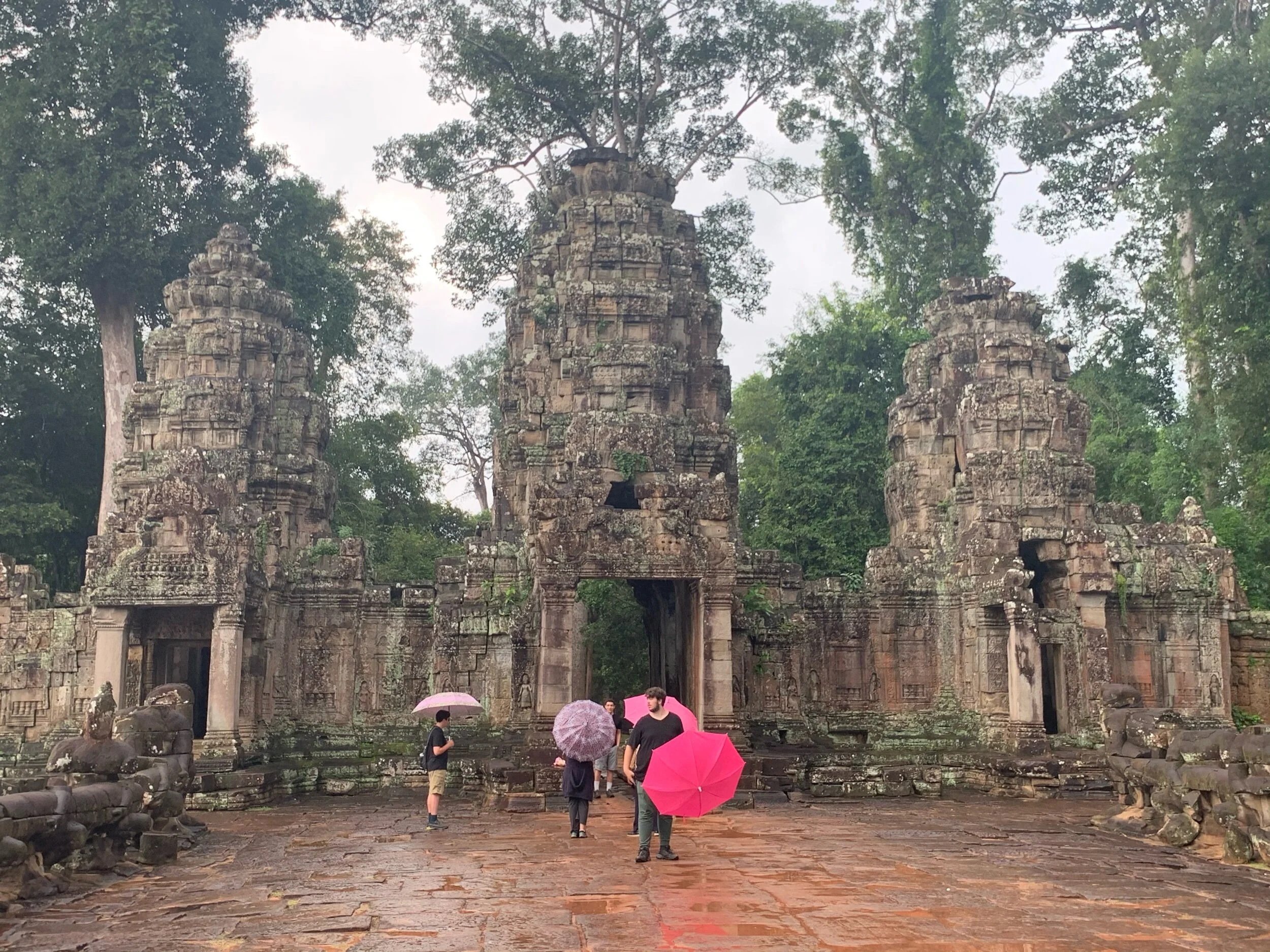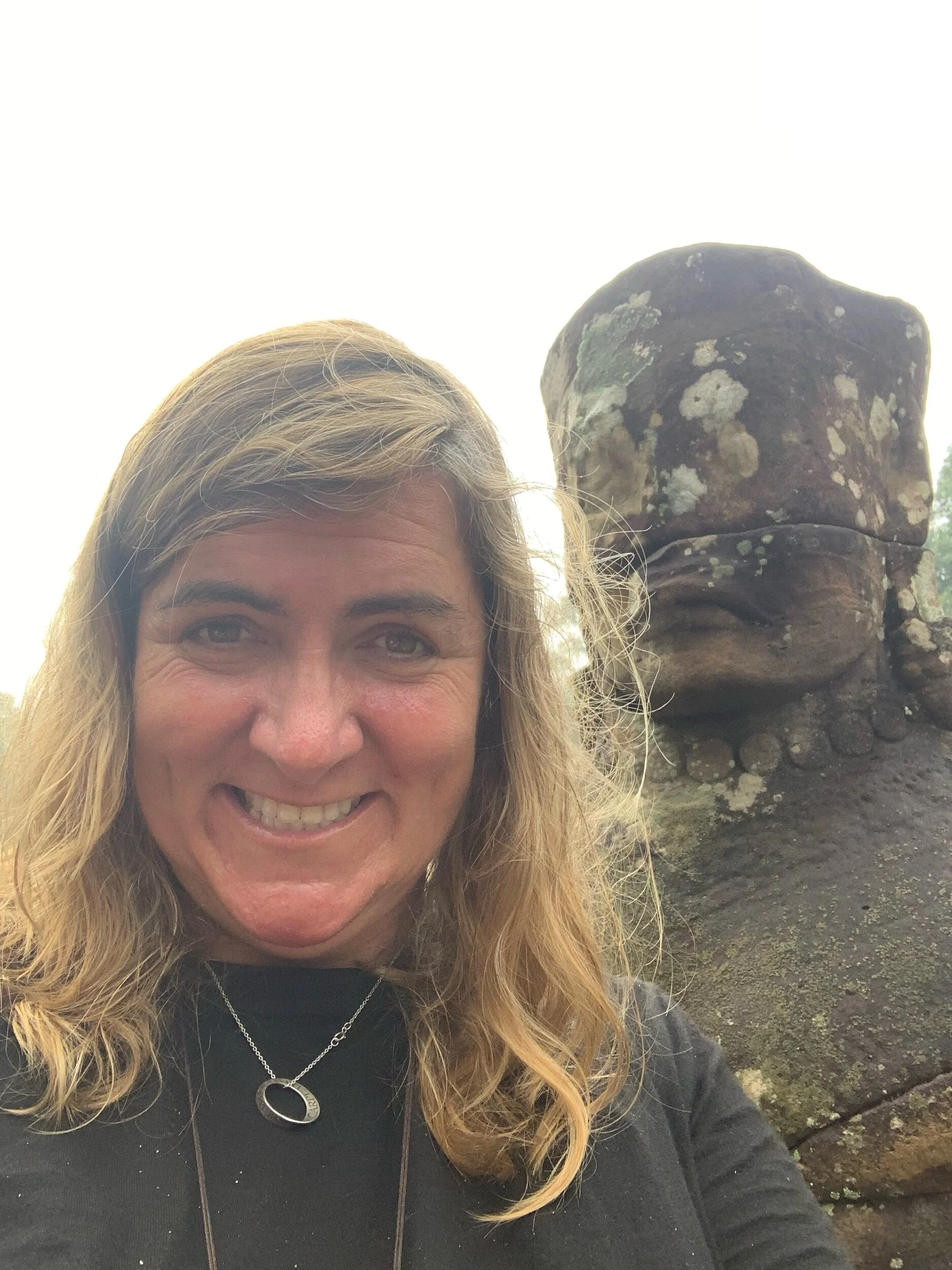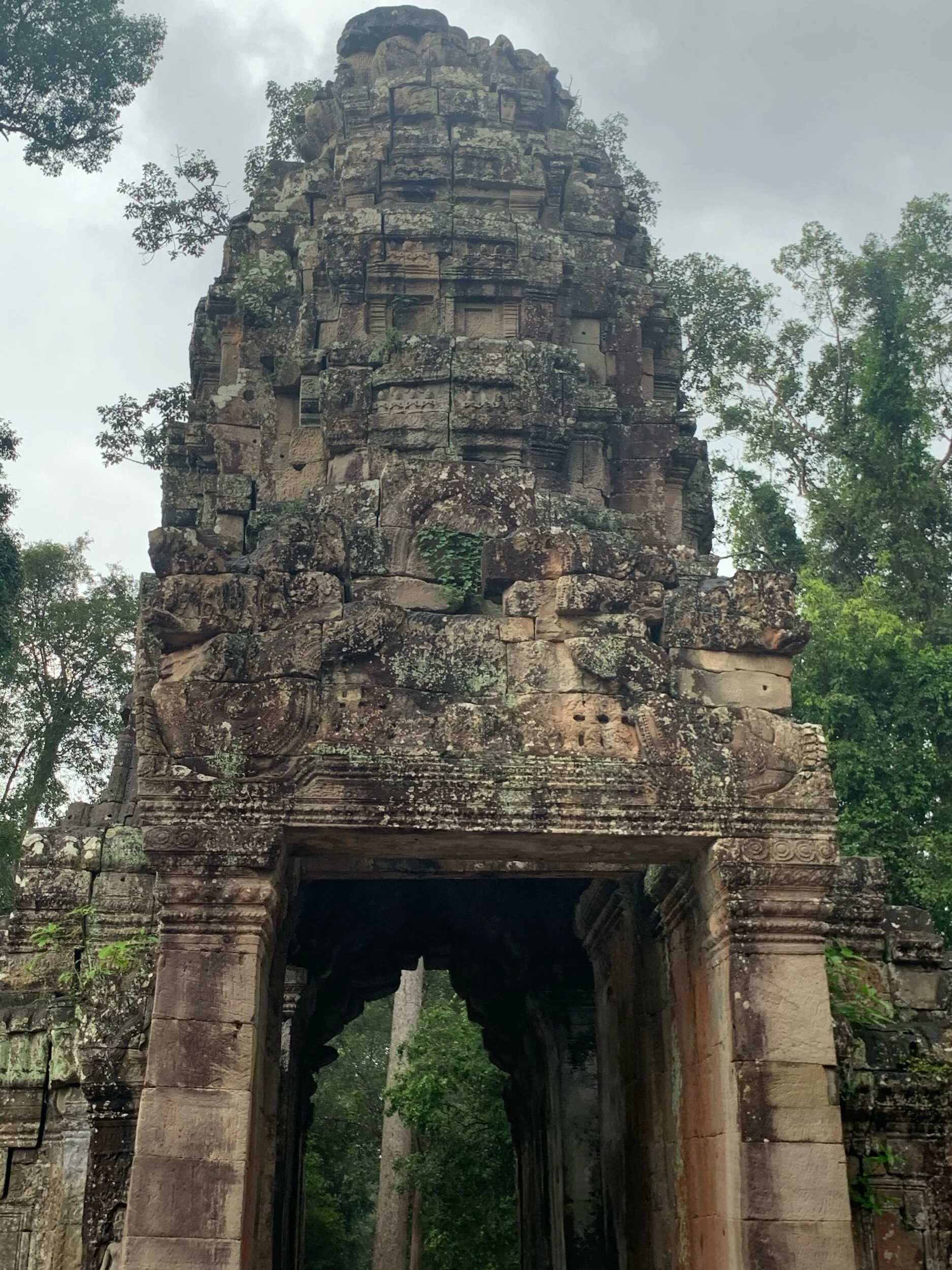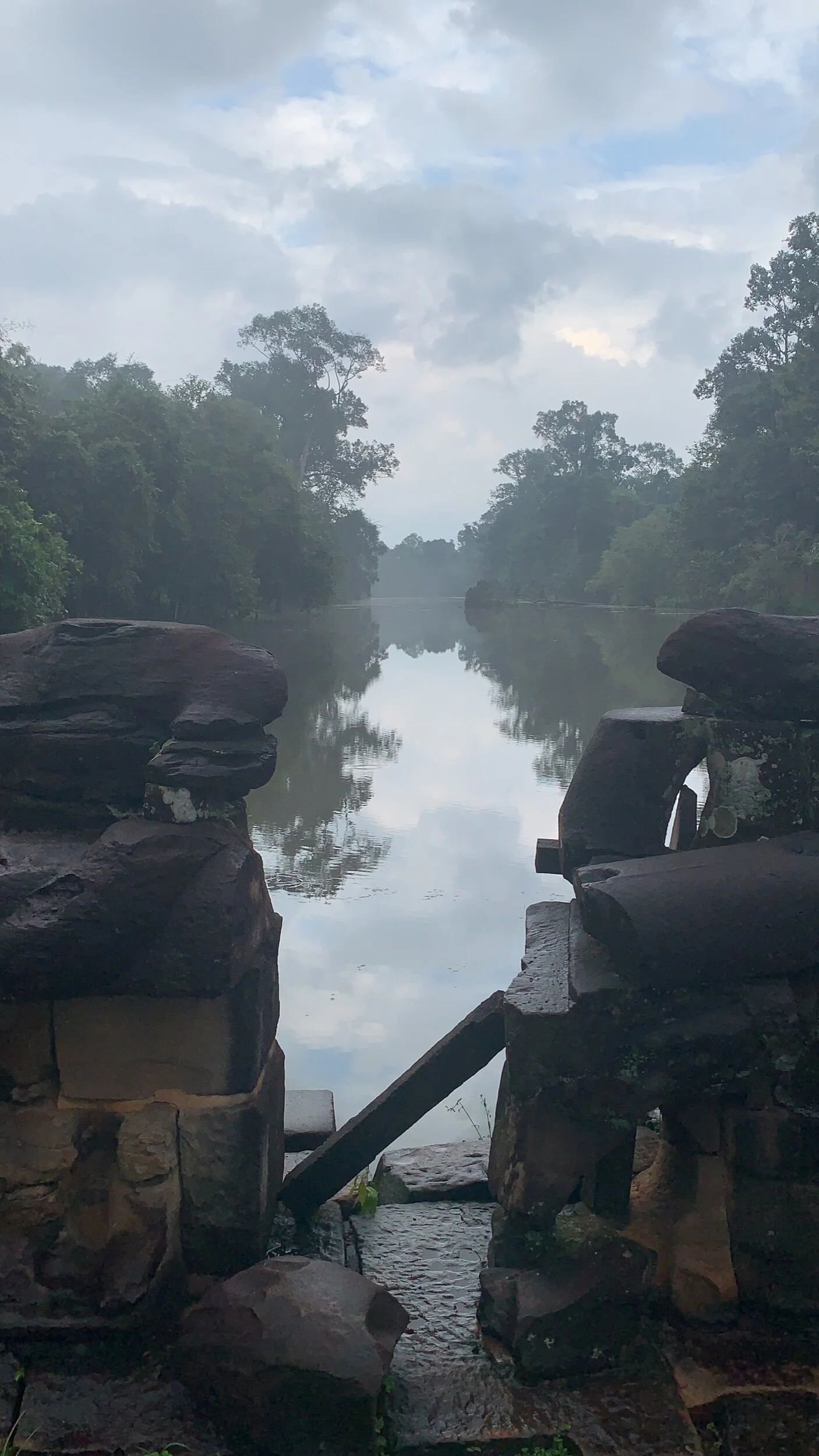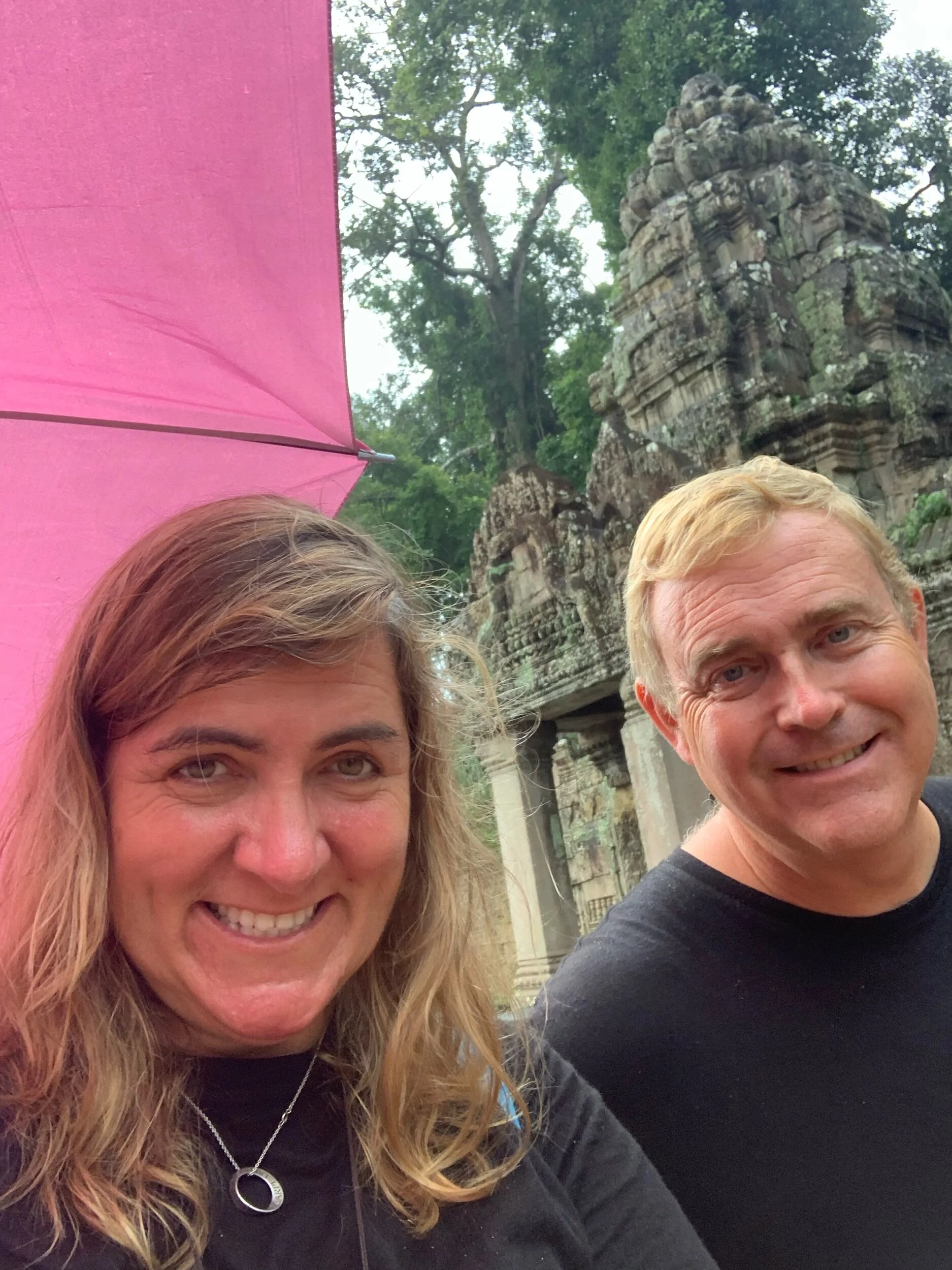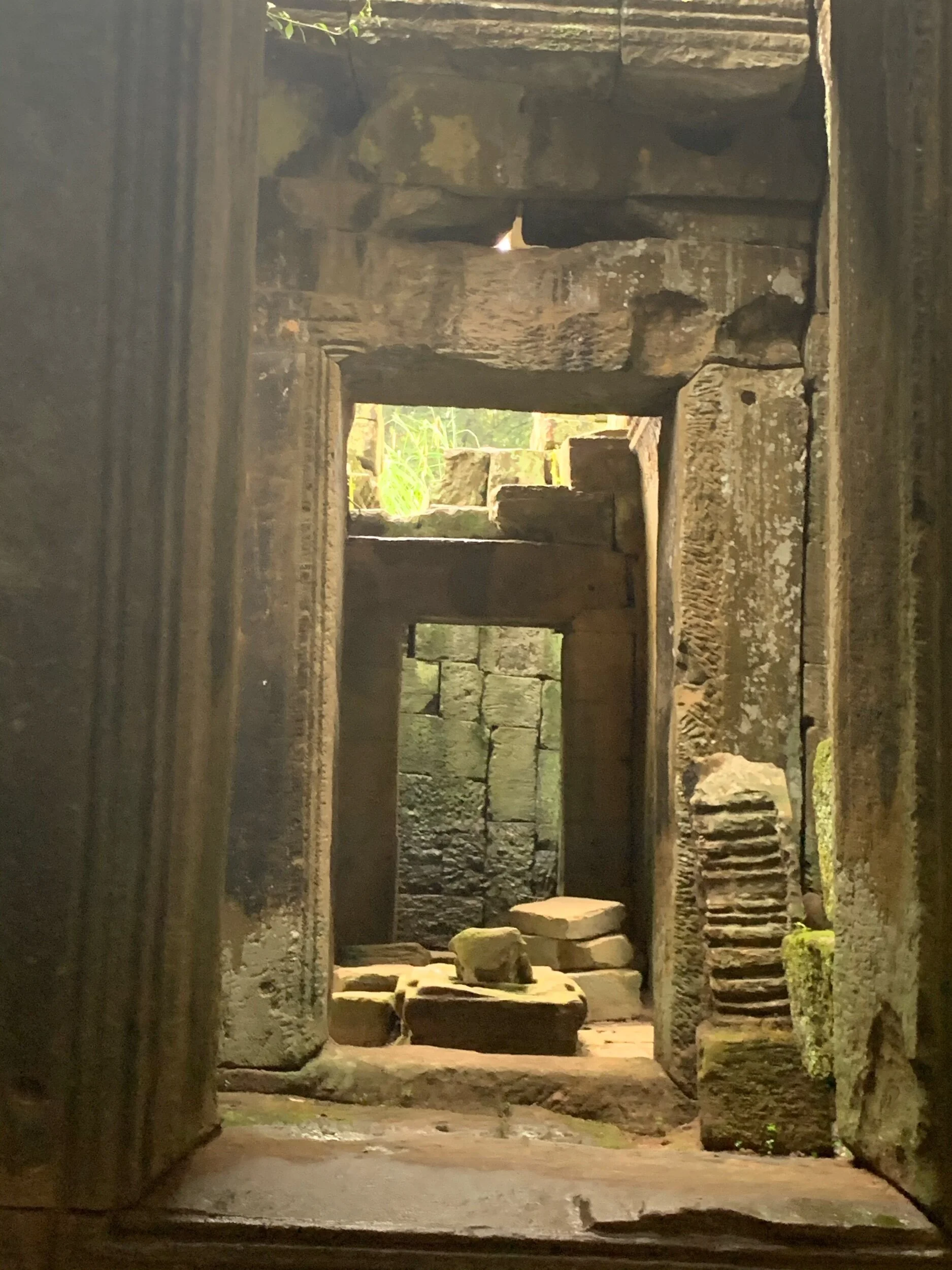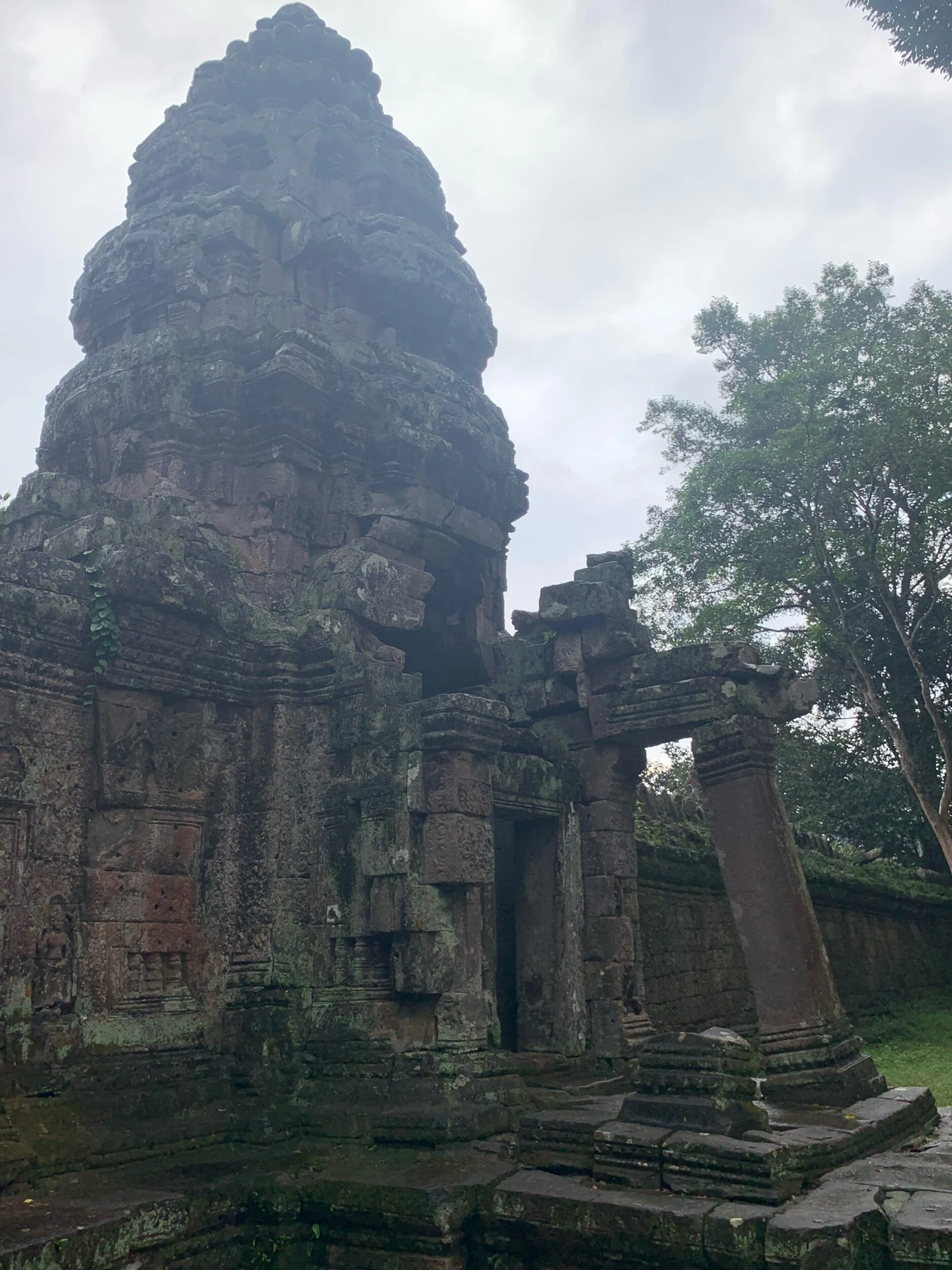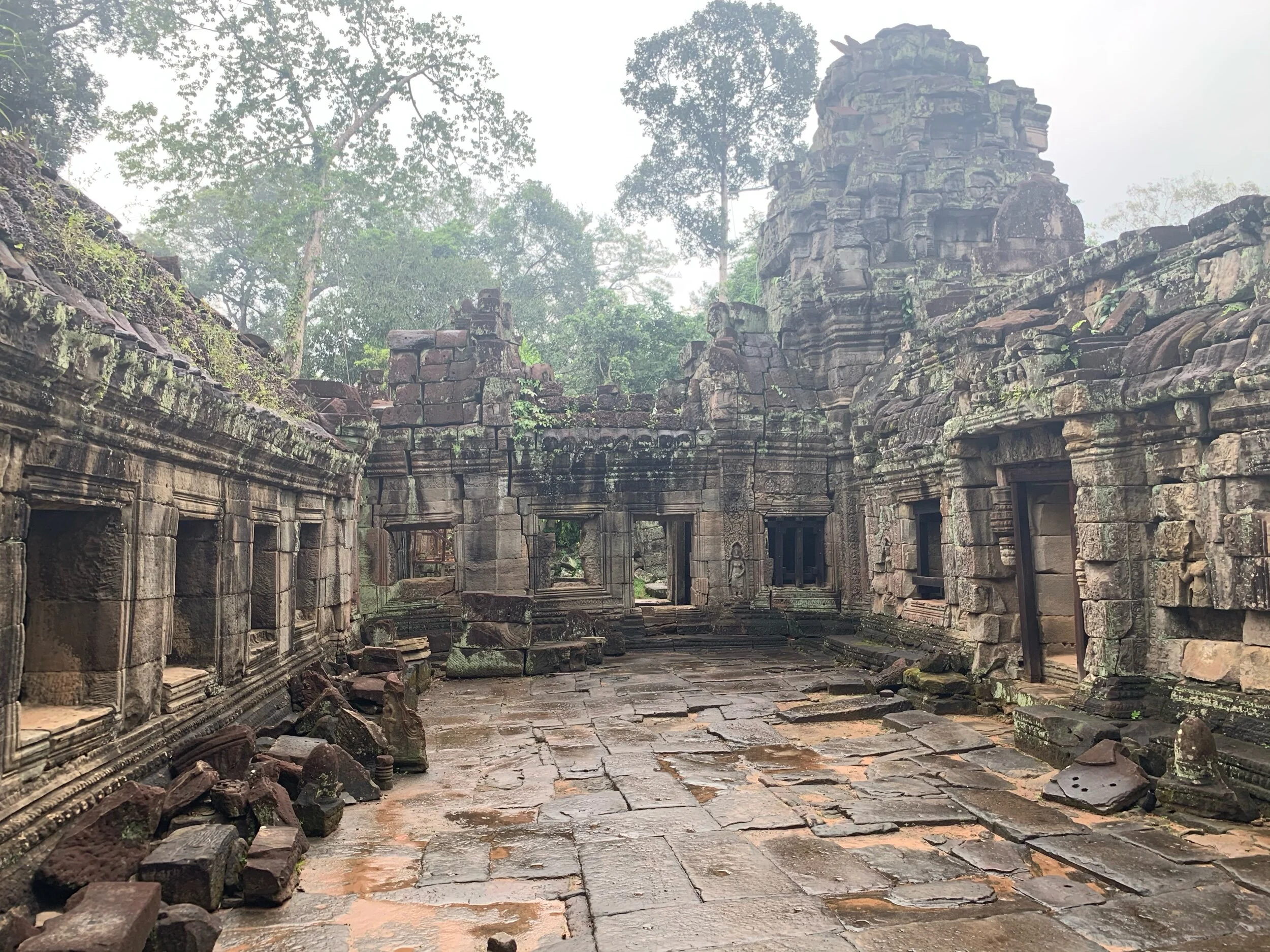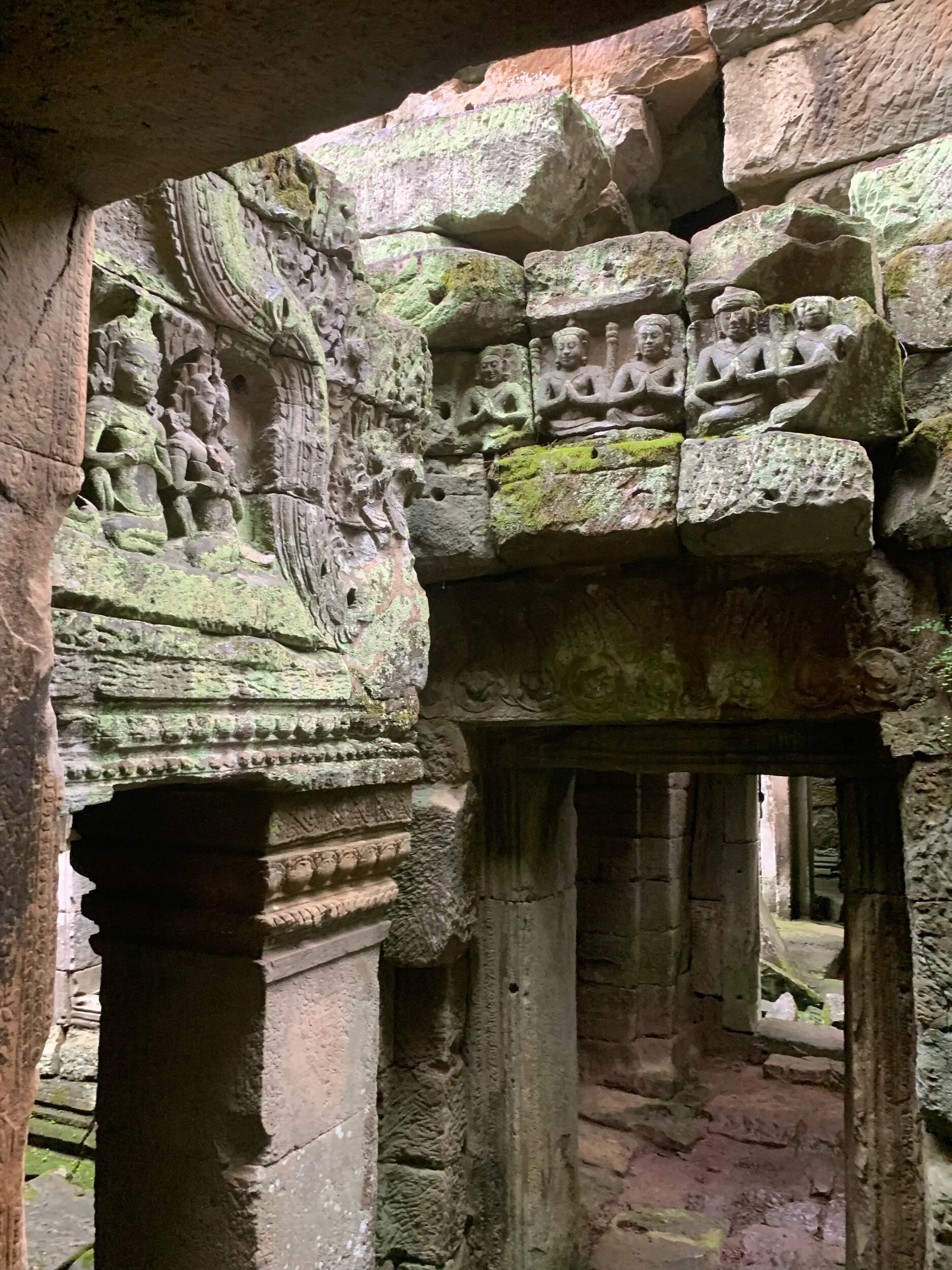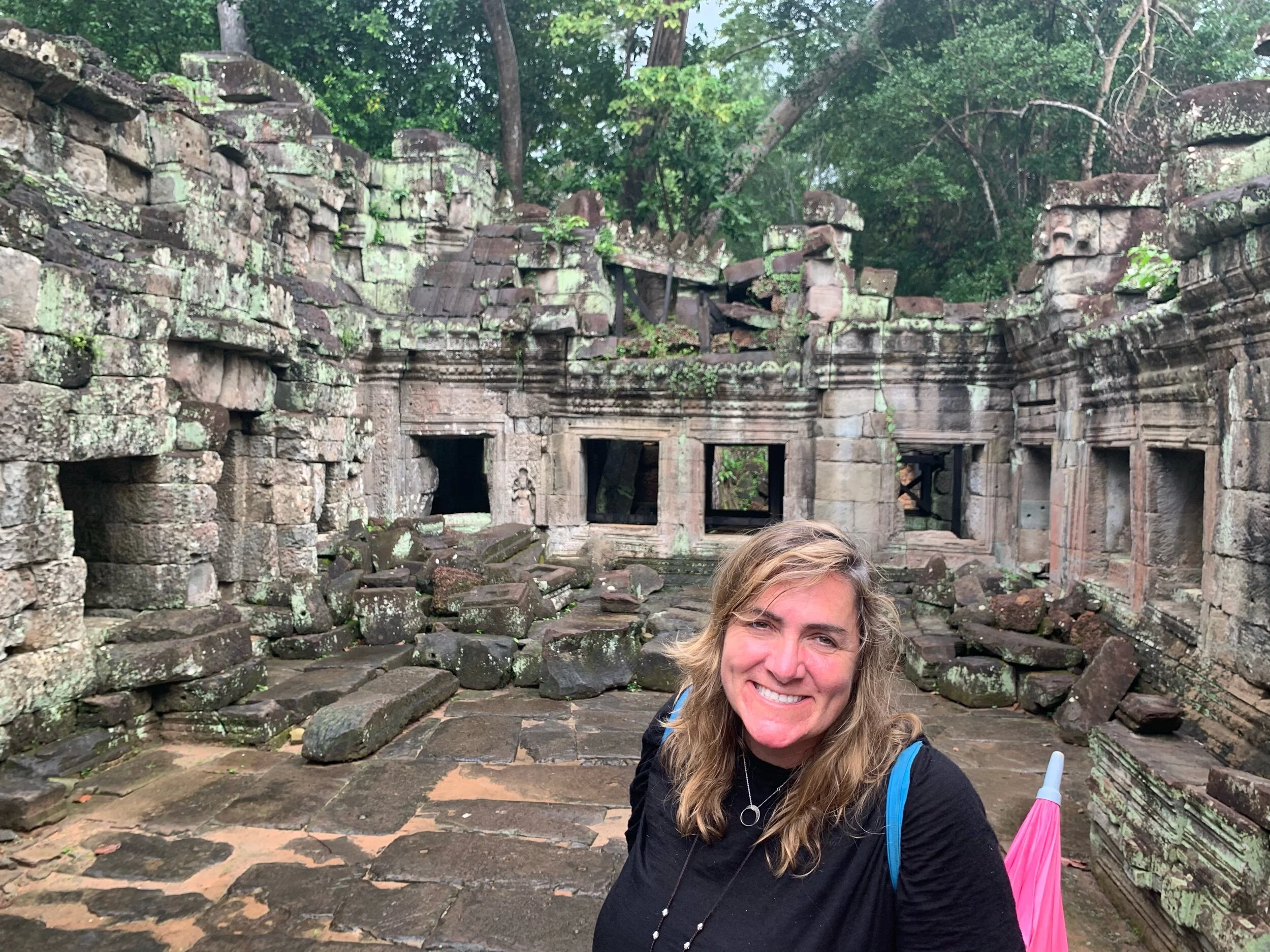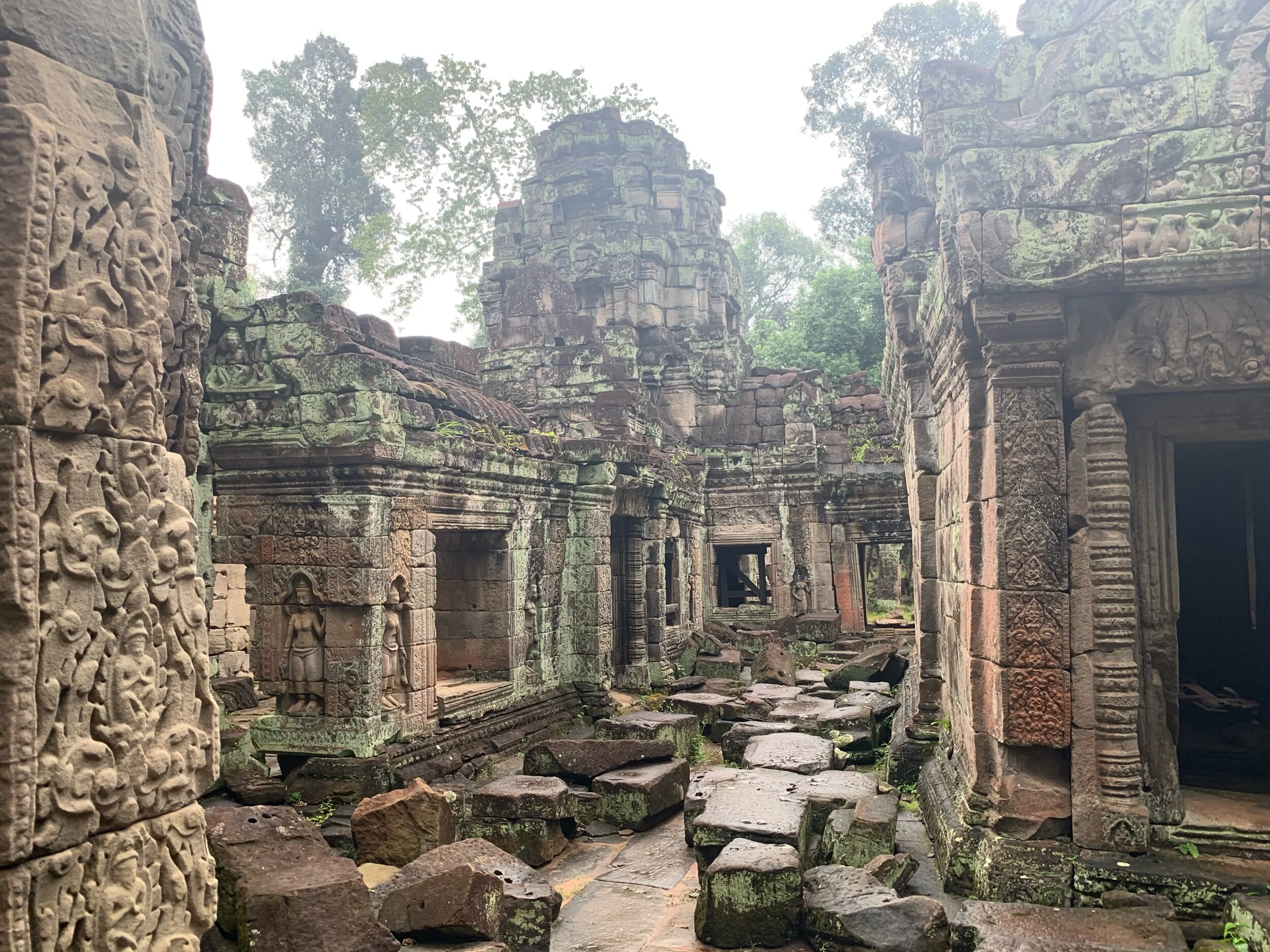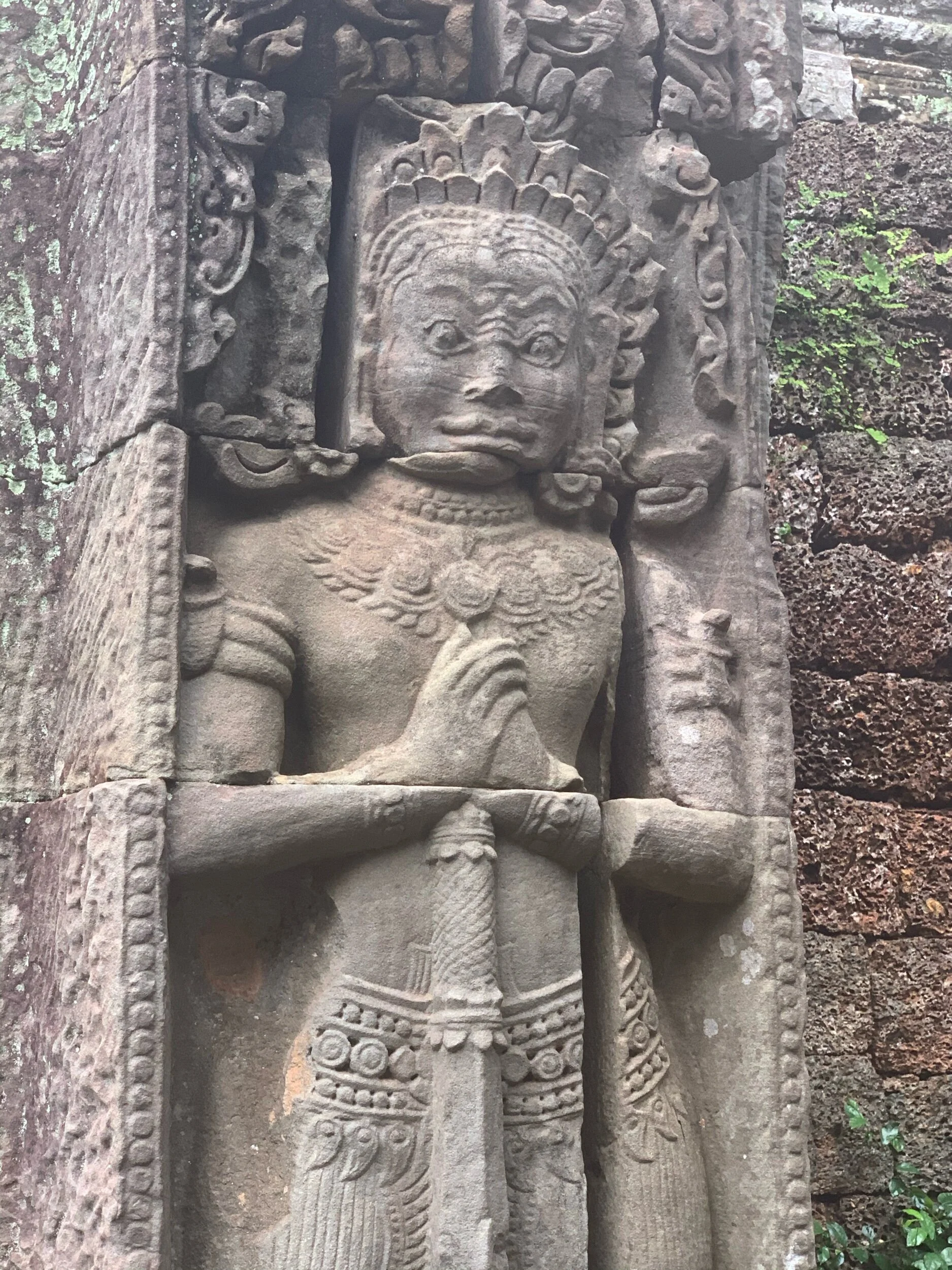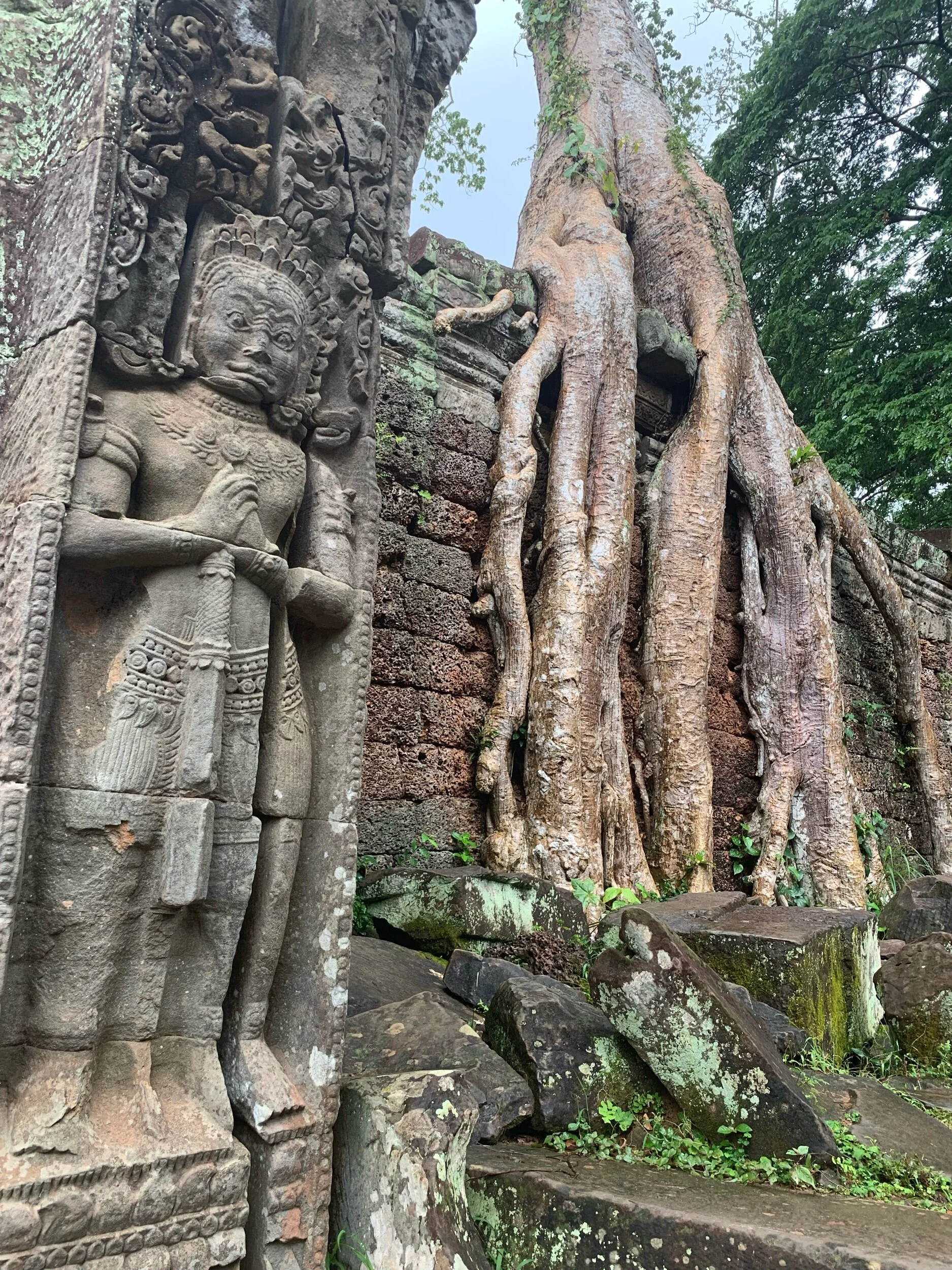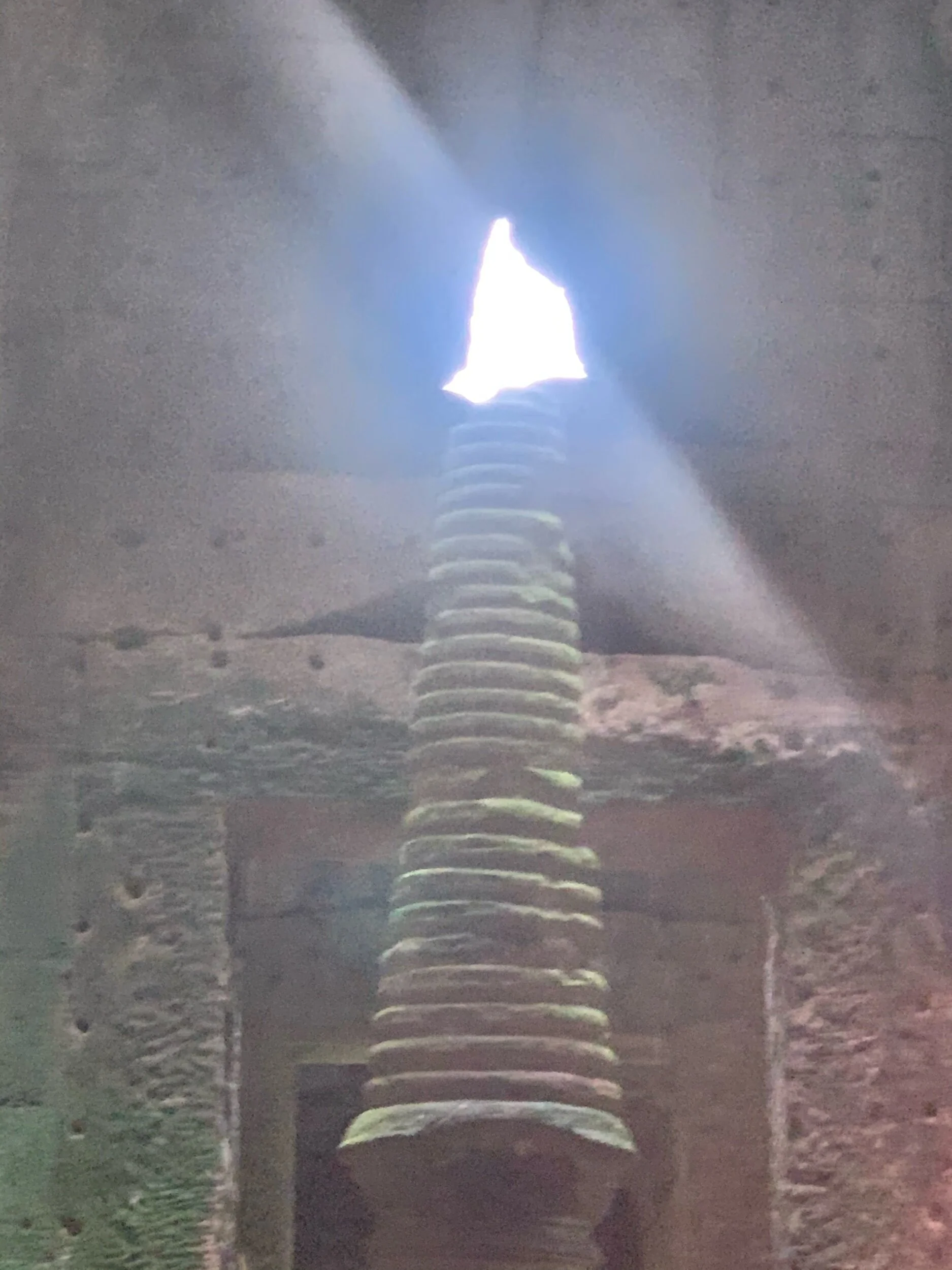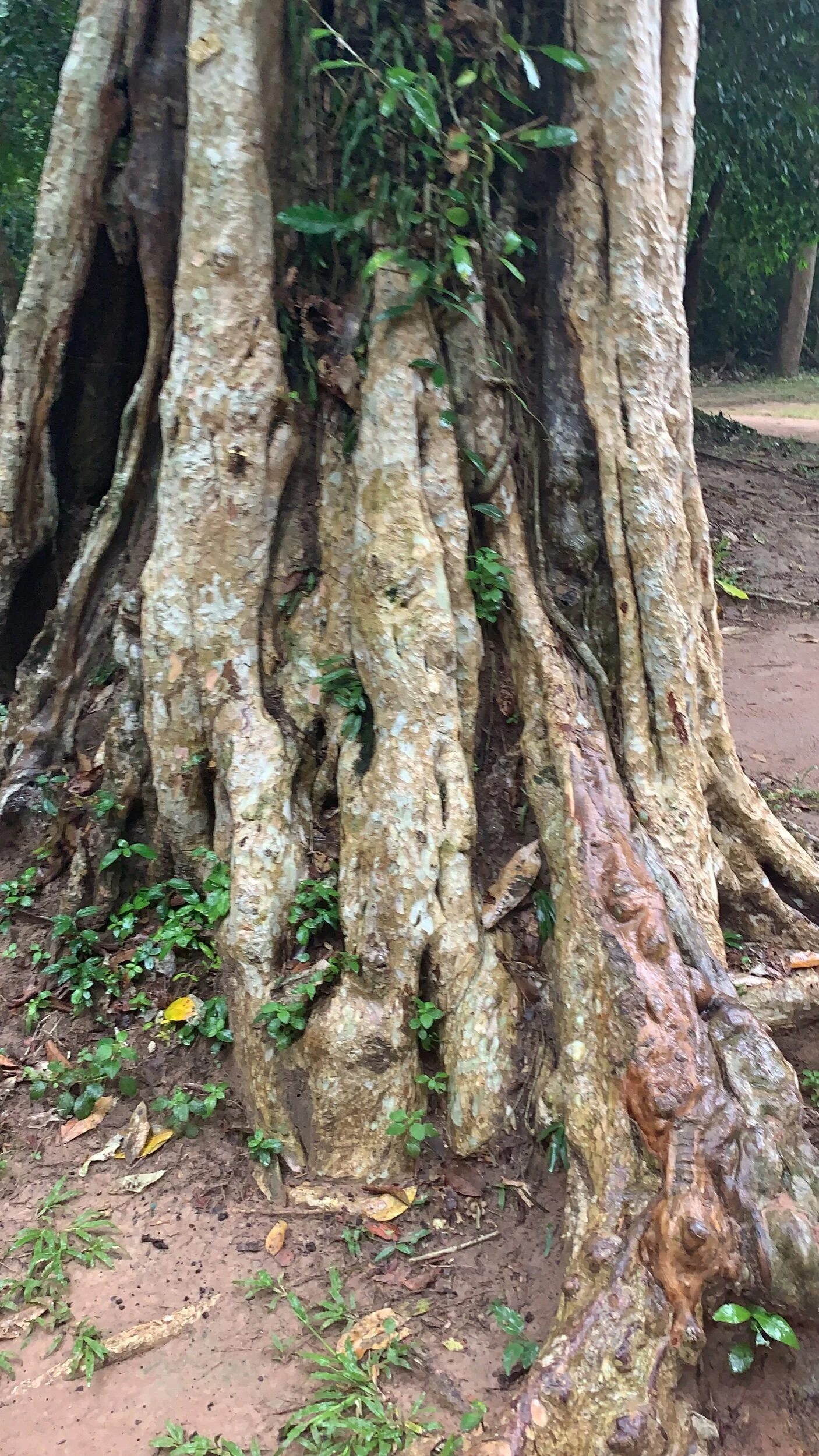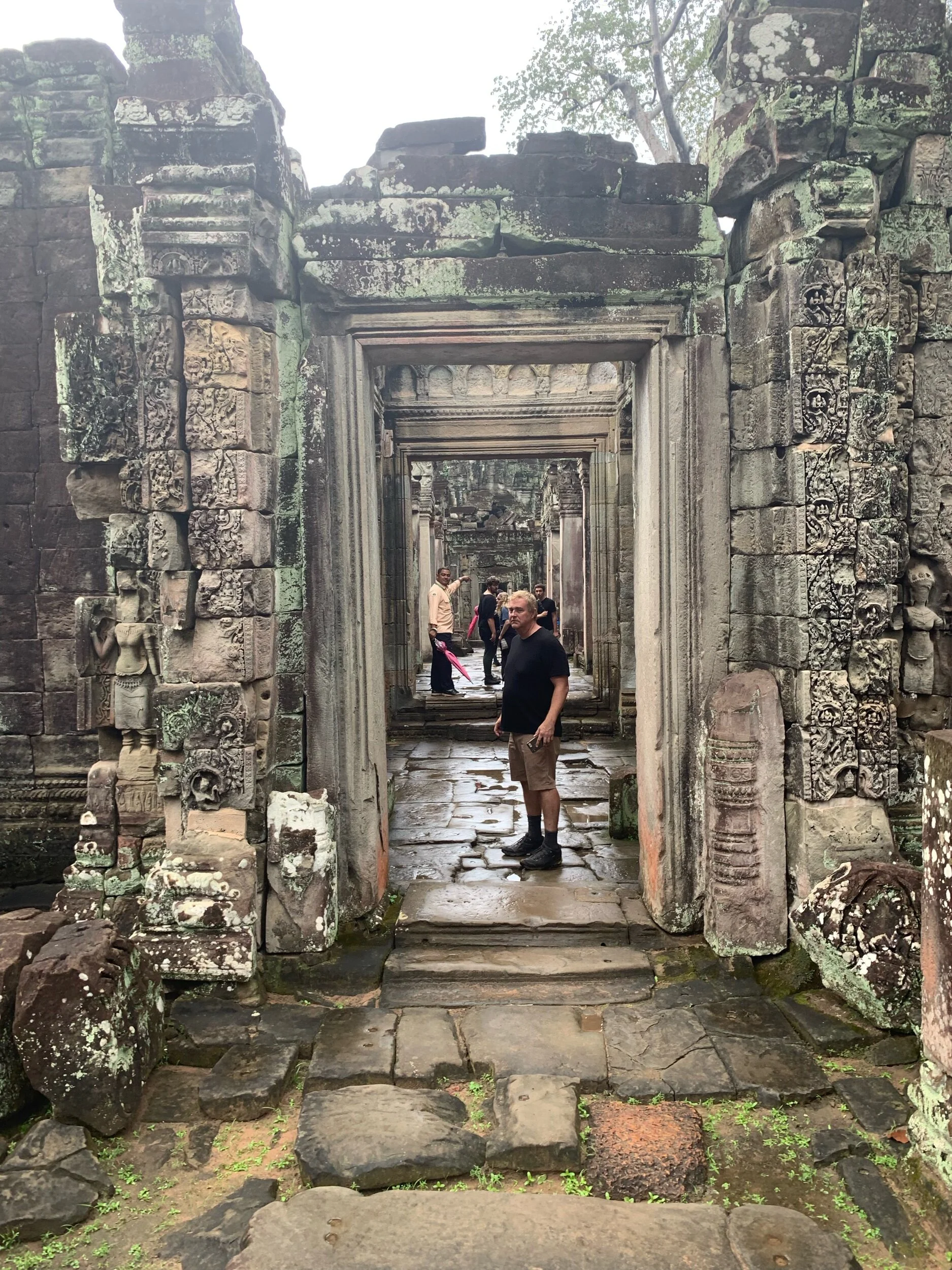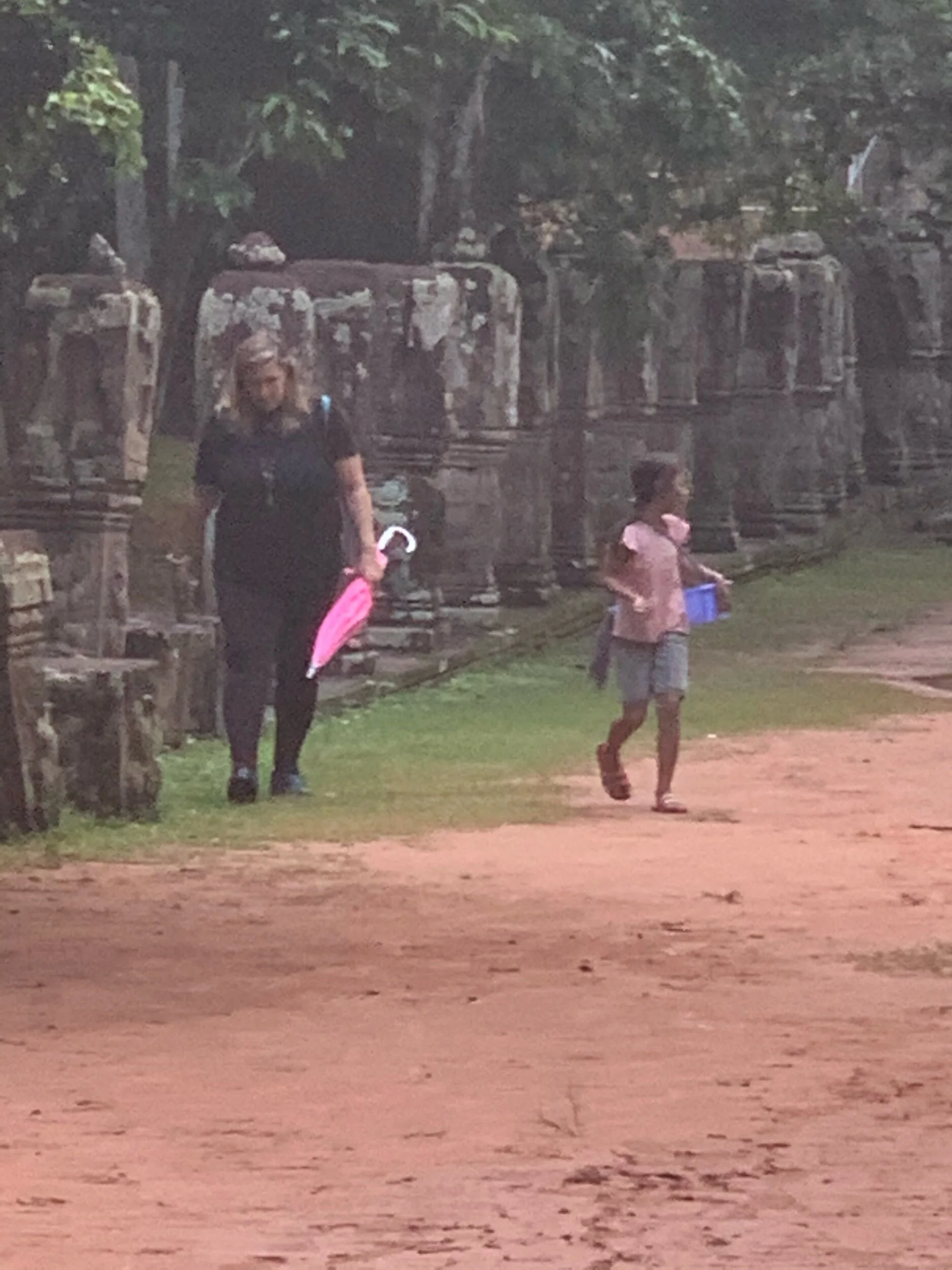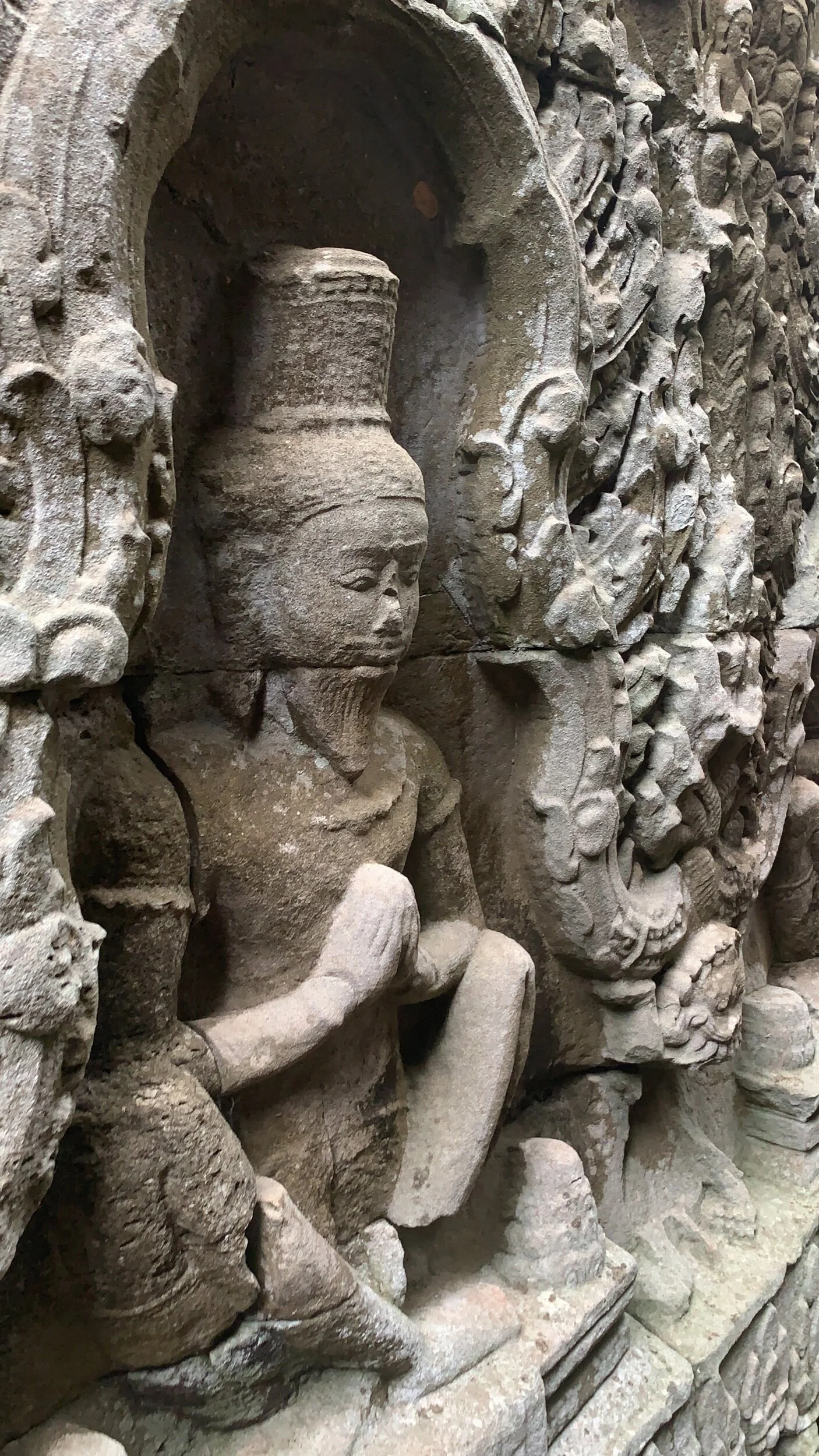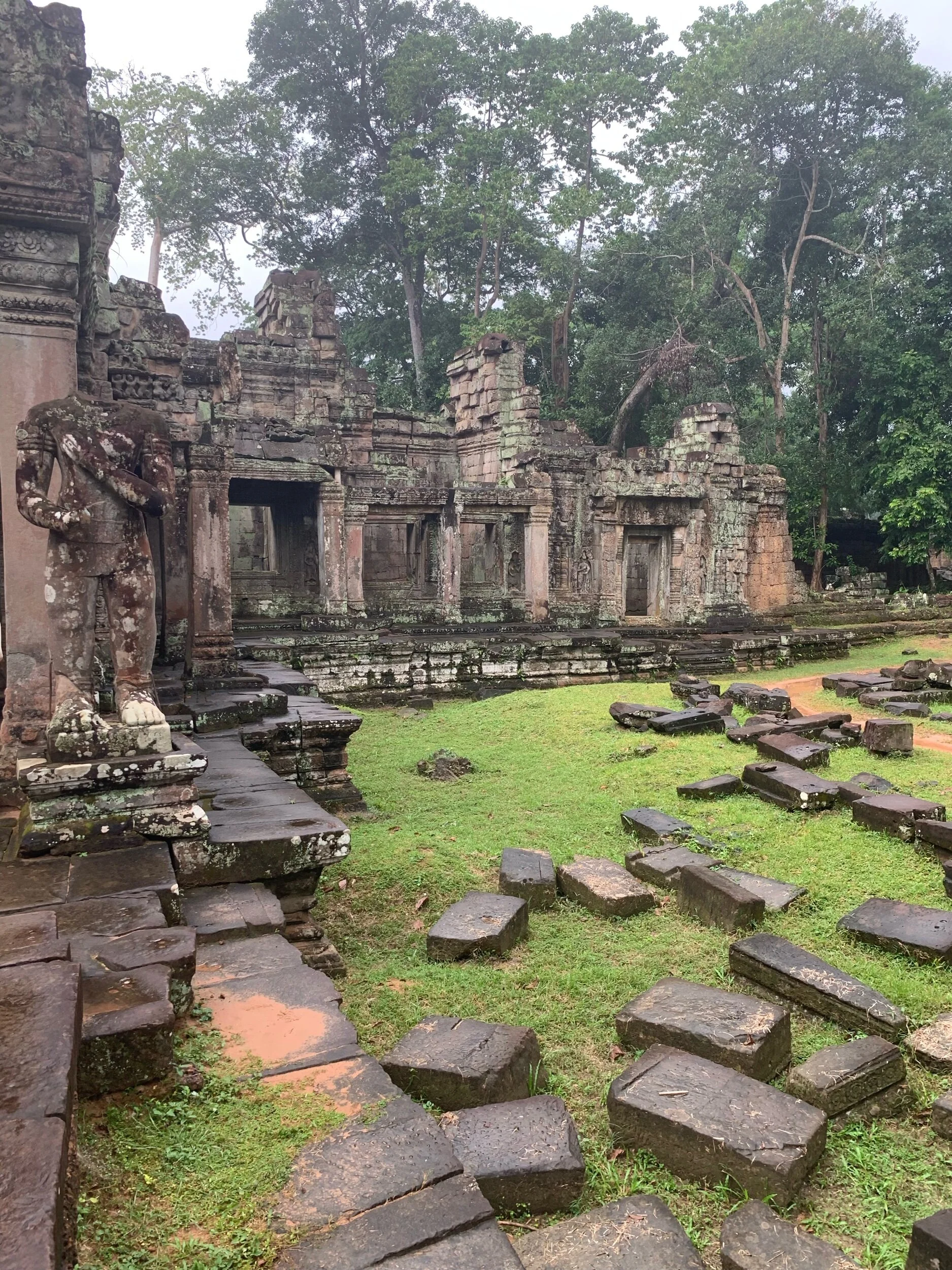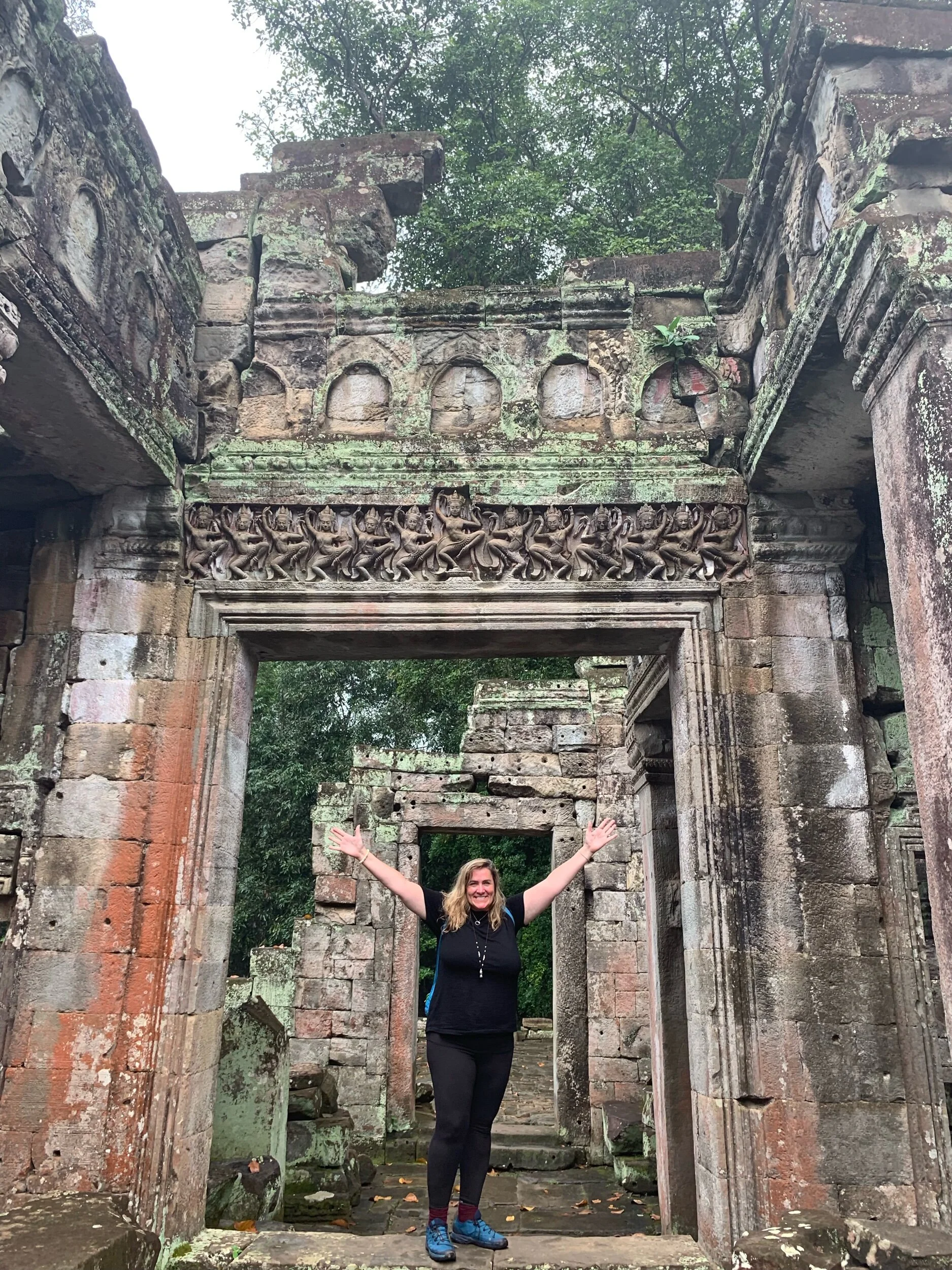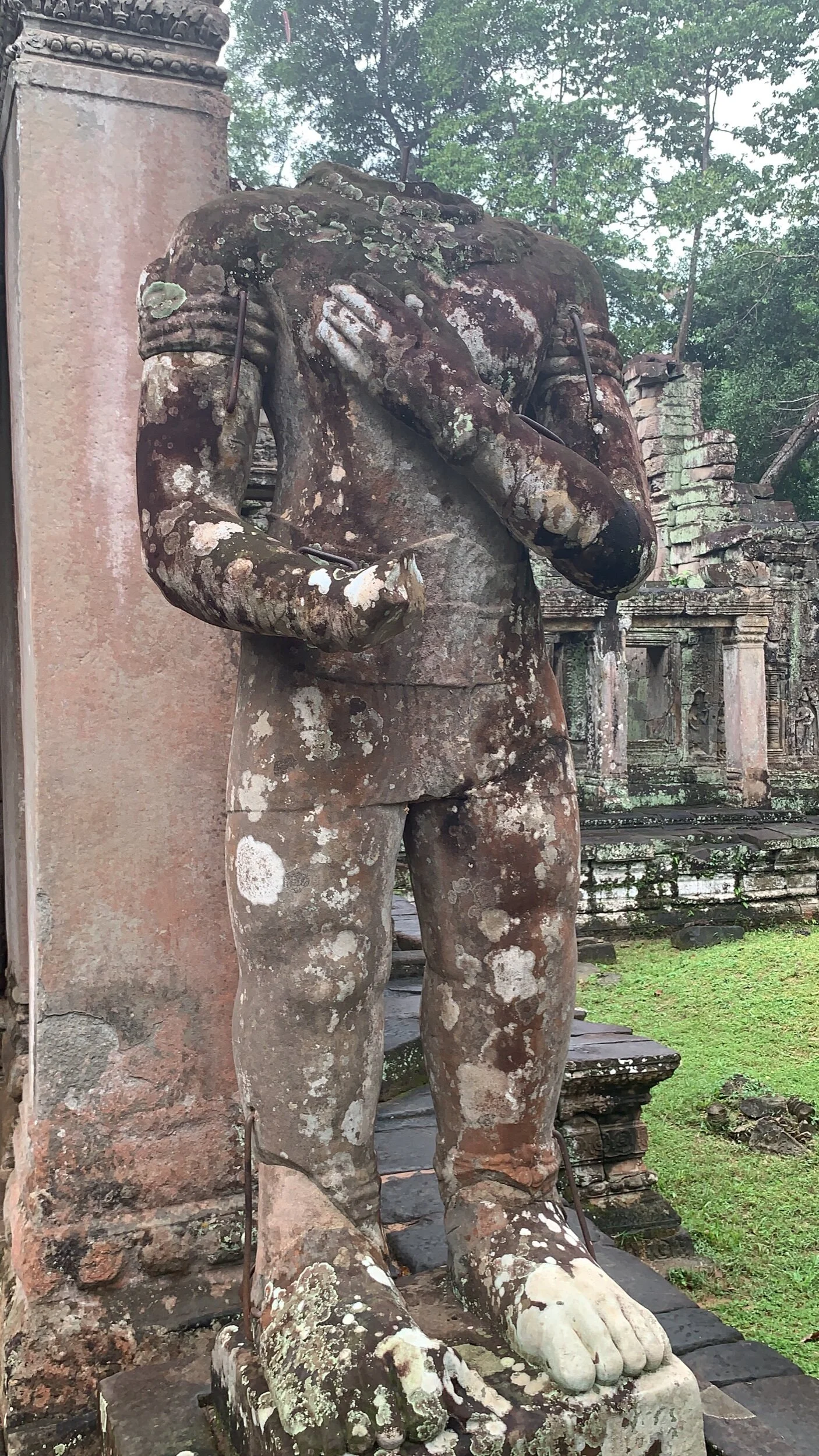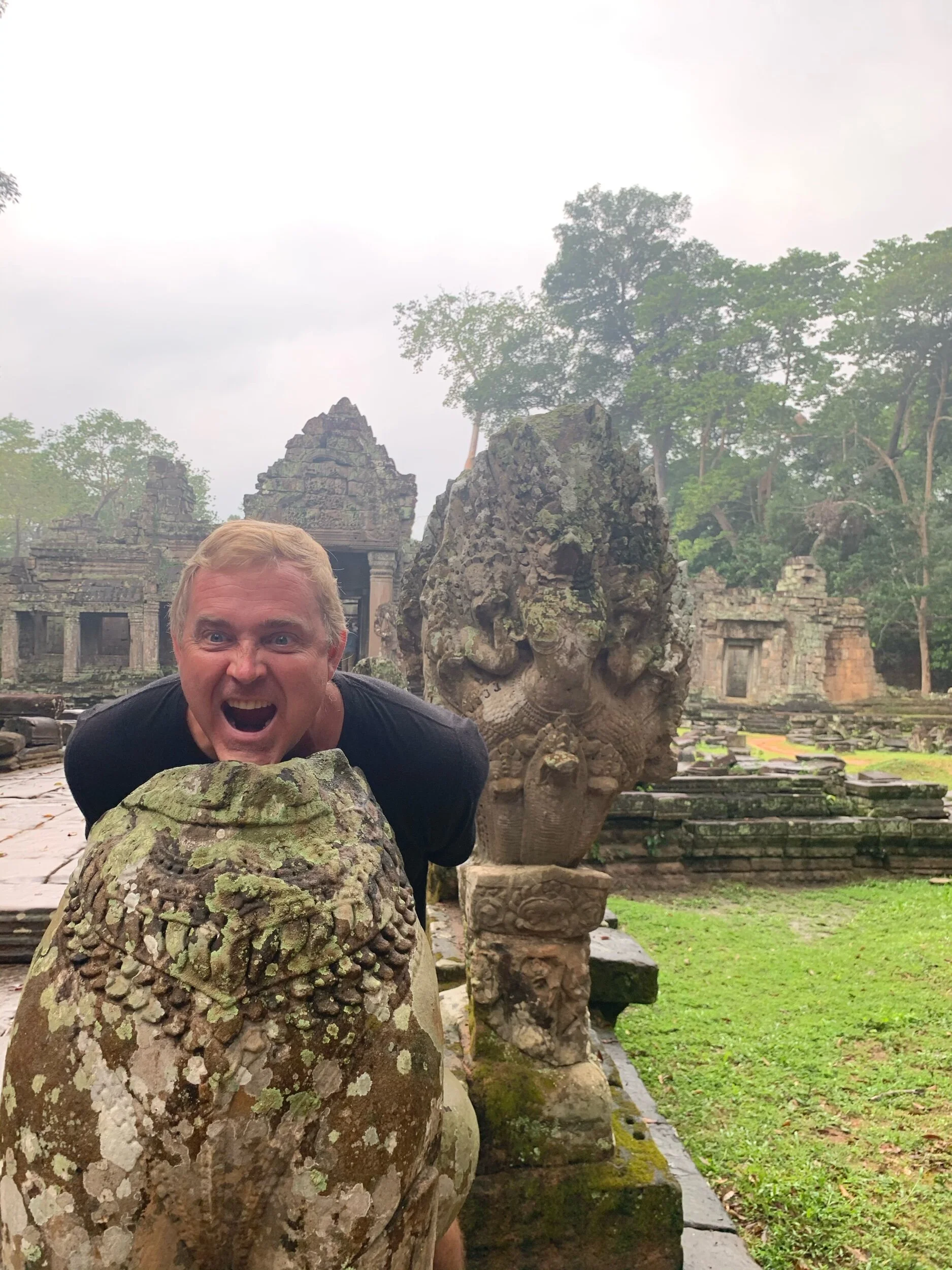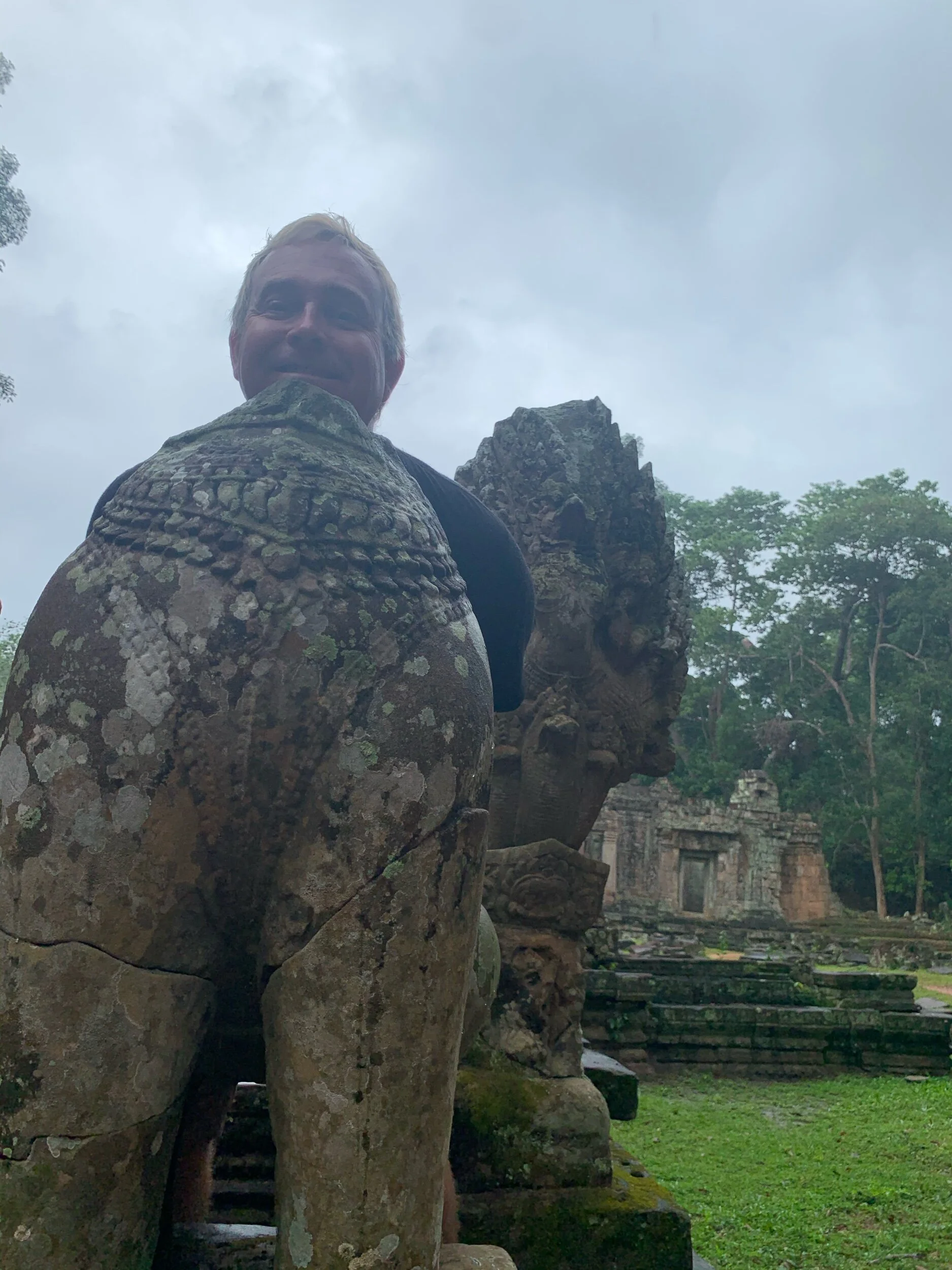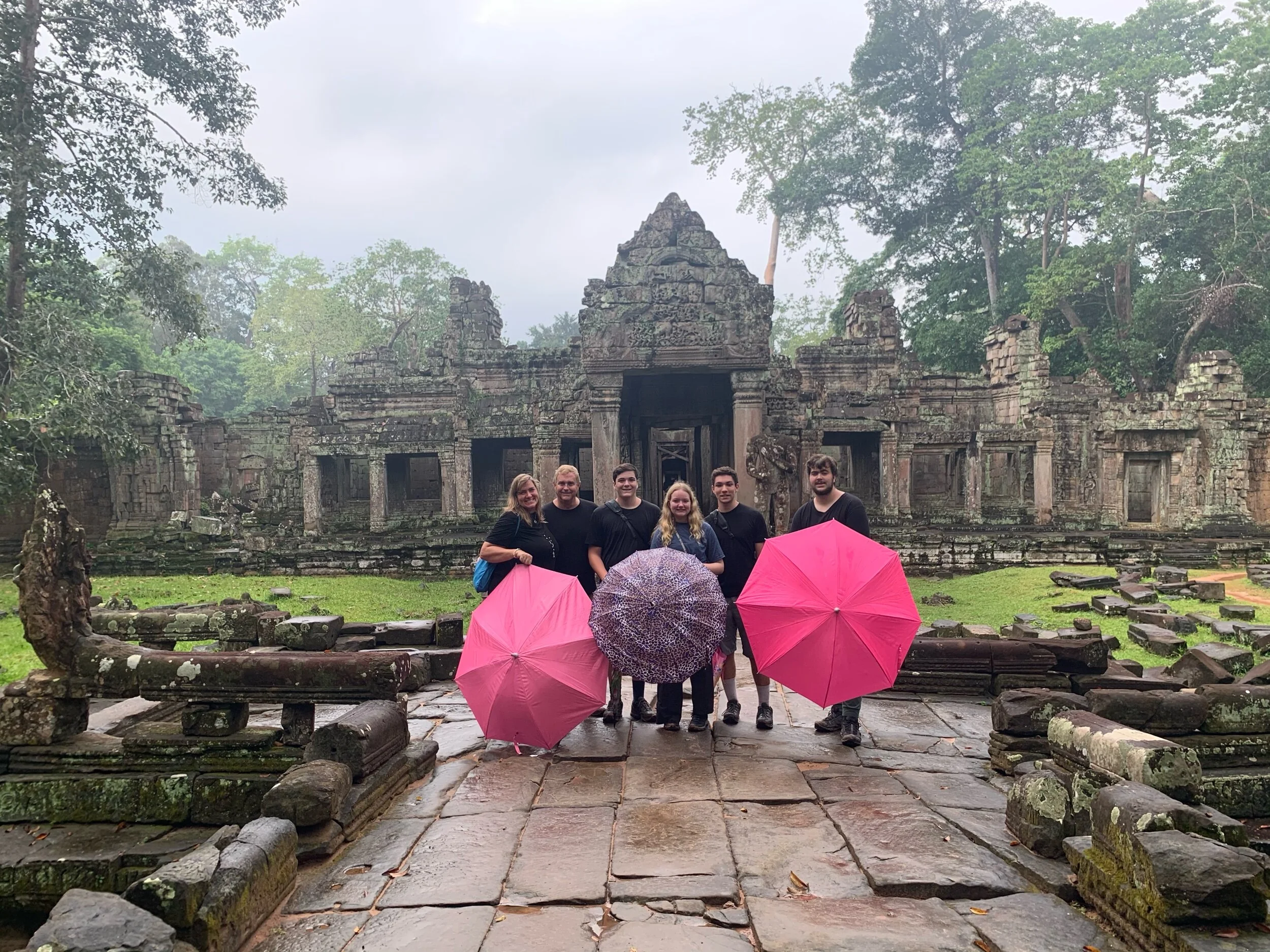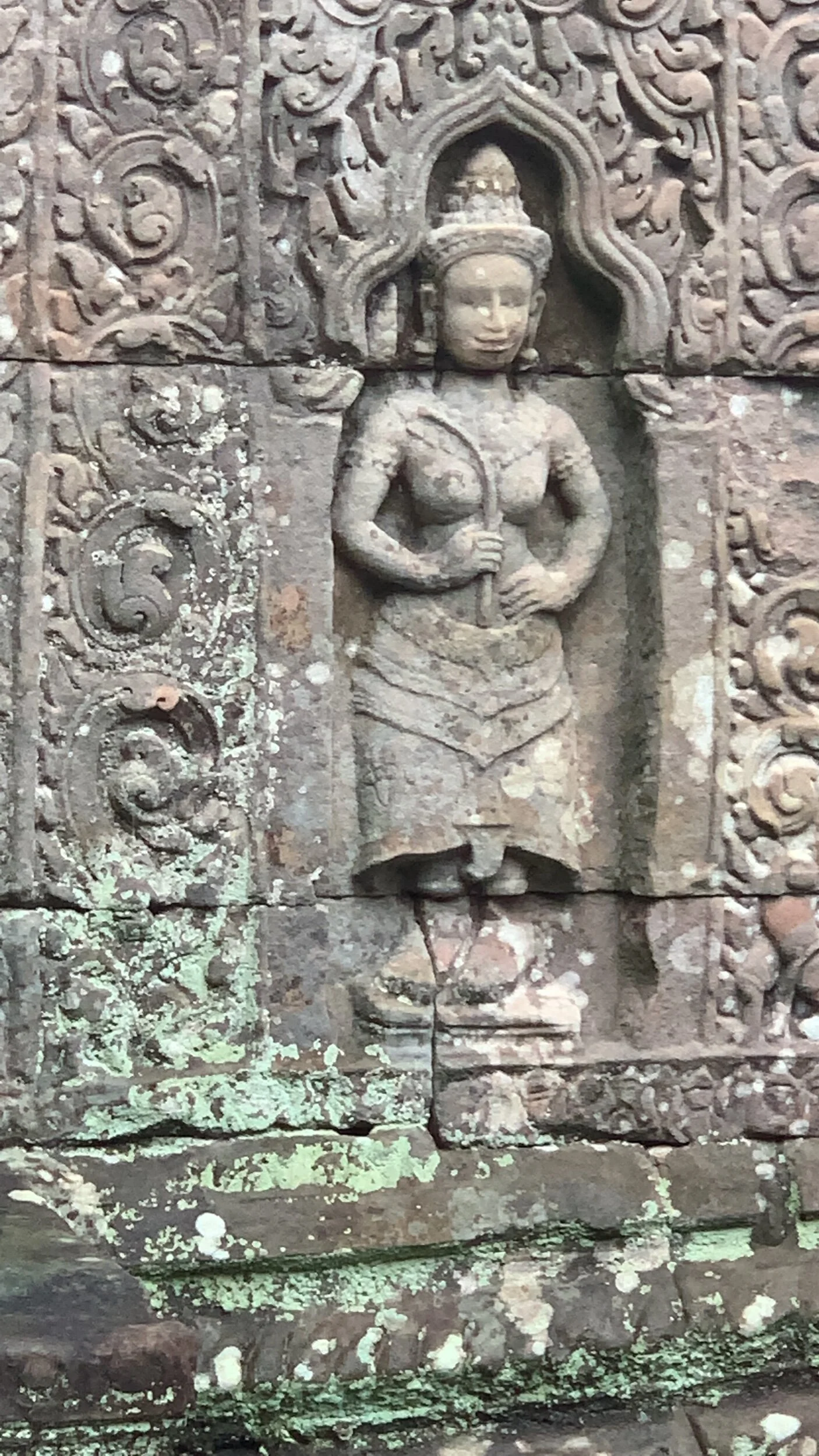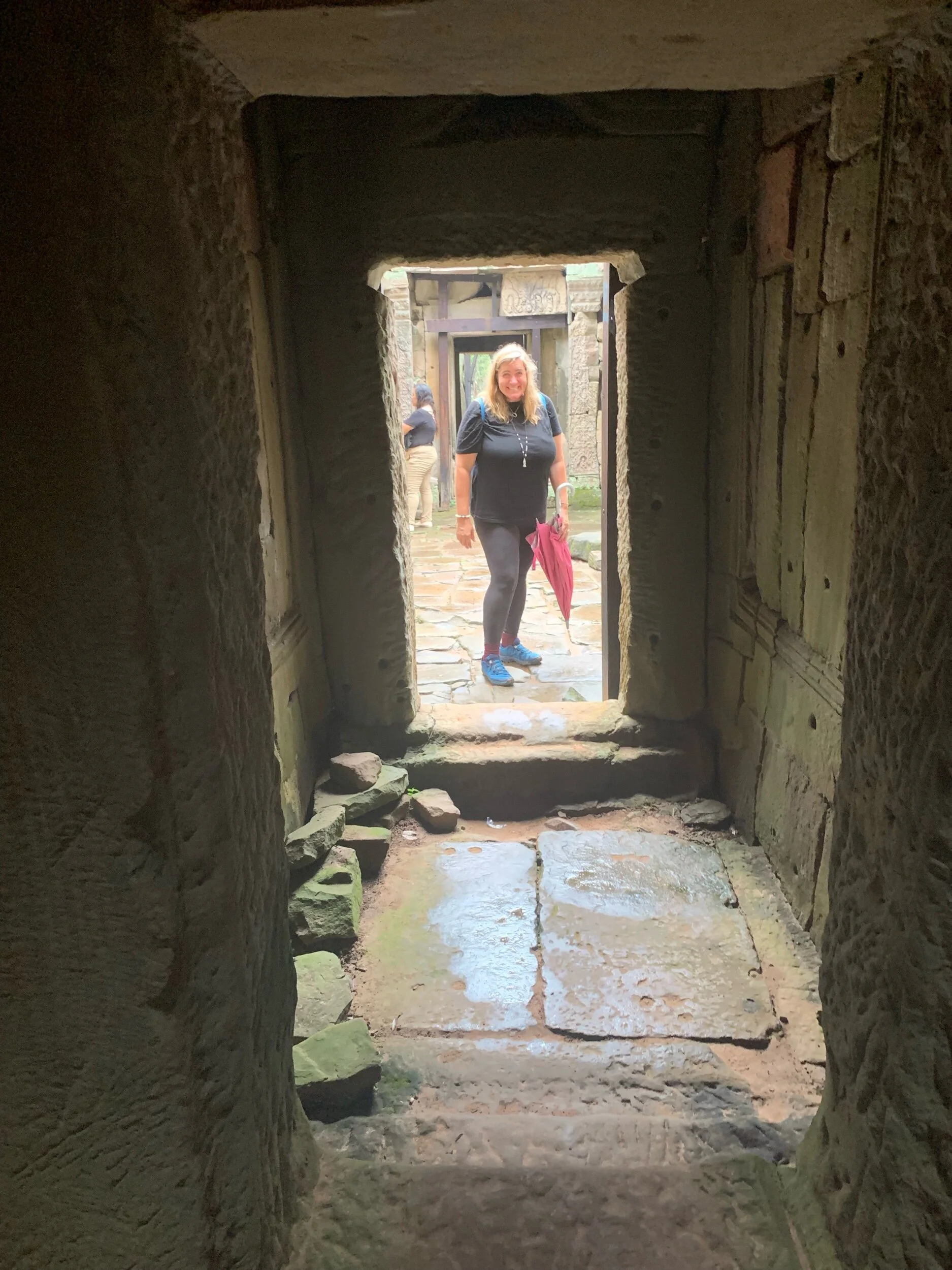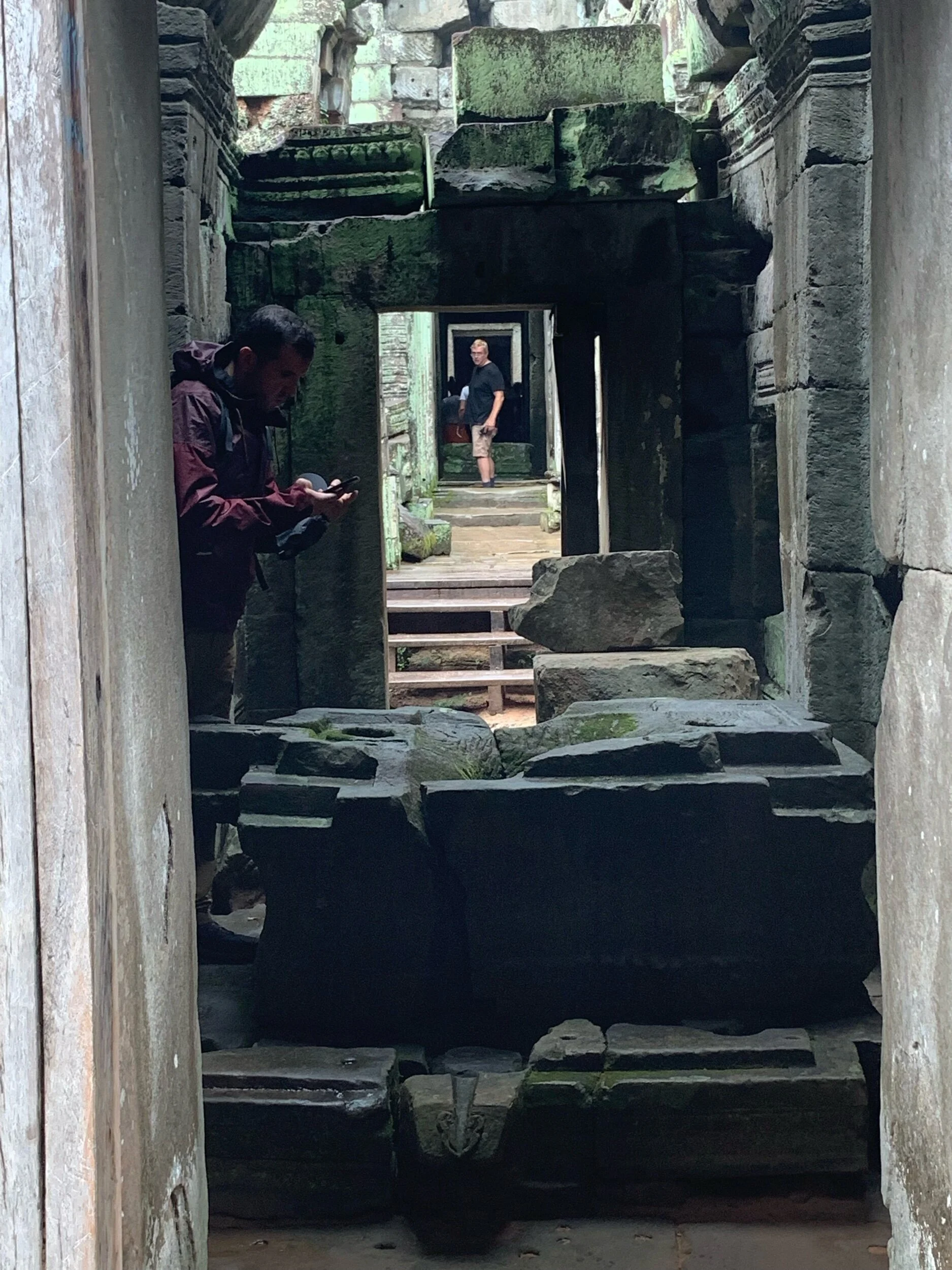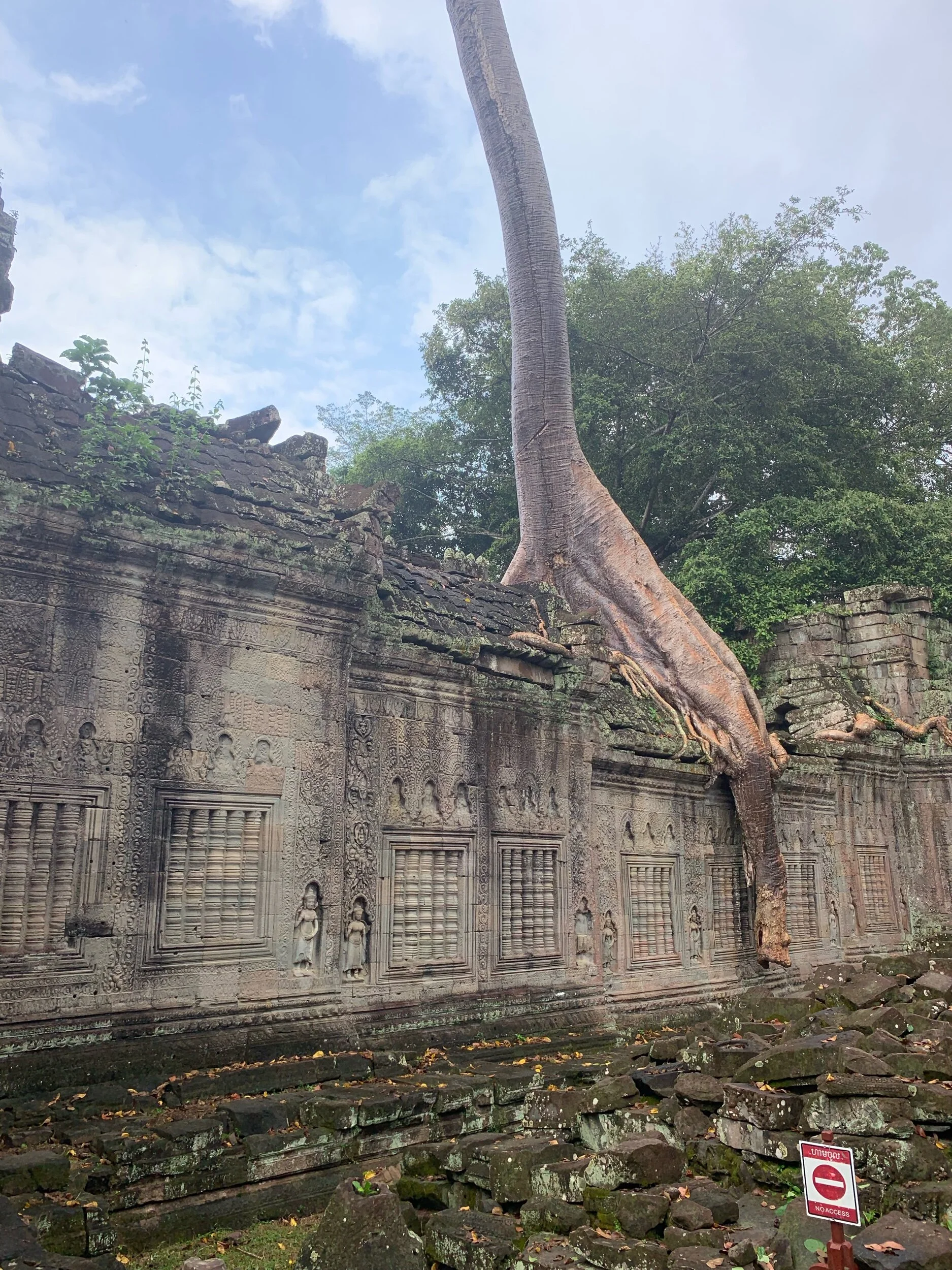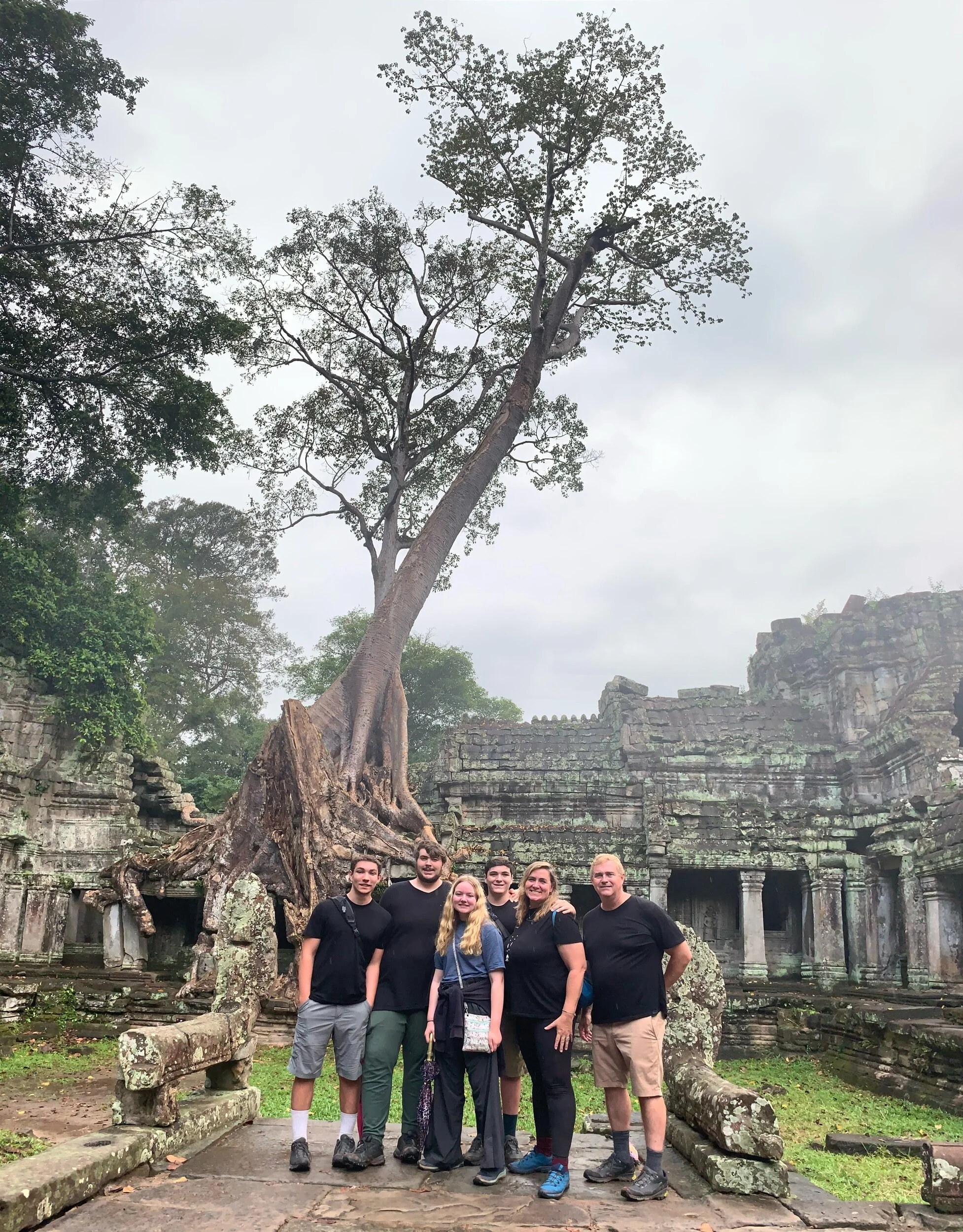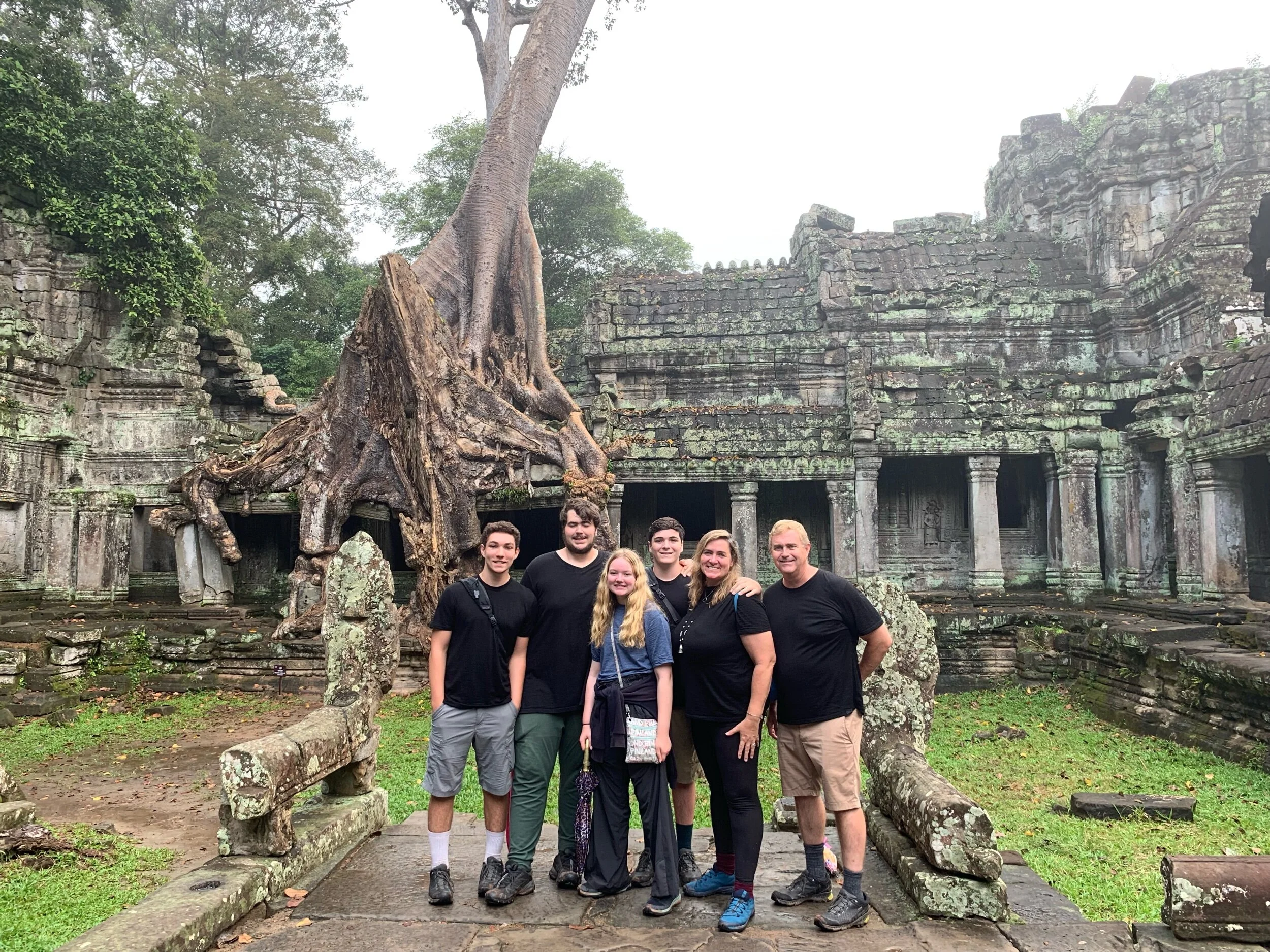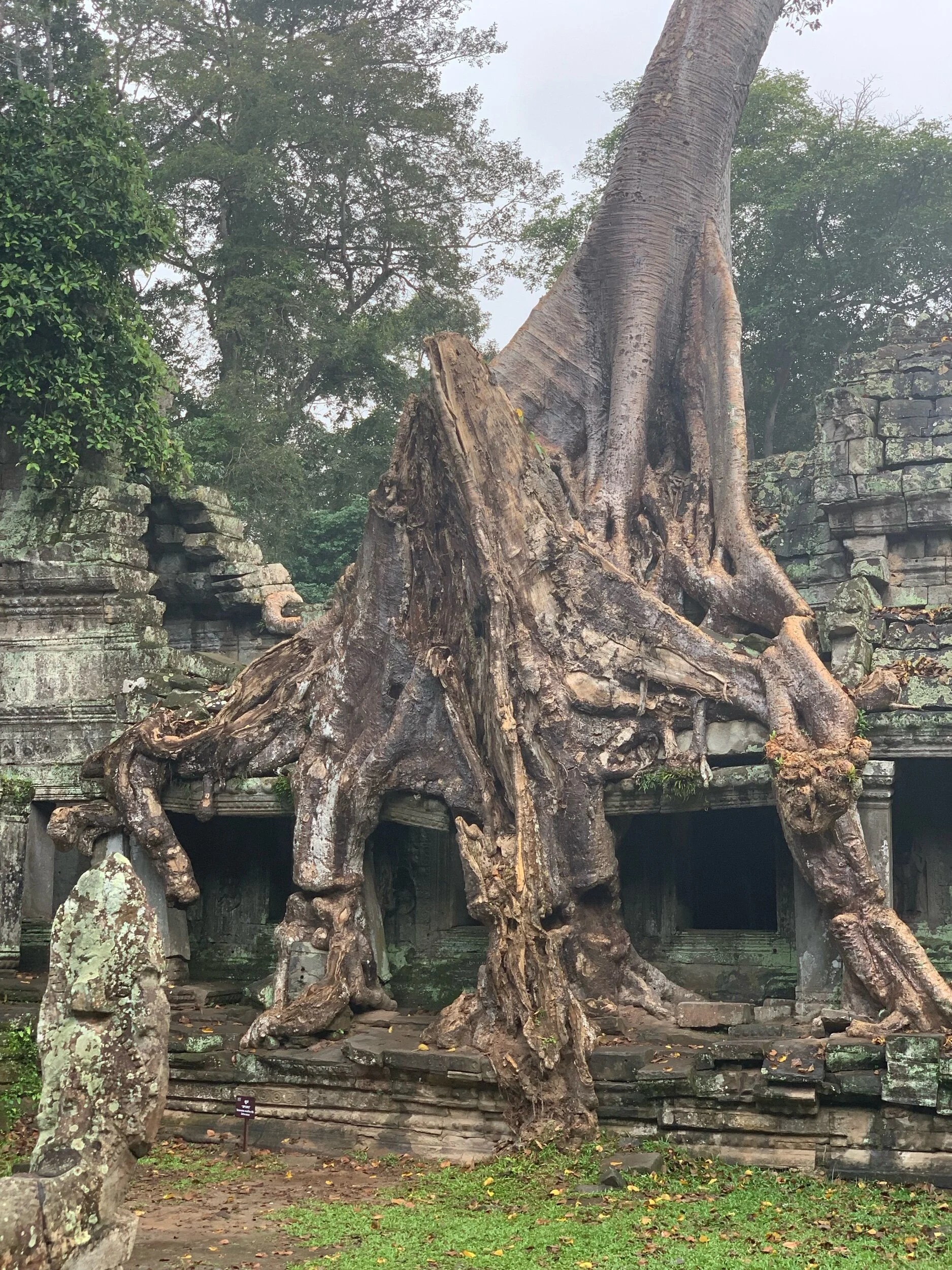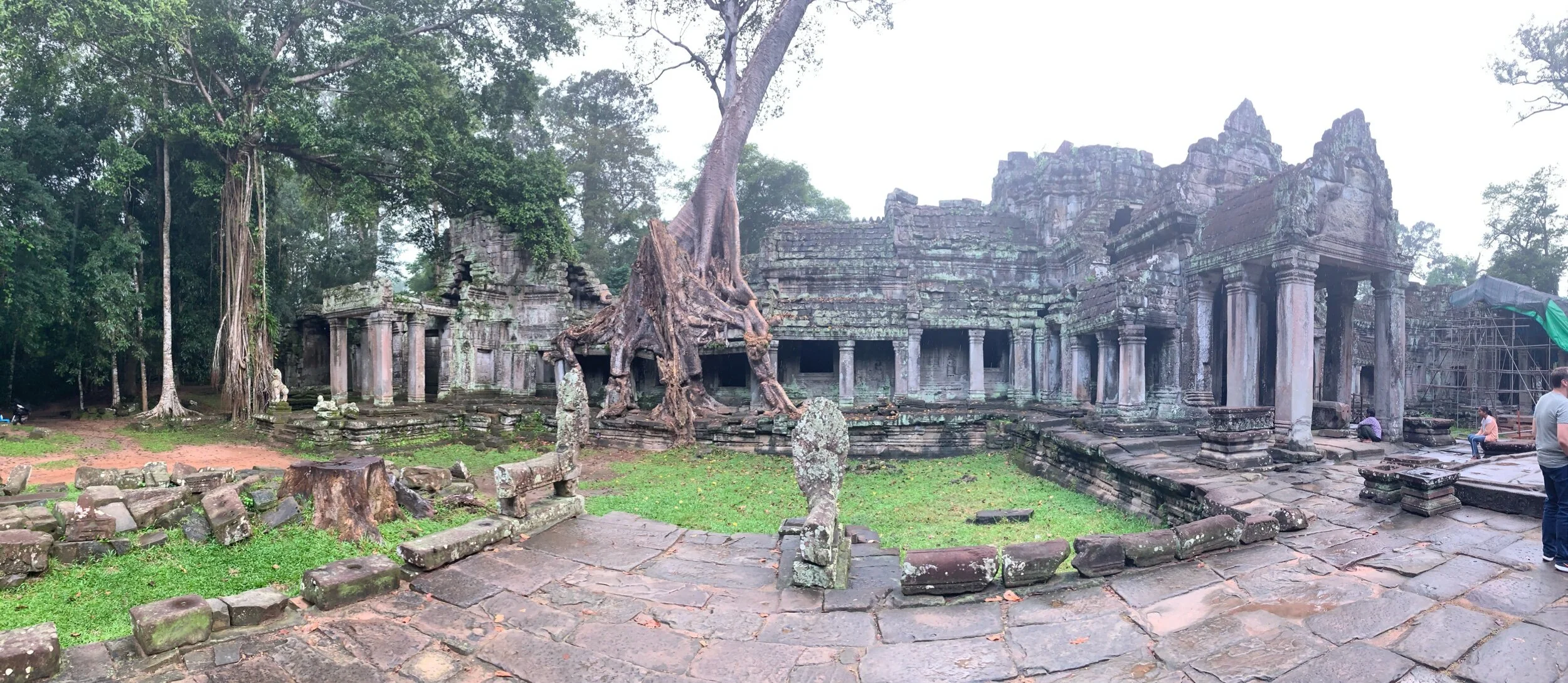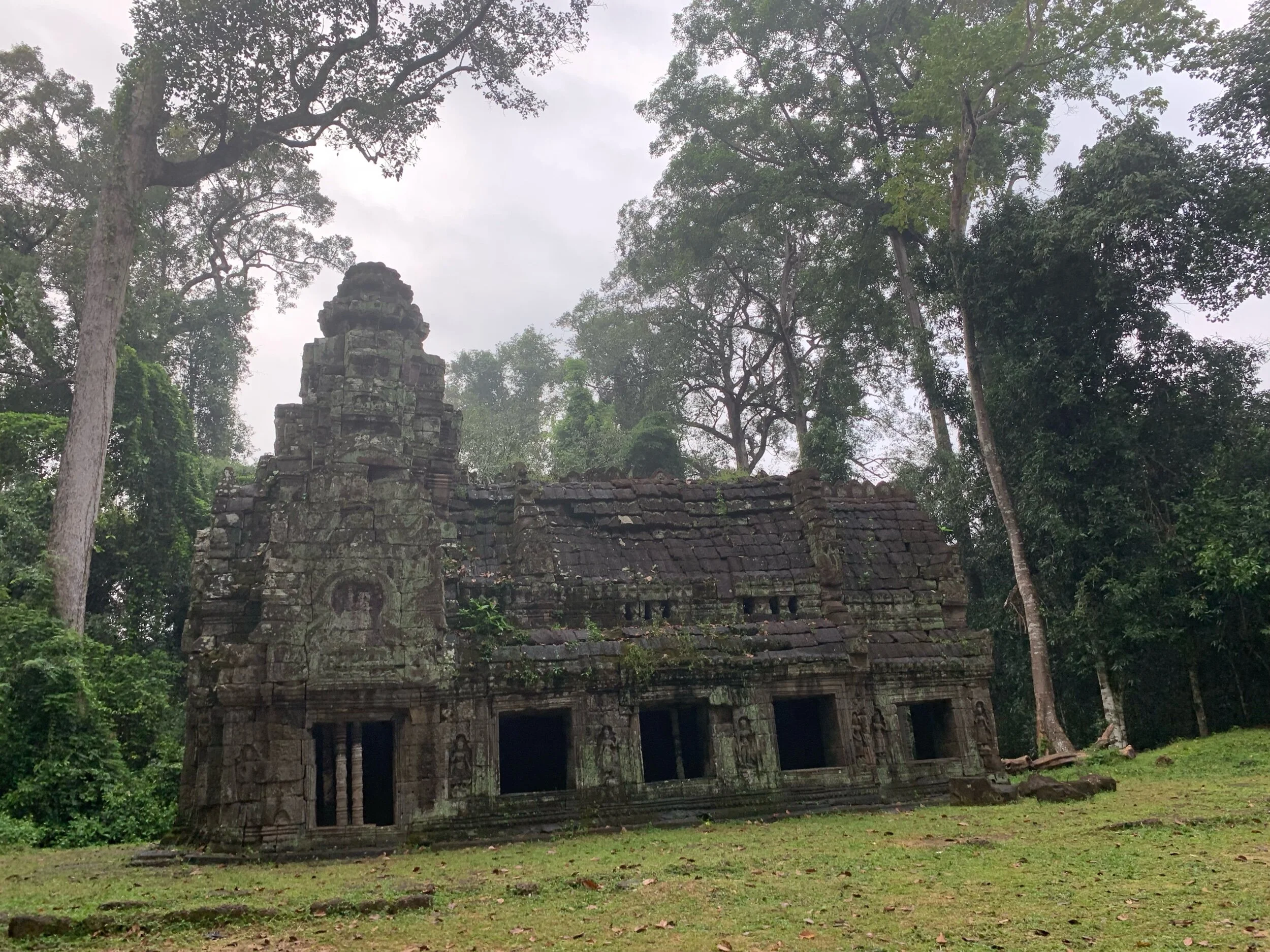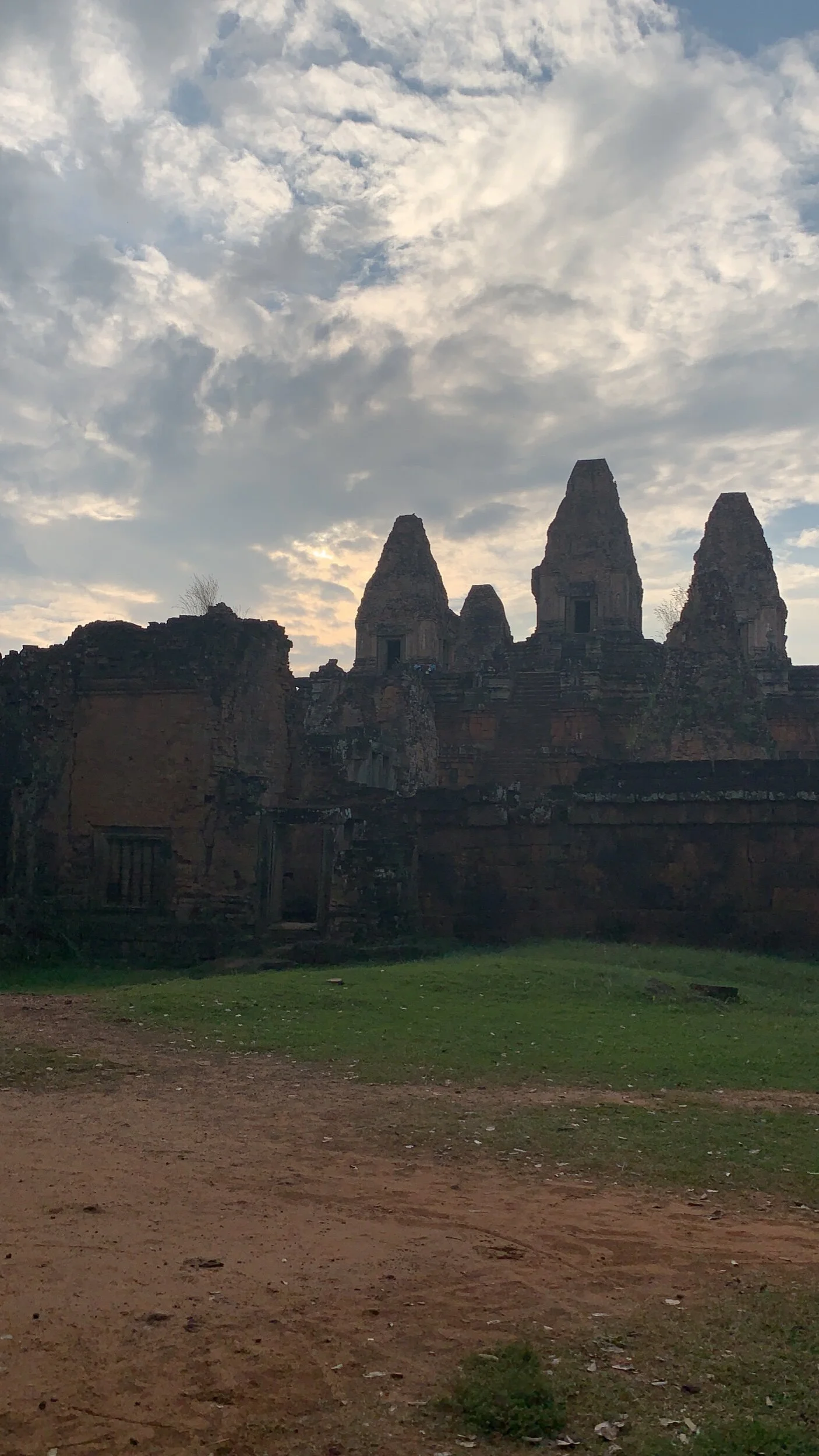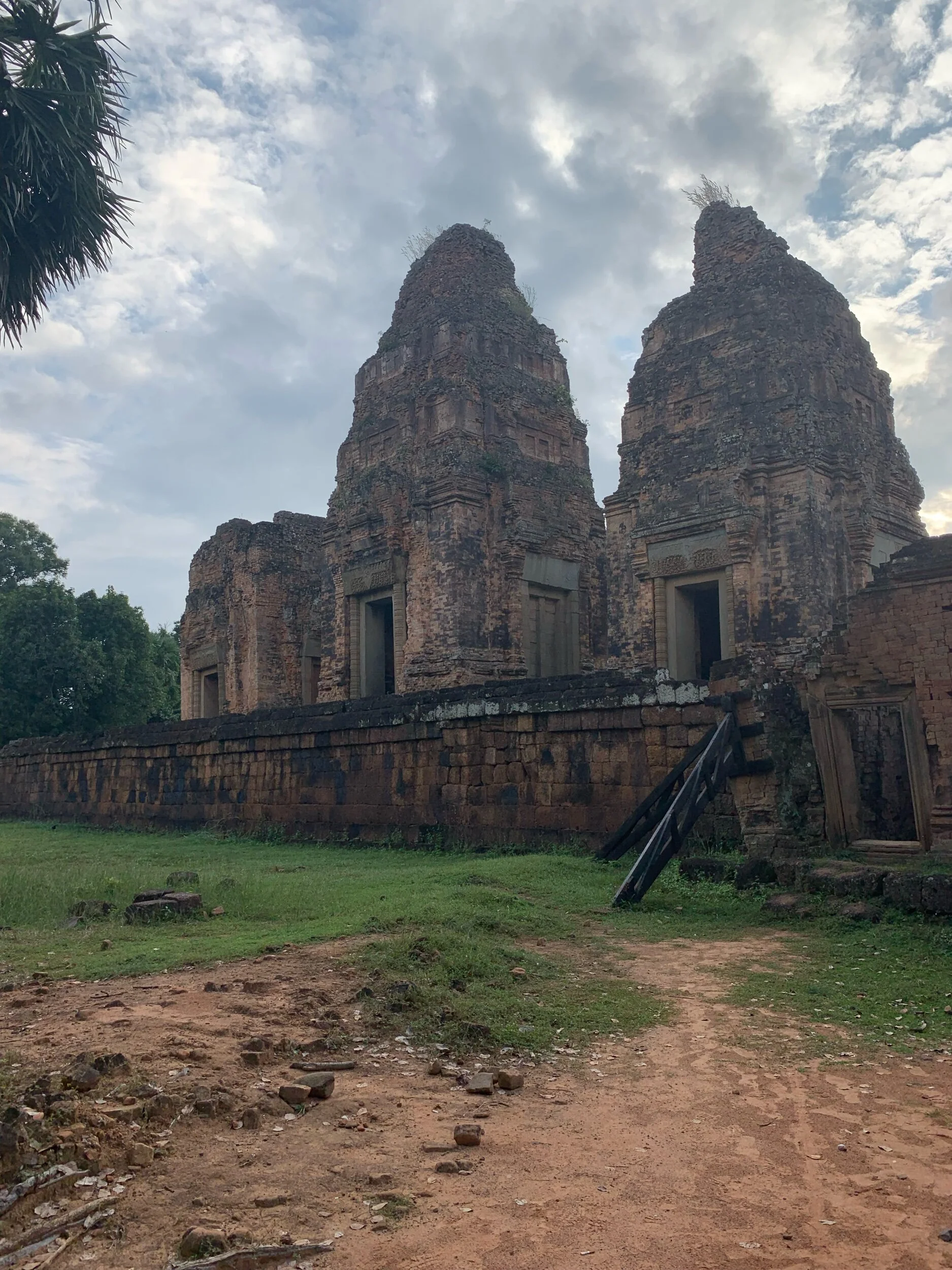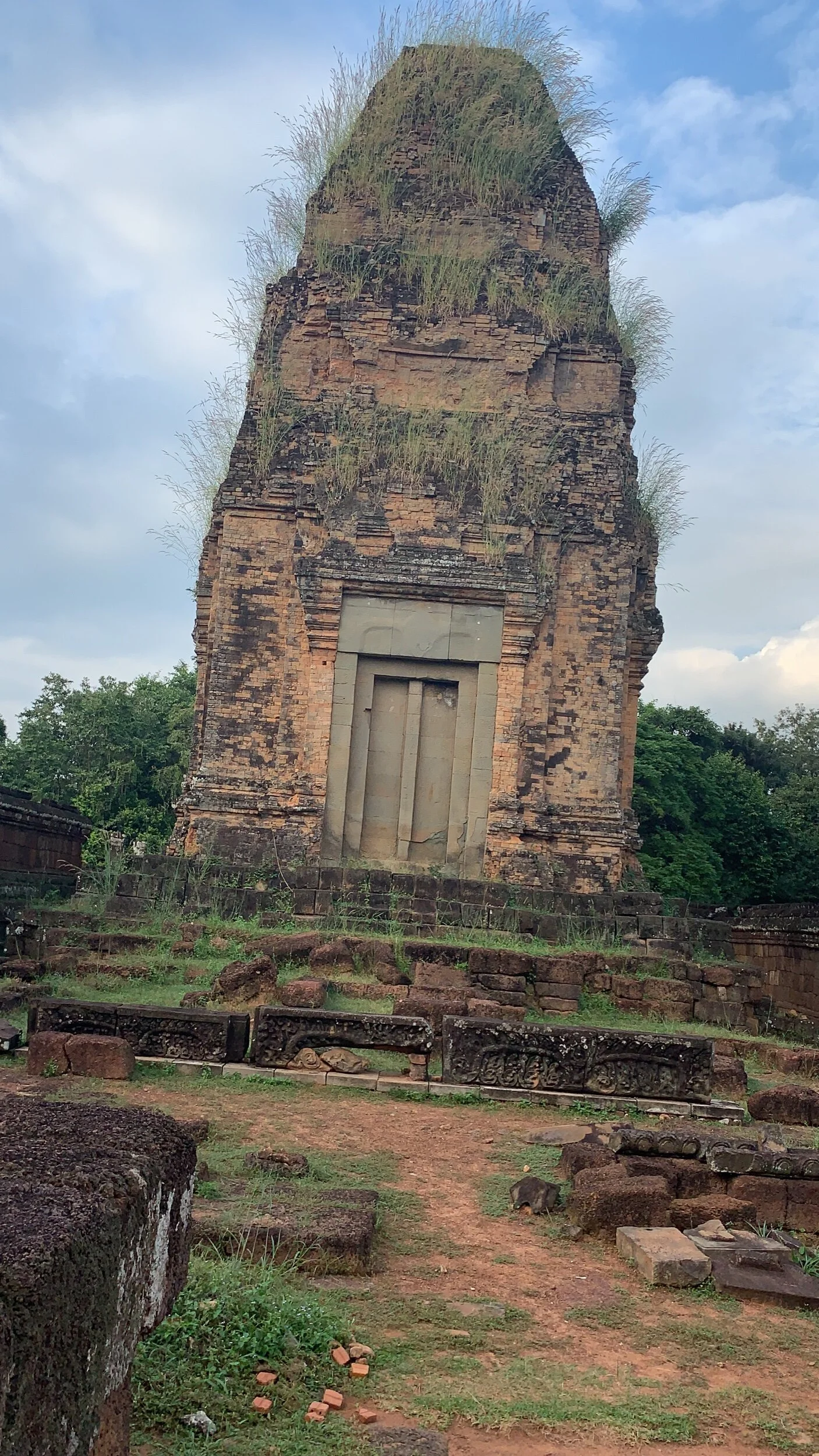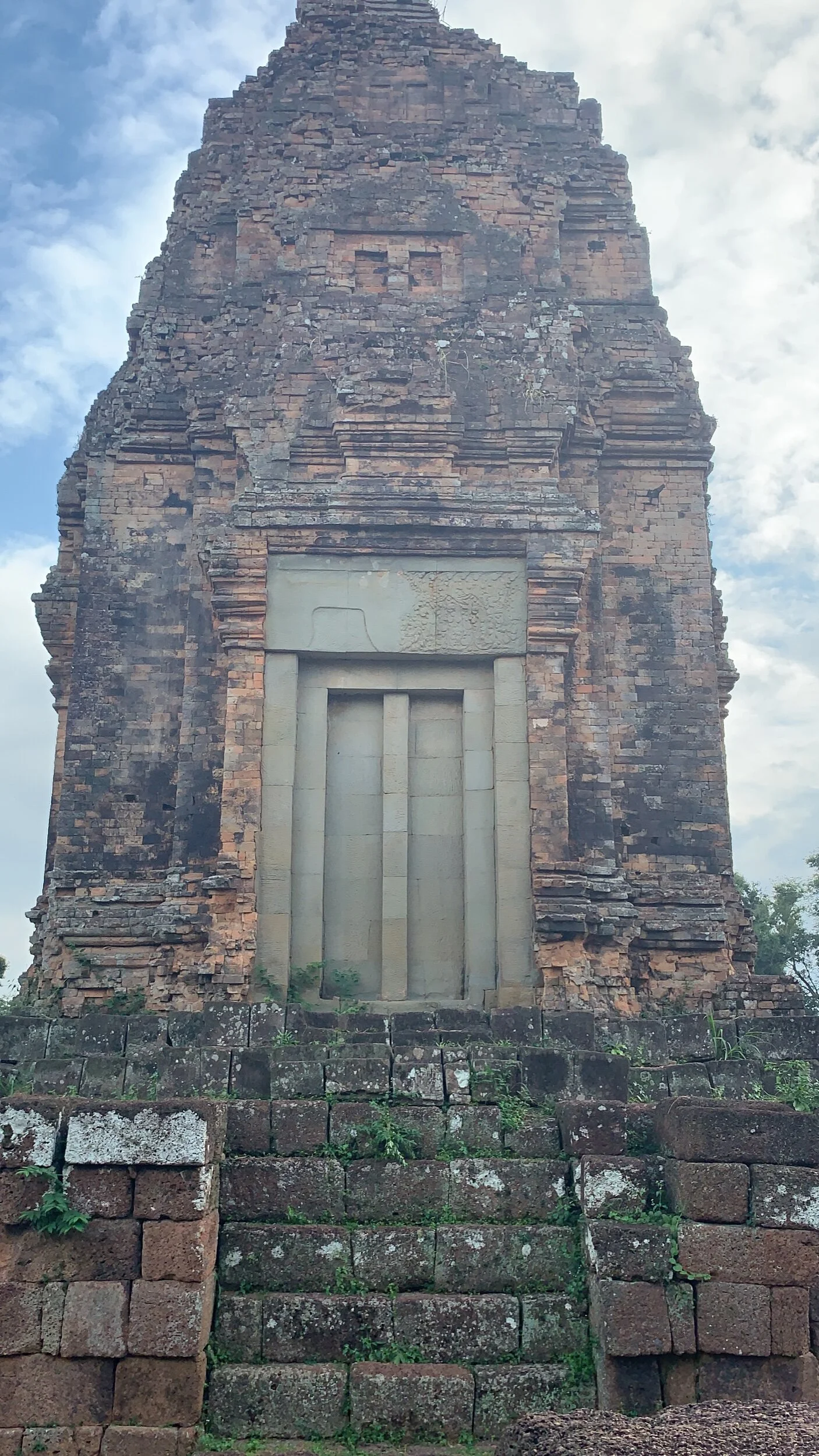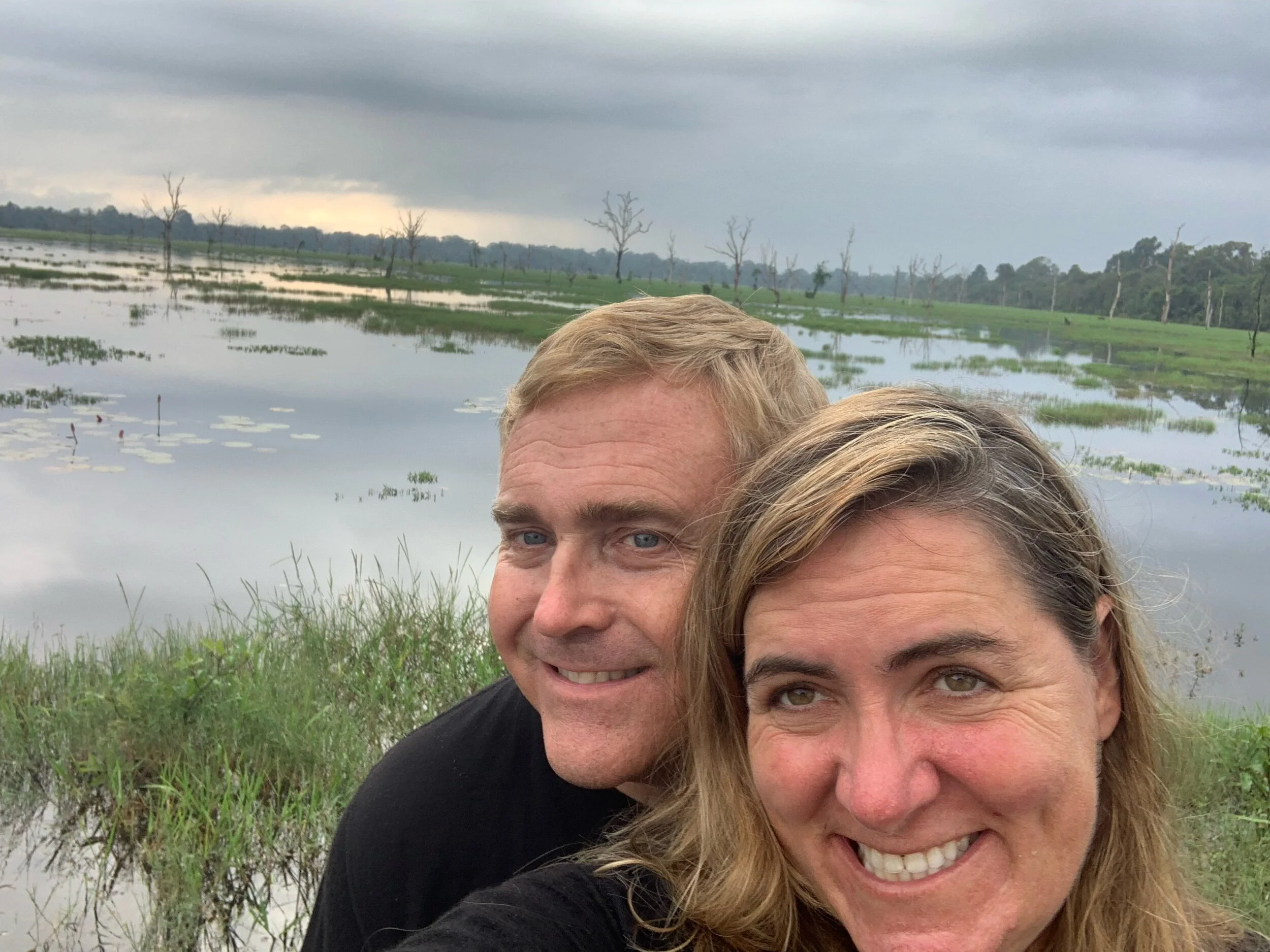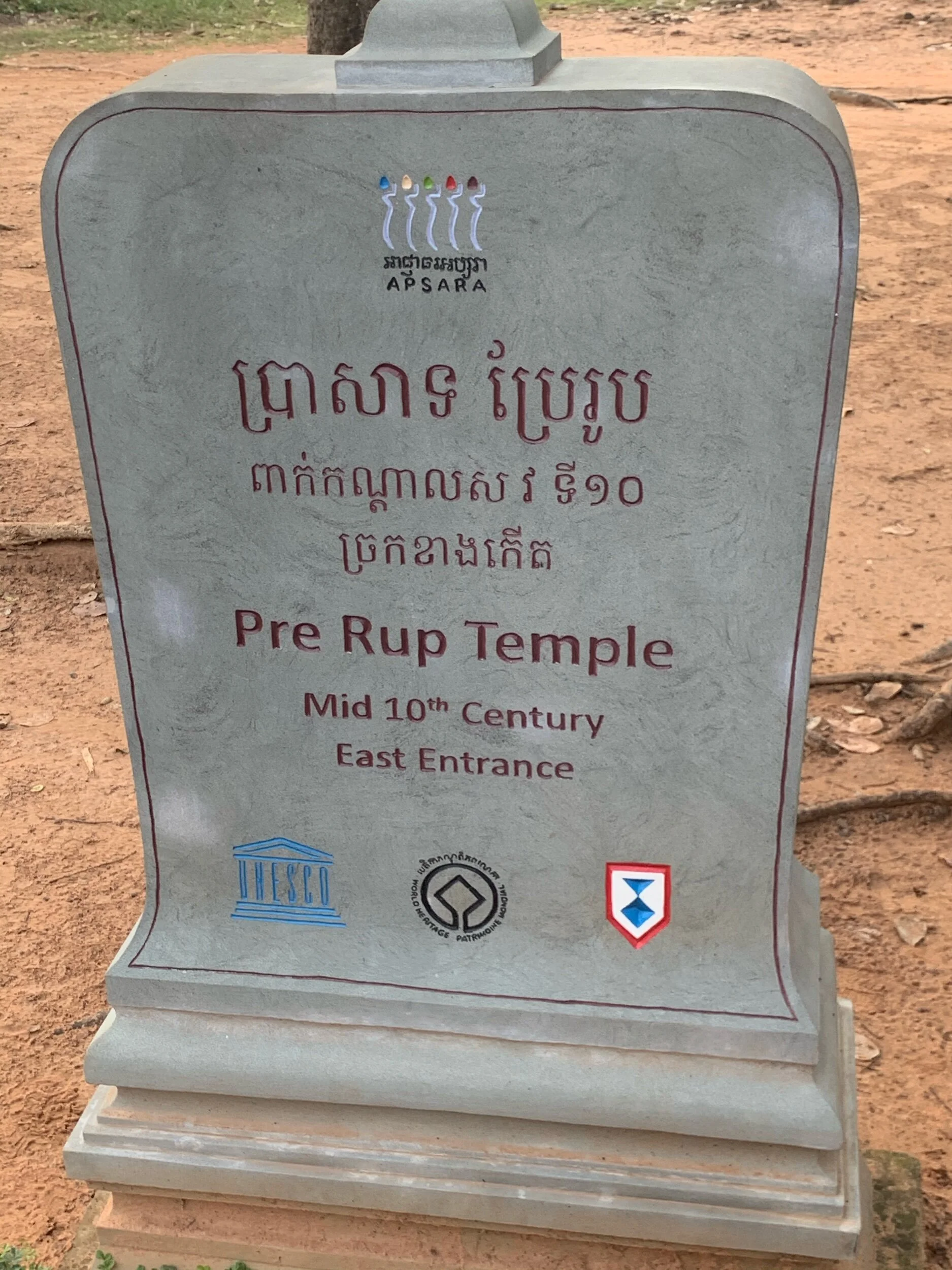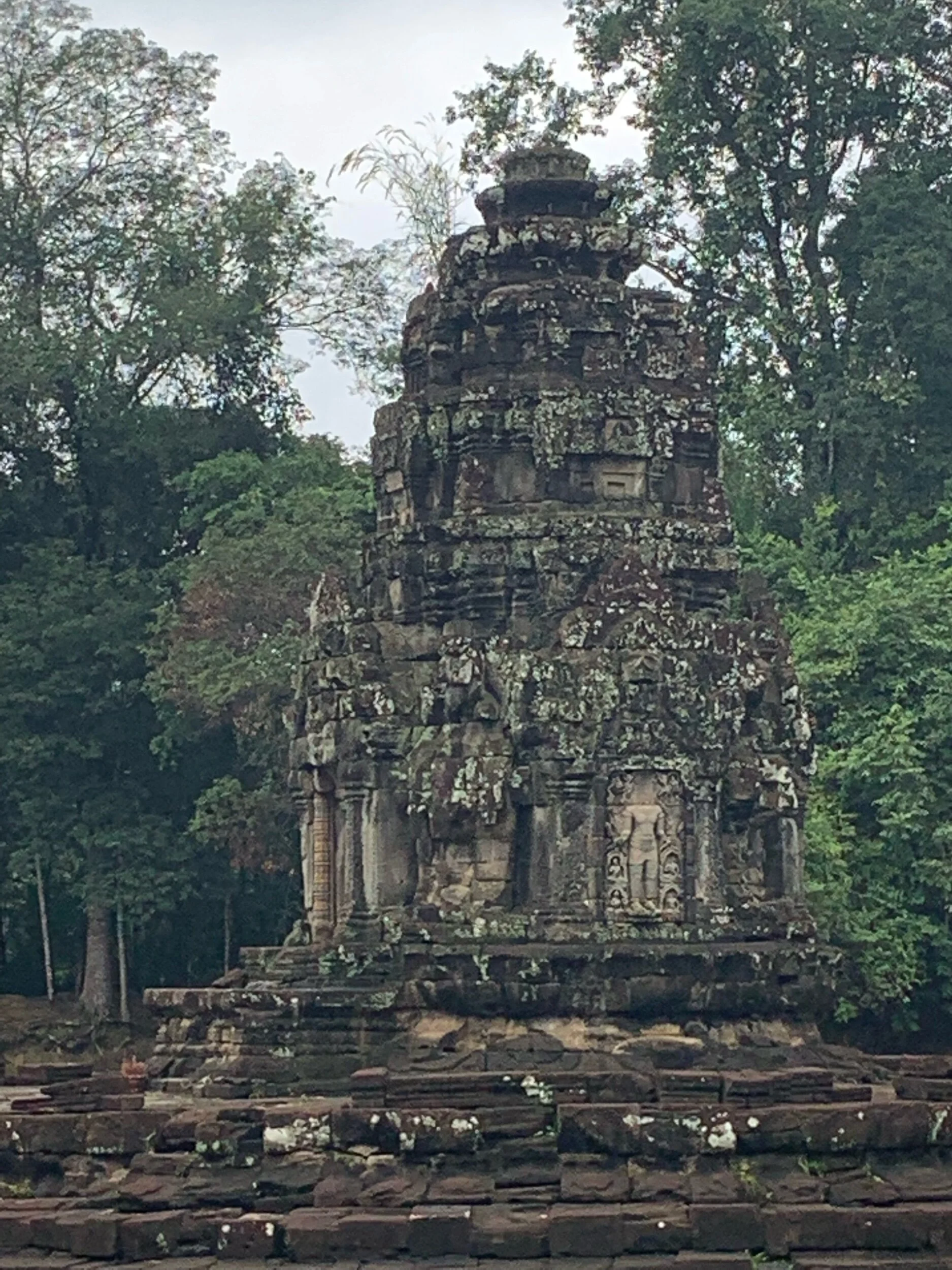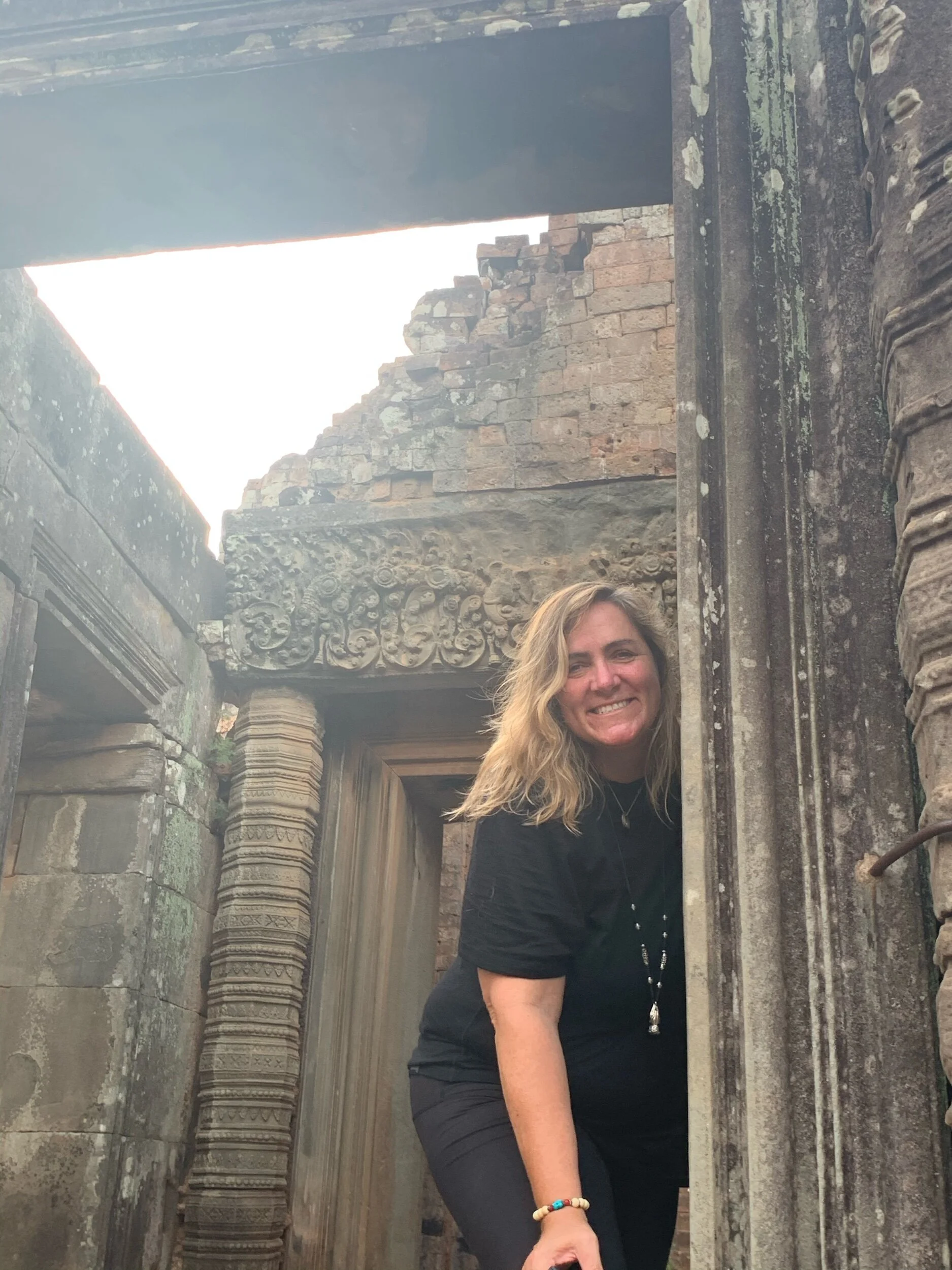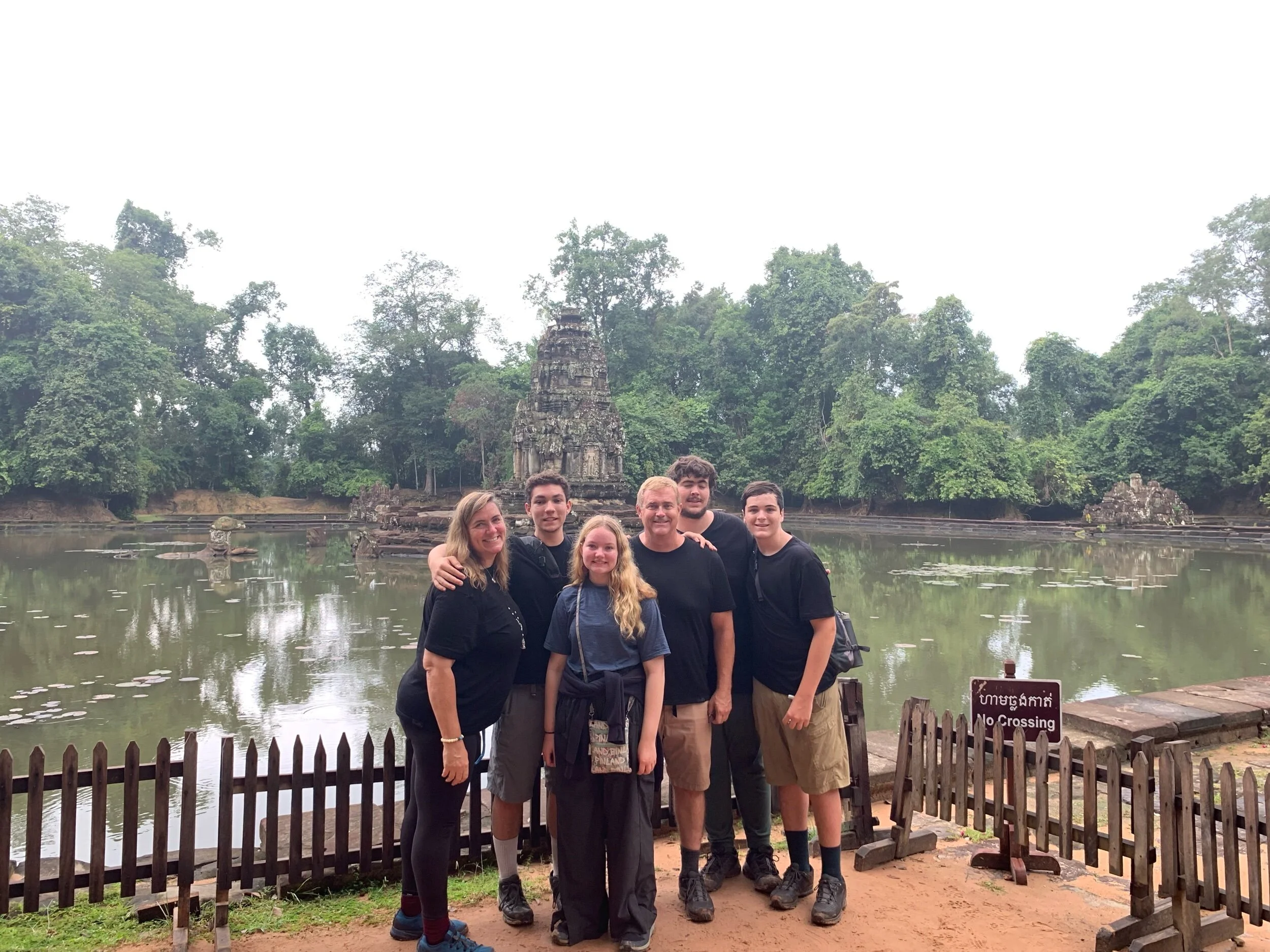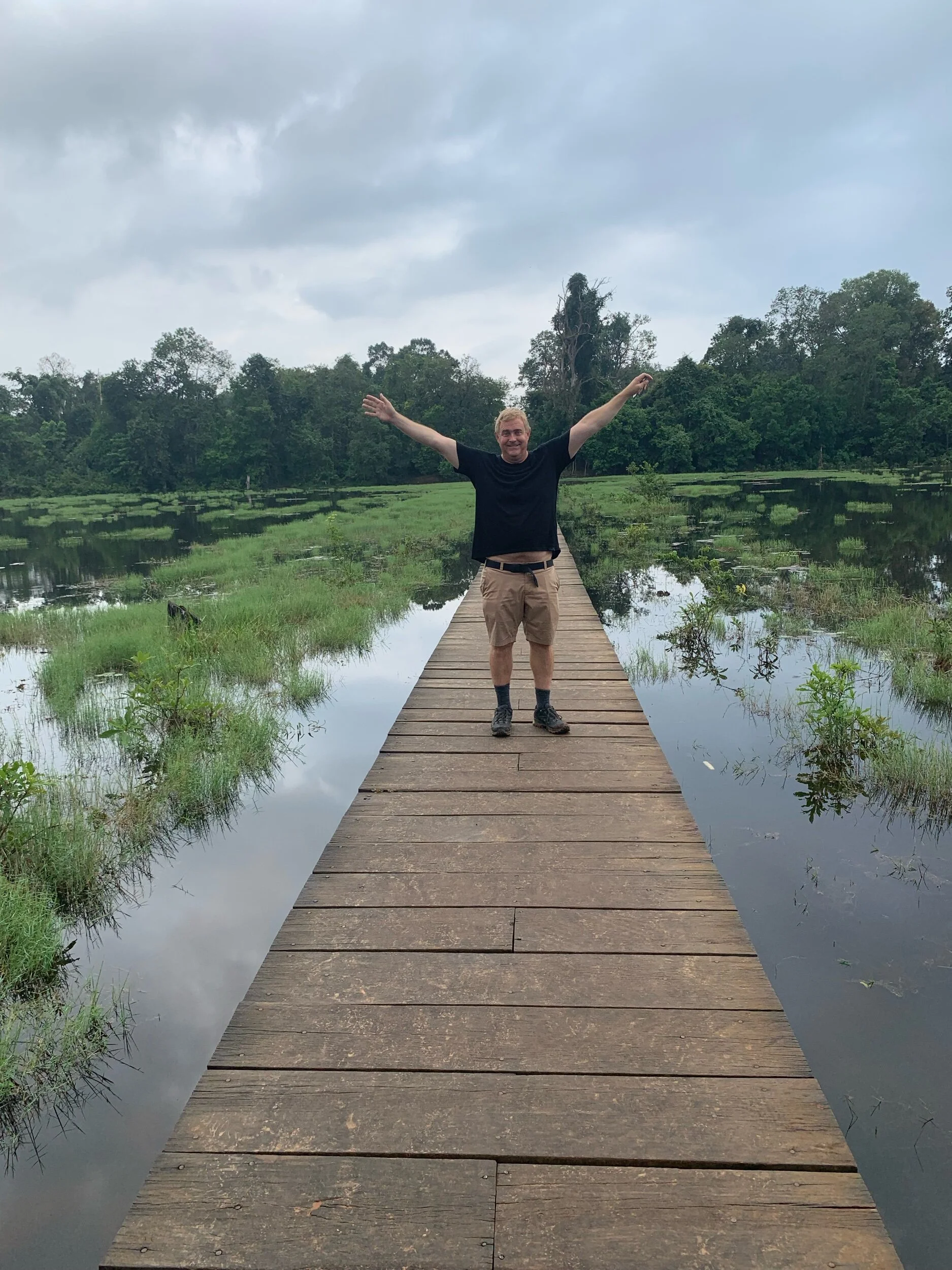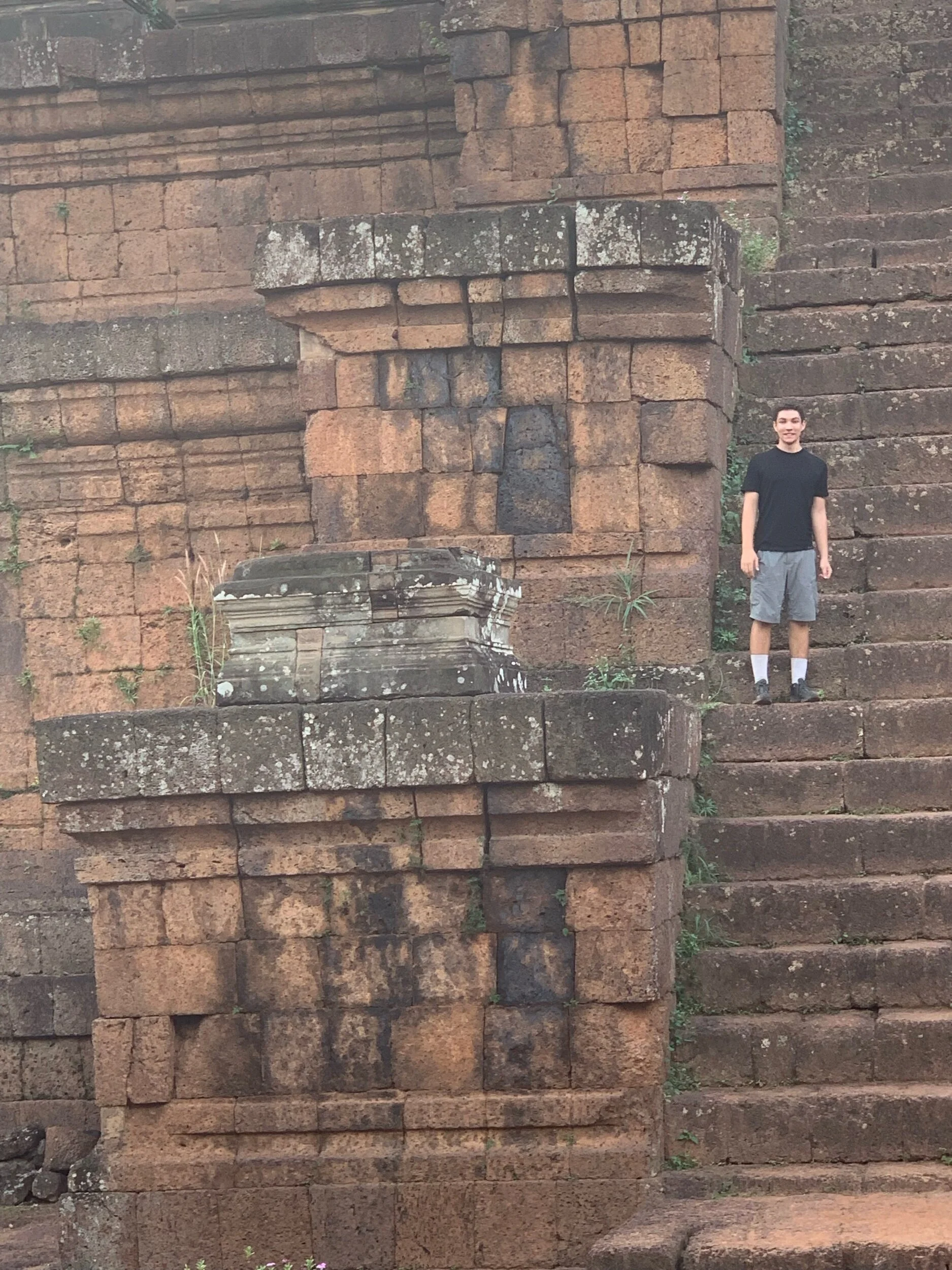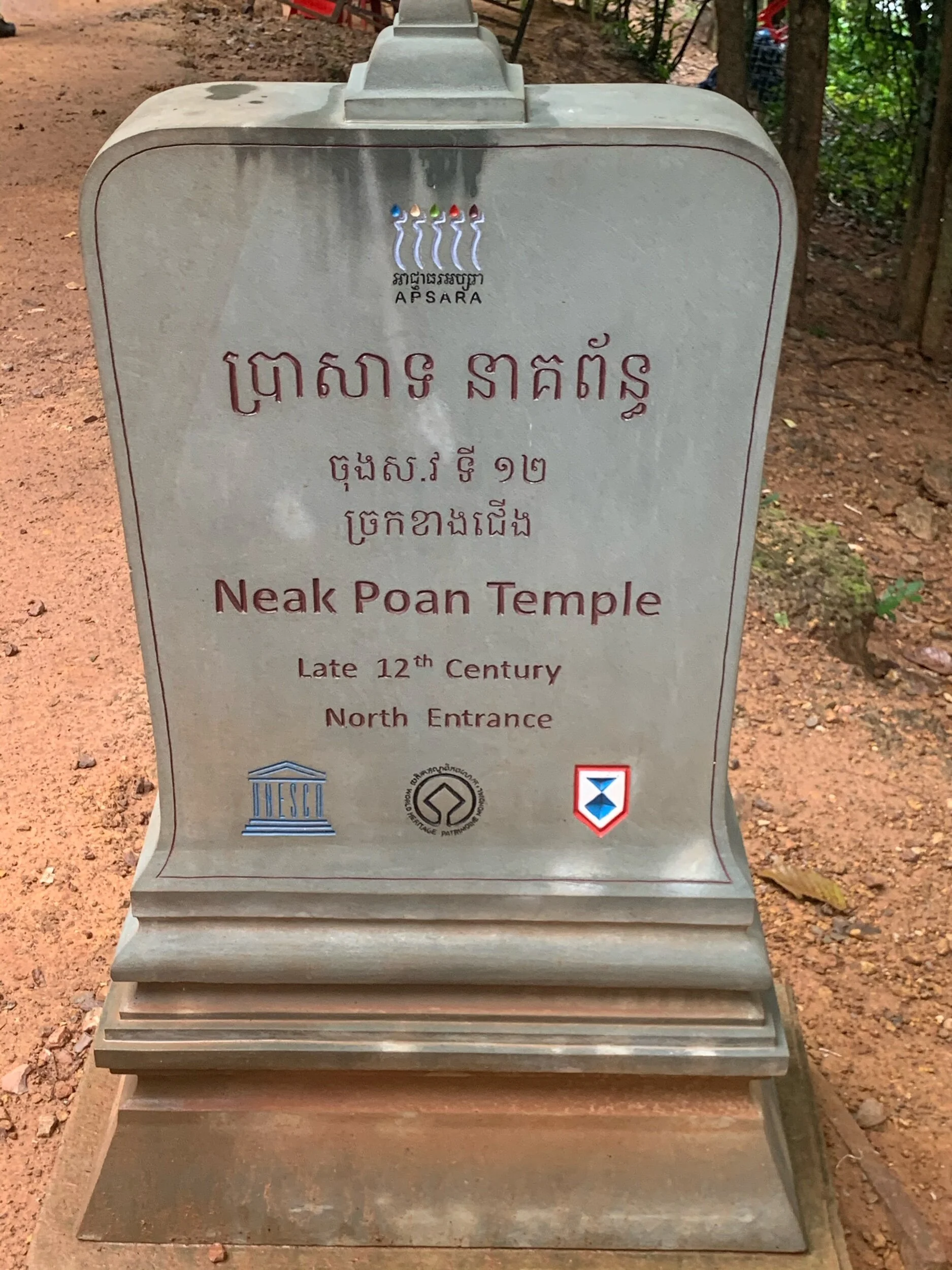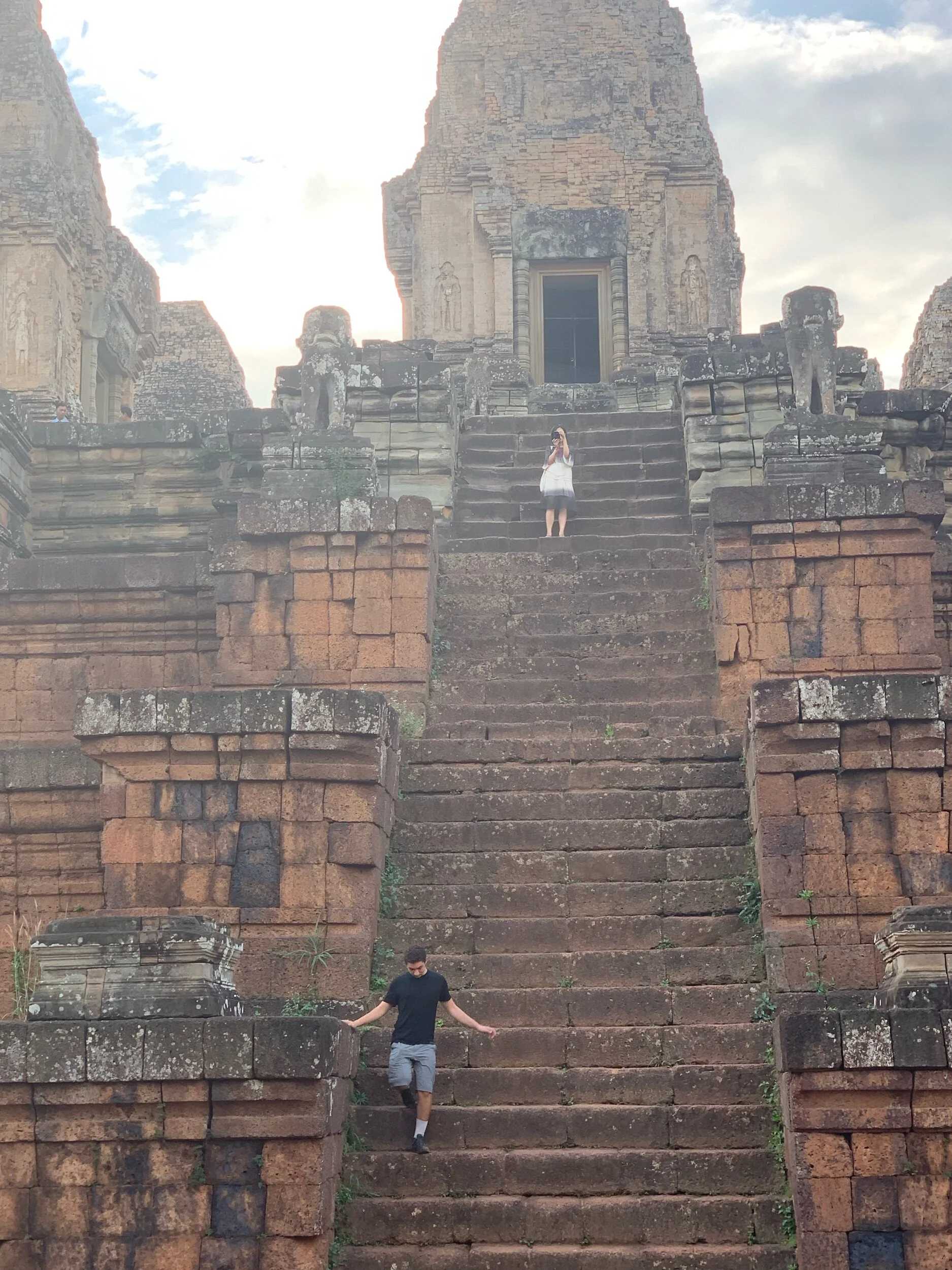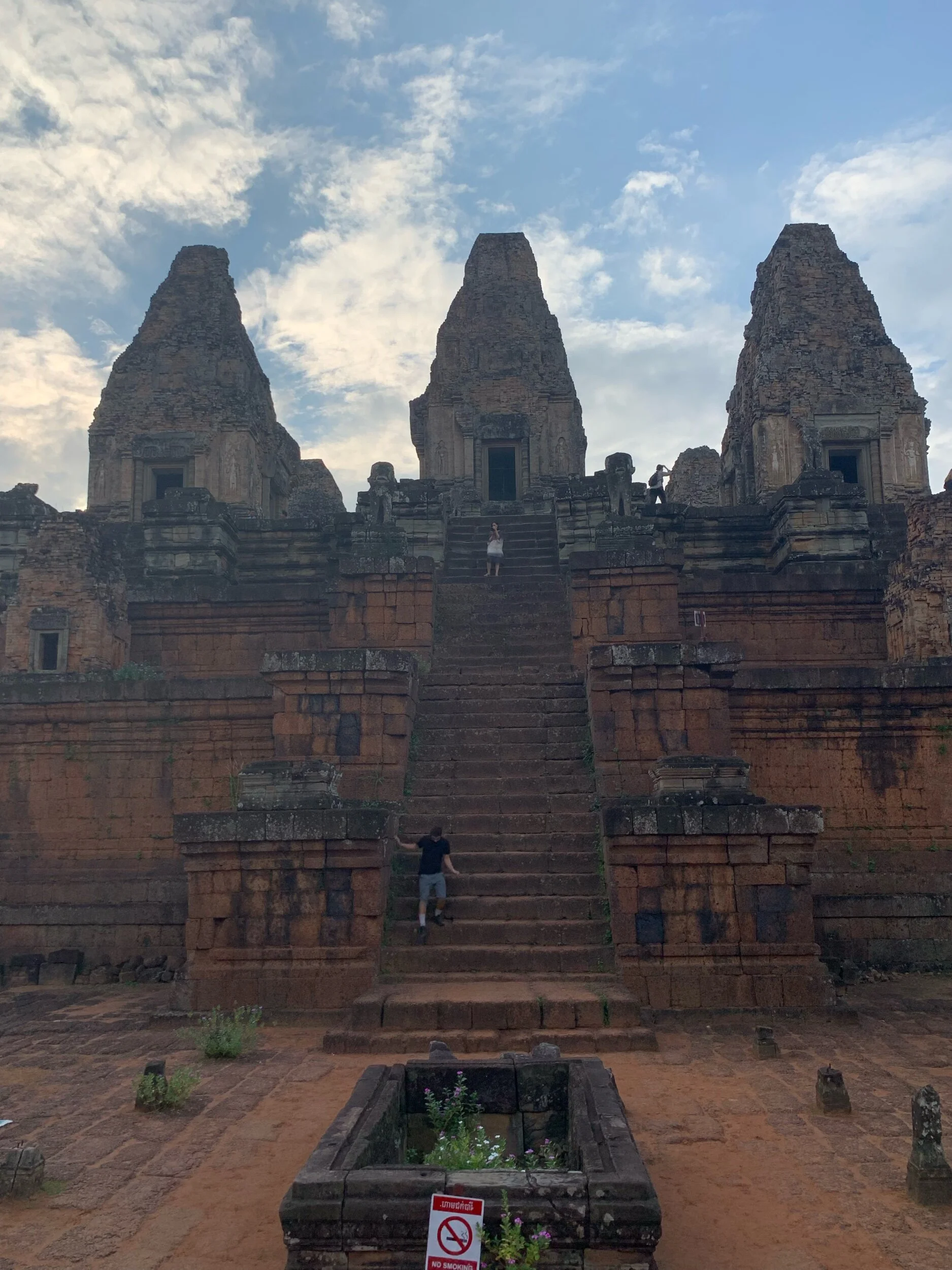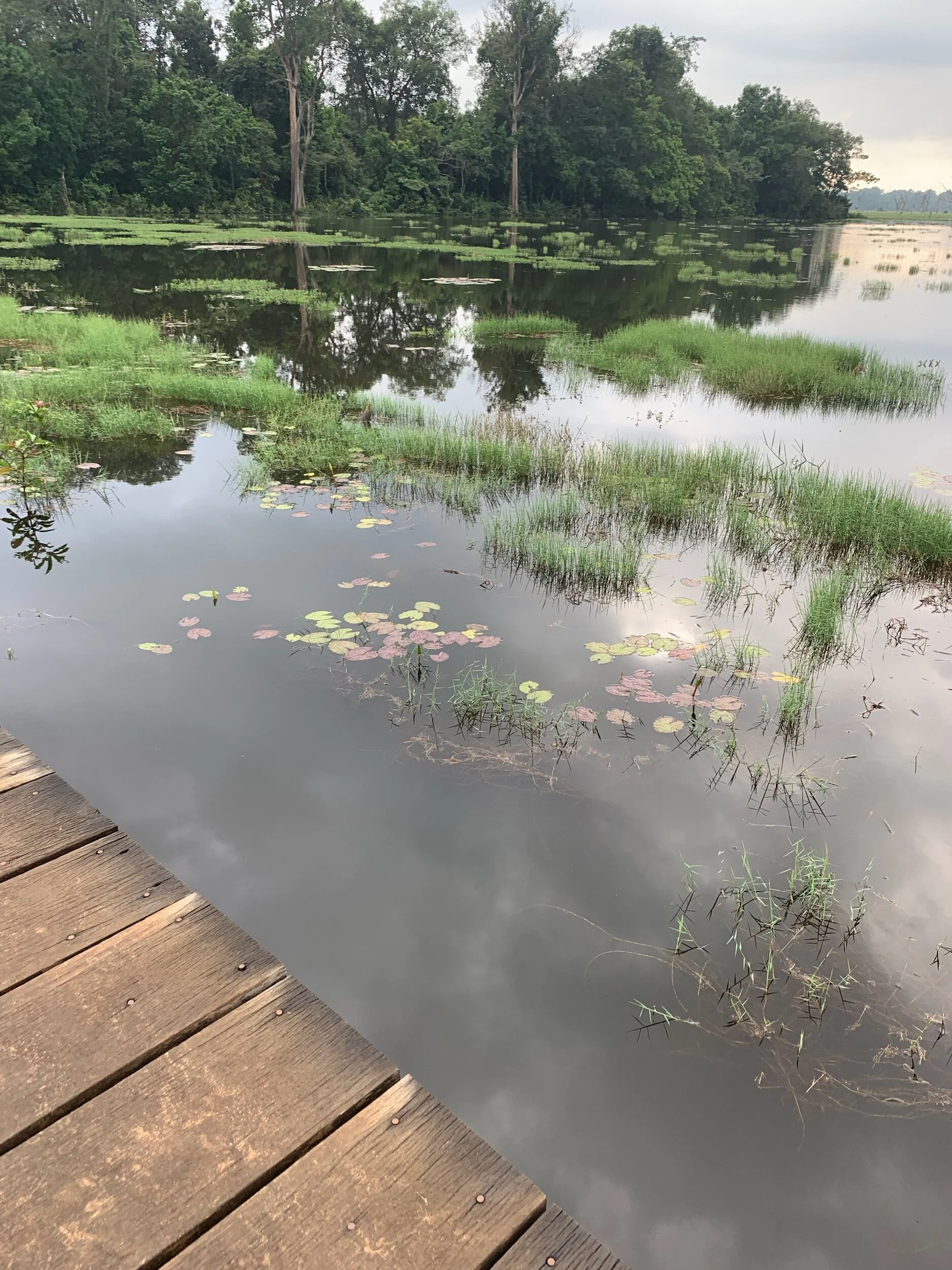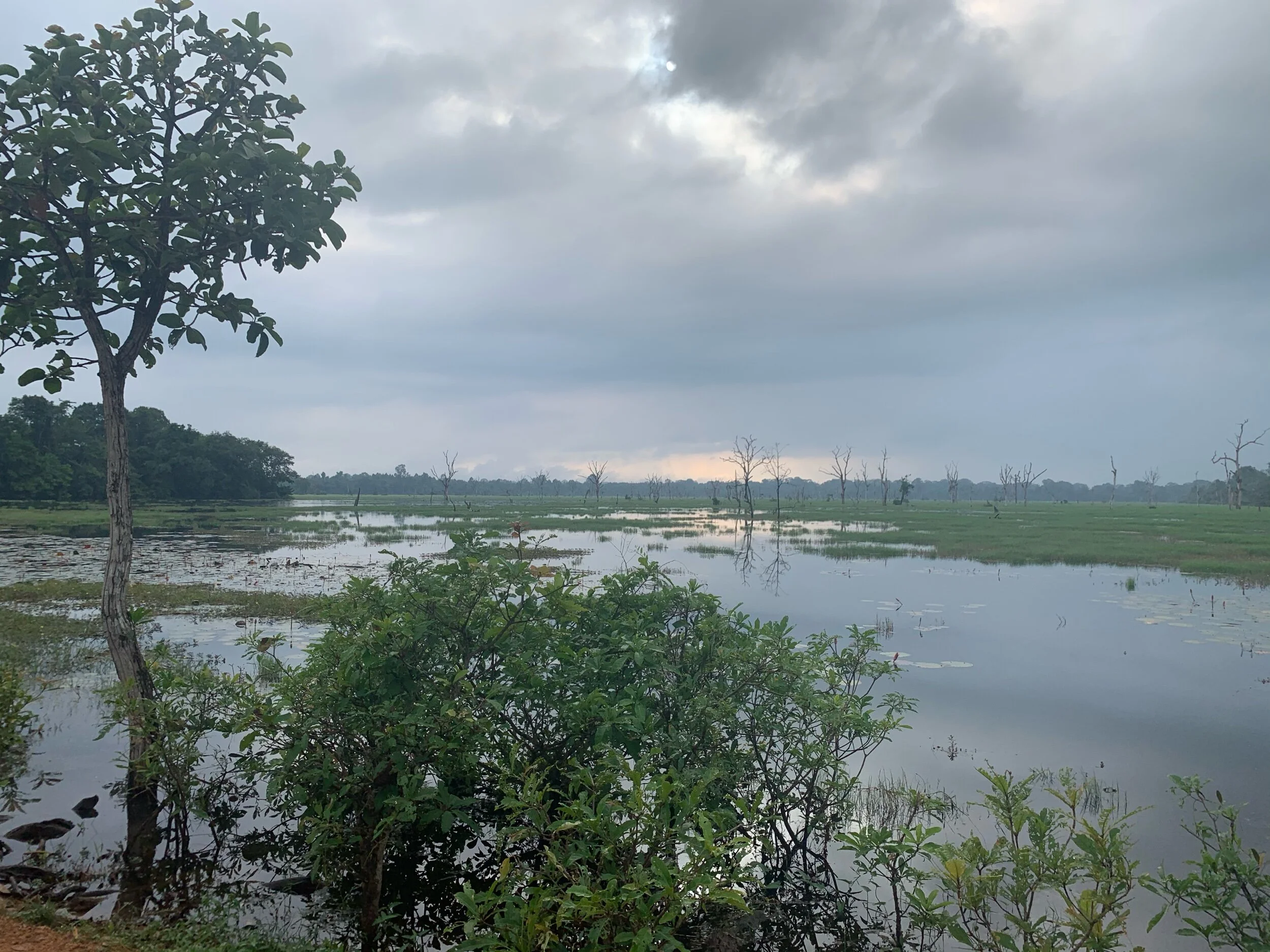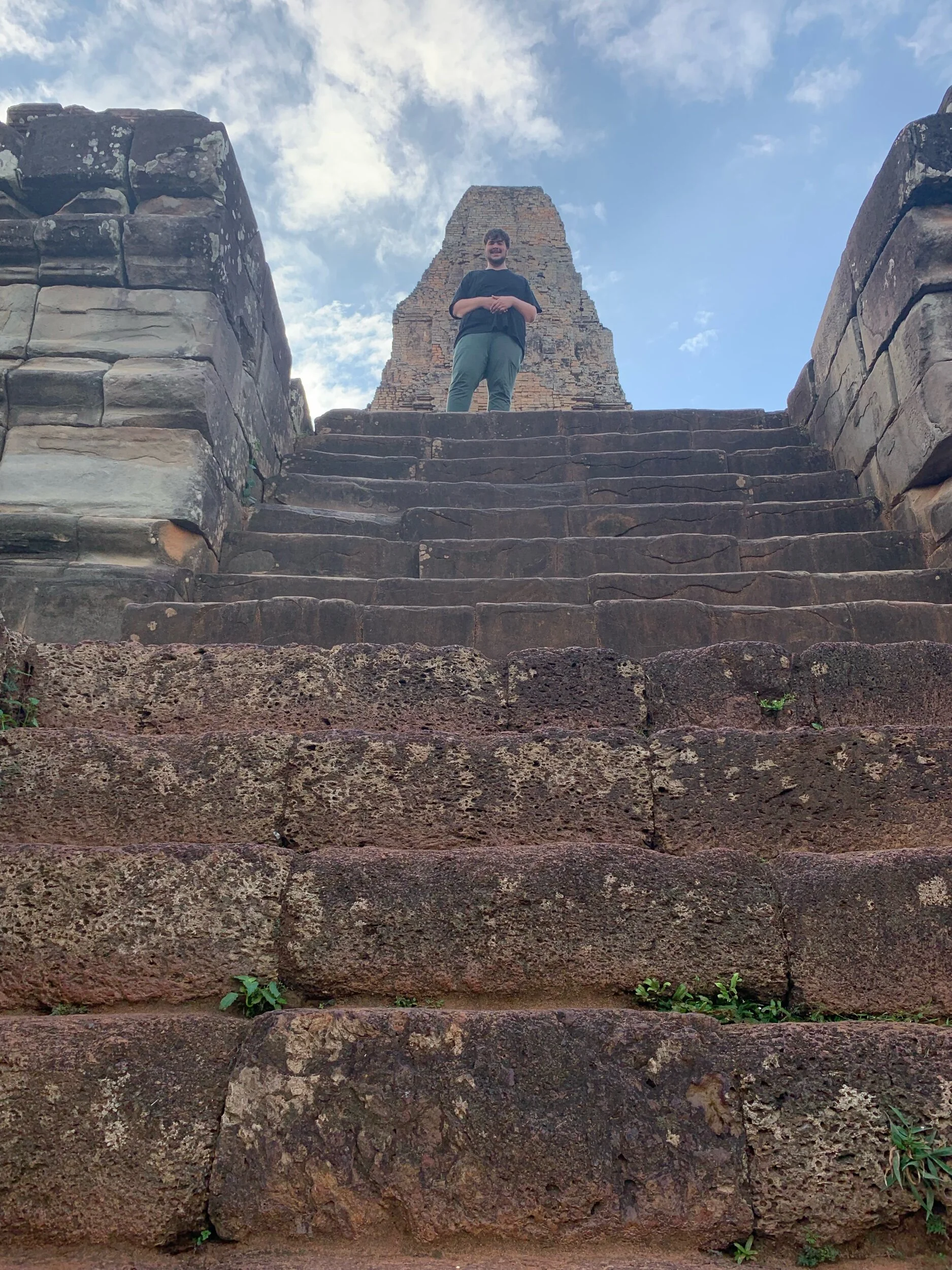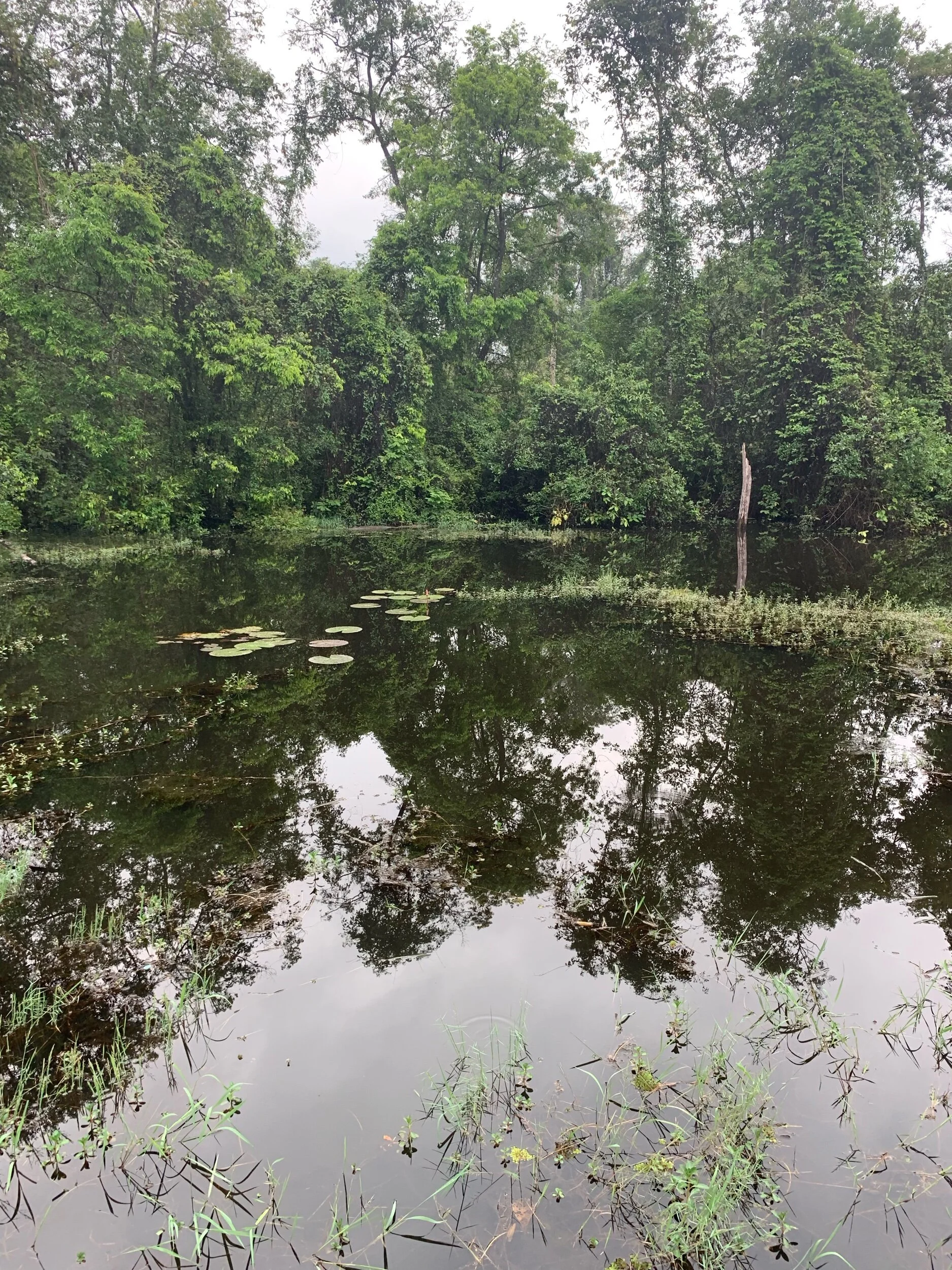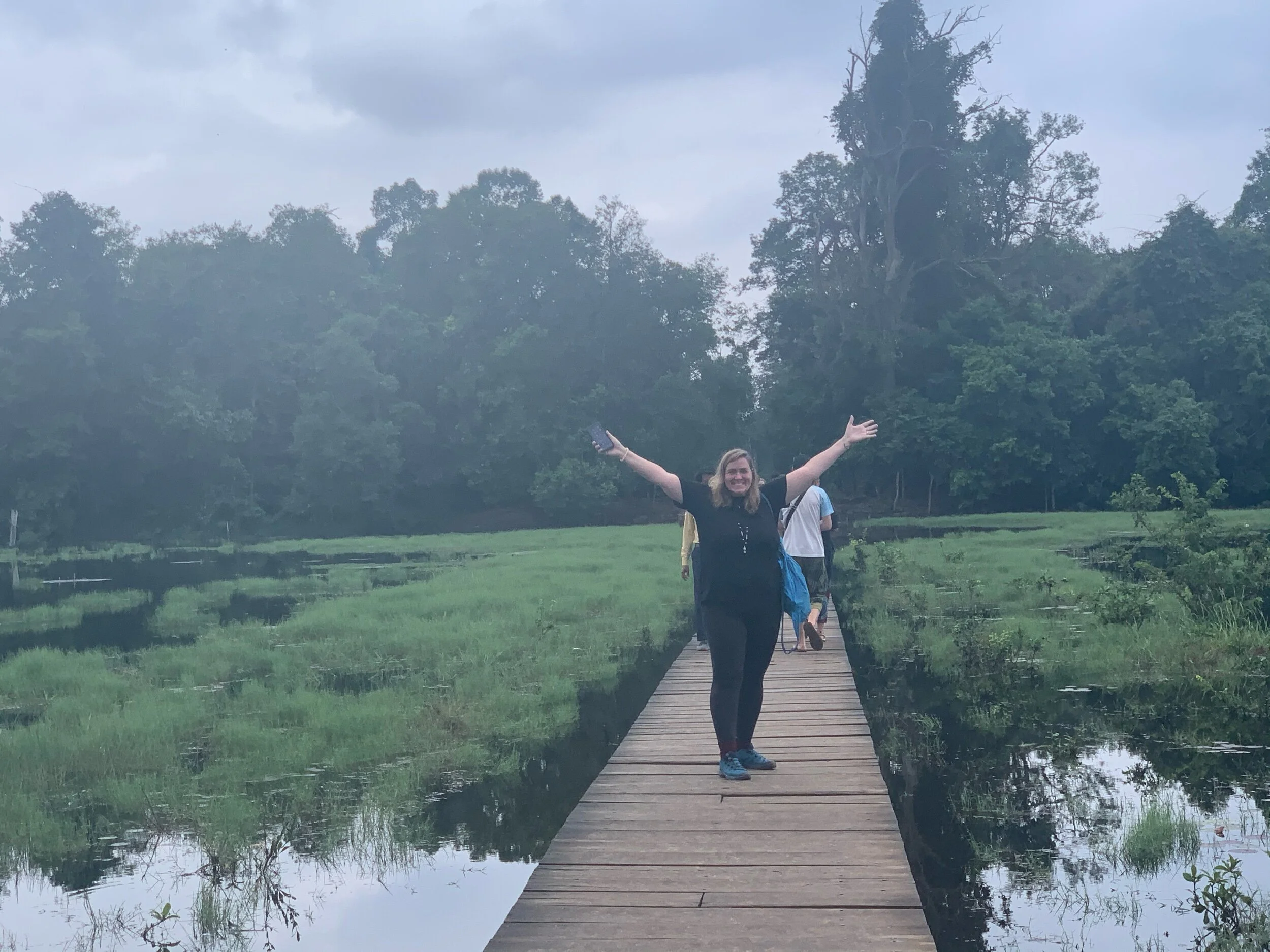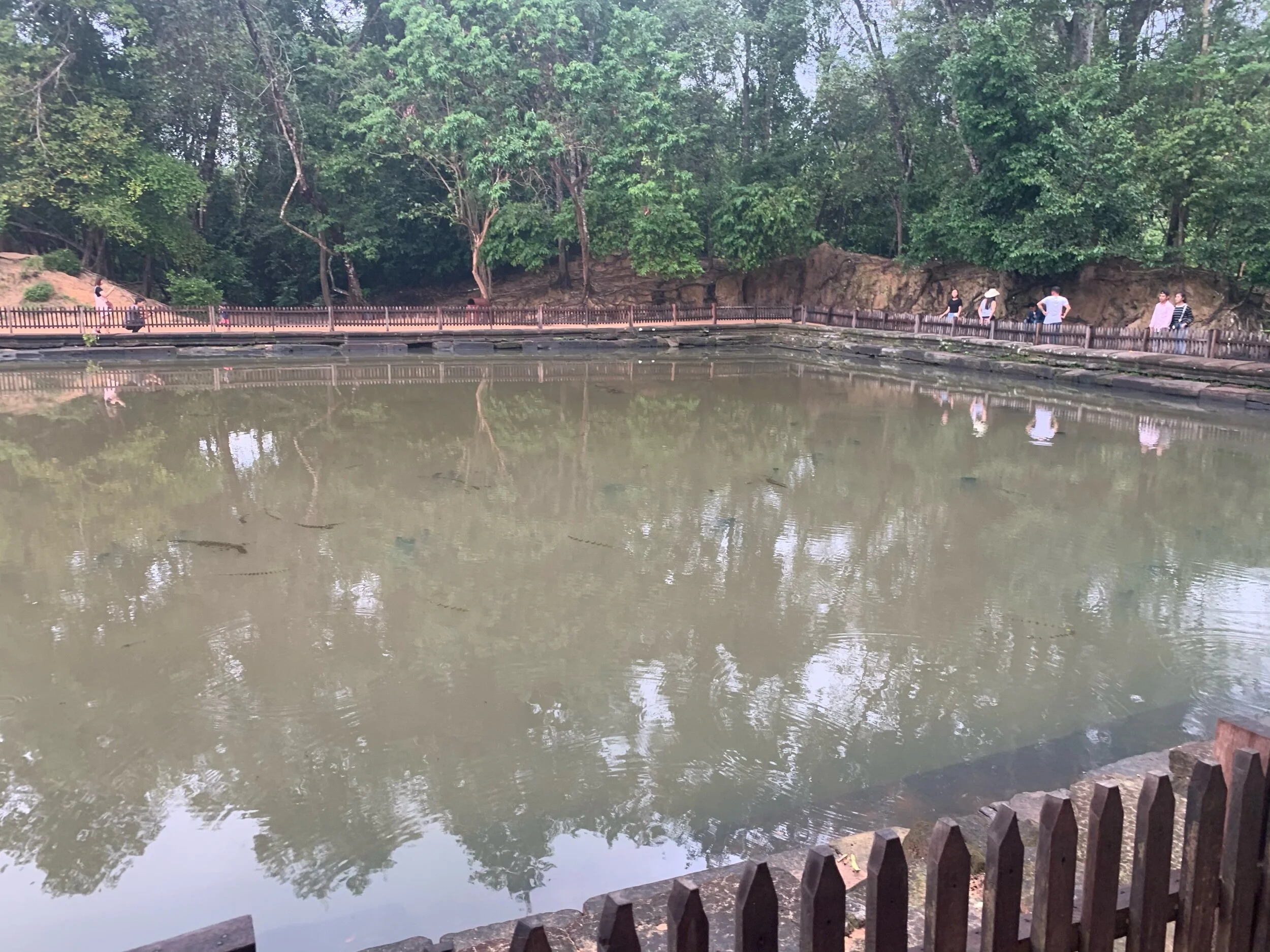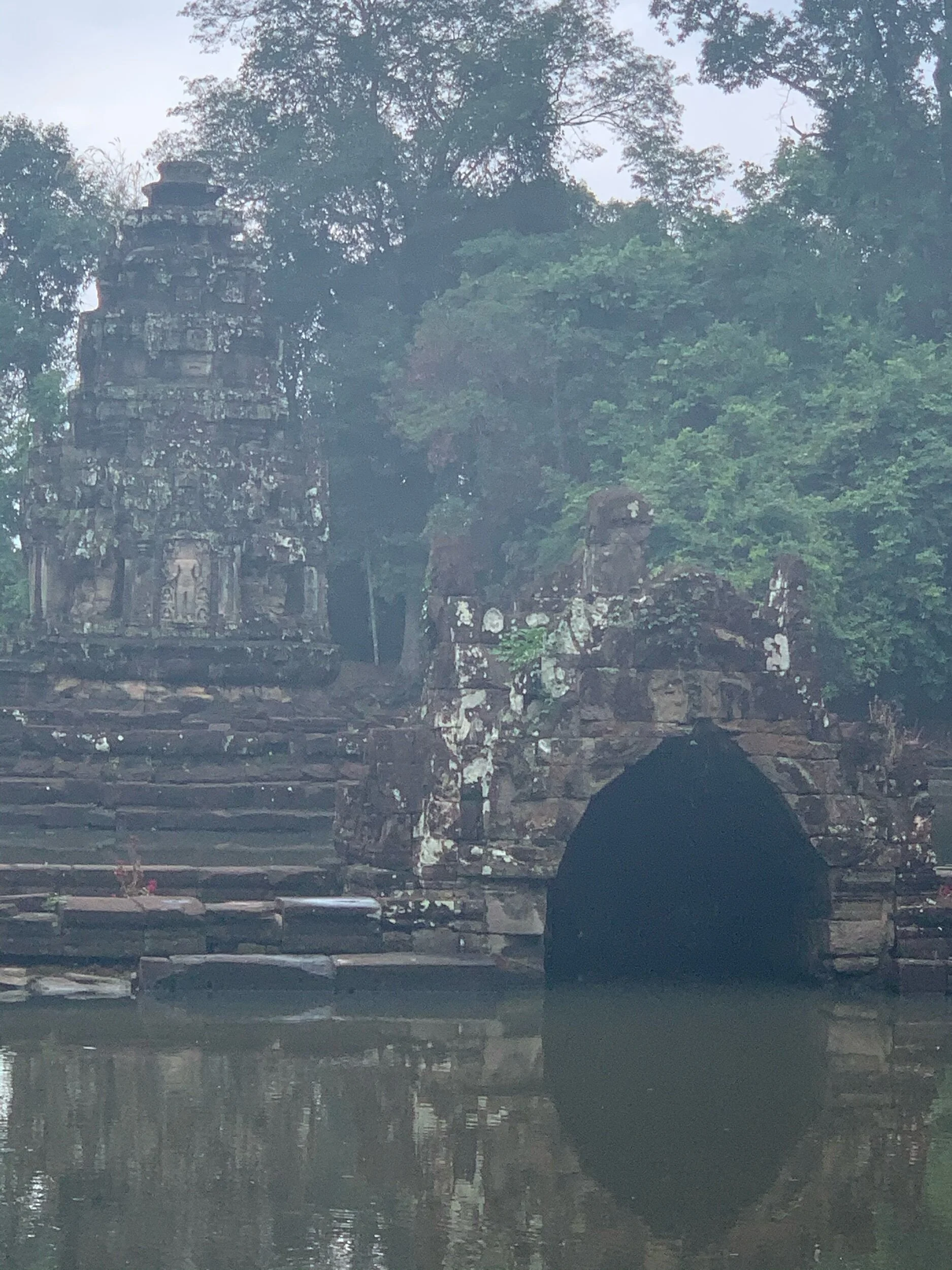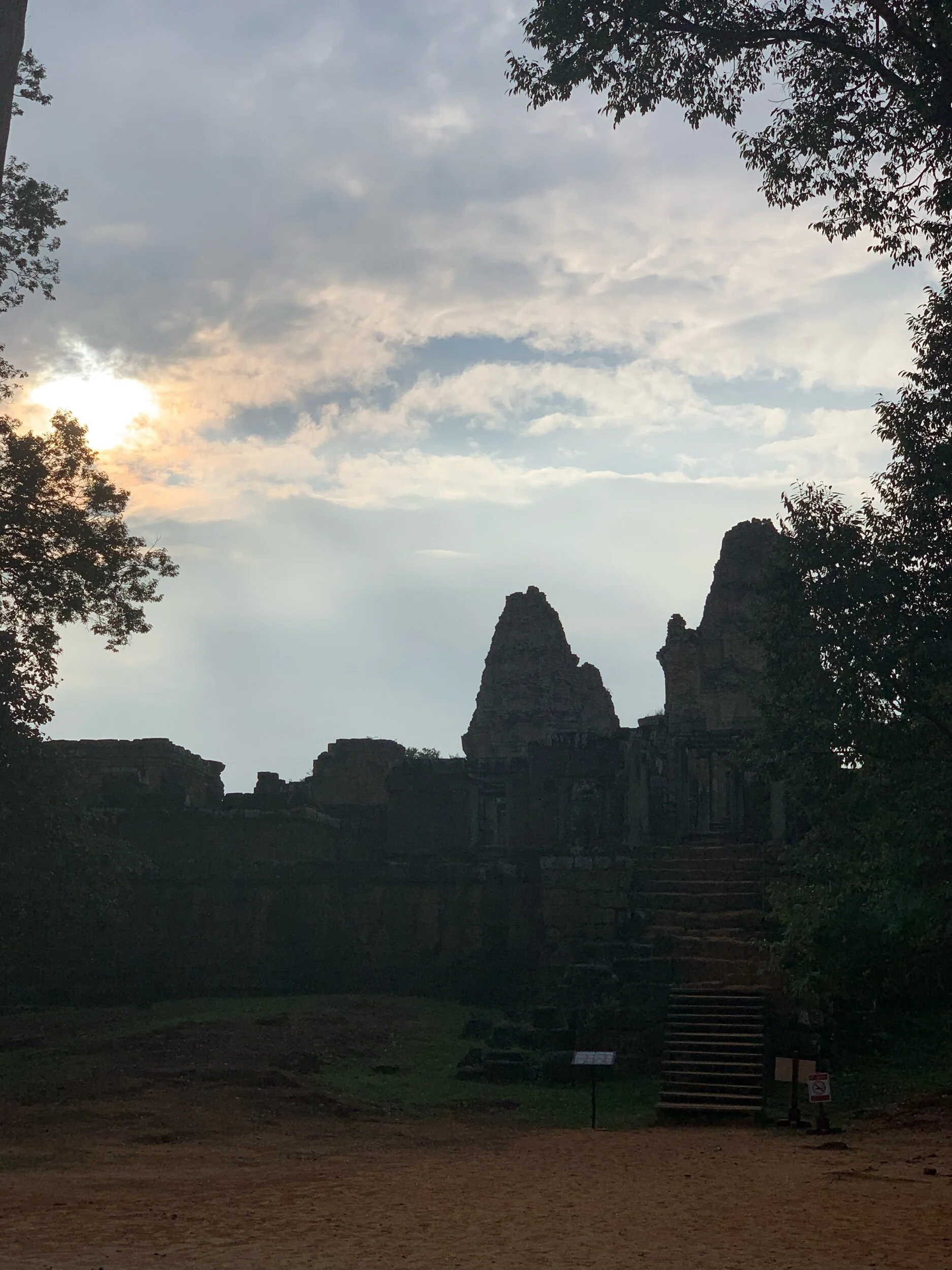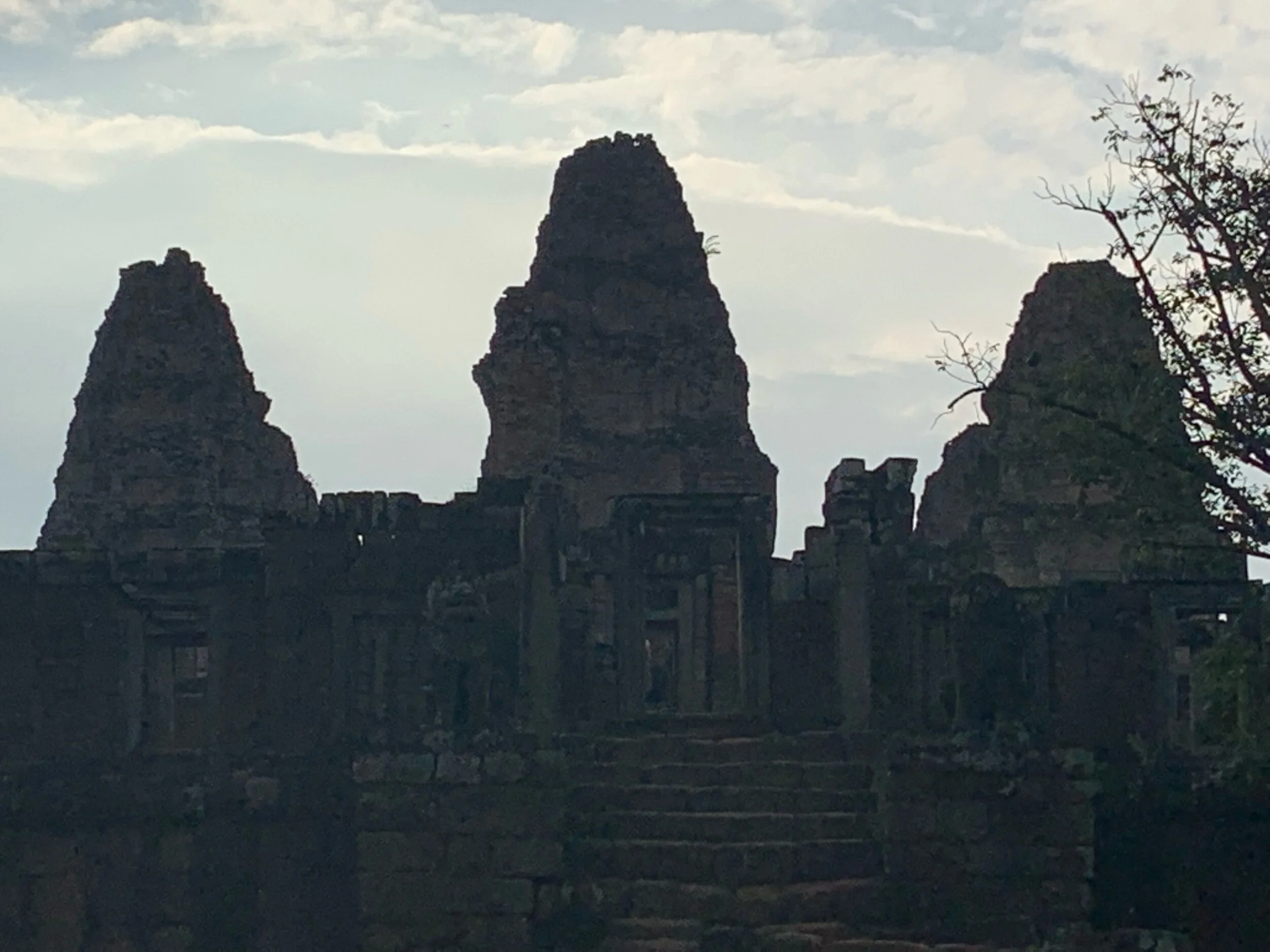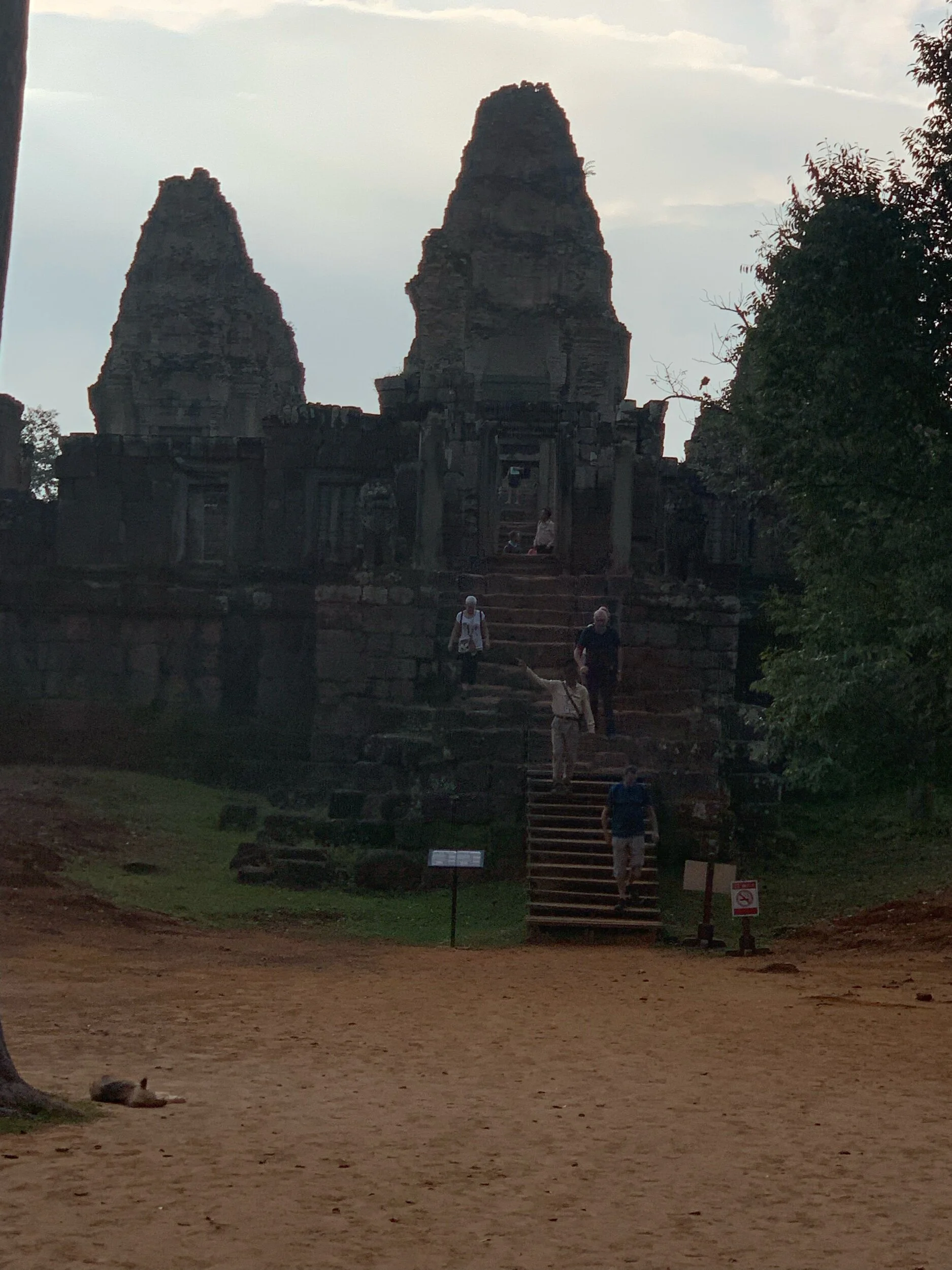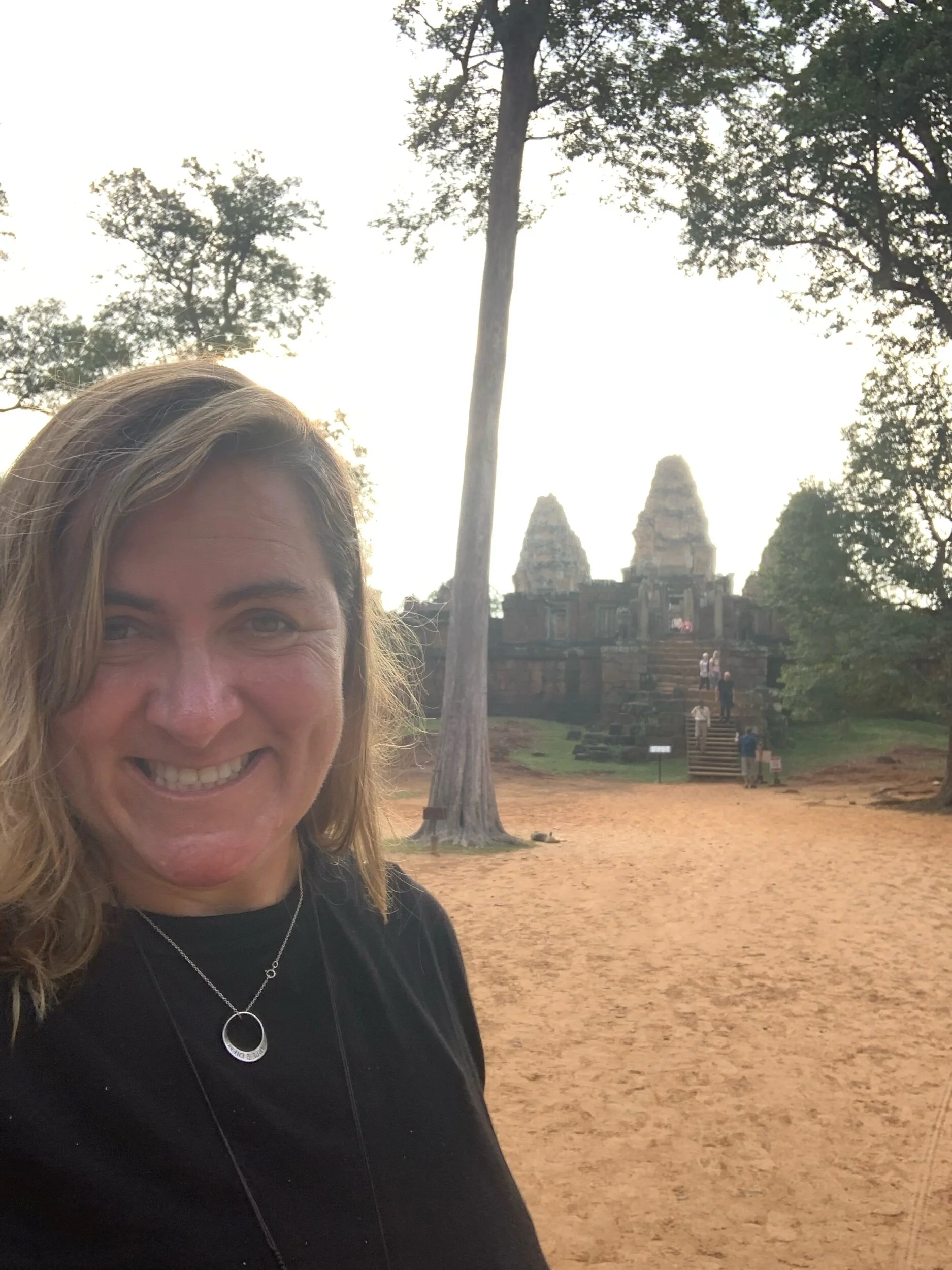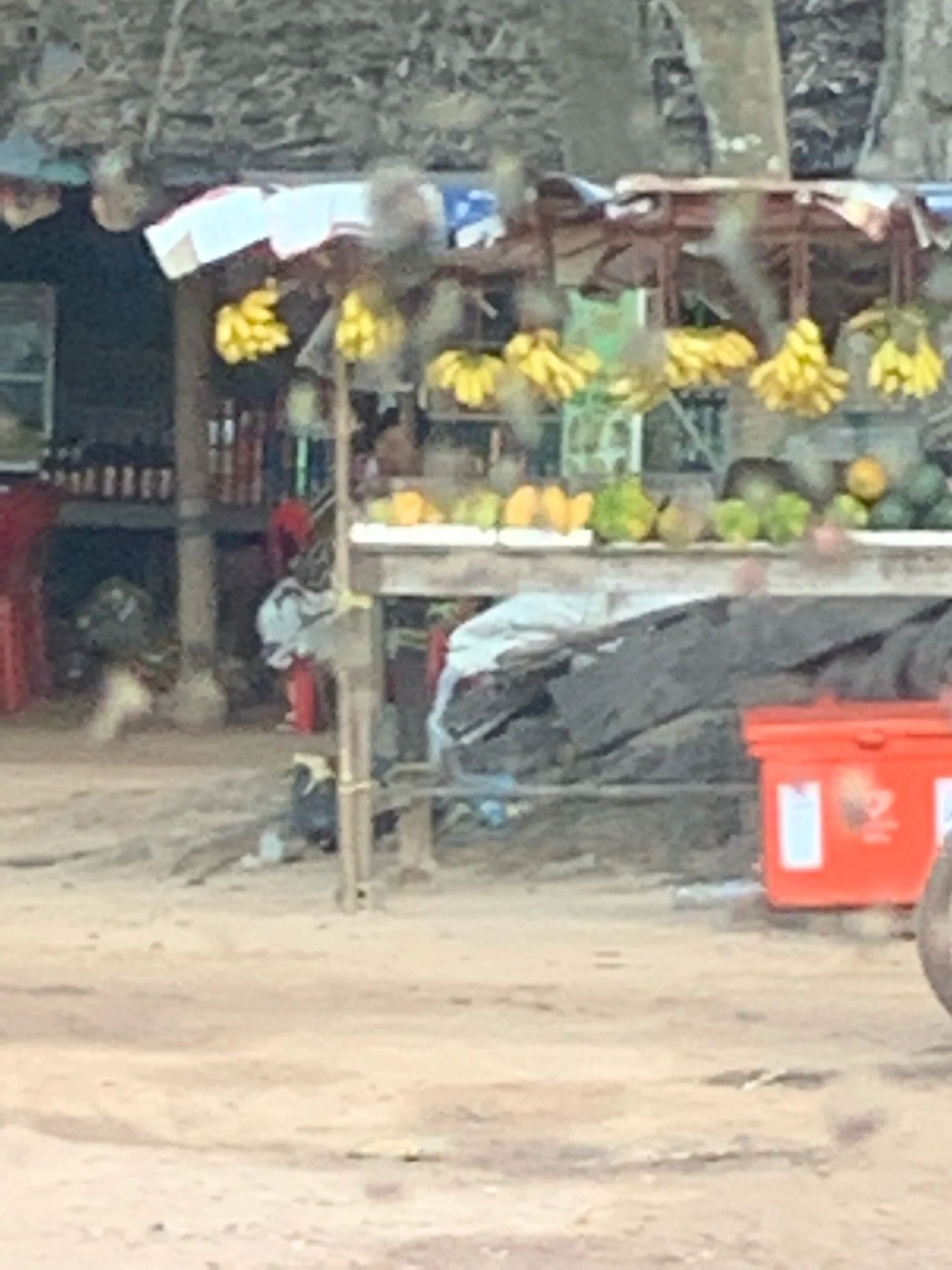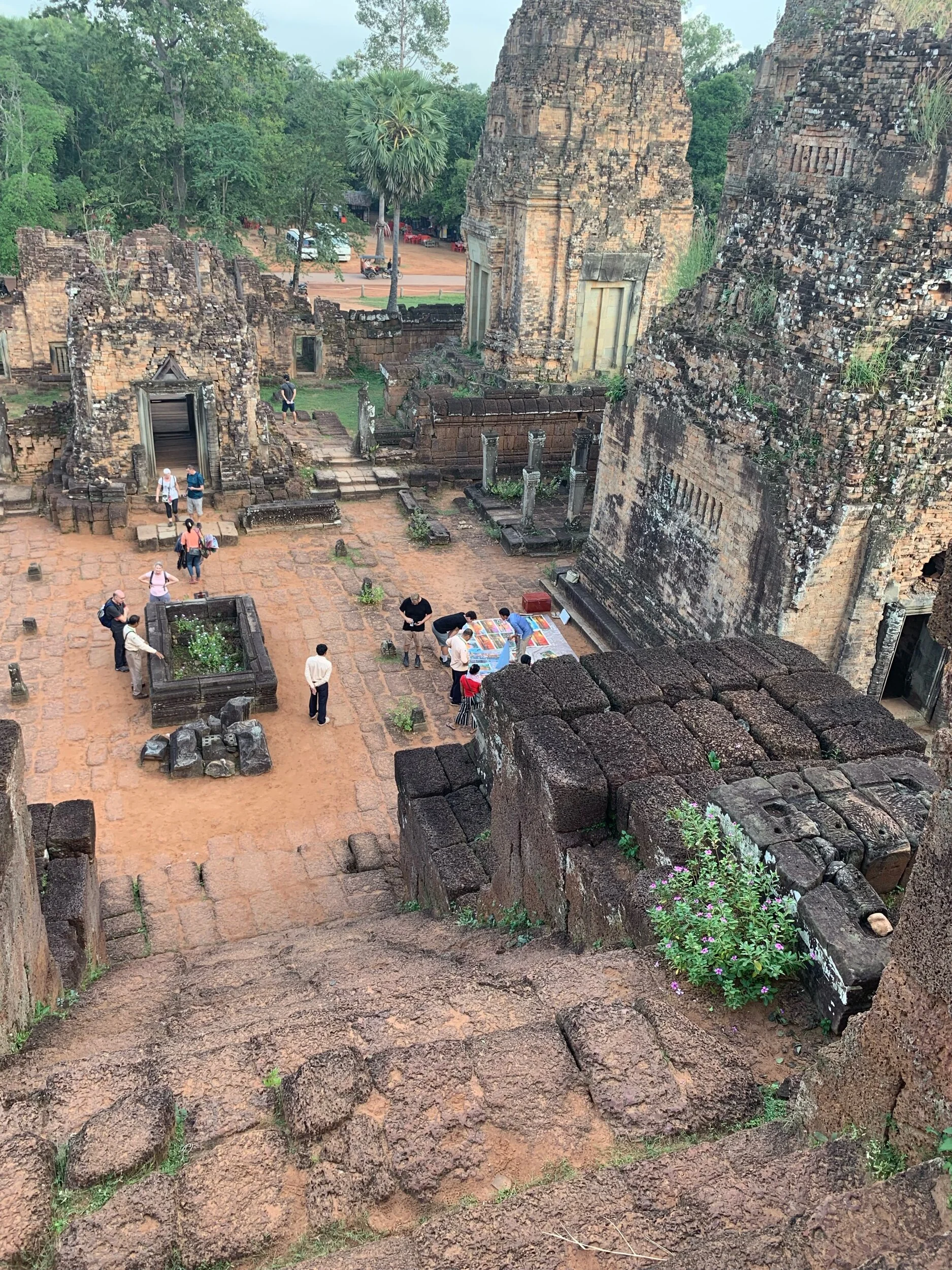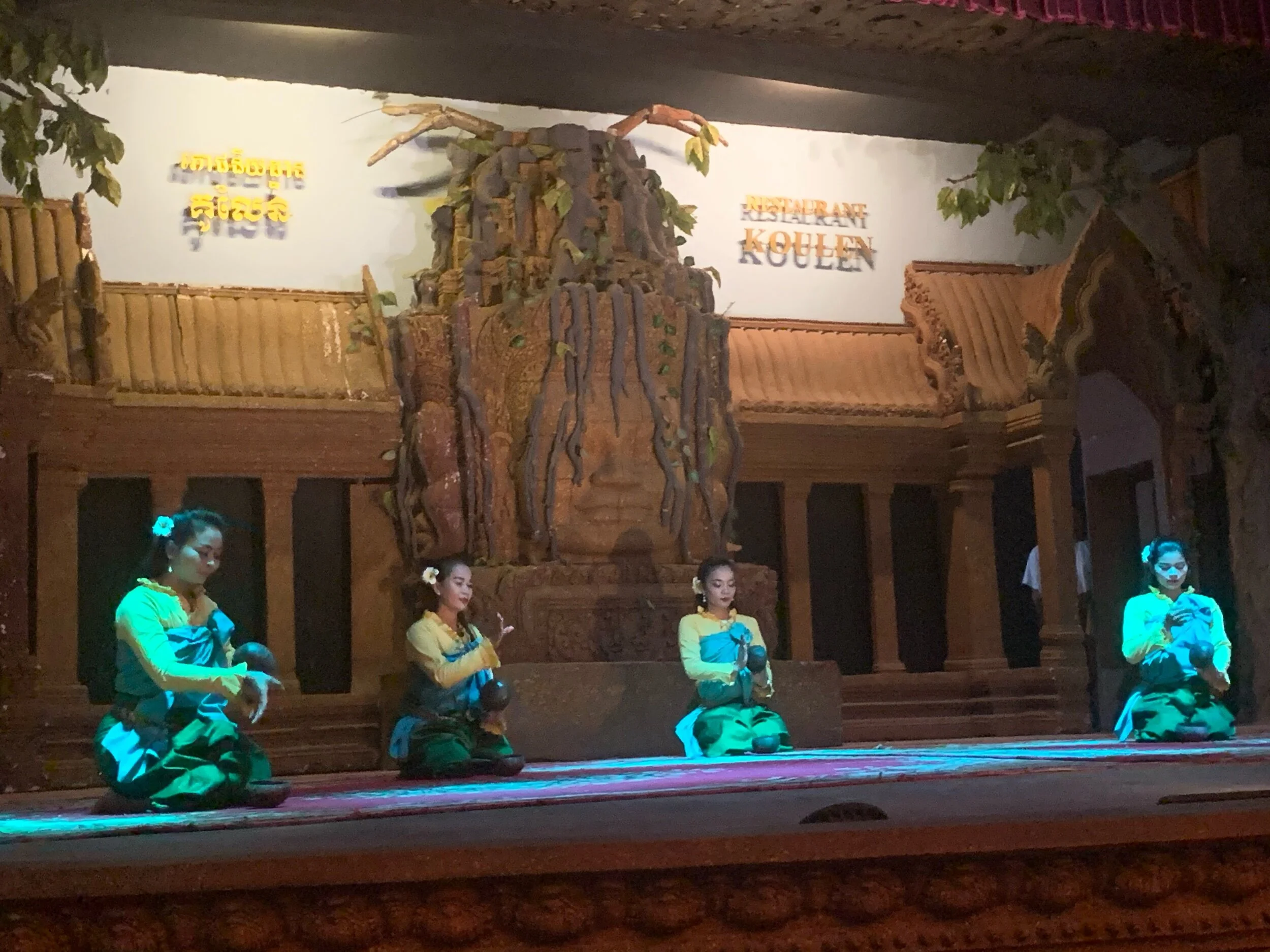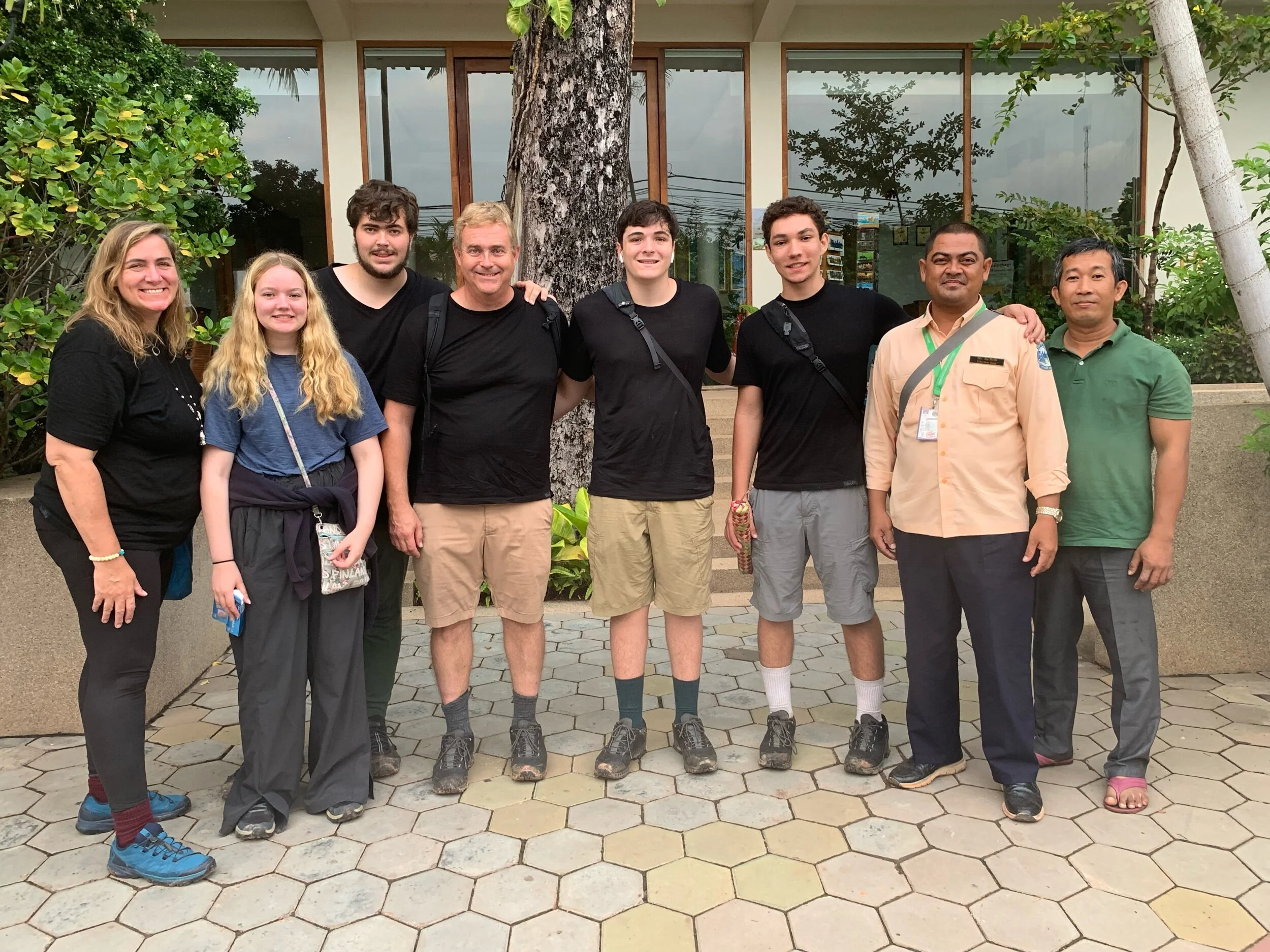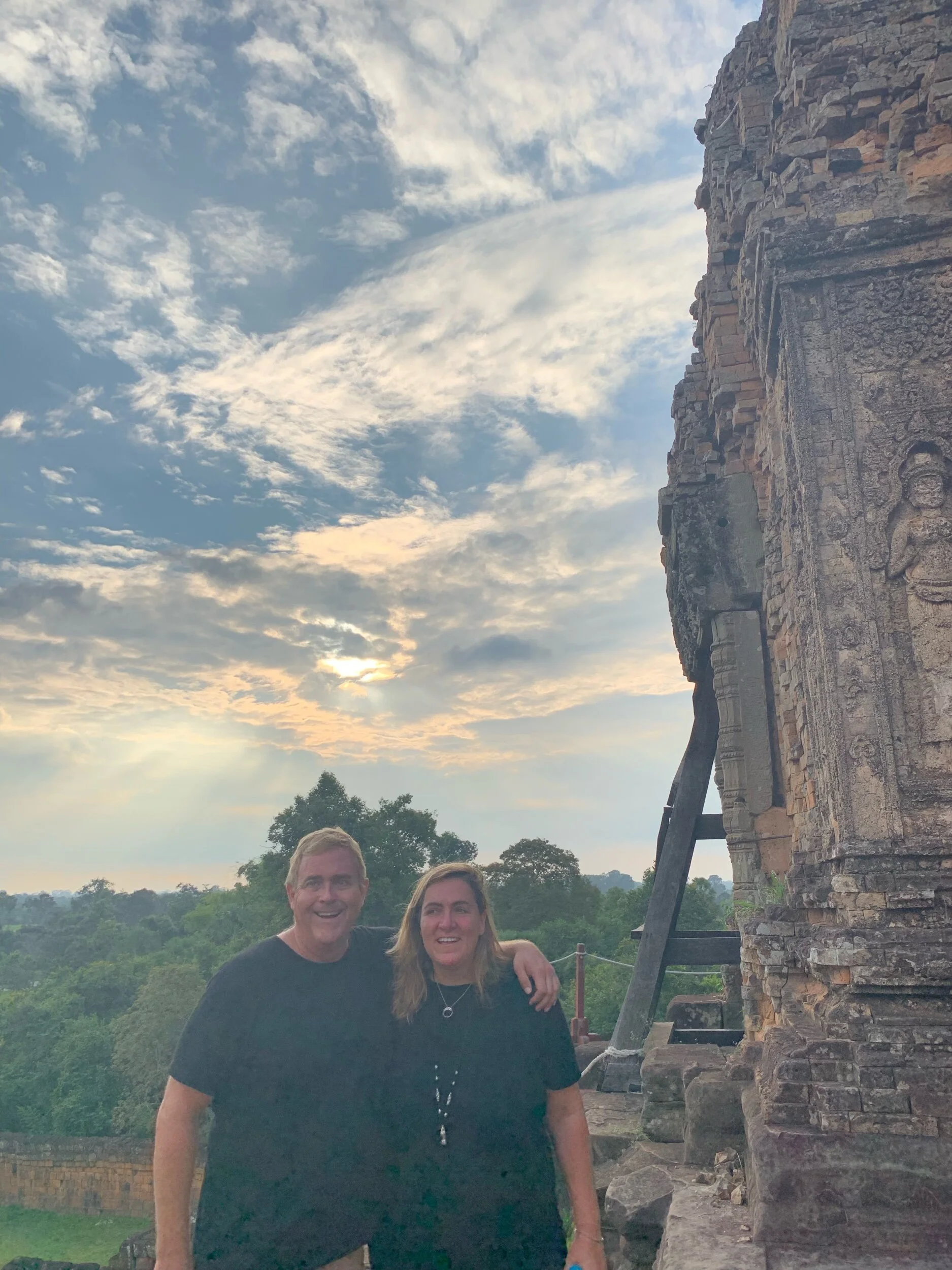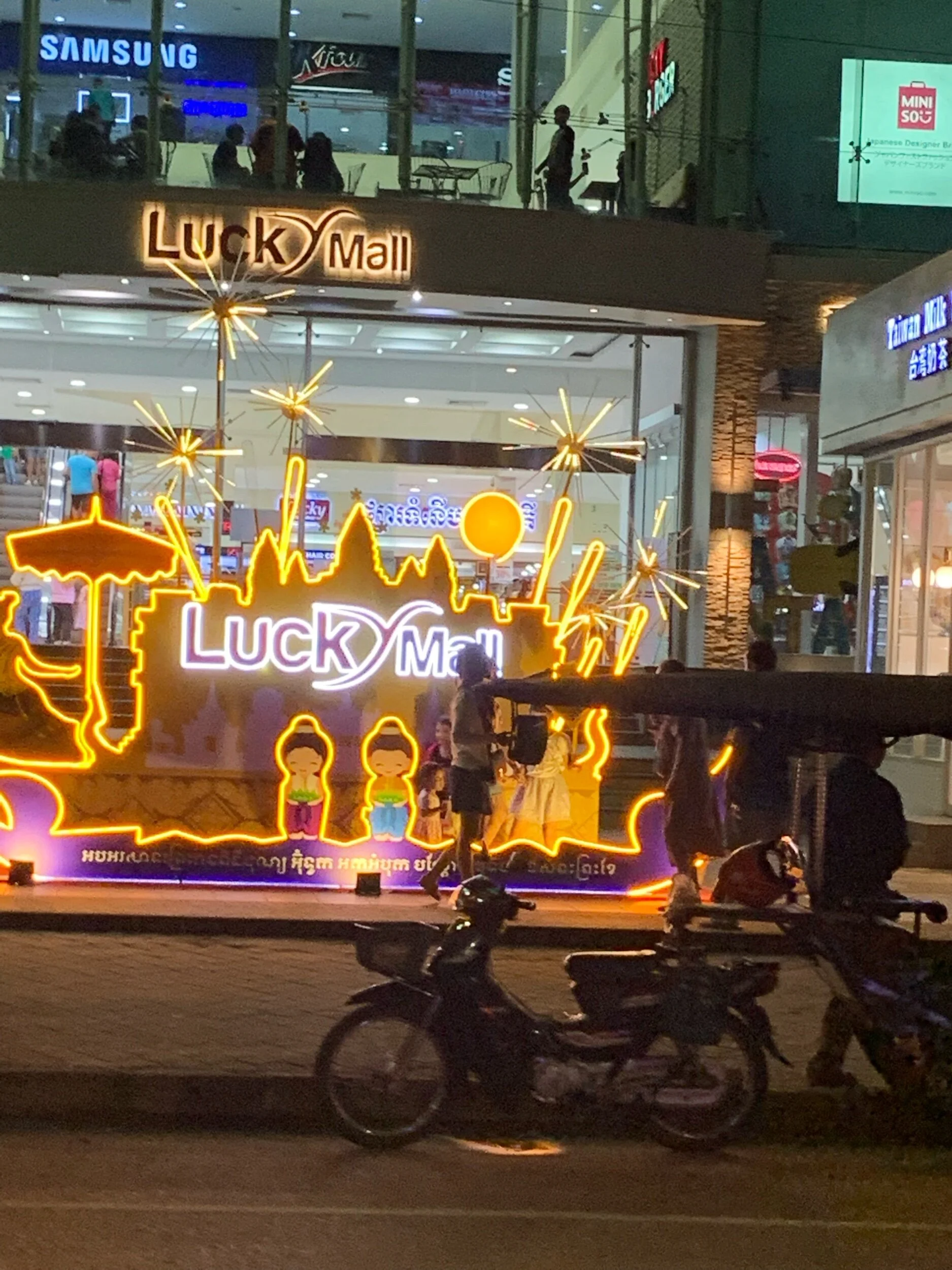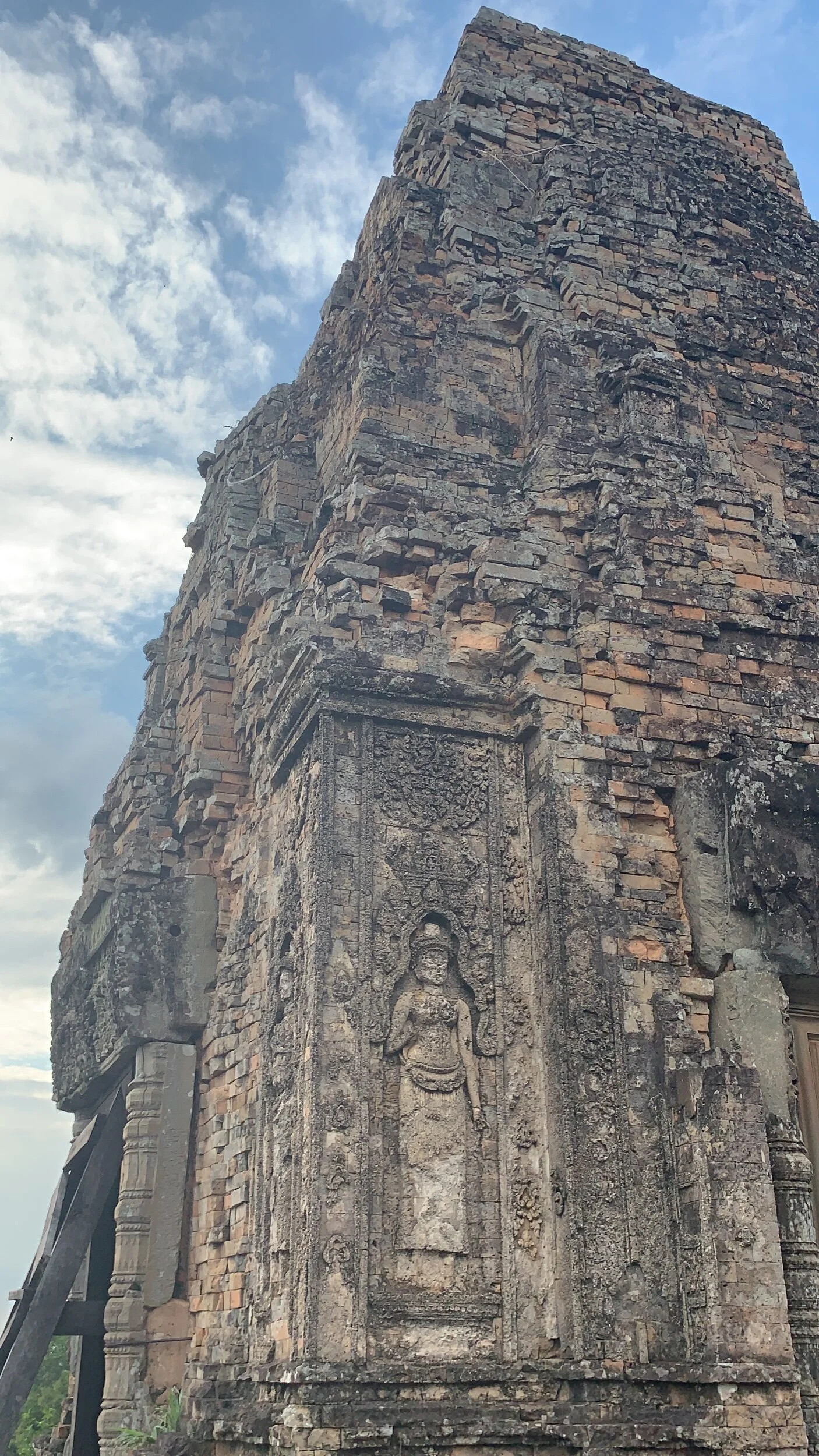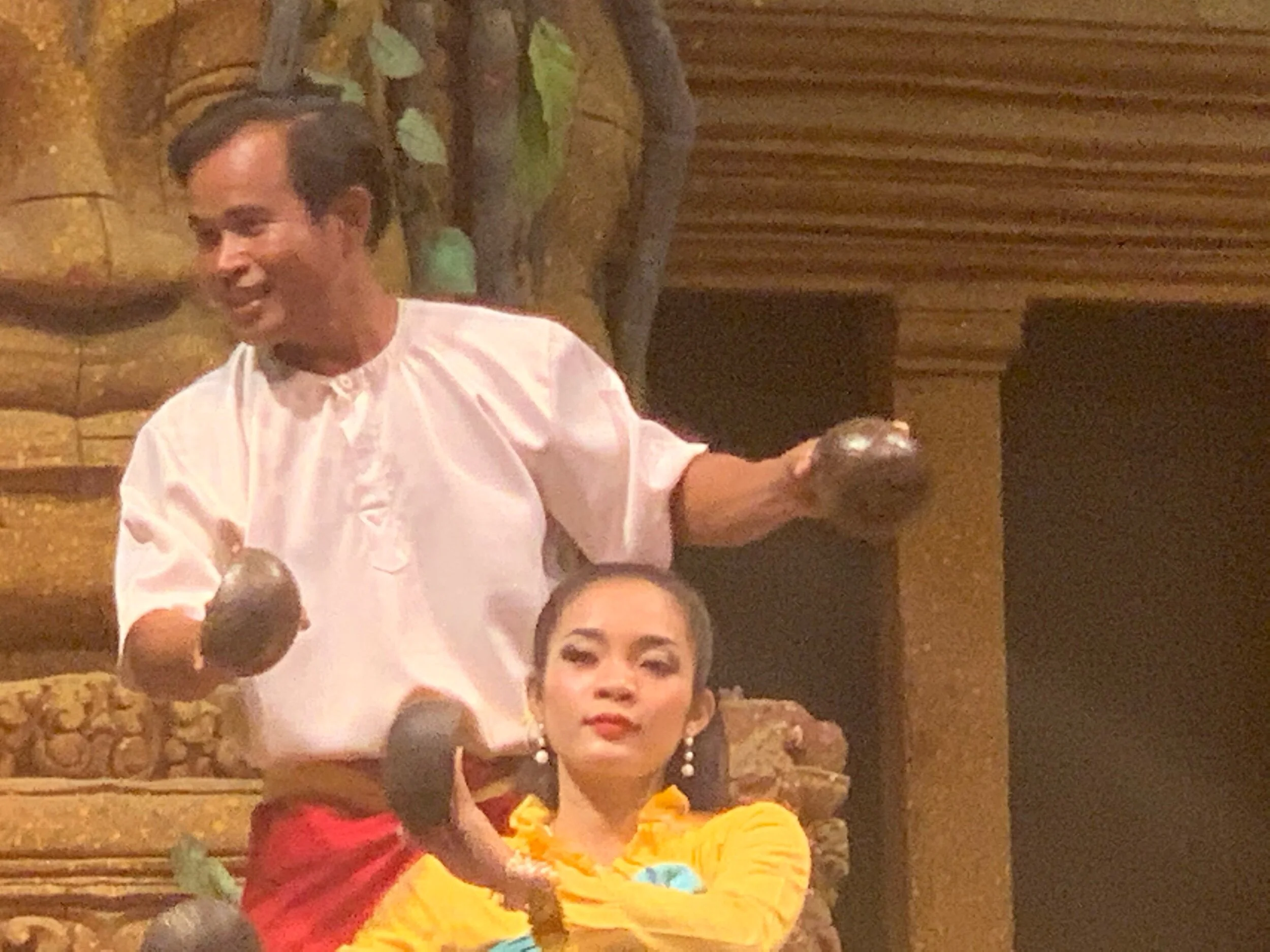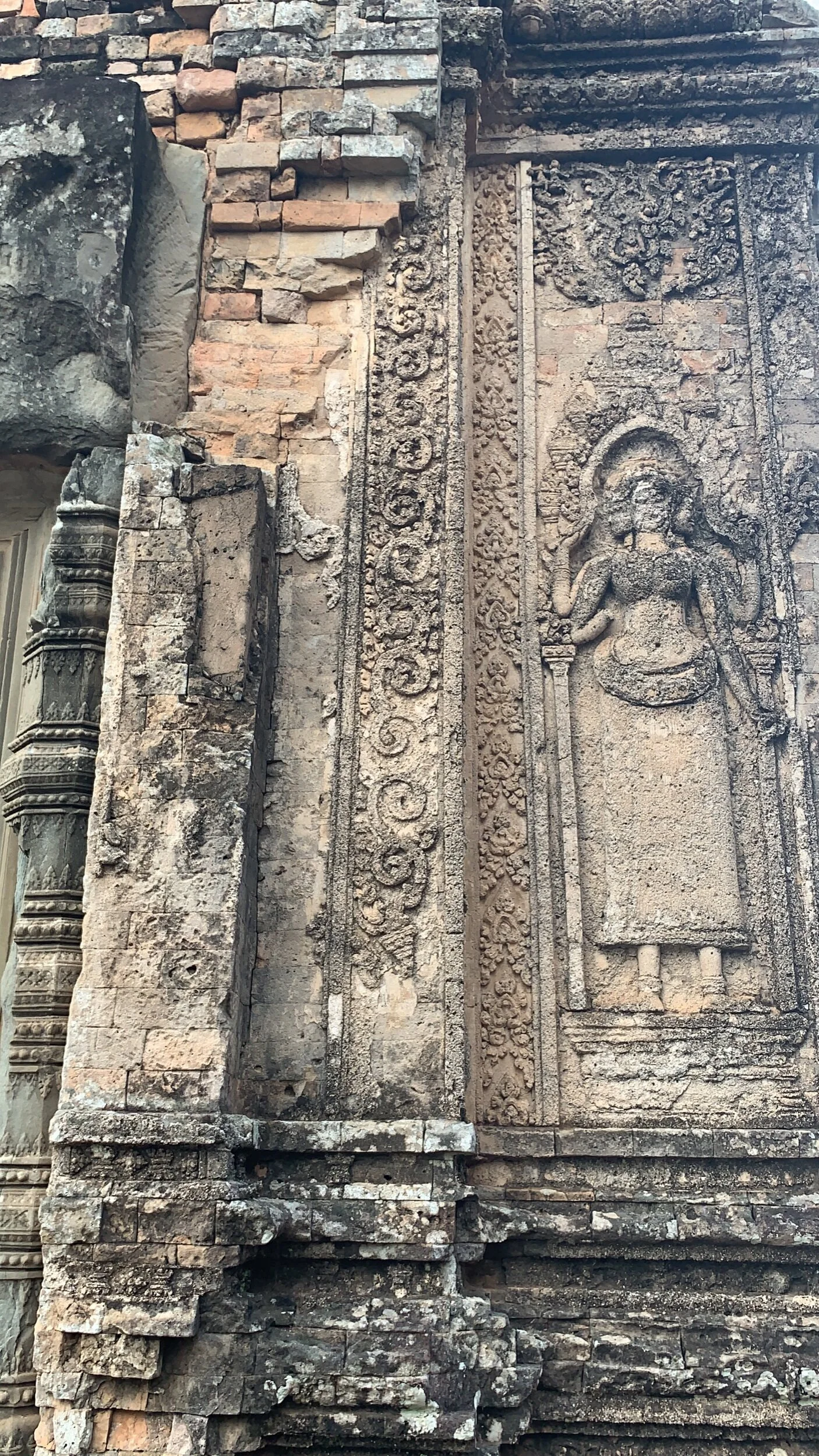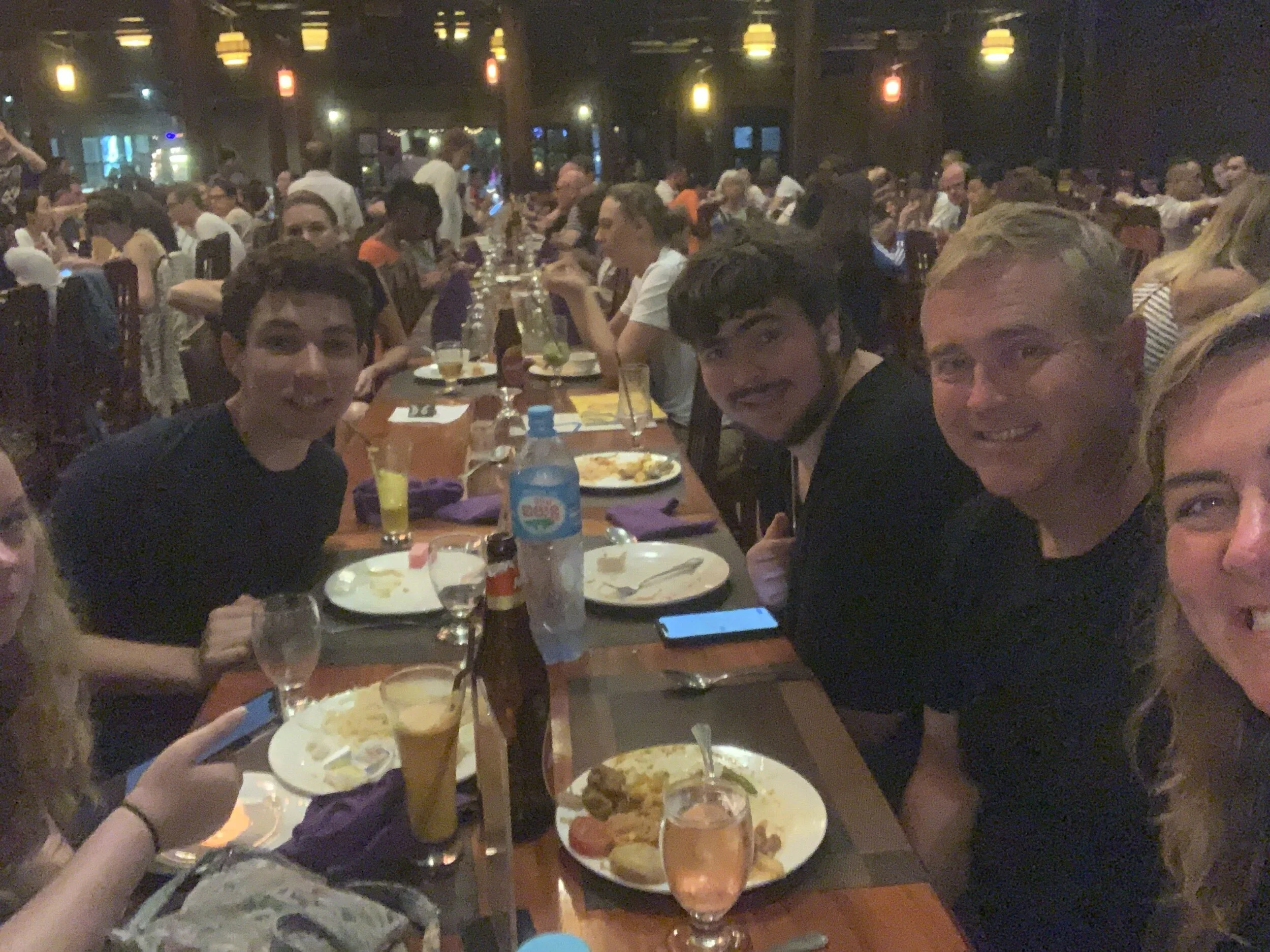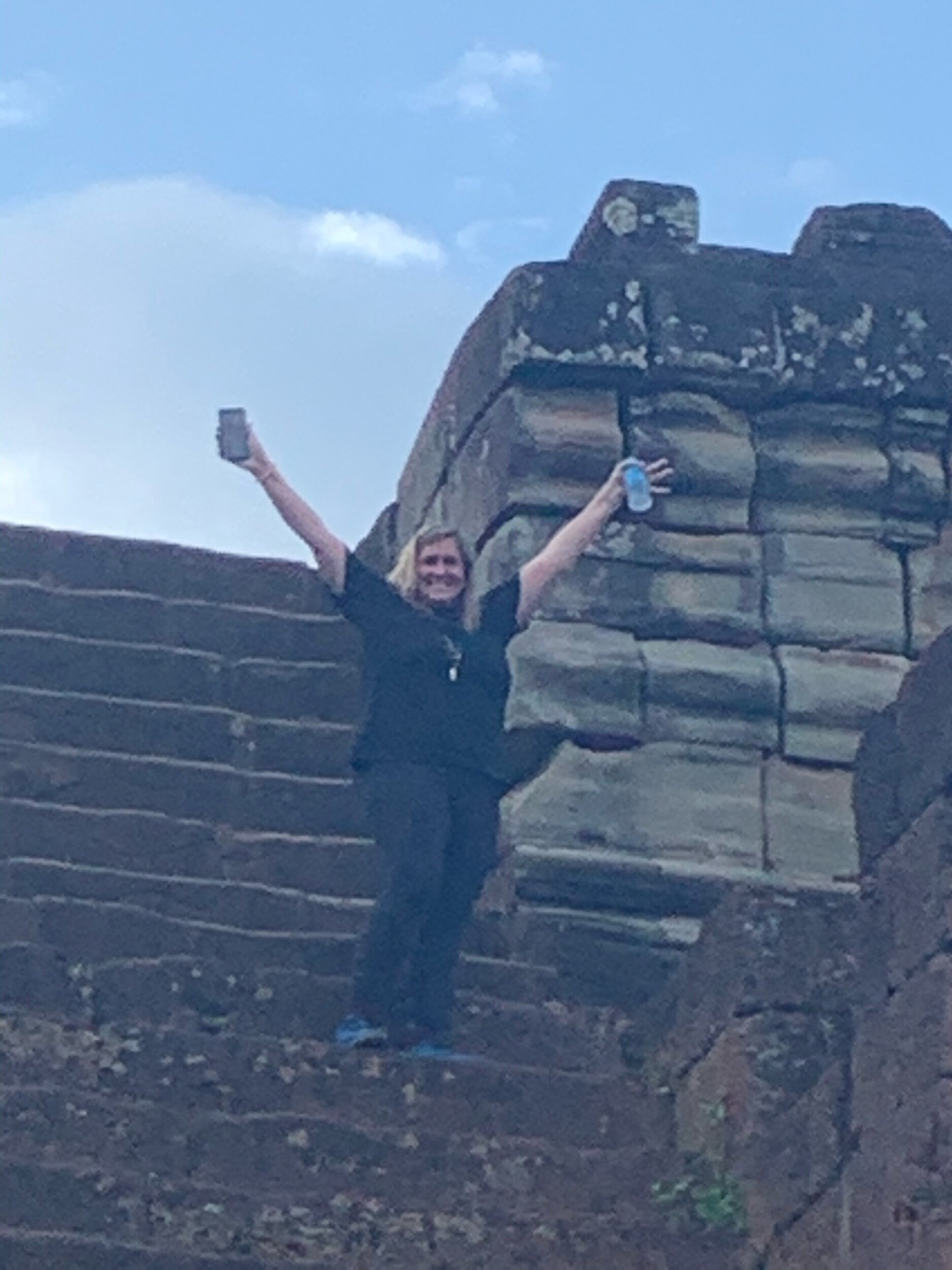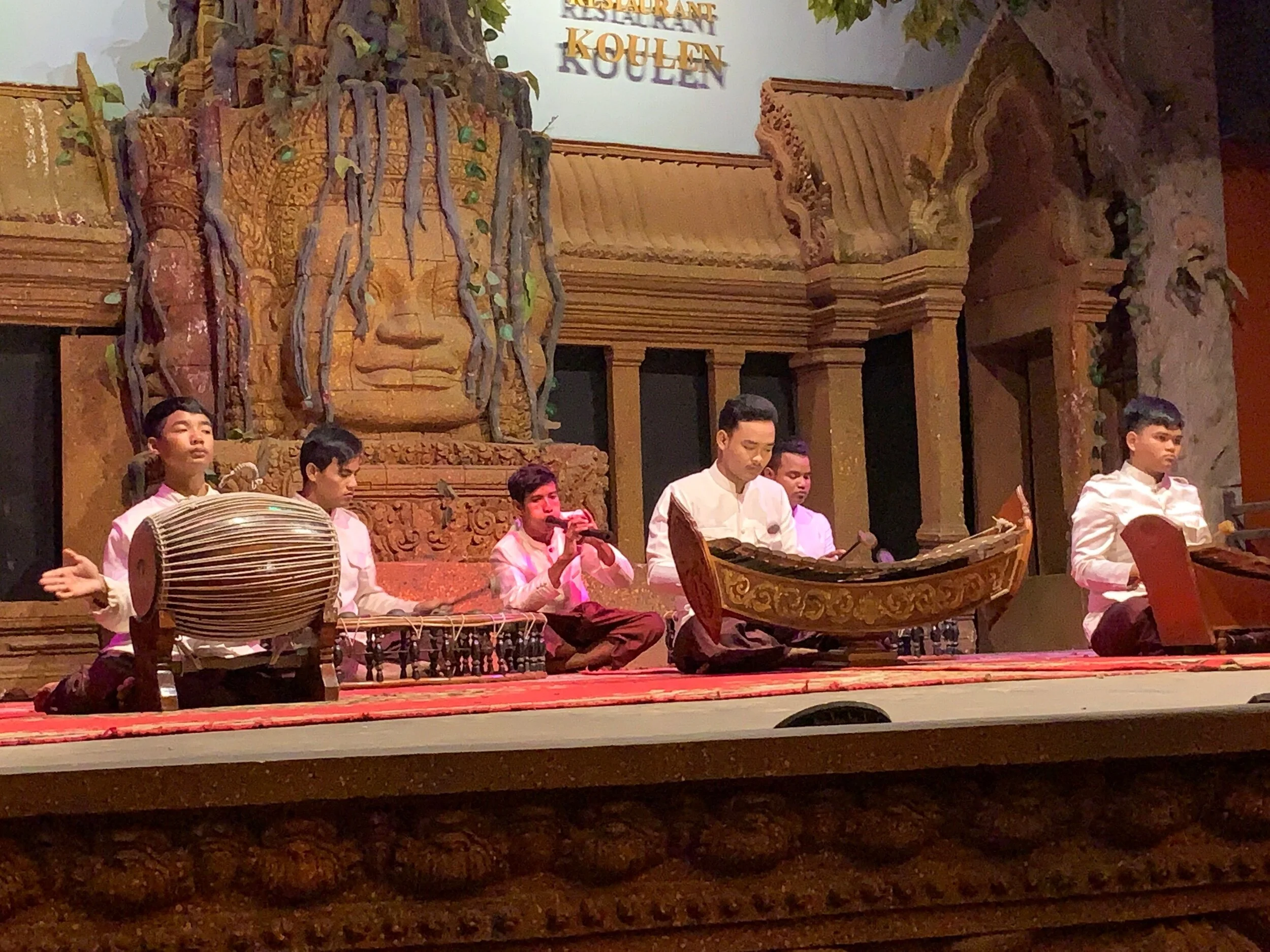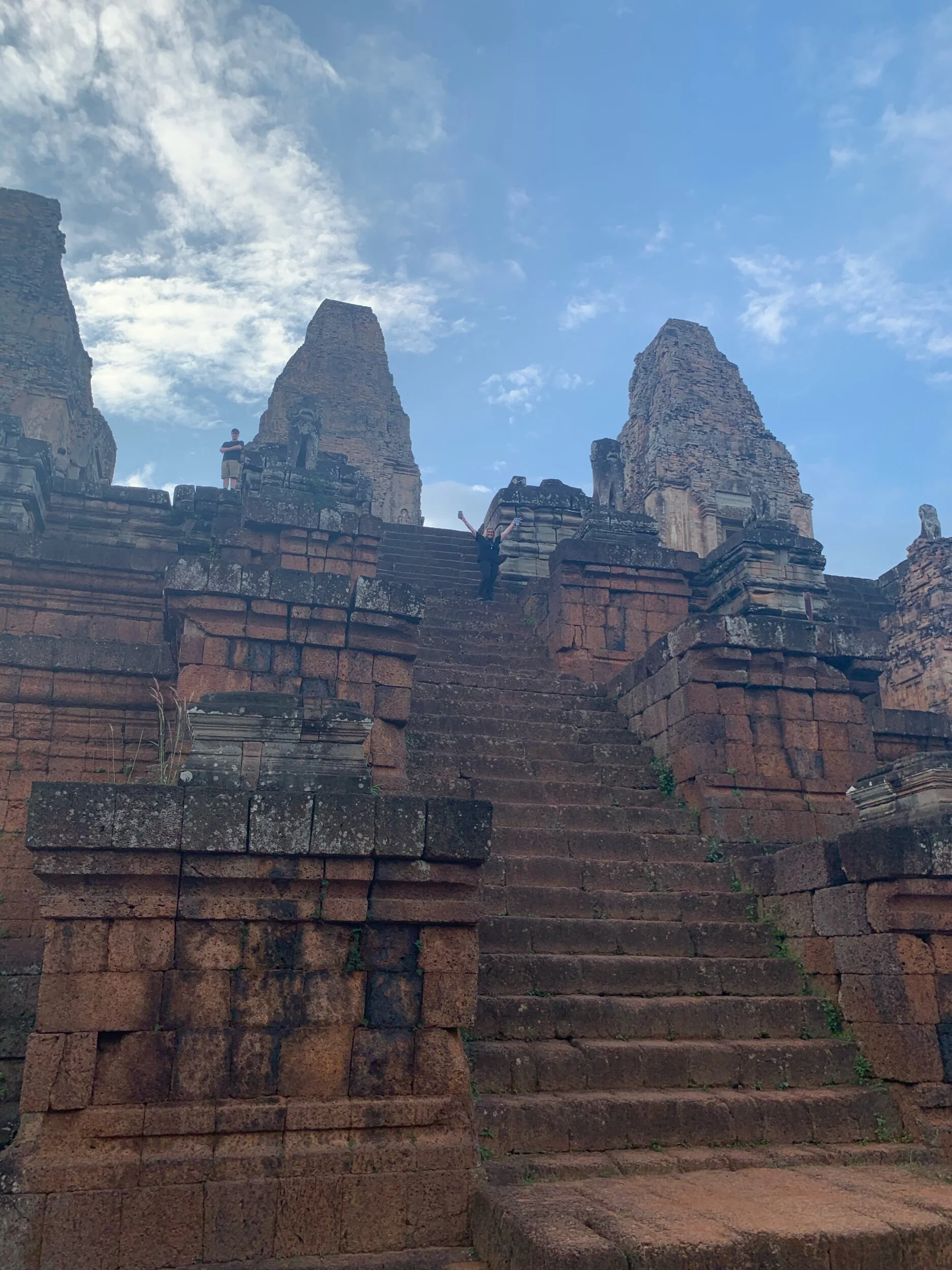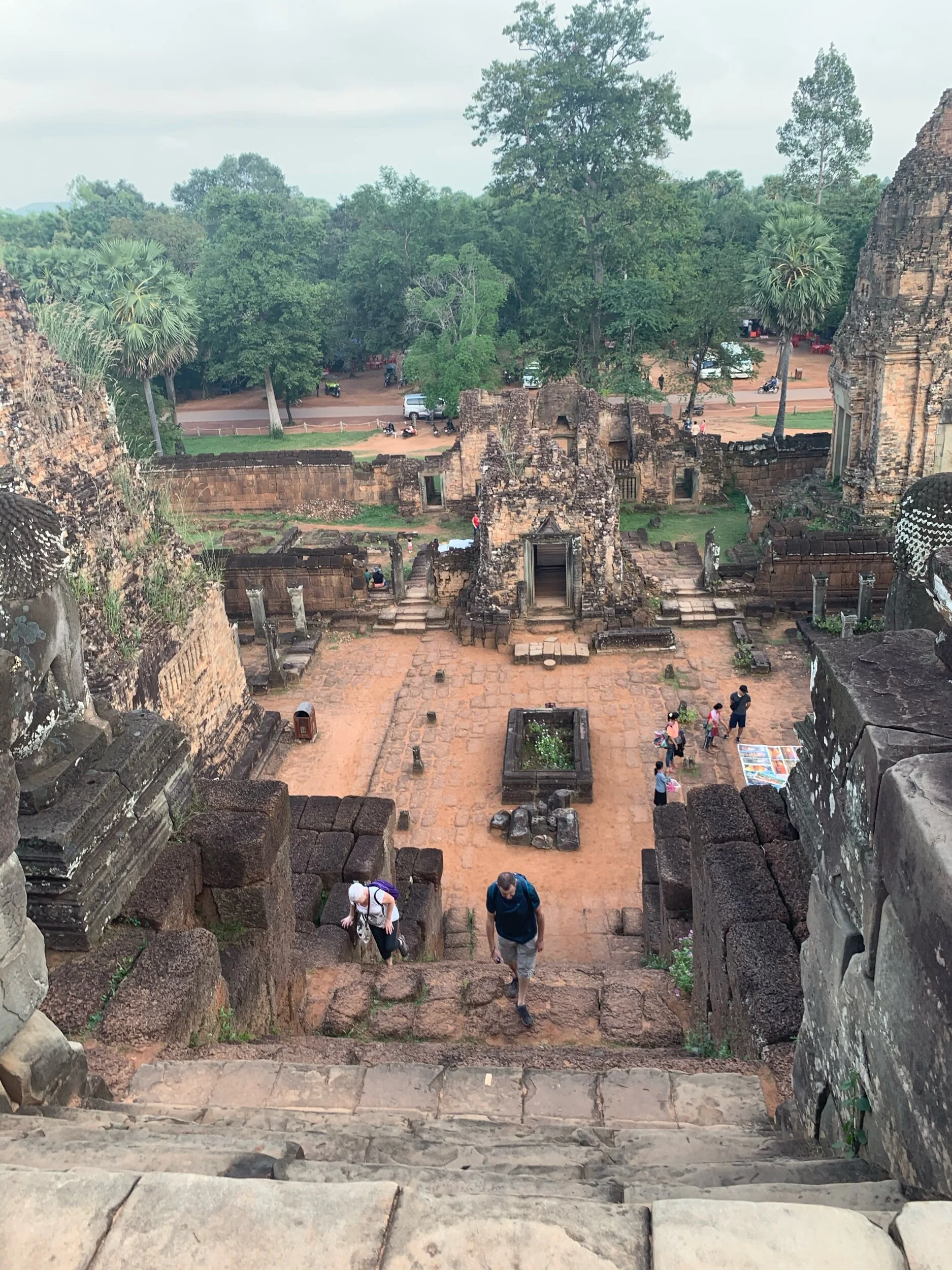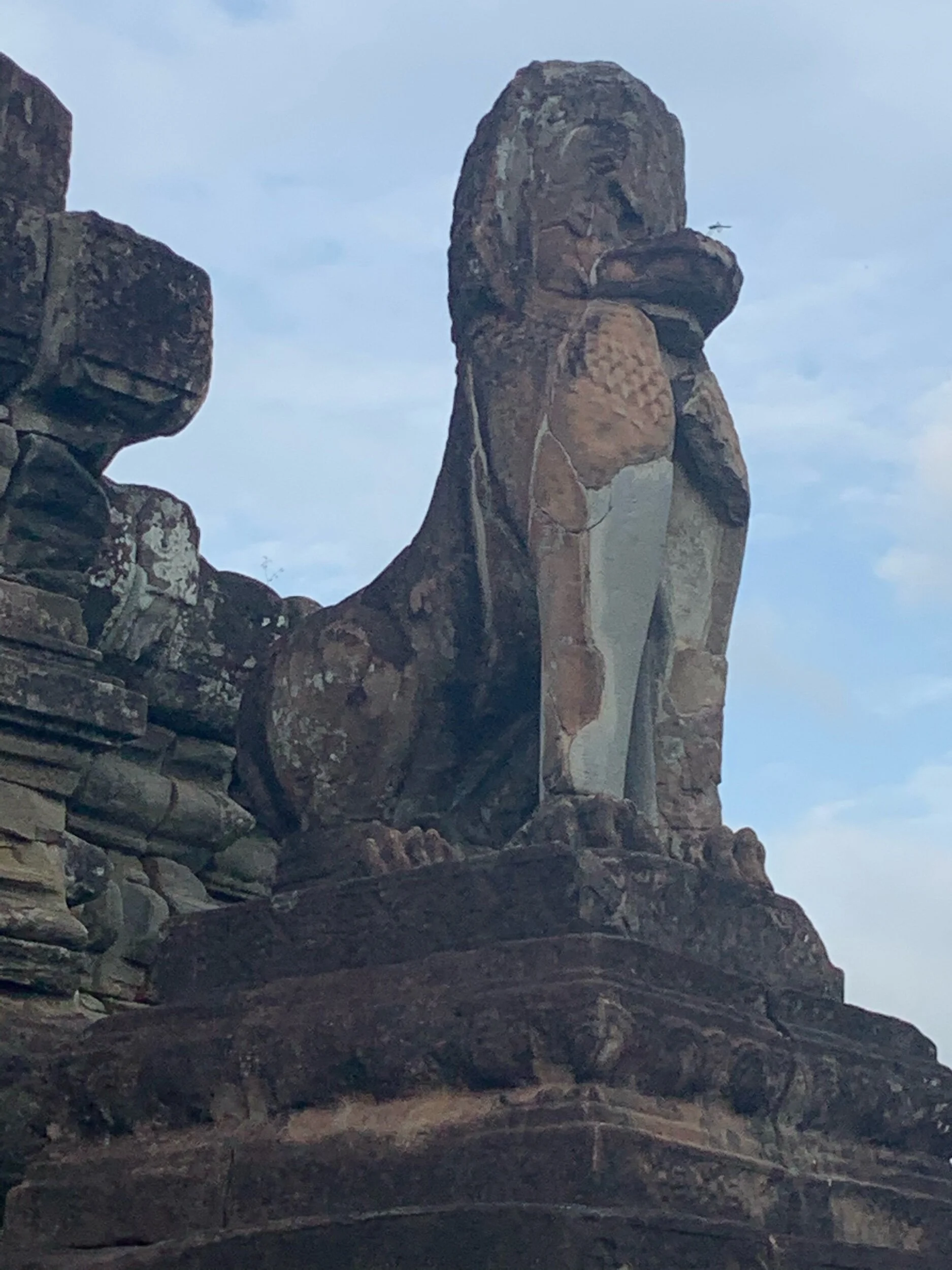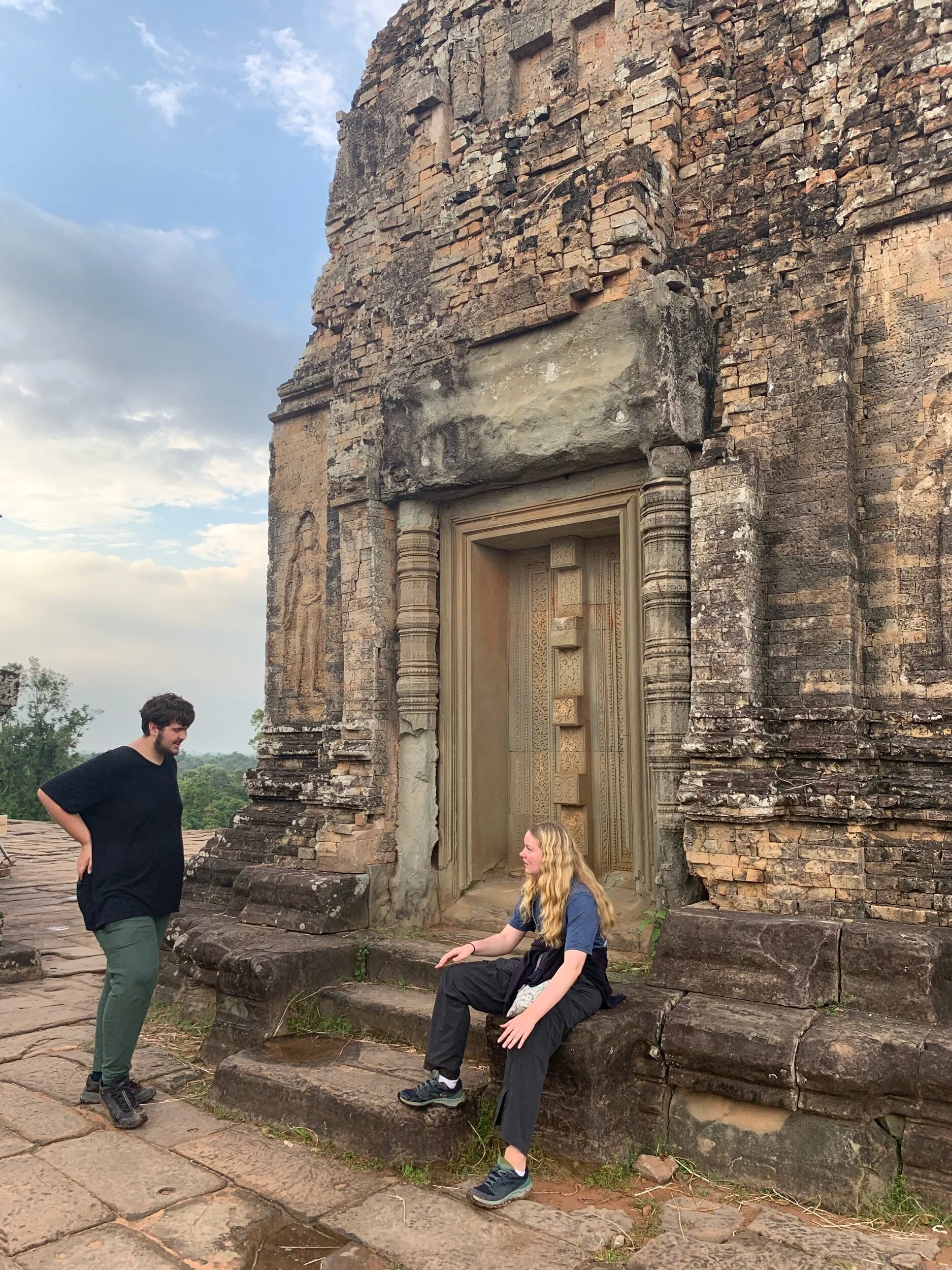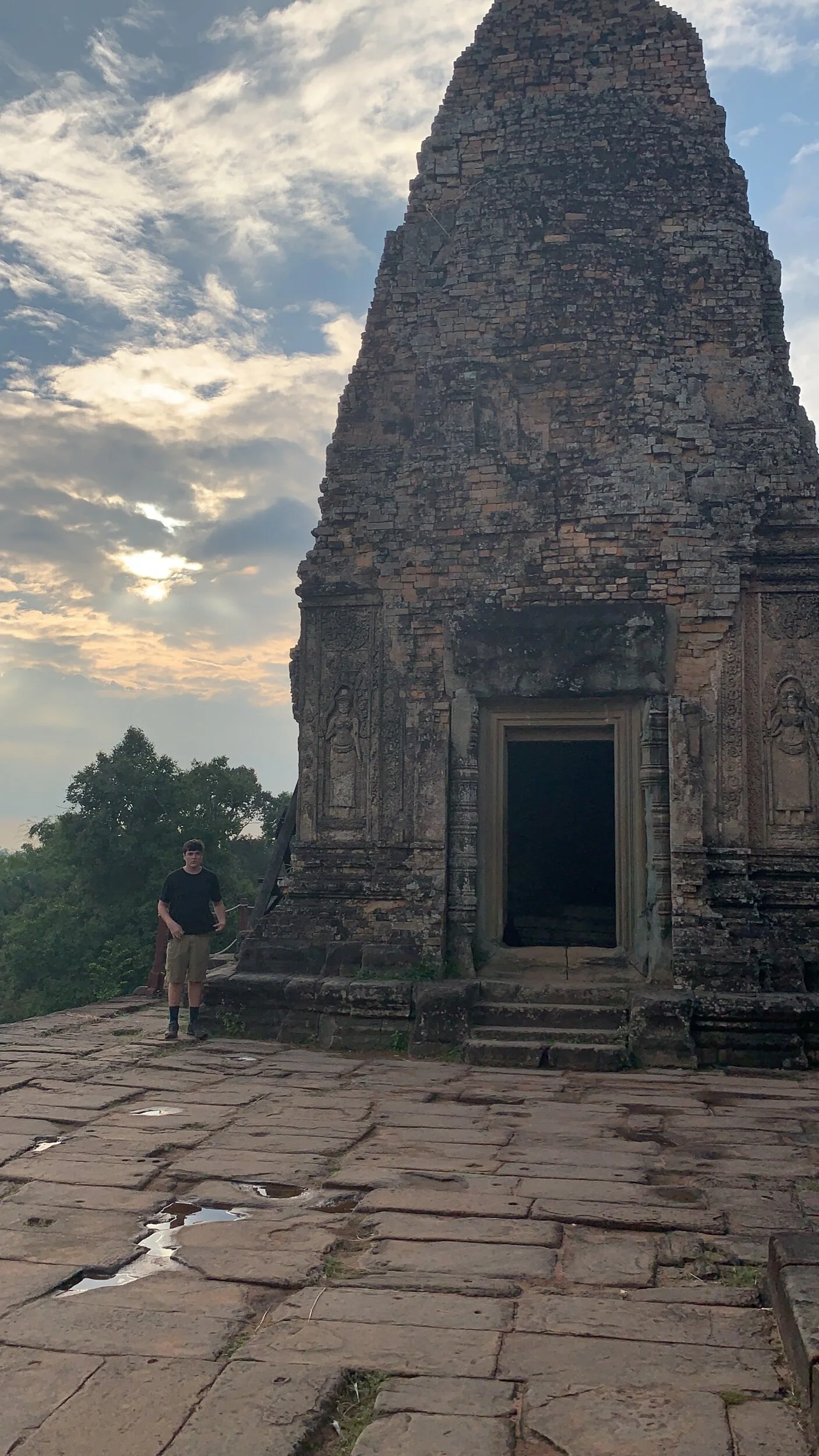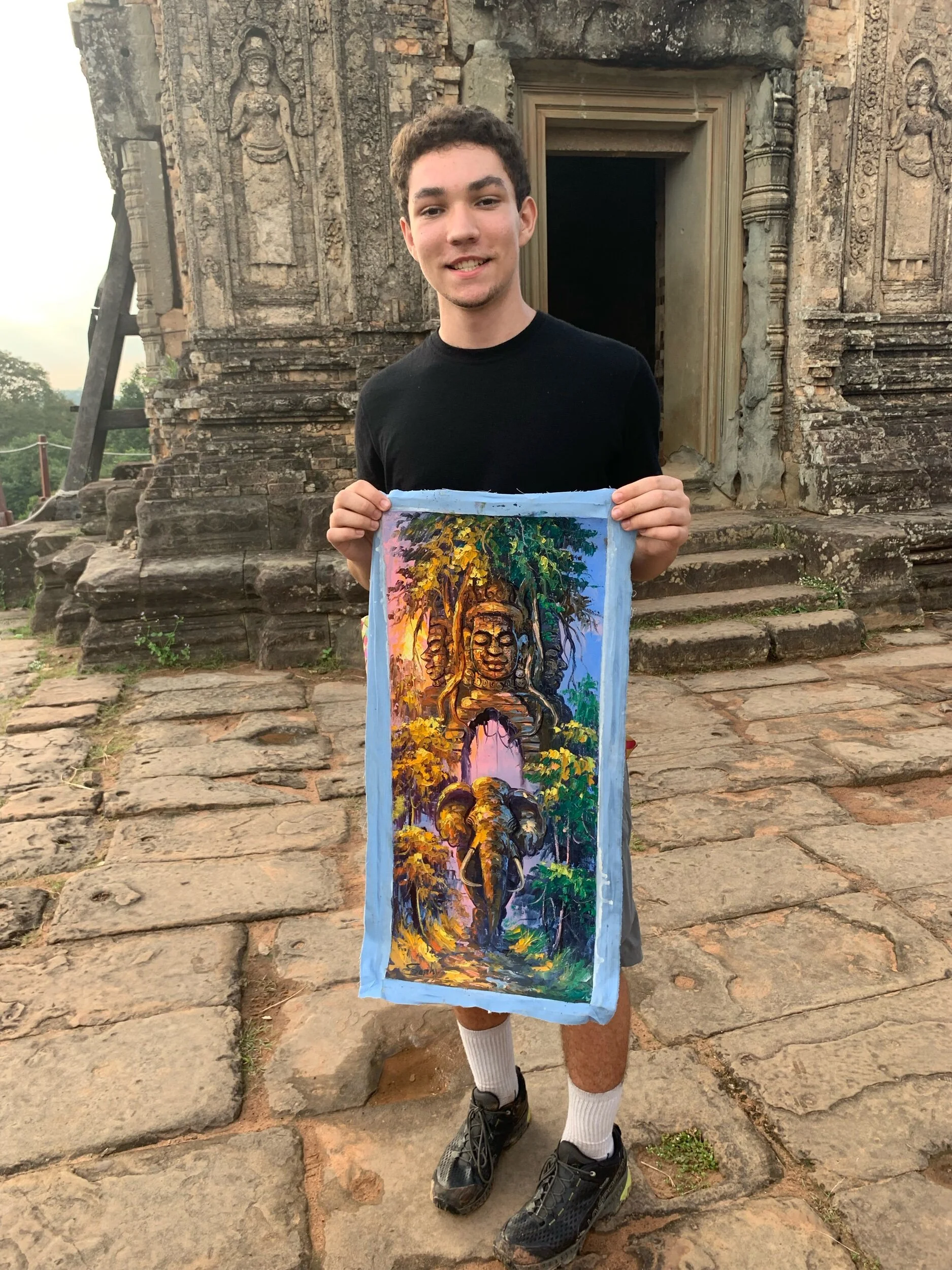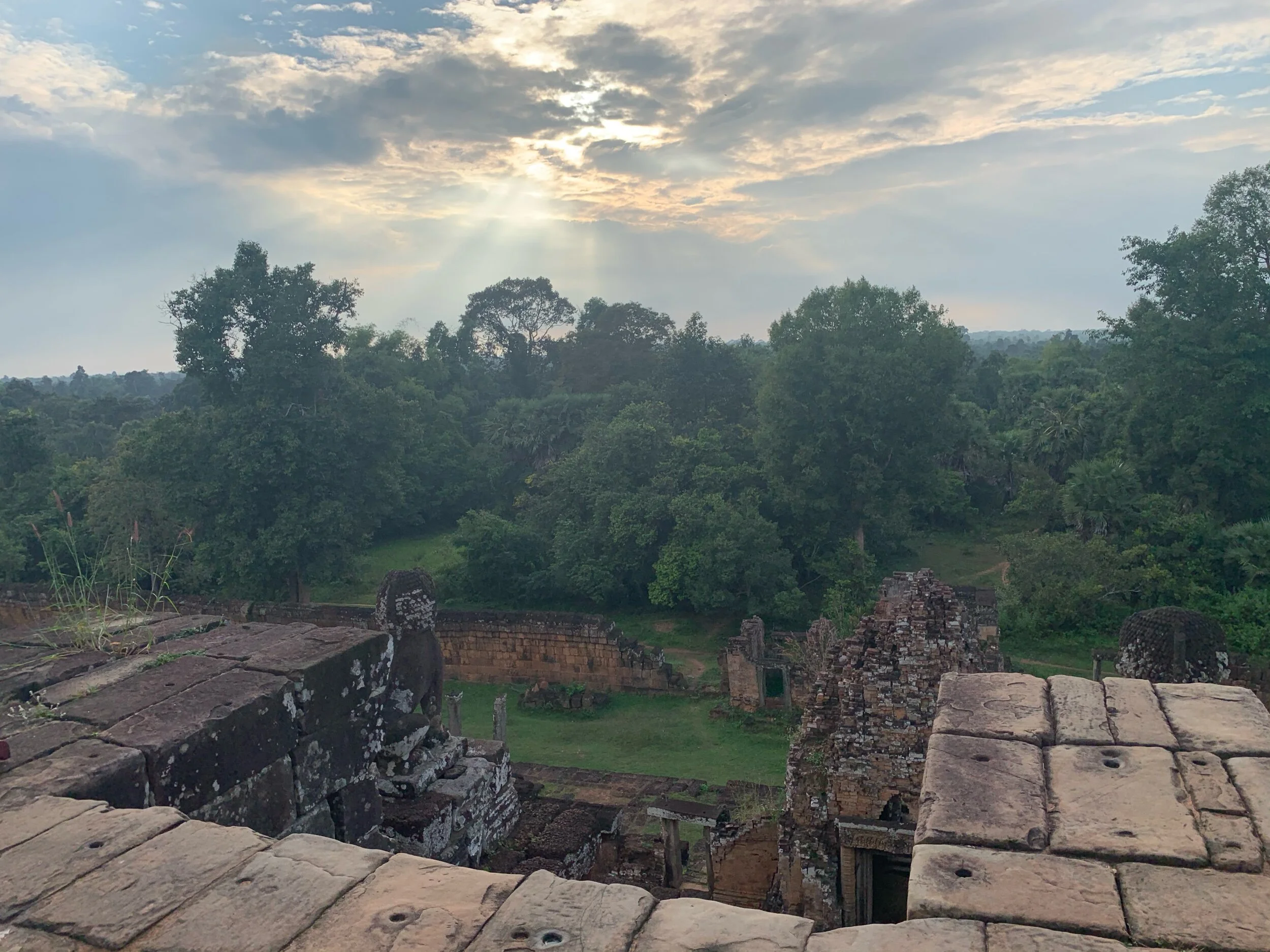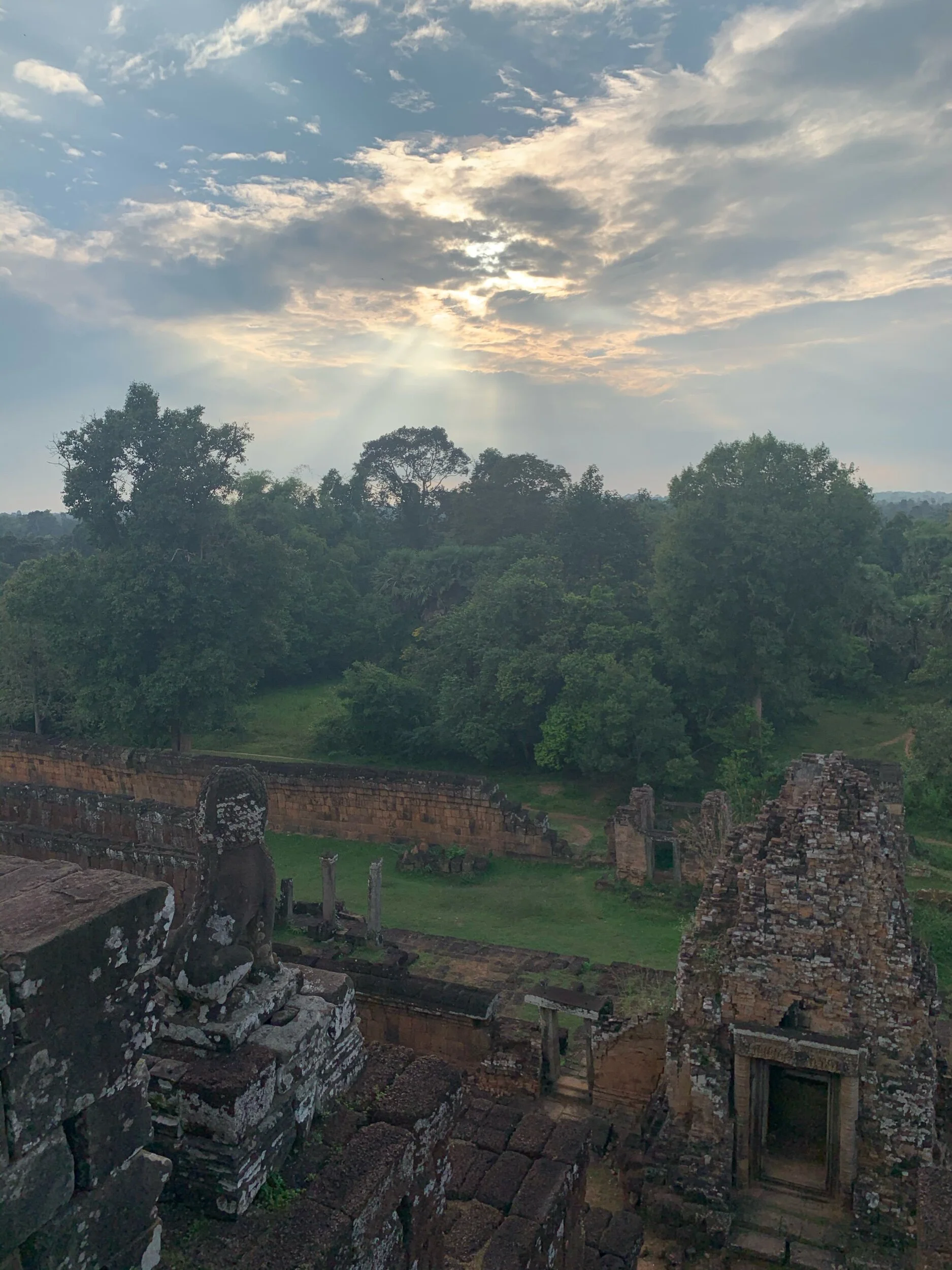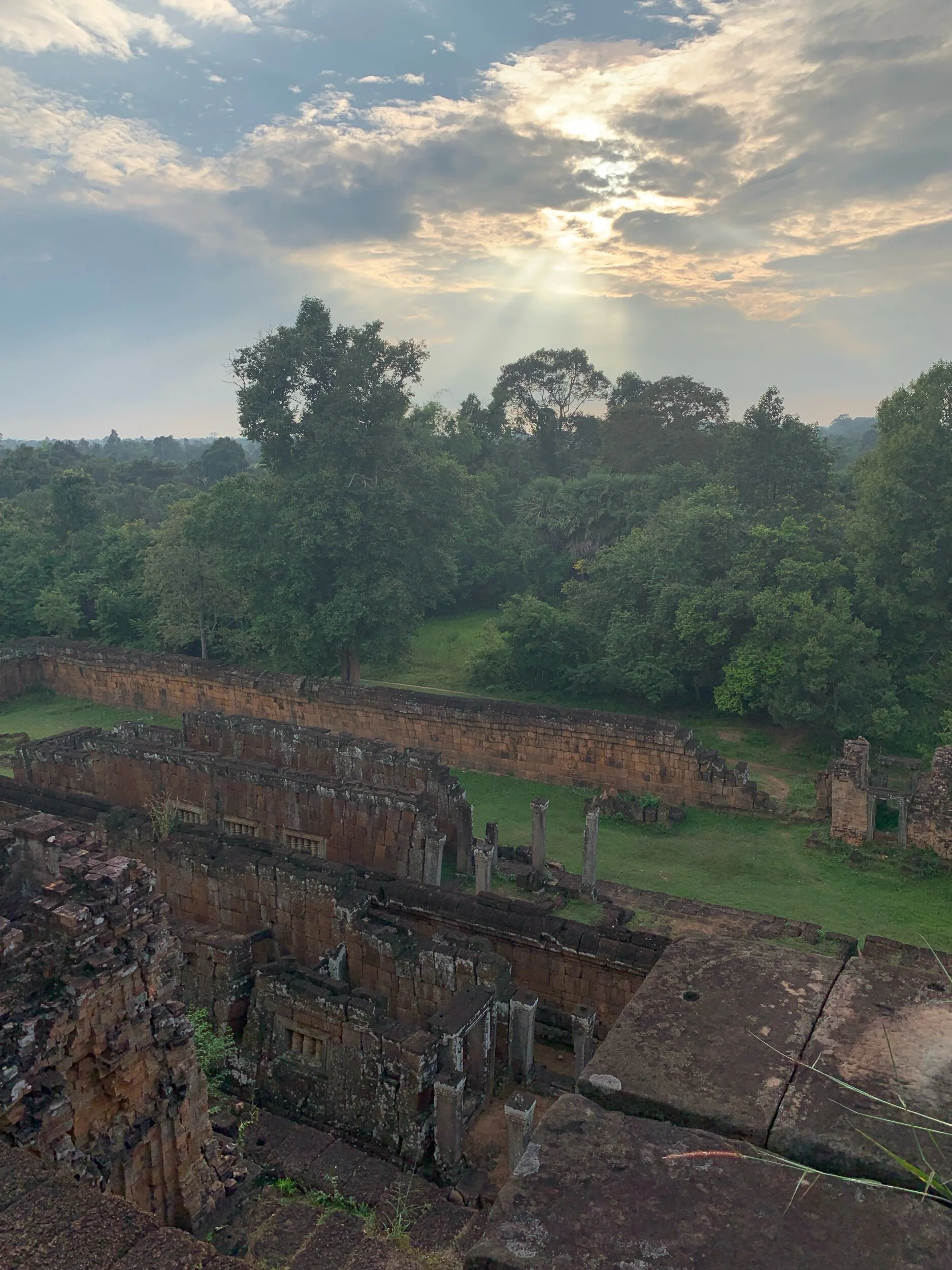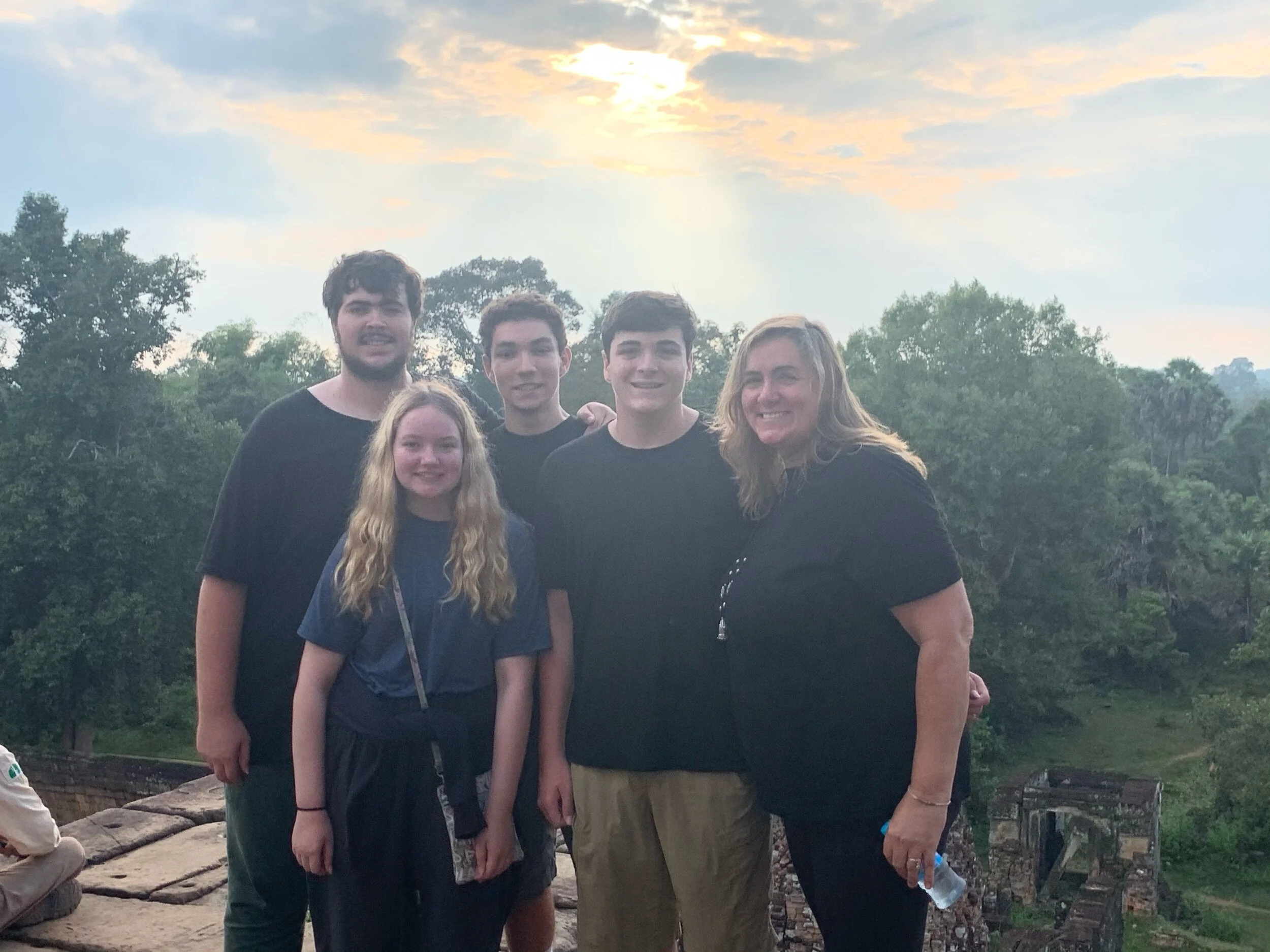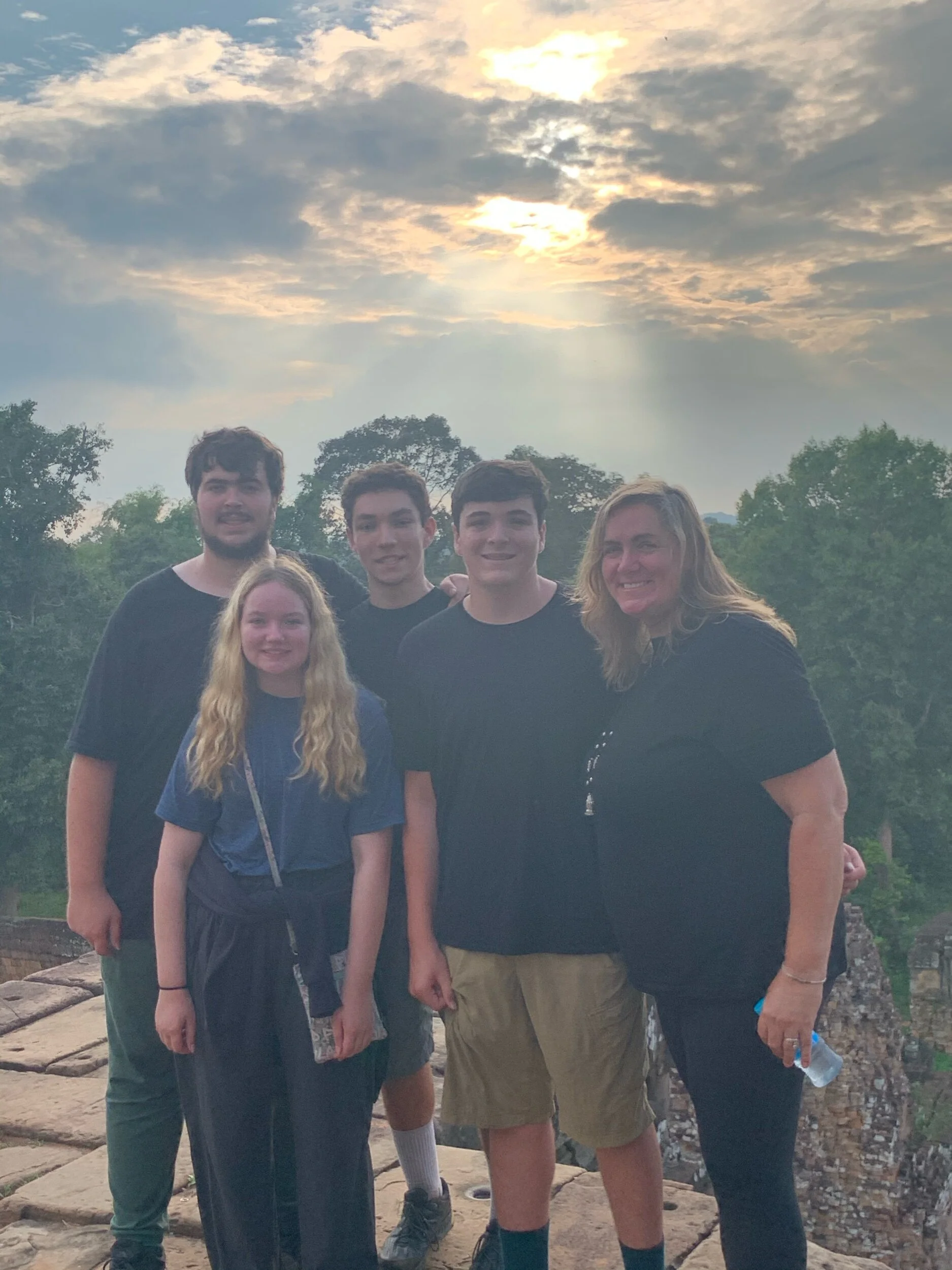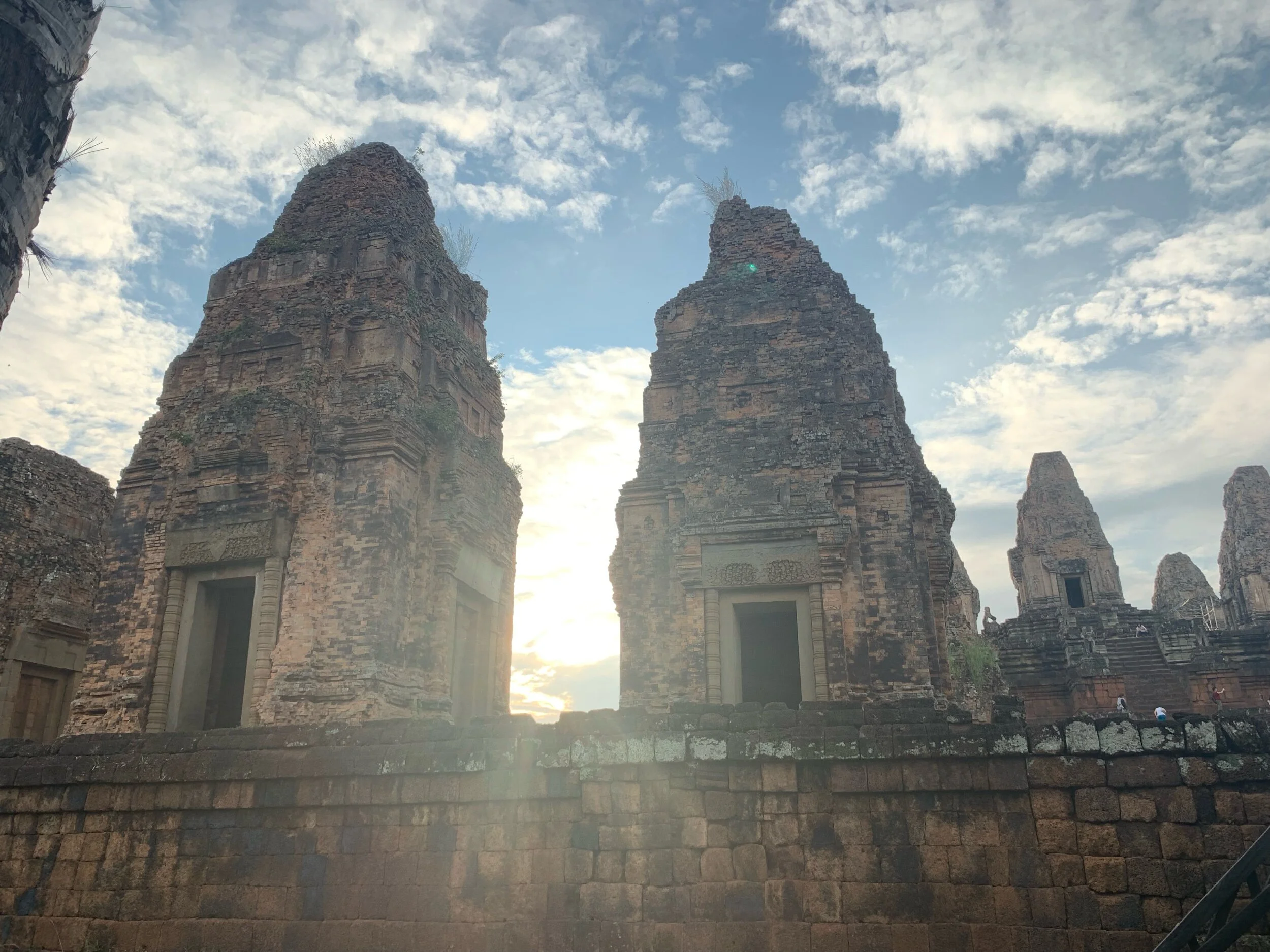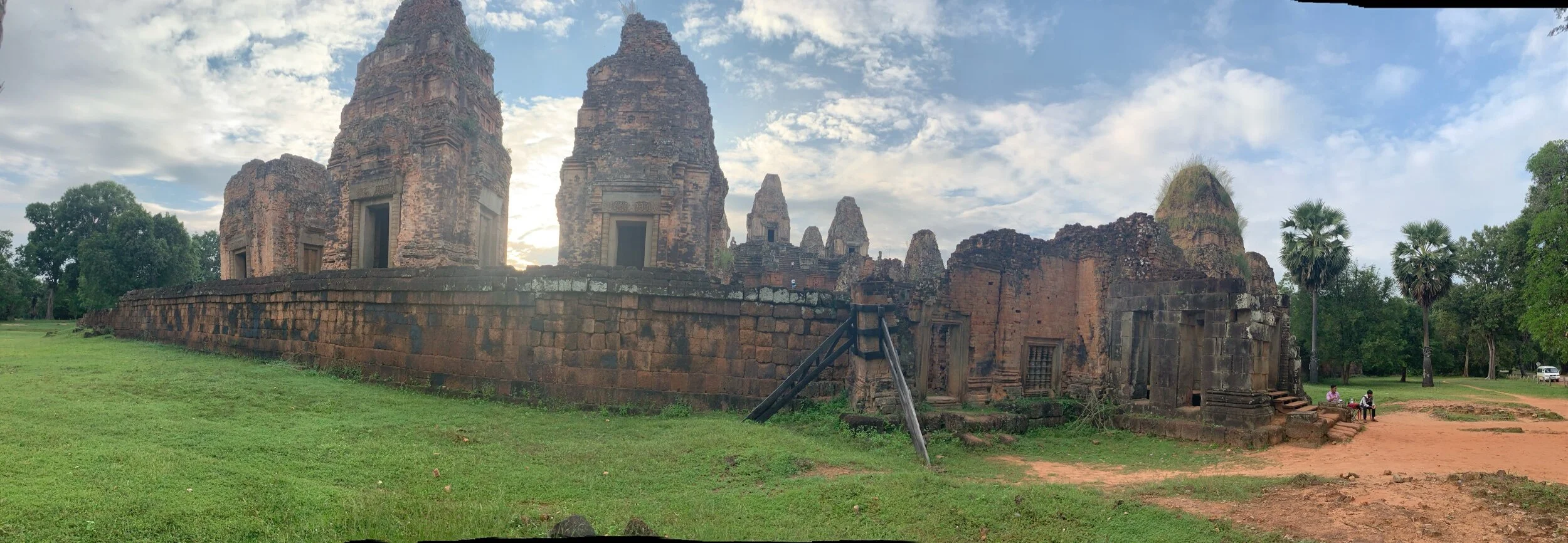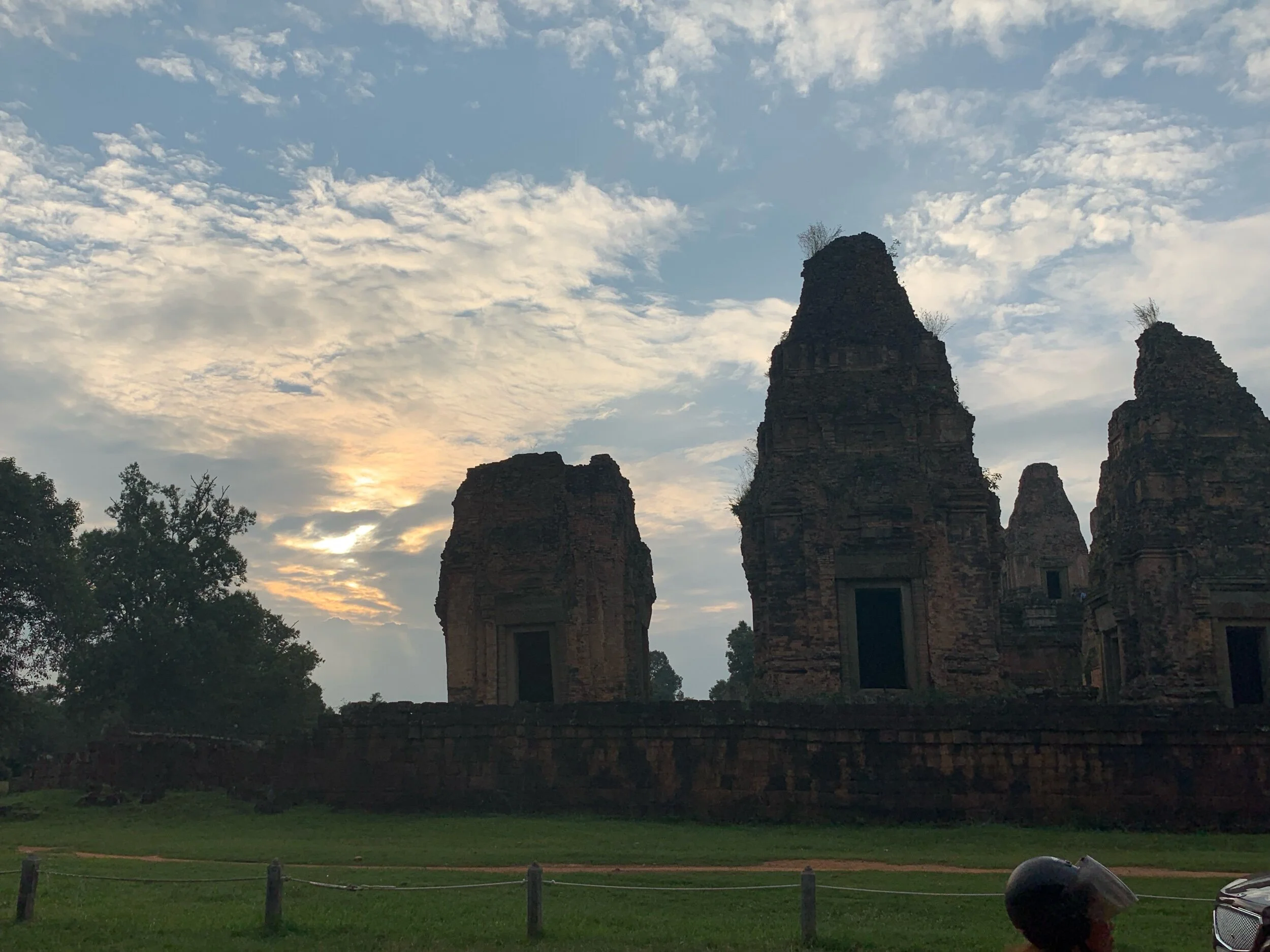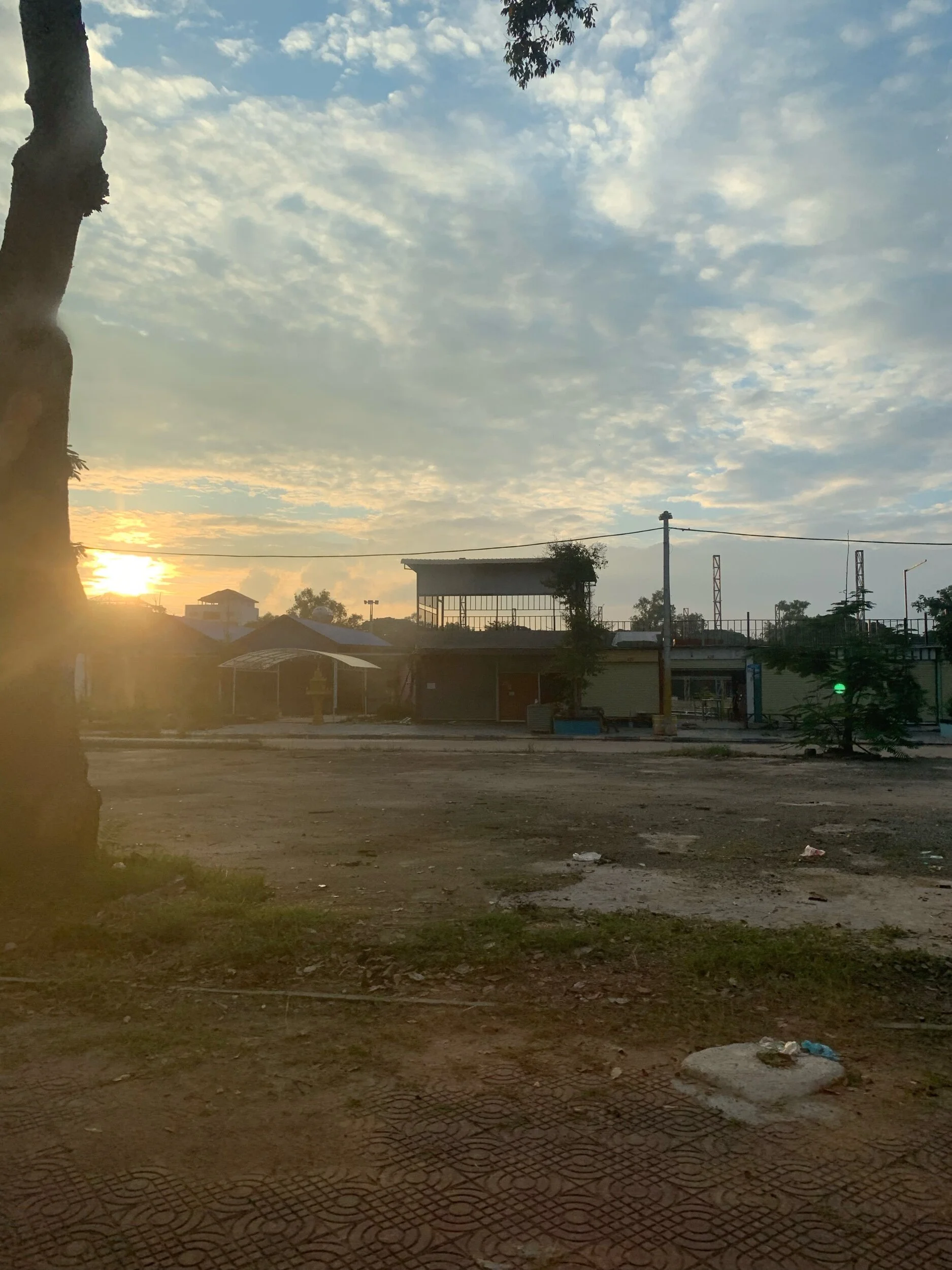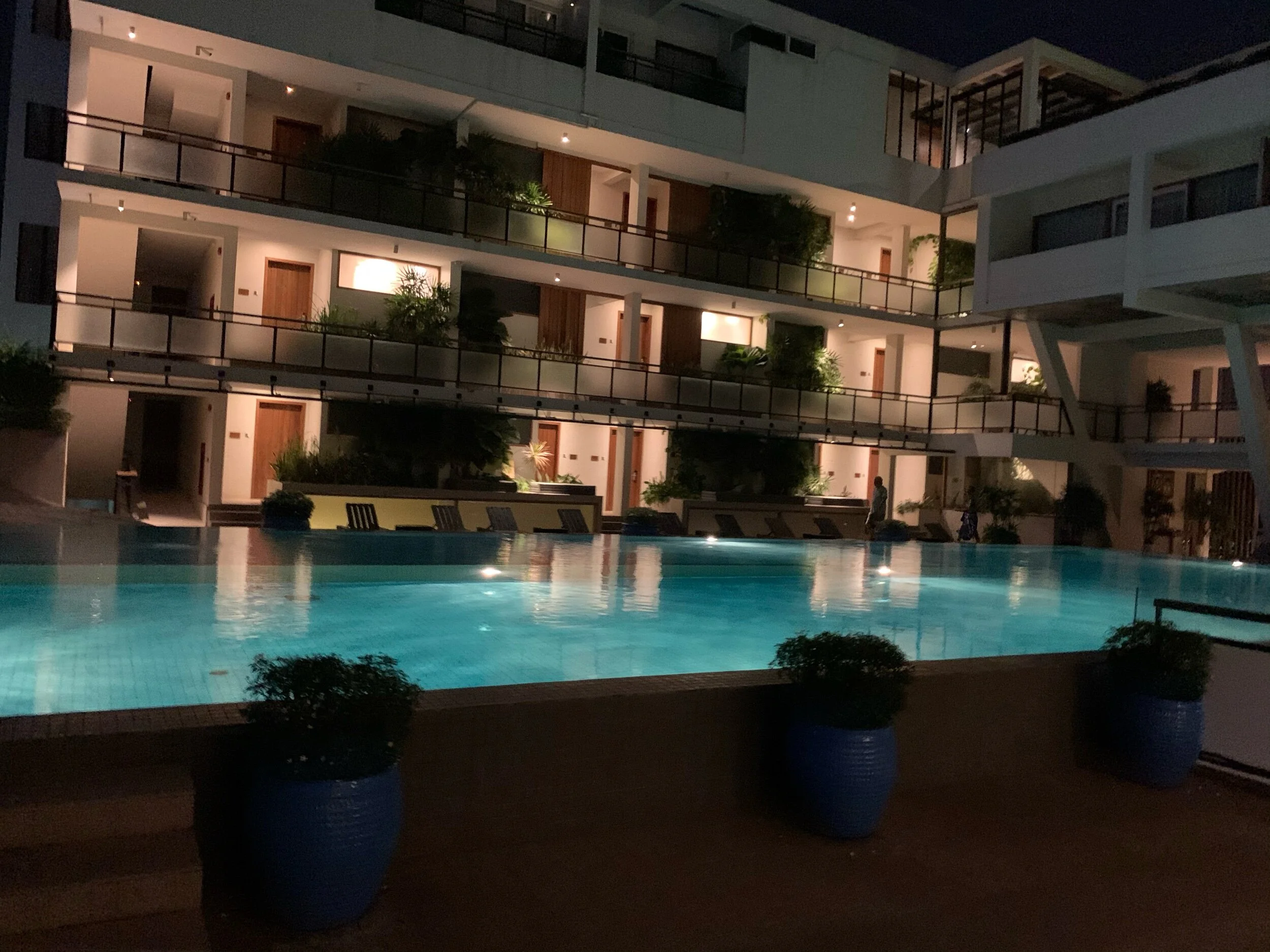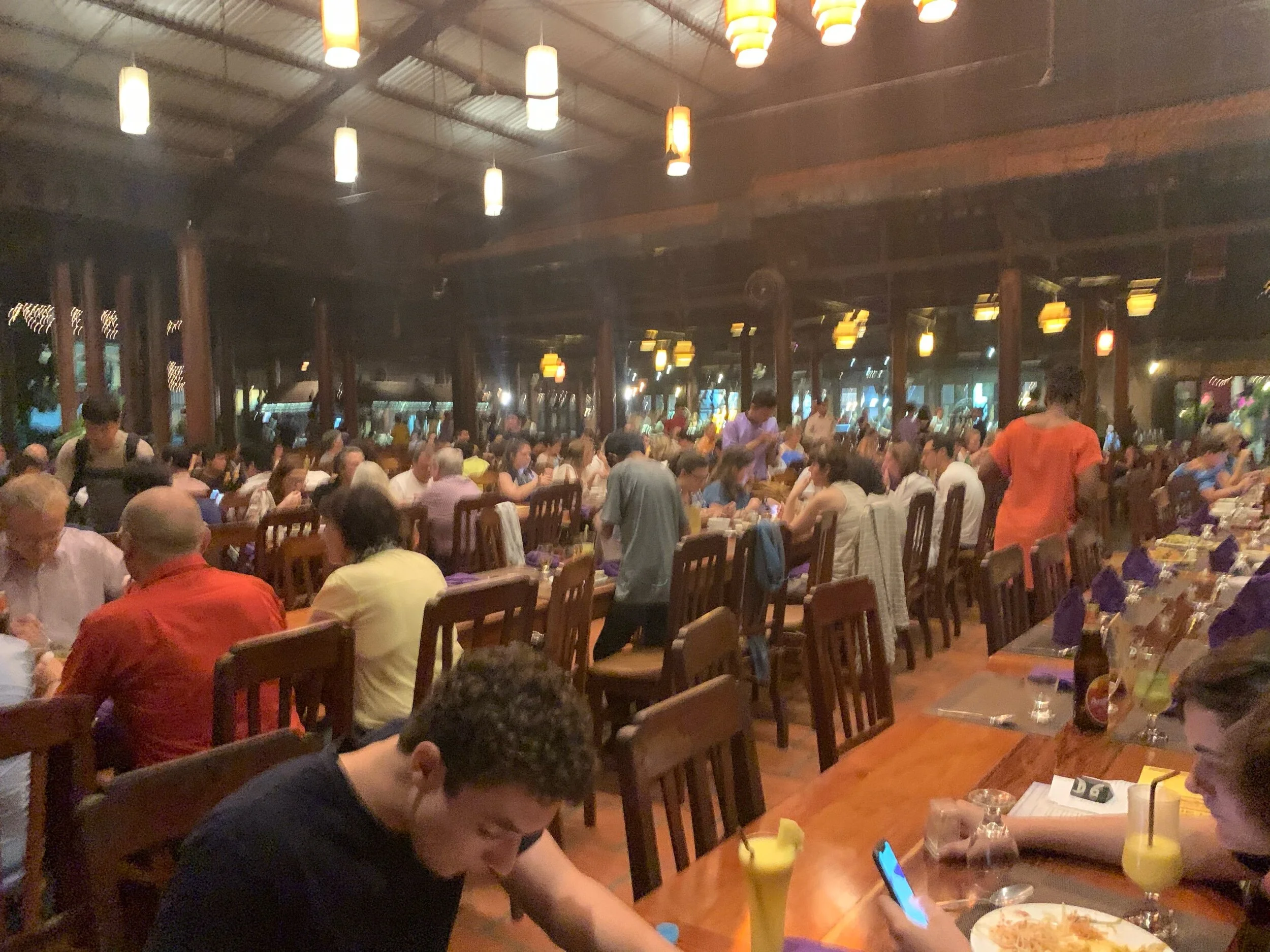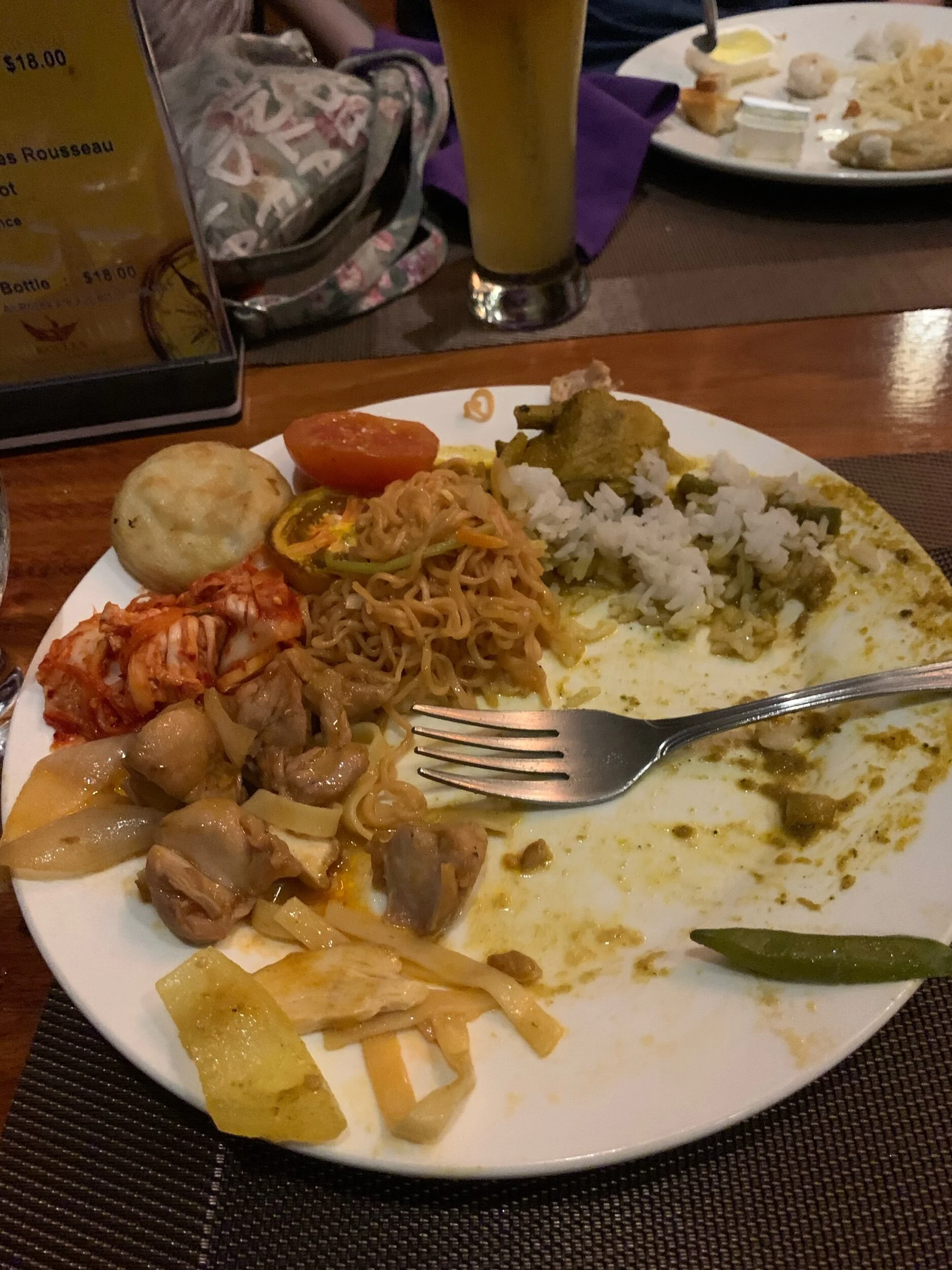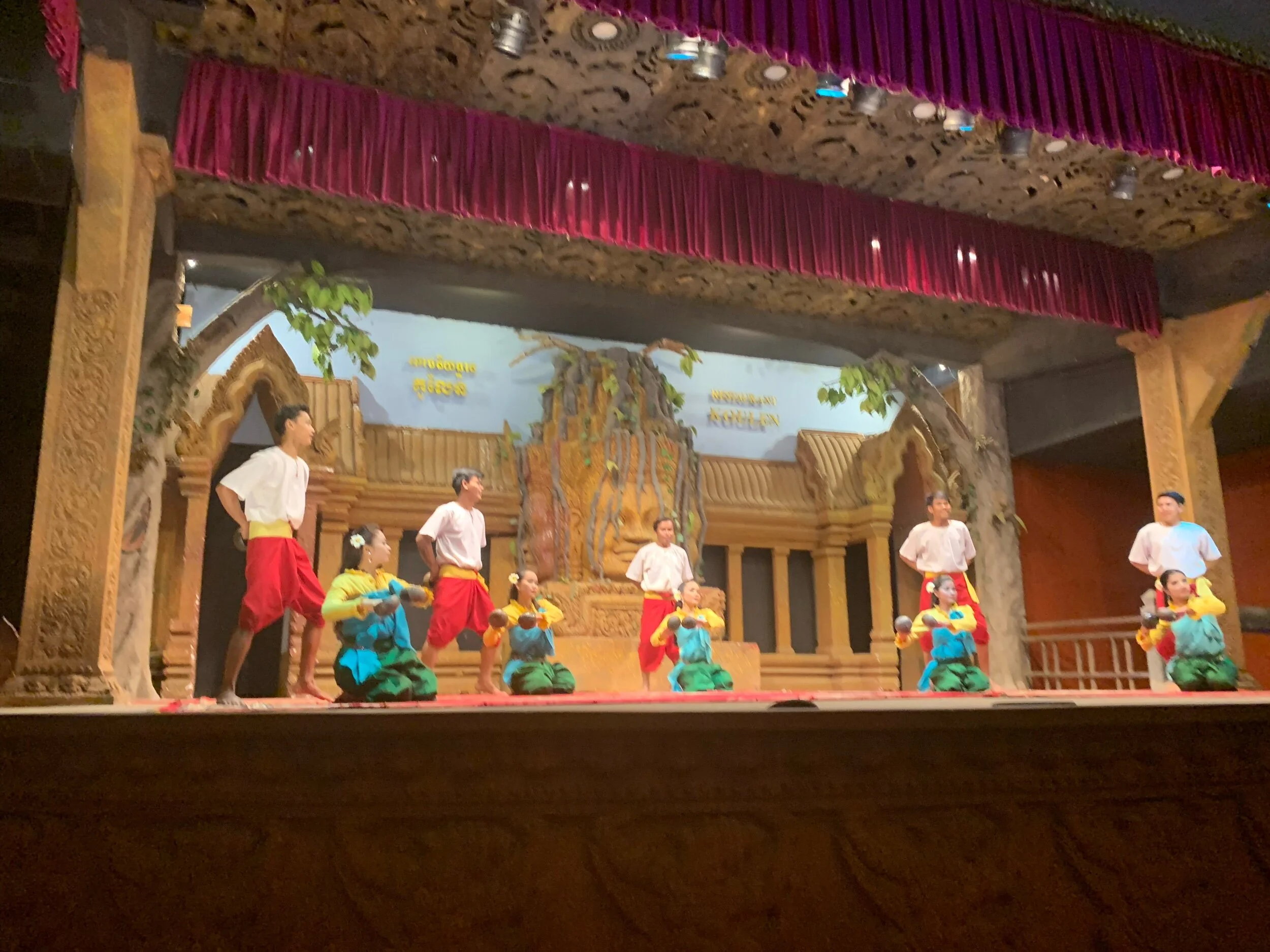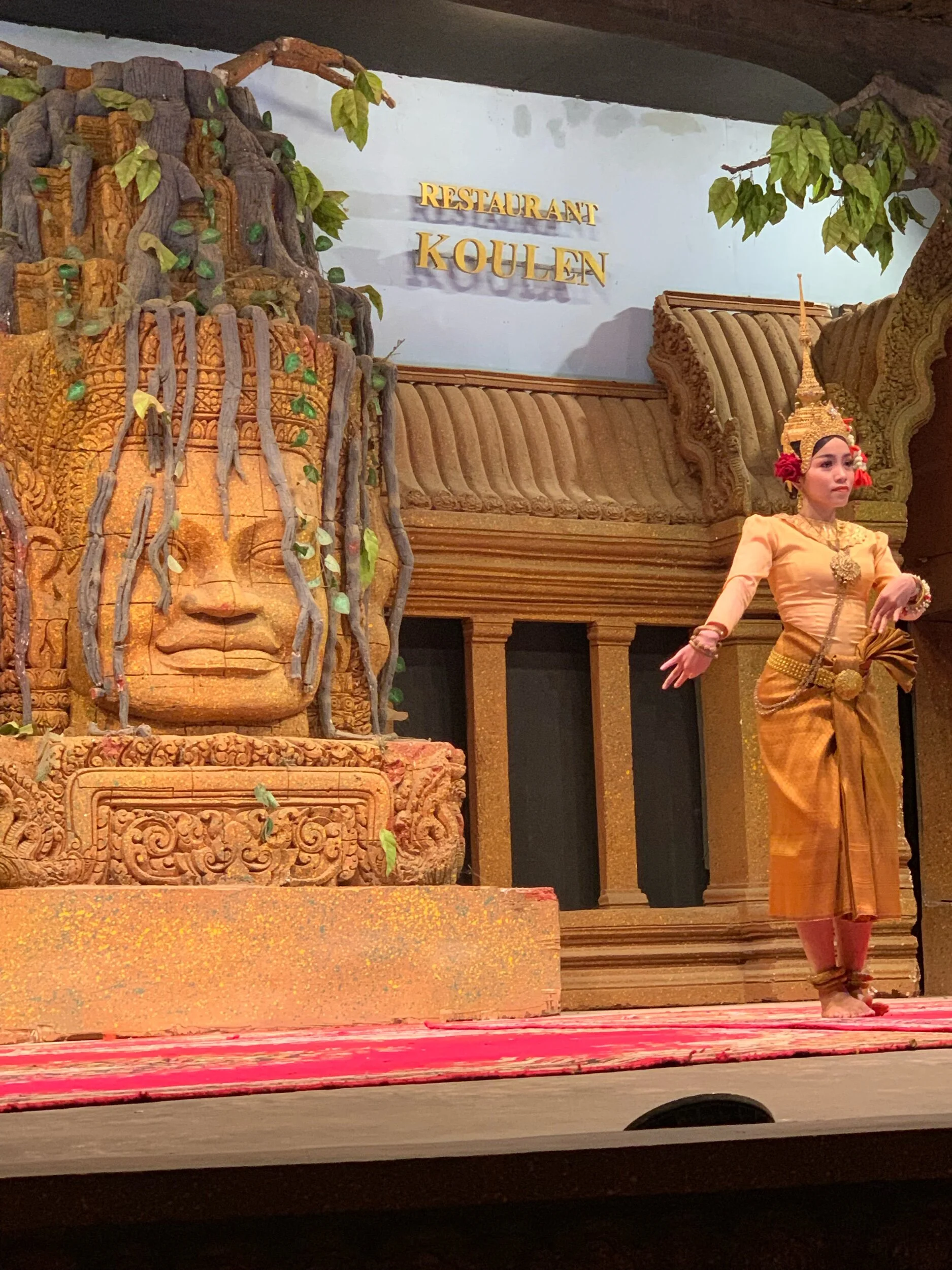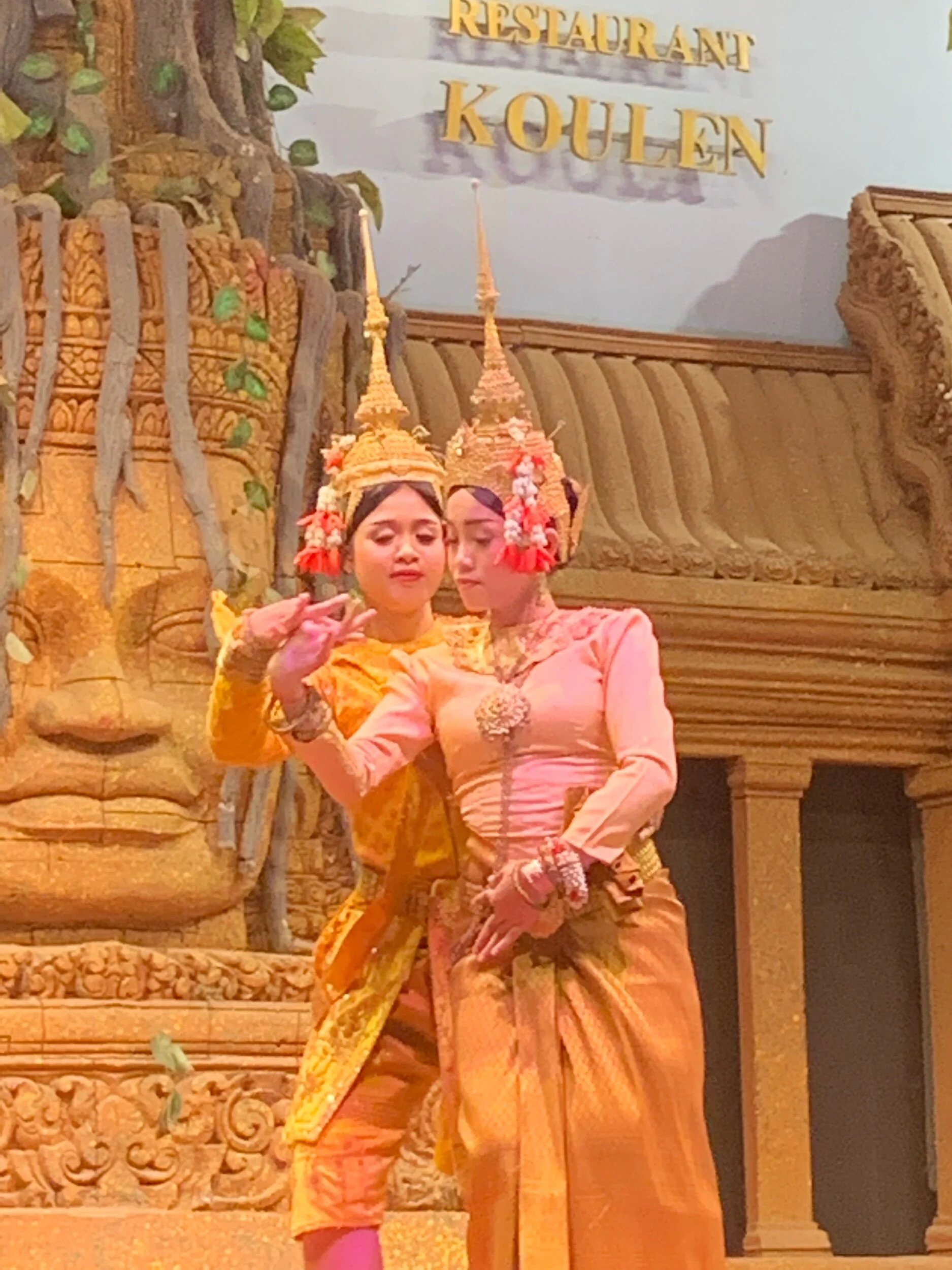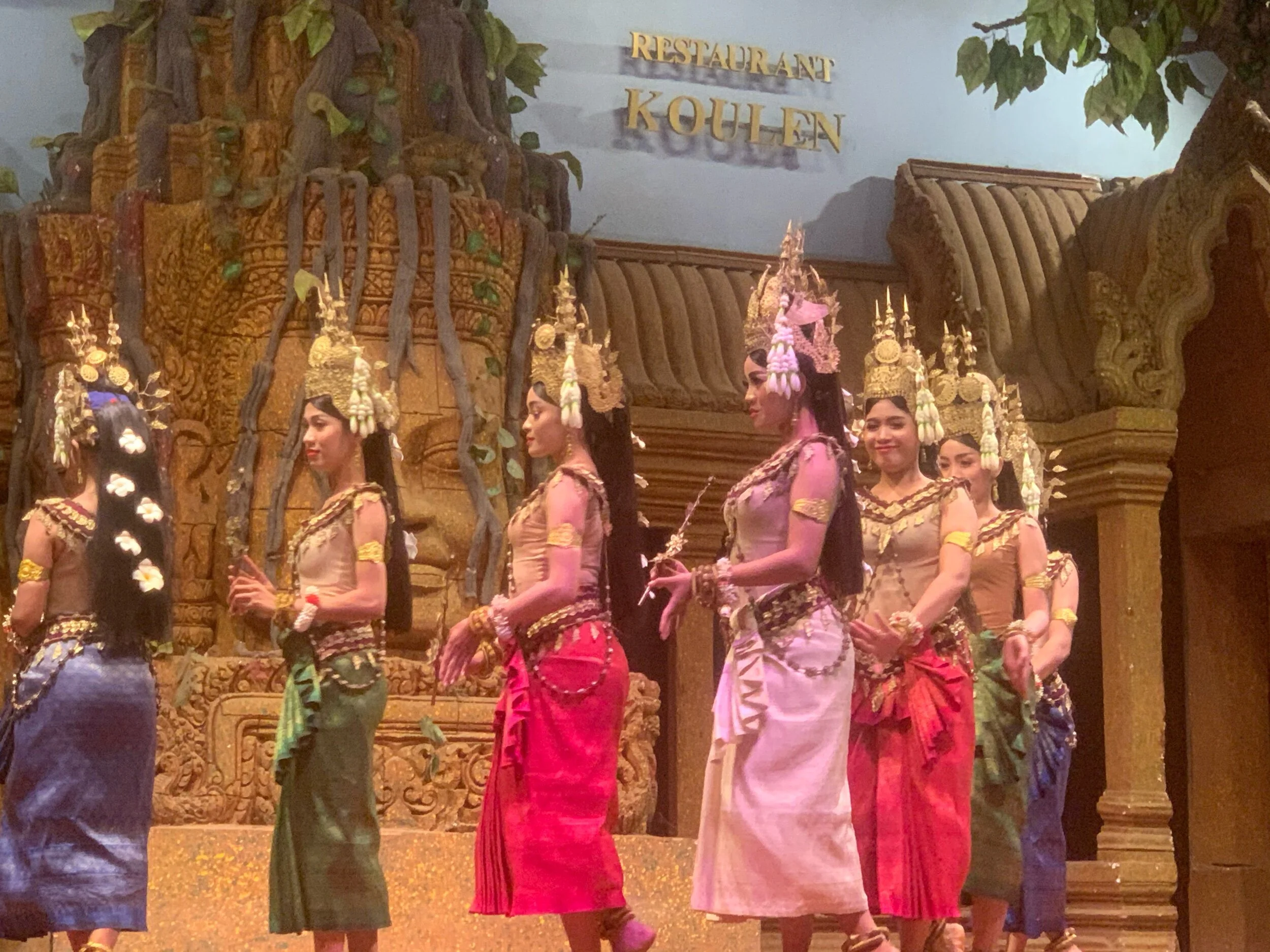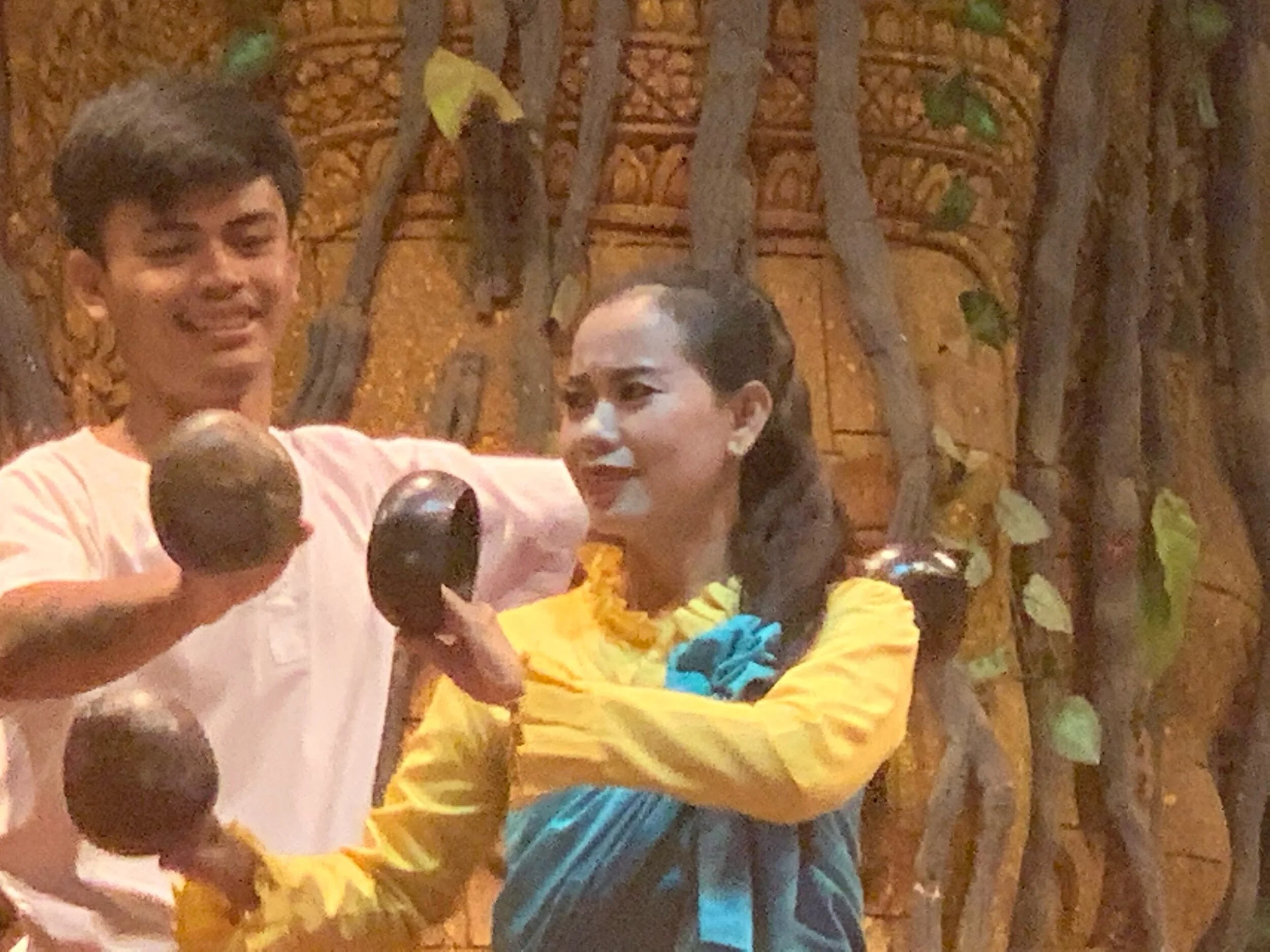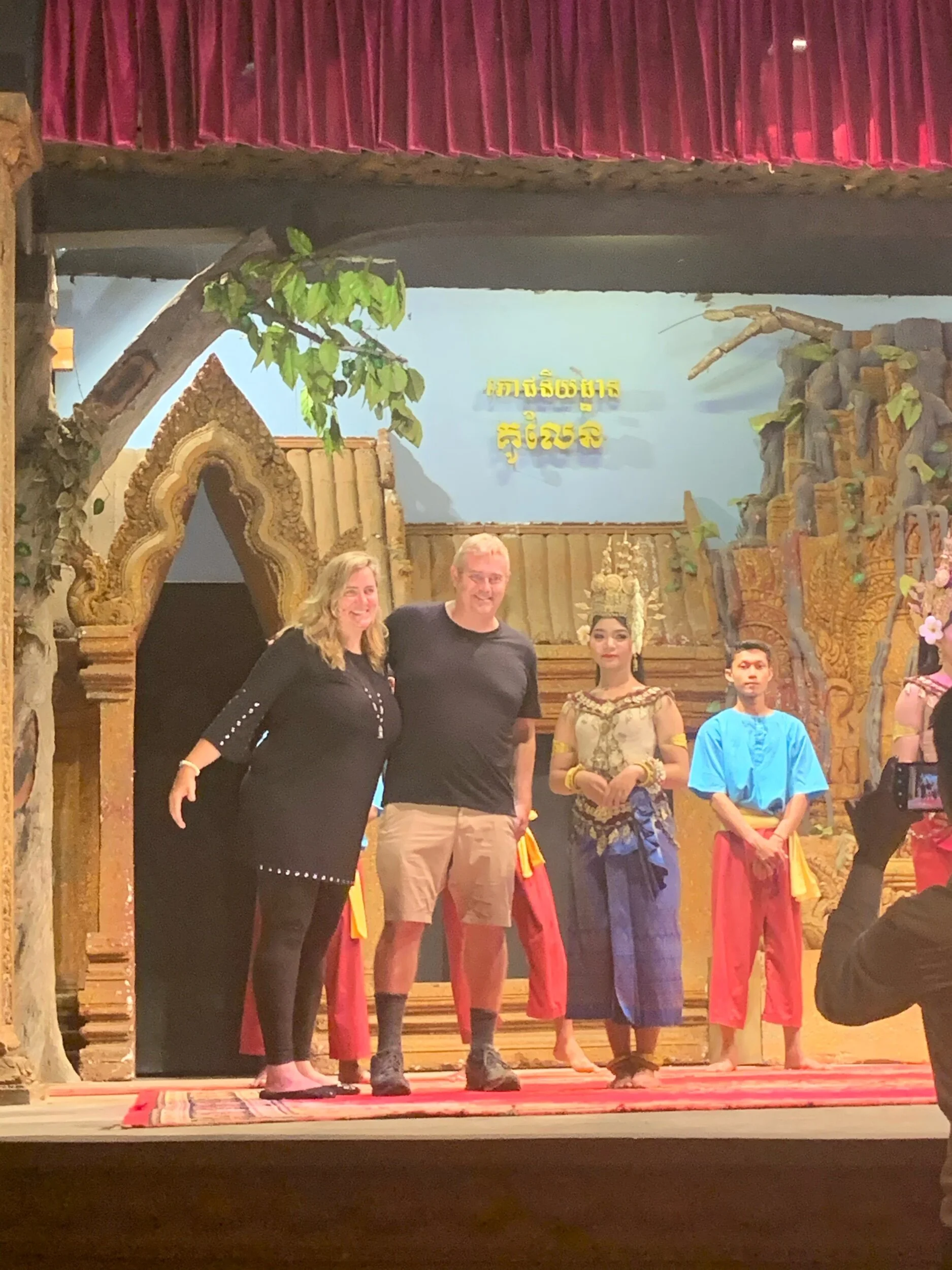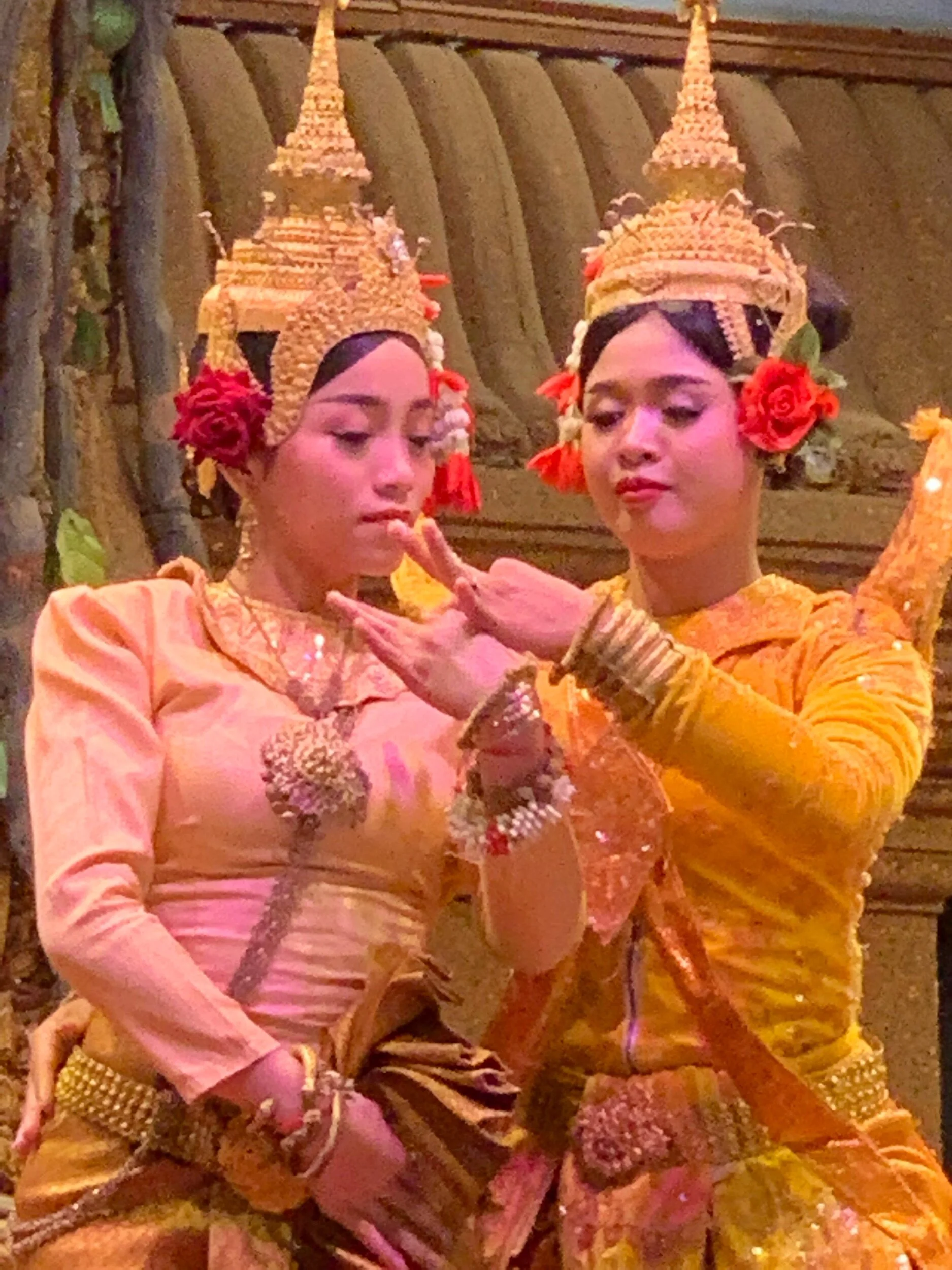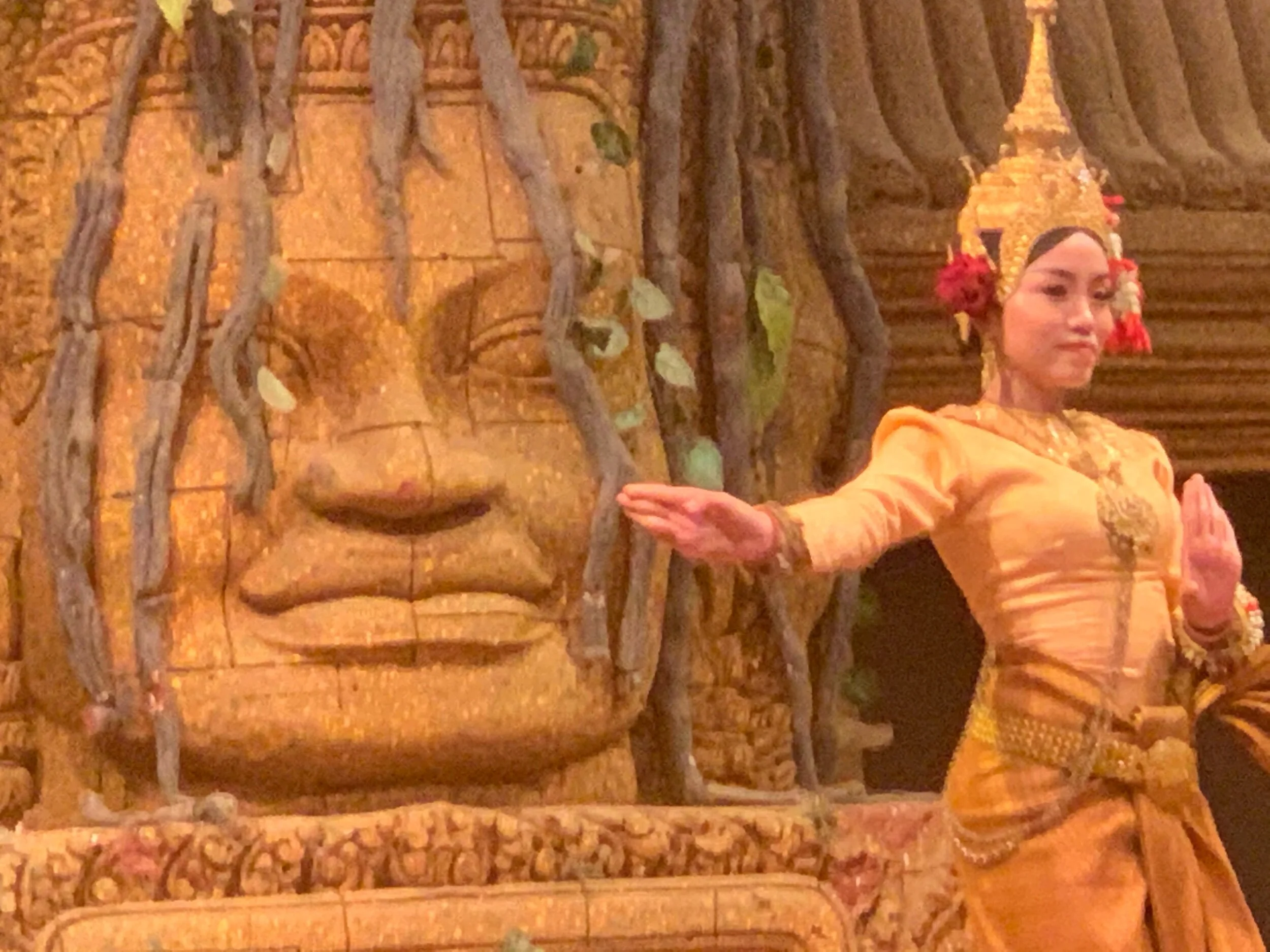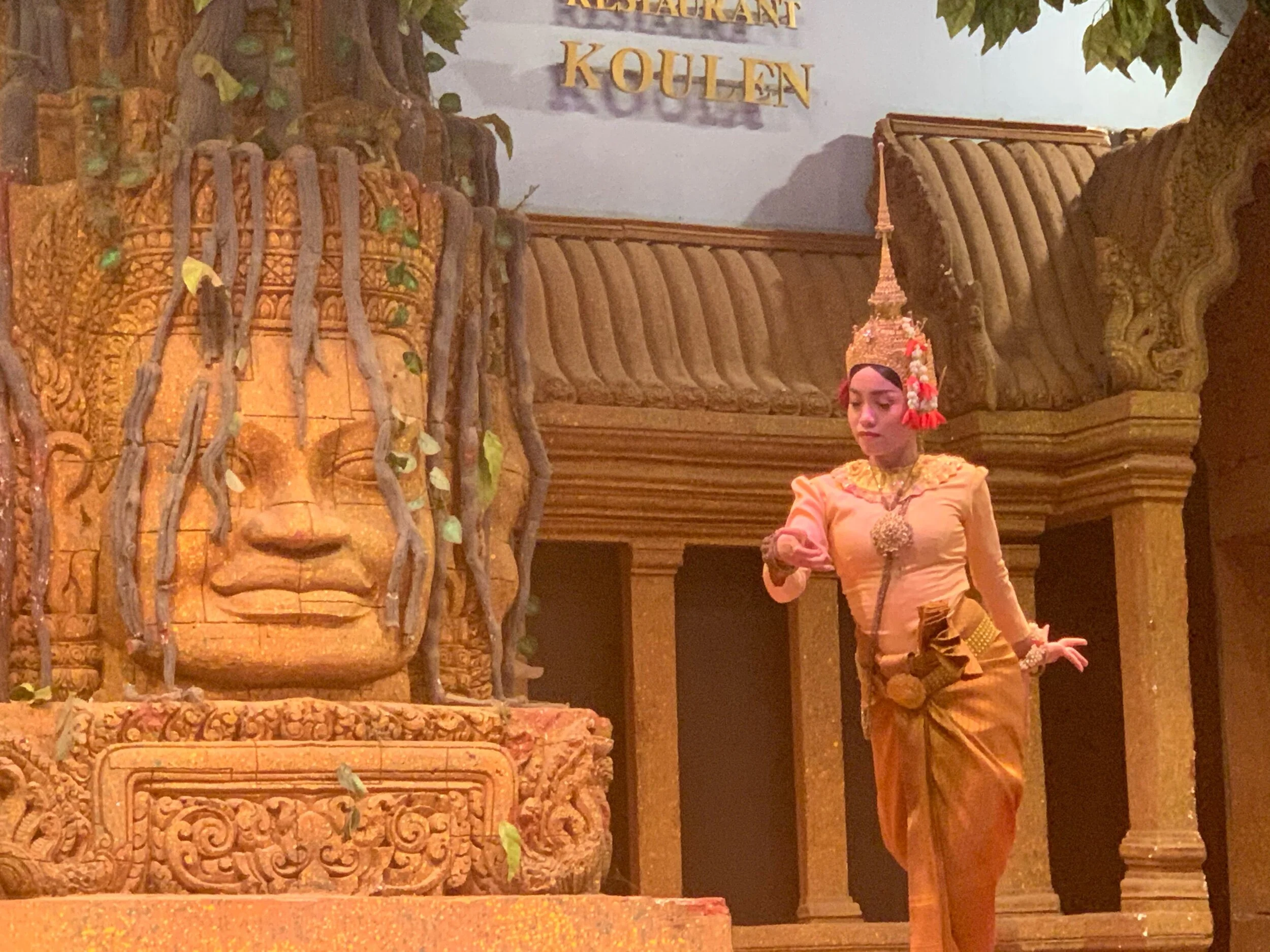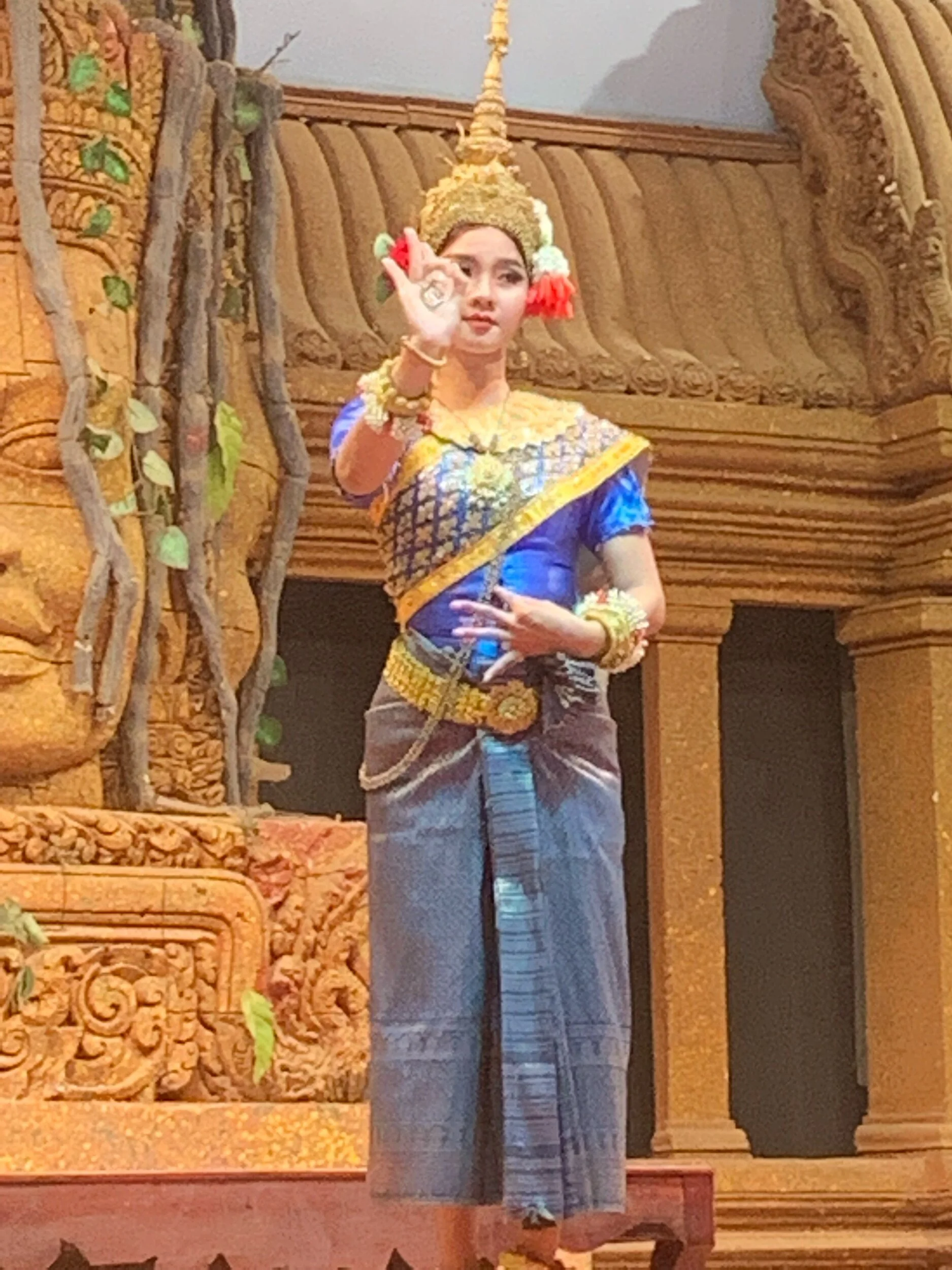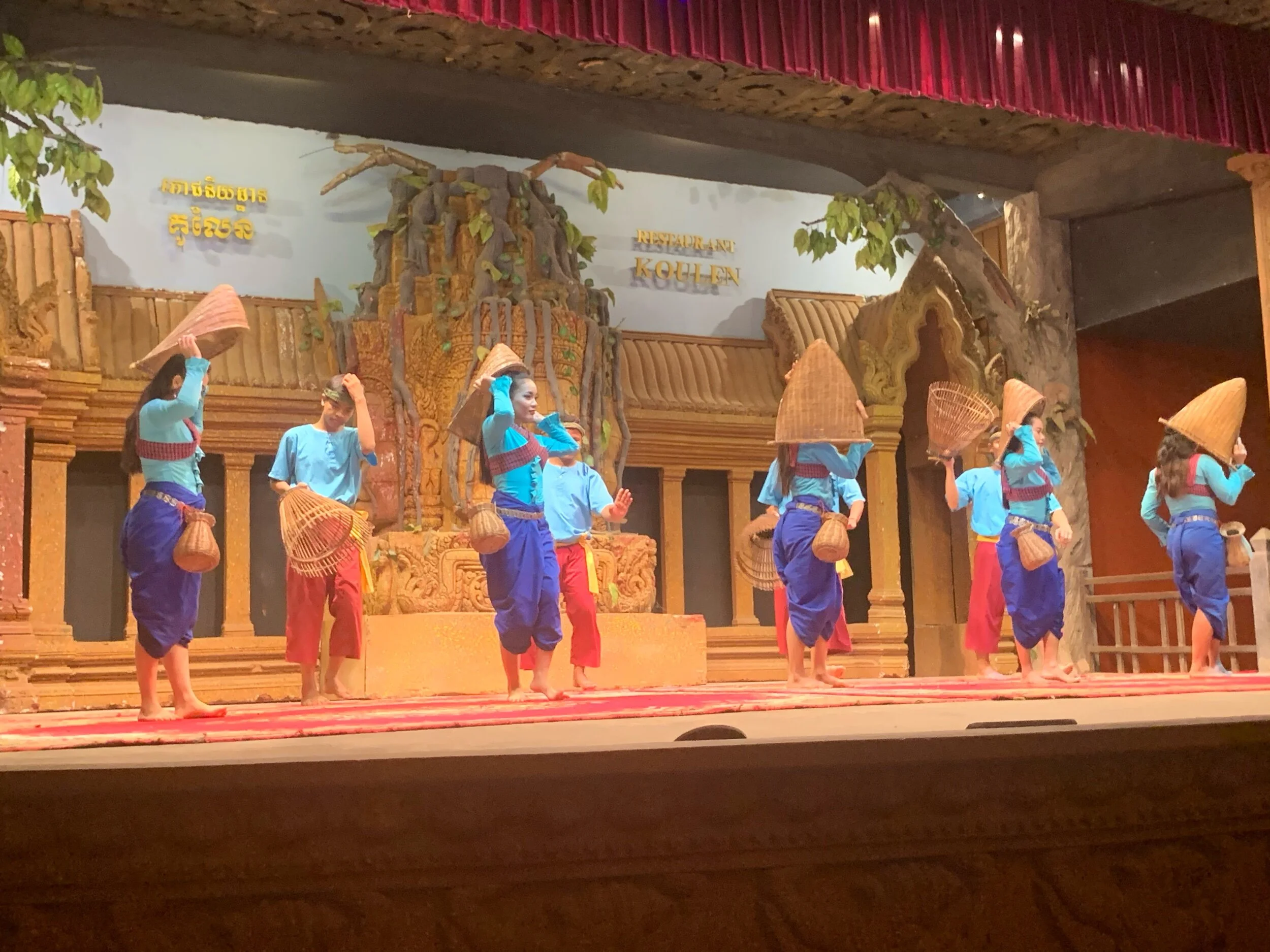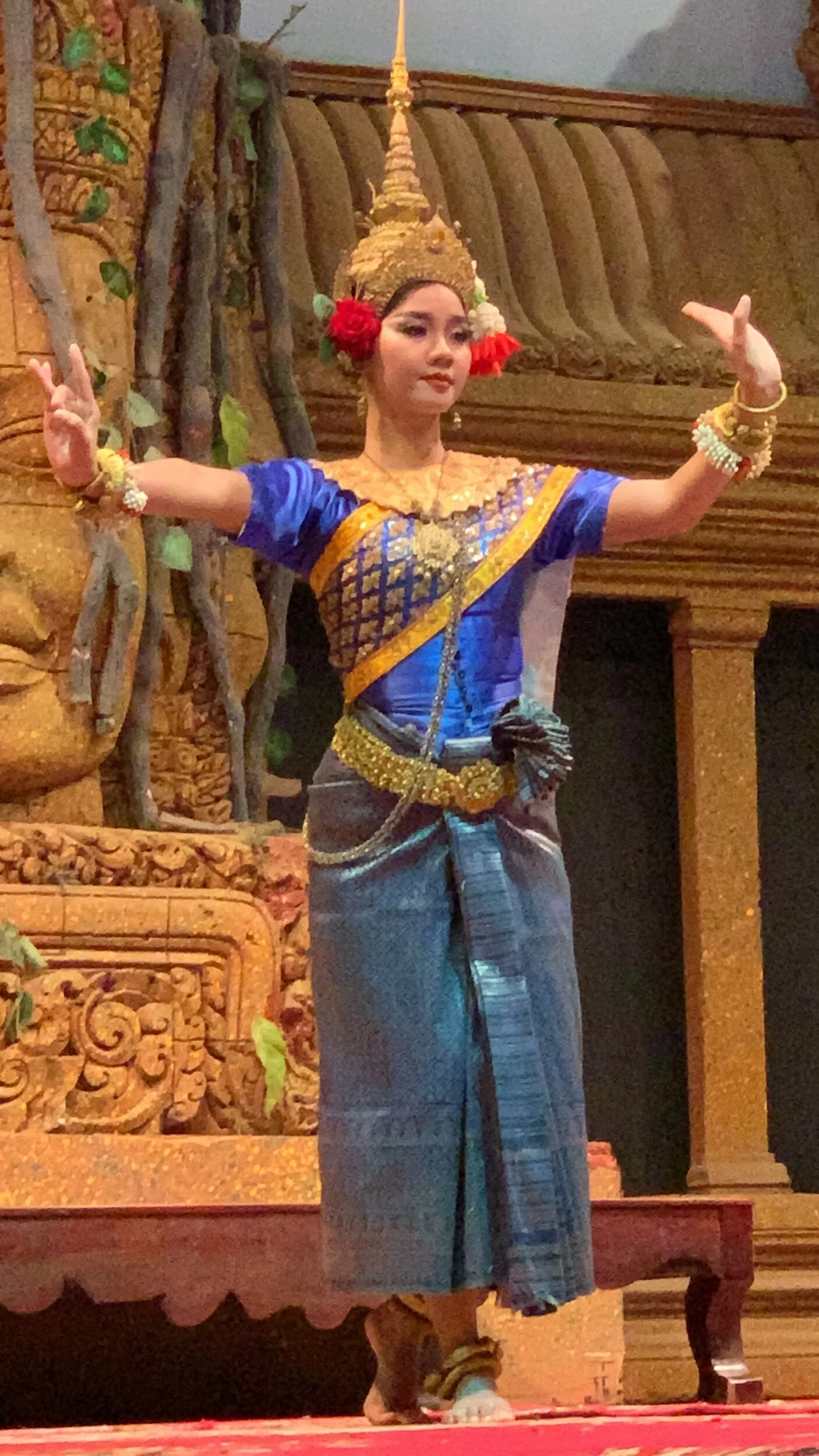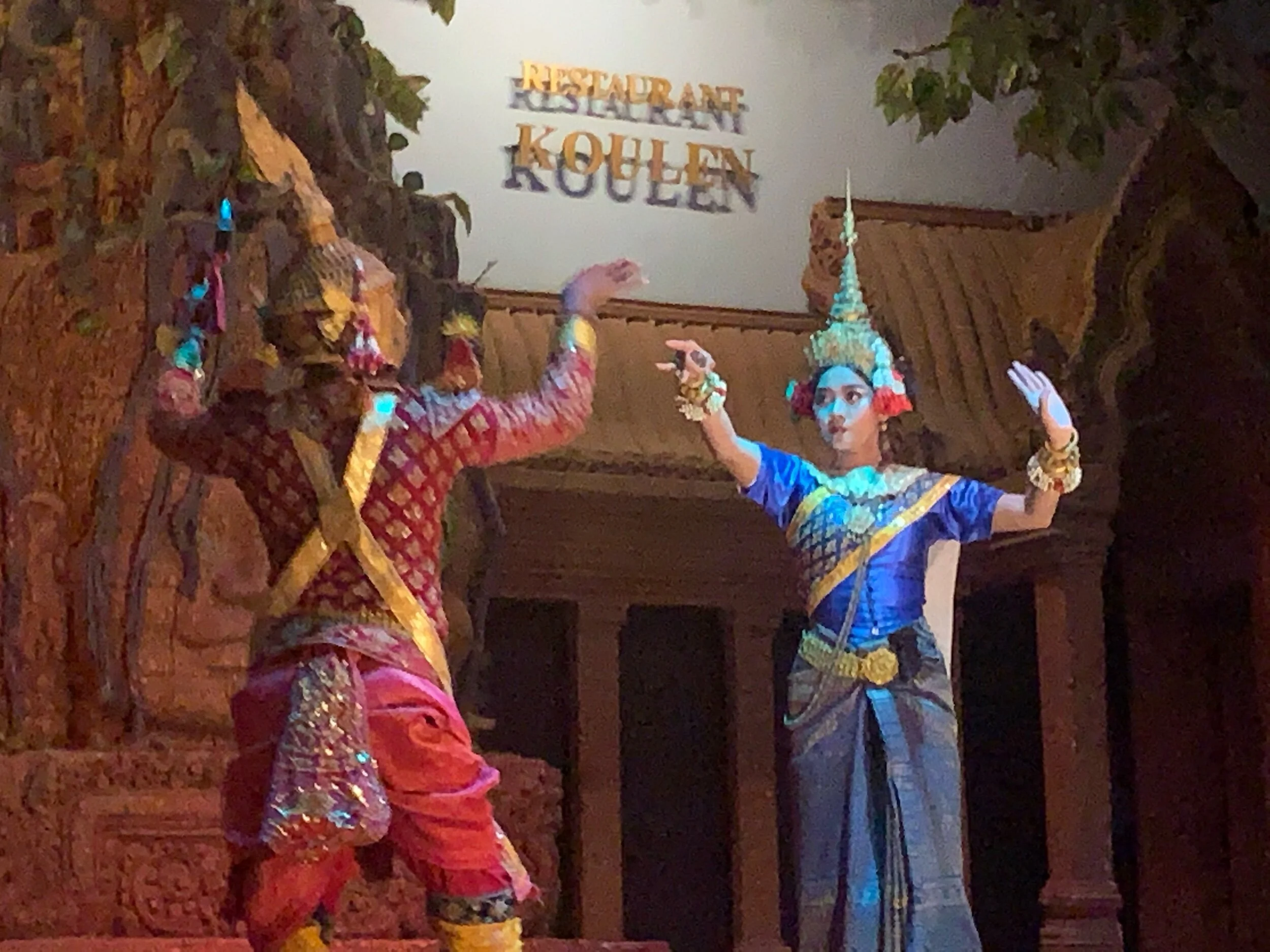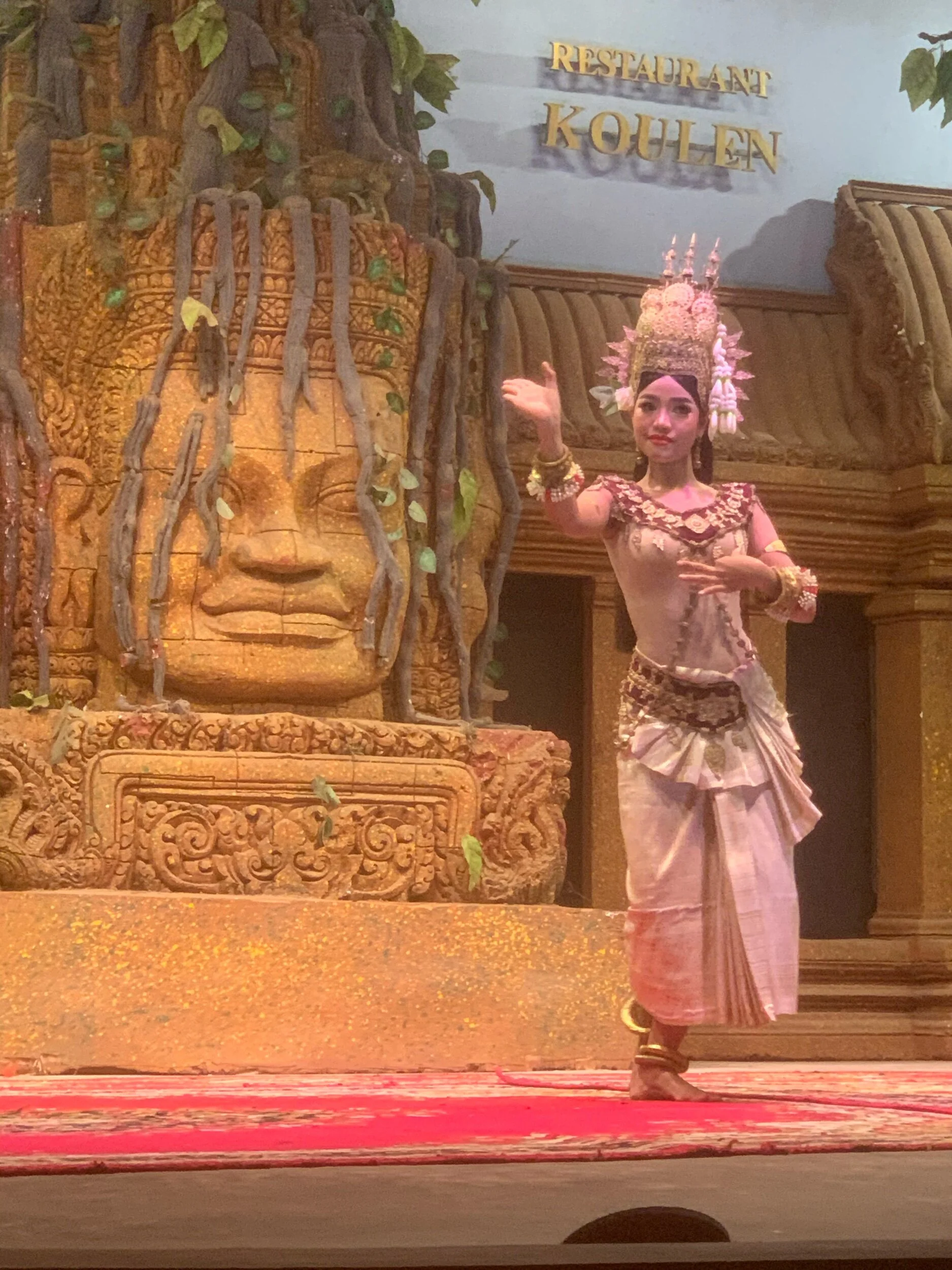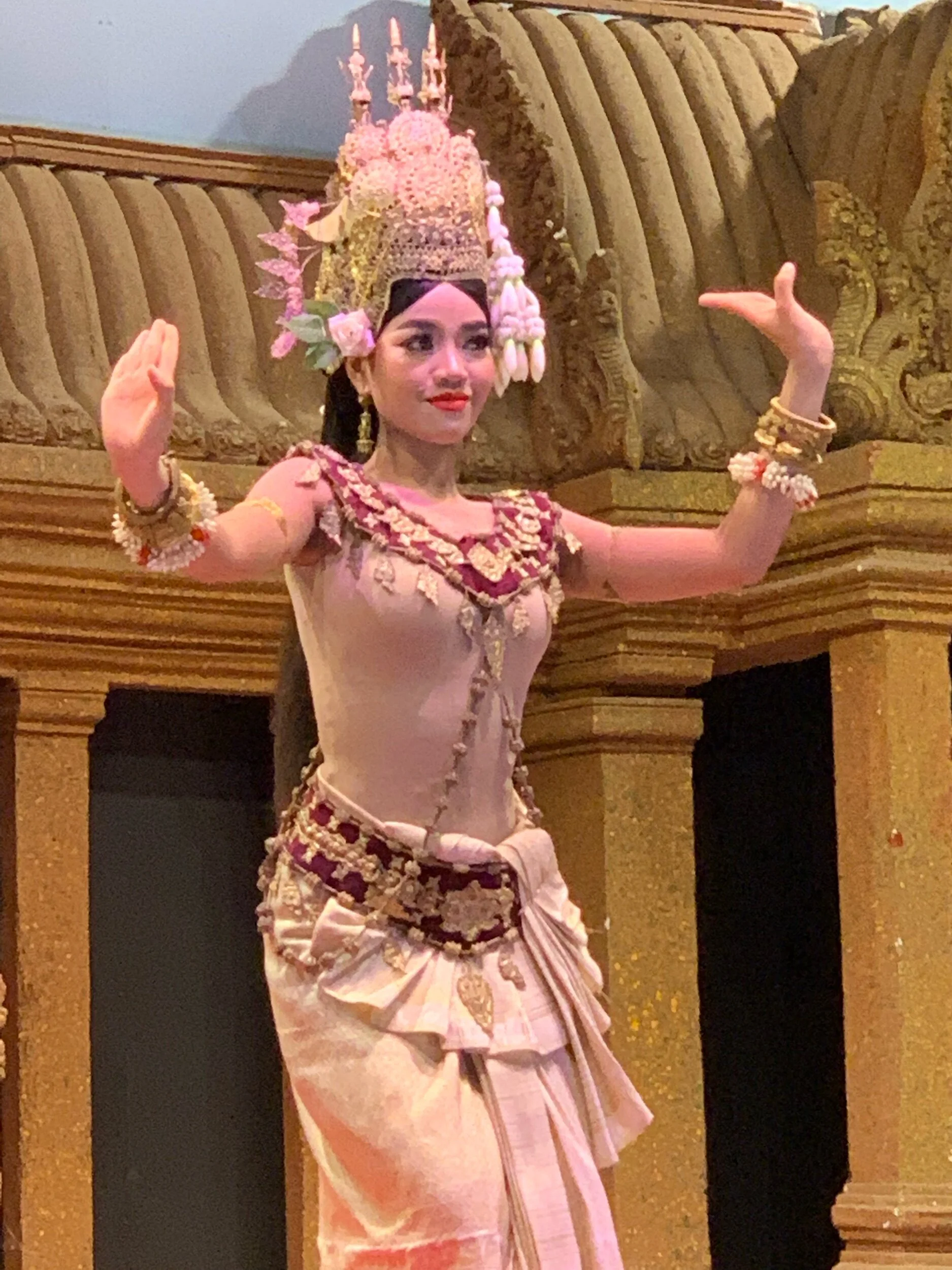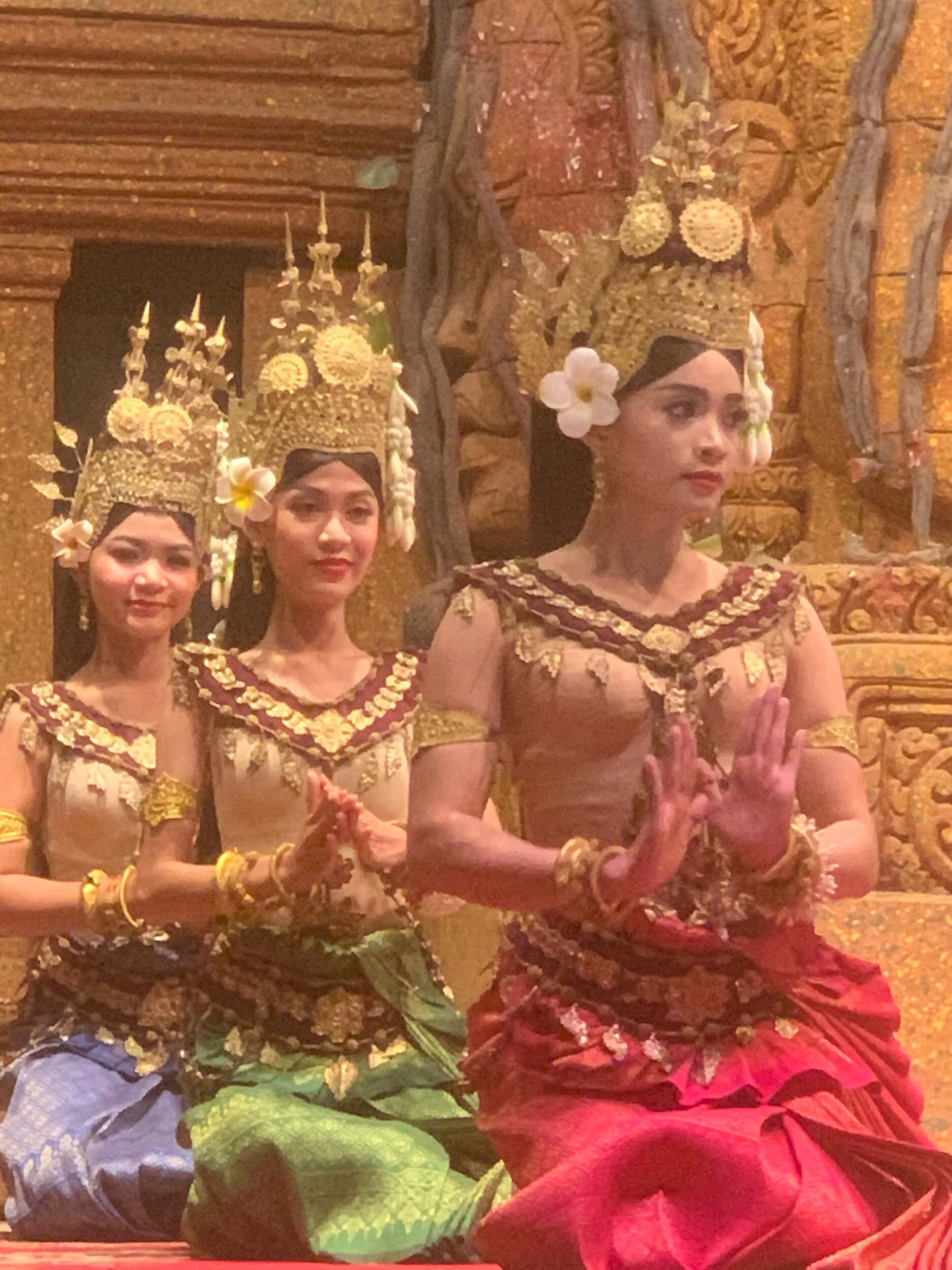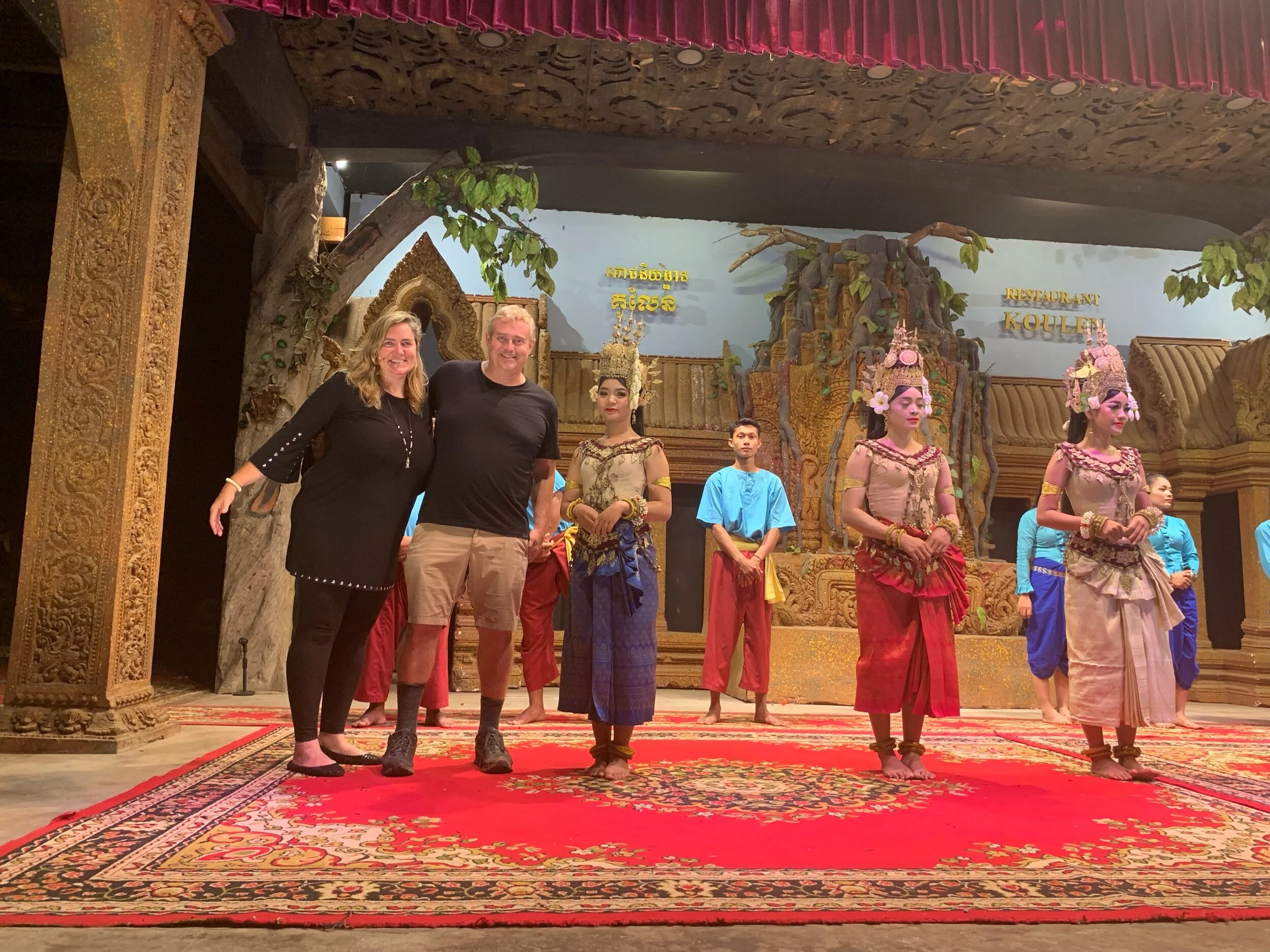11-13-19 - Floating Village & More Angkor Exploration
/Day 150. Kyle & Leanne joint blog. Siem Reap, Cambodia.
Our day starts with a 40 minute drive from Siam Reap to the Floating Village.
First stop though is to get money from ATM. Finding one that will accept international cards without looking as if the machines have been doctored in some way to “skim” our personal information is always a traveler’s challenge. Cambodia is a predominantly cash economy so very few places take credit card which means we need a constant supply of cash to feed the clan of seven. When Kyle got cash out on the first day, the machine dispensed the equivalent of USD $300 in Cambodian Real in $1 bills. This resulted in Kyle carrying around a backpack stuffed full of cash looking like he just robbed the local Cambodian bank. Today, Kyle tries three different ATMs before success. After the first two ATM fails, Kyle finally gets money out gets money out in US dollars although the machine dispenses $100 bills creating the opposite problem since no-one accepts greater than $20 bills.
As Kyle is waiting to cross the street back to the van, a car who was parked on the street suddenly throws it into reverse and drives right into Kyle. As he realizes he is about to become a tourist pancake, Kyle attempts to jump out of the way. Fortunately, the car only hit his elbow and Kyle opts to skip the trip to the hospital so as not to jeopardize the day for the rest of the family. The driver gives Kyle a look of horror and guilt combined. Kyle shrugs it off waving the little universal, “I’m ok!” sign thinking she would be looking a lot worse if he had ended up in the hospital. So we don’t alter the day’s plan.
Coincidentally, we just happened to be parked outside the government-run hospital which didn’t appear particularly inviting. Our guide has told us that anyone who can afford a private doctor, pays for them as the “free” healthcare offered by not of a very good quality. Ra says that “free” isn’t really “free” because you still have to bring a wad of cash to bride people to get access to the better doctors within the “free” system. He contracted Dengue Fever from a mosquito bite last year and said he couldn’t afford a private doctor or the bribes for the “free” healthcare so instead he toughed and sweated it out for ten days chewing a pile of a certain type of tree branch with a special disinfecting tonic with a very bitter taste. “No, really, the elbow is just stellar. No problems here. No need for the “free” medical clinic,” Kyle says emphatically.
The road out to the floating villages give us views of the massive agricultural fields of Cambodia. I remember growing up and hearing about the Killing Fields so it’s very hard to imagine these idyllic green lush fields were used for such a horrendous purpose during Pol Pot’s Khmer Rouge regime.
Ra shares that 85 percent of the population work on farms. We see dozens of raised platform buildings on stilts; each containing dozens of hammocks. These must be like tropical watchtowers over the rice fields. Our guide shares these are for workers to rest from the hot sun or eat lunch.
The nearby houses are also on stilts 20 feet high from the wet muddy ground. Between seasons, the water levels in the area can vary up to 10 meters (36 feet). So a house on these high stilts is the only way one could even attempt to live in this area.
The floating village of Chong Khneas is at the mouth of the river leading to the Tonle Sap Lake, Southeast Asia’s largest freshwater lake. It takes 9 hours by speedboat to cross and this lake was named a UNESCO Biosphere area for its unique biodiversity. There are 1,115 families living in the floating village and 100% of them make their living by fishing. During the rainy season, the lake is 12,000 km squared and 12 meters high. During the dry season, the lake is 250 km squared and 1.5 meters high.
We board an old but colorful wooden boat that will take us to the village. There’s a good dozen or so other tourist boats many with Chinese tourists filling up as well. As we all race down the river towards the lake, small floating wooden houses start filling our view. The house are buoyed on inflatables and tires so they can rise and fall with the dramatic changes in the water level during the rainy and dry seasons.
A few minutes later, a new kind of hawker approaches. We thought we had seen every kind already. For those avid readers, you know we like to poke fun describing all the various tourist traps that we need to navigate most days we tour new places. In fact we are often impressed with their creative ingenuity and entrepreneurial spirit. And we of course understand that depending on tourists falling into these traps is critical to the survival of certain families. Regardless, some are more disturbing than entertaining or funny. Today was one of those not so funny ones.
A mother approaches our boat in her boat, beating out several other boats, to our port side getting as close as possible to our boat without sinking either one. Inside her boat, there are her two small children (well we’ll assume they are hers) who are at most maybe 7 years old. Around each child’s neck was a thick scary black and green python gripped tightly around their bodies. The snakes’ bodies are thicker than their arms.
This tourist trap is one we dissect quickly — we are not tricked into photographing them so the mother can subsequently demand money from us. We have been traveling long enough to recognize photo taking is a money making tourist trap. But this one hits us particularly hard. Perhaps both kids are adept at handling such snakes, but from our westerner point of view, it was tough to witness. Can these children save themselves from the risk they may not even know they face right now? Is it our place to say as poverty, starvation and desperation make people take extraordinary risks at times?
We reach the floating “city center” which is a boat with a viewing platform, few stores and restaurants where we can dock. There is a crocodile farm where crocs are bred for their skins. Ra tells us that crocodile belt fetch USD $175 and shoes USD $500 on the export market and crocs are bred to be killed. He says it’s not for the tourists as they are exporting them out of the country.
And one can’t miss the large tub where a young kid sits with another python entangled around his body.... just in case you missed one of the Boat Mom Kid Snake Hawkers, you can get your picture here. Kyle asks the rhetorical question of where the Cambodian child protective services are when you need them.
The houses floating at the mouth of the Tonle Sap Lake are modest homes at most 800 square feet. The houses need to float (as opposed to resting on stilts as in its adjacent communities) because the water level in this area varies 10 meters between dry and wet seasons. Each house has an open area with a hammock where locals swing in the hot humid day. There’s a floating hospital, floating gas station, floating schools and even a floating Christian church.
It sparked a conversation with Ra about land ownership which is an issue of more pain in Cambodia. When the residents were forced to flee during Pol Pot’s regime, most did not have any papers showing ownership of their floating house as it had been passed down from generation to generation. Upon their return, the government had taken possession of their house and they had no way to prove it was theirs effectively having permanently lost it.
Having toured the floating village, we return to exploring Angkor’s many temples. Next stop is Banteay Srei Temple back in the city of Angkor which was built in the late 10th Century. The temple was built during the reign of two Angkorian King, King Rajendravarman (944-968) and King Jayavarman V (968-1000). Banteay Srei means “city of women” in Khmer but a different phonetic pronunciation also means “auspicious city.” Inscriptions in the temple show its original Sanskrit name as “Isvarapura” which means the “city of Shiva.”
Banteay Srei Temple Wiki was rediscovered in 1914. Although small in size, the temple is one of the crown jewels of Khmer art due to the outstanding quality of its sculpted décor carved from red sandstone. The temple was a Hindu place of worship and also a pilgrimage site. Buddhism had not yet spread to Cambodia when the temple was built in 967.
On the way to the next stop, we see water buffaloes on the side of the road. Some are wondering and some are plunked down in water filled ditches. We arrive at Preah Khan temple which translates to "Royal Sword" was built in the 12th century for King Jayavarman VII to honor his father. It was the center of a substantial organization, with almost 100,000 officials and servants. The temple is flat in design, with a basic plan of successive rectangular galleries around a Buddhist sanctuary complicated by Hindu satellite temples and numerous later additions. Like the nearby Ta Prohm, Preah Khan has been left largely unrestored, with numerous trees and other vegetation growing among the ruins.
Walking back from the temple requires us to walk down a long narrow sidewalk to the exit. Leanne stopped to take a couple pictures so she has fallen back from the rest of the clan. Her isolated status has registered on the hawker’s radar and three of them, who it turns out are middle school girls, set out for a cleverly designed hawker play from the playbook. One of the blocks the narrow sidewalk in front, while another approaches from rear blocking the retreat and the third flanks to the left side and pops out of the bushes cutting off any escape route there. As we realize Leanne is not with us and turn around, we see Leanne breaking through the line with the three hawkers chasing in hot pursuit. Leanne outruns the hawkers and safely joins back up with us.
Next stop is Neak Pean Temple which is a temple in the water of an entirely man-made lake complex. Neak Pean which means “The entwined serpents" is an artificial island with a Buddhist temple on a circular island in Jayatataka Baray which was built during the reign of King Jayavarman VII. Neak Pean was originally designed for medical purposes (the ancients believed that going into these pools would balance the elements in the bather, thus curing disease) and it is one of the many hospitals that Jayavarman VII built. It is based on the ancient Hindu belief of balance. Four connected pools represent Water, Earth, Fire and Wind. Each is connected to the central water source, the main tank, by a stone conduit "presided over by one of Four Great Animals namely Elephant, Bull, Horse, and Lion, corresponding to the north, east, south, and west quarters. Originally, four sculptures stood on the floor of the lake. The only remaining statue is that of the horse, Balaha.
Next is just a photo stop at East Mebon Temple since we are running behind on the schedule. Then we arrive Pre Rup Temple which is a Hindu temple built as the state temple of Khmer king Rajendravarman in 961. It is a temple mountain of combined brick, laterite and sandstone construction. The temple's name is a comparatively modern one meaning "turn the body". This reflects the common belief among Cambodians that funerals were conducted at the temple, with the ashes of the body being ritually rotated in different directions as the service progressed. Painters are in the temple both painting and selling their paintings. Corey buys one of the paintings making the day of the local painter. We take in a sunset from the top of the temple calling it a wrap on the temples of Angkor.
We have a cultural show and dinner at night. We are hoping for better luck than the Myanmar cultural show where several of us did not fare so well the next day after the dinner and we were seated a football field away from the stage. We had stopped at the restaurant in the morning so we could book the show directly and reserve the table so we had the front row table with a great view. The buffet was good as well. As an indication of how far Kyle’s food tastes have evolved on this trip, he comes back to the table with his food commenting on how crap the western food looked compared to how awesome the local food looked. We enjoy the show and when it was finished, they announce that guests can come onstage and get pictures with the cast. Kyle & Leanne use their front row table positional advantage to scramble on stage and be the first to the get pictures. With that, we call it a night.



